Bucket List Seekers
Extraordinary Travel for Ordinary Couples
Japan , Travel Inspiration · March 2, 2022

Japan Hidden Gems: 30+ Best Places to get Off the Beaten Path in Japan

Are you looking to get off the beaten path in Japan? There are so many totally underrated Japan hidden gems to add to your itinerary. Read on to discover our top 30 underrated places in Japan!
It’s safe to say that we absolutely adore Japan. We fell in love with the country from the first moment we landed. From the fascinating culture to the delicious food, and the lovely Japanese people.
Japan is one of those countries we could totally go back to again and again. And it’s a really hot destination to visit in 2024 , largely due to their borders being closed for so long.
When most travellers visit Japan for the first time , they usually plan either a 7-day or 14-day itinerary around Japan, visiting the typical tourist hotspots – a quick tour around Tokyo, followed by a few days in Kyoto , then maybe spend a day in Osaka or Hiroshima to tick off the bucket list .
This offers a pretty good taster for first-time travellers, but there is so much more to Japan than these well-known tourist hotspots!
While we totally recommend that first time visitors to Japan focus on these 5 destinations , if you want to discover some of Japan’s off-the-beaten-path hidden gems during your visit, then perhaps you could pick a few of these (mostly) undiscovered places to add to your itinerary!
Whether you’re planning a trip to Japan in Autumn , Spring, Summer, or winter. There’s a hidden gem on this list for every season!
These stunning hidden gems will inspire you to get off the beaten path in Japan!
Related Japan articles you might enjoy:
- The Ultimate Guide to Planning a trip to Japan
- The Ultimate Japan Bucket List
- 5 Best Places to Visit in Japan for First Timers
- A Complete Guide to Visiting Hakone, Japan
- 20 Things You Should Know Before Visiting Japan for the First Time
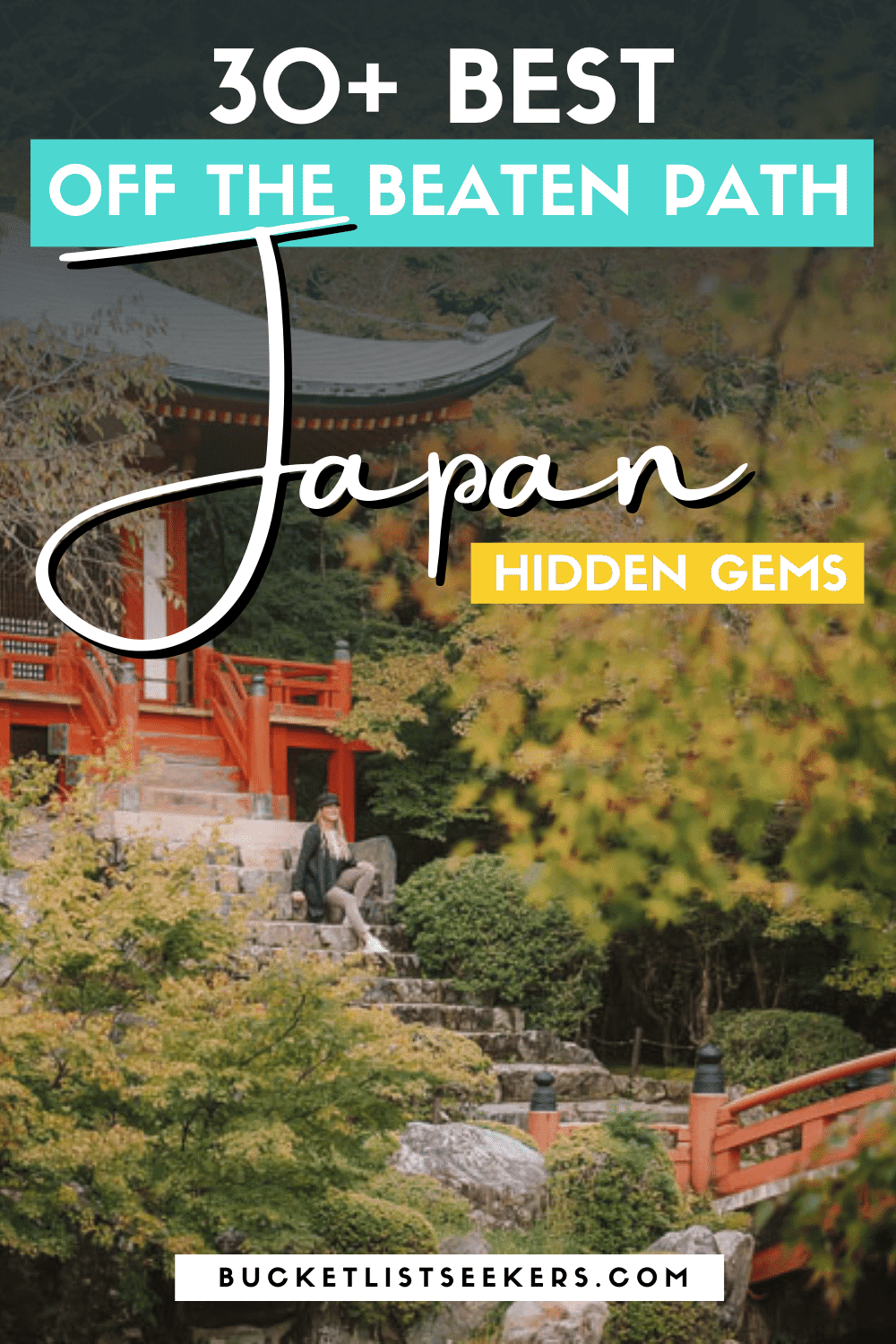
No time to read this now? Pin it for later!
Did You Know? We use ads to help pay the bills so we can continue to publish free travel advice. We also have affiliate partnerships, so when you click through and make a purchase or book your stay from one of our blog posts, we may receive a small commission (at no extra cost to you). Thank you for supporting Bucket List Seekers! Read our Disclosure Policy for more details.
In This Post:
Off the Beaten Path in Japan – At A Glance
- Kumano Kodo
- Izu Peninsula
- Naoshima Island
Top 15 Japan Off the Beaten Path Spots

#1 | Okinawa
The birthplace of karate is considered one of the most beautiful parts of Japan. But Okinawa is one of those hidden gems in Japan that won’t remain a secret for long. It’s quickly gaining a reputation amongst western tourists.
The tropical paradise is often called the “Hawaii of Japan”. With its incredible beaches and wild jungle, it is the perfect combination of untouched yet developed enough.
Okinawa would be the ideal destination for nature and water lovers who admire the natural beauty and laid-back island life. But beautiful surroundings are not the only thing the island is famed for. Expect to see the cherry blossoms (in spring, of course) and taste some divine cuisine.
How to Get There: A flight from Tokyo to Okinawa takes about 3 hours.
Where to Stay: Ishigaki Guesthouse HIVE (Budget) | ANA InterContinental Manza Beach Resort (Splurge)
Read More: 20 Things You Should Know Before Visiting Japan for the First Time

#2 | Kumano Kodo
If you are in search of one of Japan’s true hidden gems, look no more! Kumano Kodo – an ancient pilgrimage trail that heads in the mountains of Wakayama – is not commonly visited but should be on every adventure traveller’s bucket list .
Well-known amongst hiking addicts, there are several trails in the Kumano Kodo, some take days (or even weeks) to hike the entire length. Most parts are reachable by bus so you can start and end your hike wherever you like.
To have the most authentic experience, remember to pack light and stay at the local guesthouses (Ryokans) along the way.
Although it is possible to hike the Kumano Kodo year-round, be prepared that winter can bring some snow.
During your journey, you will spot the Nachi Falls, which are registered as part of UNESCO’s World Heritage Sacred Sites. While you are there, stop by the Seiganto-Ji Temple to see its vermilion 3-story pagoda.
How to Get There: Catch the Kuroshio limited express from Osaka (Shin-Osaka Station) to Kii-Tanabe Station.
Where to Stay: Kosenkaku Yoshinoya (Ryokan)
Read More: The Best Places to See Autumn Colours in Japan
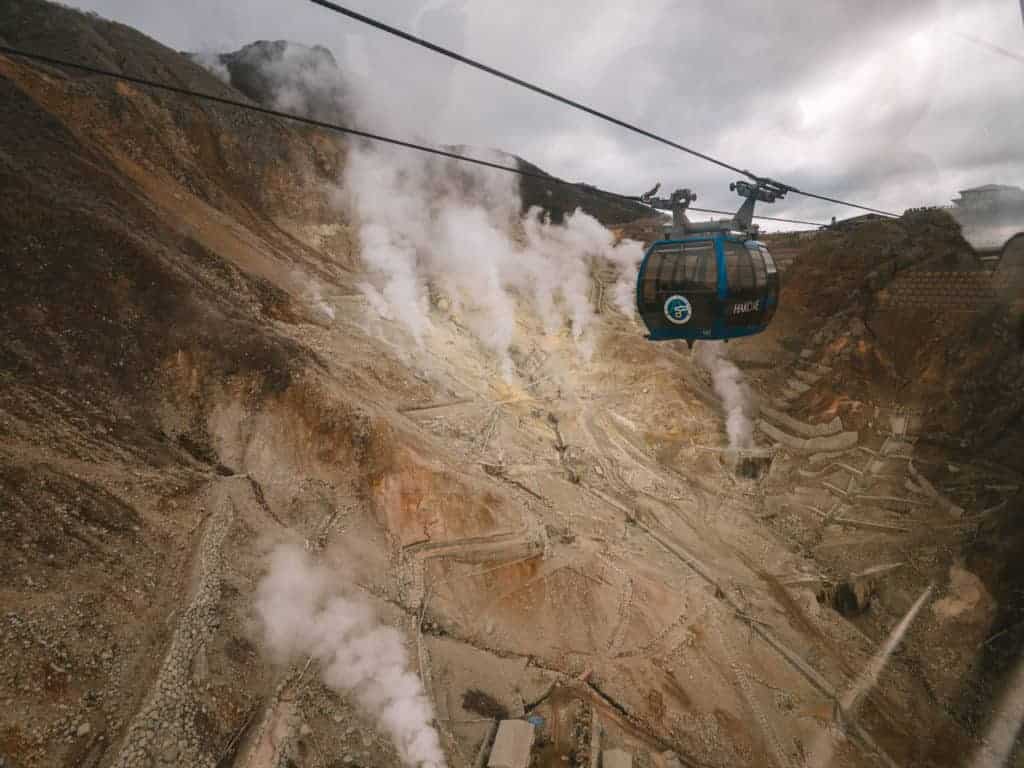
#3 | Hakone
Although Hakone is located just a bit more than a 1-hour train ride away from the south of Tokyo, it is often overlooked by western tourists. That is a pity because the beautiful region has plenty to offer.
From quaint mountain towns to traditional Ryokans with onsen , stunning mountain views, active volcanos, and beautiful lakes. It’s also one of the best places to see autumn foliage or cherry blossoms in spring.
While you are there, make sure to make a day trip to the Hakone Air Museum , where you will find one of the most extensive Picasso exhibits in the world.
Use our detailed guide to Hakone to help plan your trip!
How to Get There: Catch the Odakyu Limited Express Romancecar from Shinjuku Station to Hakone-Yumoto Station. If you plan to use a Japan Rail Pass, you’ll need to depart from Tokyo Station or Shinagawa Station instead.
Where to Stay: Onsen Guest House Tsutaya (Budget) | Hakone Gora Byakudan (Splurge)
Read More: A Complete Guide to Visiting Hakone, Japan

#4 | Lake Biwa
Lake Biwa might be Japan’s largest freshwater lake, located in the Shiga Prefecture, but it’s also one of the most underrated places in Japan to visit!
There are plenty of things to do around the lake. From island hopping by boat, swimming, windsurfing, exploring majestic castles, traditional villages, and discover the regions amazing cuisine (having some sweetfish and carp is a must!). The best part – the lake can be accessed in 10 minutes from Kyoto .
Don’t miss the Shirahige Shrine, with the “floating” torii gate in the water.
How to Get There: Take a JR Tokaido train line from Kyoto Station to Otsu Station.
Where to Stay: Inase Otsu Machiya (Budget) | Lake Biwa Marriott Hotel (Splurge)
Read More: The Perfect Kyoto 2 Day Itinerary
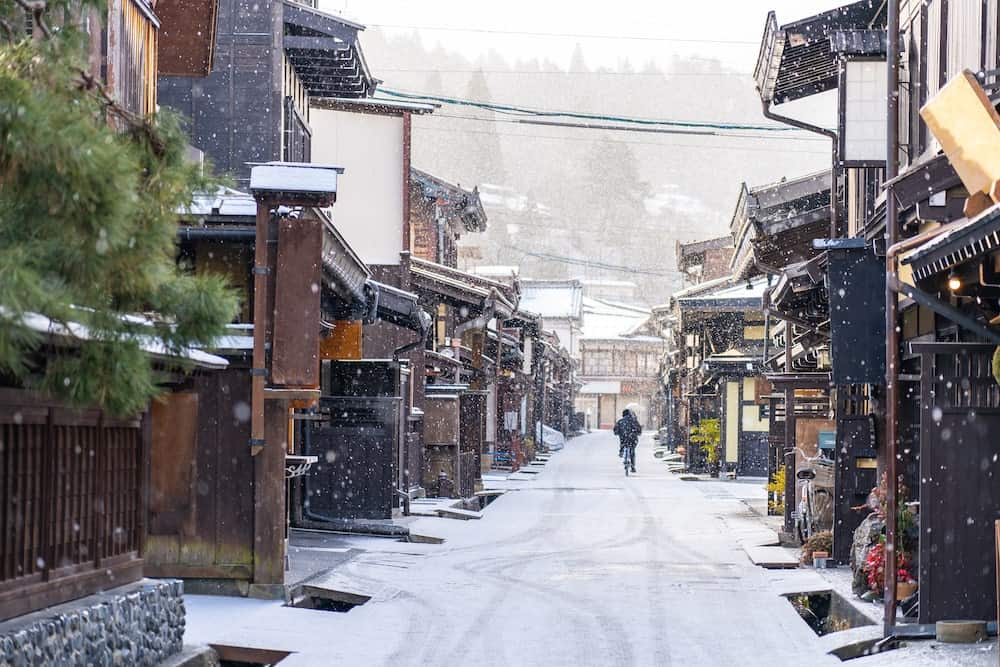
#5 | Takayama
Located in the mountainous Hida region of Gifu Prefecture, Takayama is one of the most unique places to visit in Japan, offering a more traditional experience than other parts of the country.
Another great spot to see autumn foliage and cherry blossoms in spring, Takayama is known for its heritage-listed old township and superb local food – including ramen, sake, wasakana, and sansei. It’s the perfect Japan hidden gem for the curious gourmand!
How to Get There: Take a train from Nagoya (about 4.5 hours), Toyana (5 hours) or Matsumoto.
Where to Stay: Miyamaso (Budget) | Takayama Ouan (Splurge)

#5 | Funaya
Are you a fan of Venice? Turns out – you can have a feel of Italy while being in Japan. In fact, “Funaya” translates into “the Boathouses of Ine” and is often called the “Venice of Japan”.
Located in the northern part of Kyoto Prefecture, it is a truly fascinating destination and one of the most unique places to visit in Kyoto . A seaside village with wooden boathouses built right on the water. Due to its unique appearance, it’s a very popular spot for filming movies and TV shows.
It’s possible to visit Funaya on a day trip from Kyoto city centre. Be sure to take a boat cruise to see the boathouses from the water or join a cycle tour to learn about the town’s history.
How to Get There: Take the train from Kyoto (Amanohashidate Station on the Kyoto Tango Miyatoya Railway Line), then the Tankai Bus to Ine (1 hour).
Where to Stay: Hanayuzuki (Ryokan)
Read Next: Top 25 Things to do in Kyoto

#6 | Asahikawa
If you are not afraid of the snow, Asahikawa should be on your travel bucket list because it is one of the best secret places in Japan.
Located on Japan’s Hokkaido Island and surrounded by the Taisetsuzan mountains, the area offers epic snow dumps in winter, so it is a much-loved destination for skiers and snowboarders.
When exploring the city, visiting its famous zoo to see polar bears, penguins and orangutans is a must. The city is also known for its winter festival where you will see incredible ice sculptures. Don’t forget to try the famous Asahikawa Ramen while you’re there.
Keep in mind, though – Asahikawa is the coldest city in the country, so bring your jacket!
How to Get There: Limited express trains connect Sapporo with Asahikawa (approx. 80 minutes).
Where to Stay: 9 C Hotel Asahikawa (Budget) | OMO7 Asahikawa by Hoshino Resorts (Splurge)

#7 | Izu Peninsula
Nestled around 100km southwest of Tokyo, the mountainous Izu Peninsula is one of Japan’s stunning natural hidden gems.
Expect to see impressive rock formations, stunning beaches and lush greeneries. Also, make sure to visit Mount Omuro – one of the largest volcanoes in the Izu region.
Being so close to Tokyo, it is the perfect day trip destination for anyone looking to escape the city. But being a resort area, it’s perfect for a weekend getaway with beautiful hotels and hot springs – so you might want to stay a little longer.
How to Get There: The train from Tokyo to the peninsula takes about 50 minutes.
Where to Stay: Hostel Knot (Budget) | AWA Nishi-Izu (Splurge)

#8 | Niigata
Niigata is the capital city of the Niigata Prefecture located on the west coast of Japan. Set along the coast of the Sea of Japan, Niigata is famed for its rice (make sure to discover all the majestic rice fields) and incredible sake.
In whichever season you decide to travel to Niigata, know it will be a pleasant surprise. In summer – enjoy the spectacular fireworks, while in winter – put on your snow boots and hop on the slopes.
How to Get There: The city is easily accessed by train from almost any part of the country, but the most common route is from Tokyo.
Where to Stay: Niigata Book Inn (Budget) | Hotel Oohashi Yakata-no-Yu (Splurge)
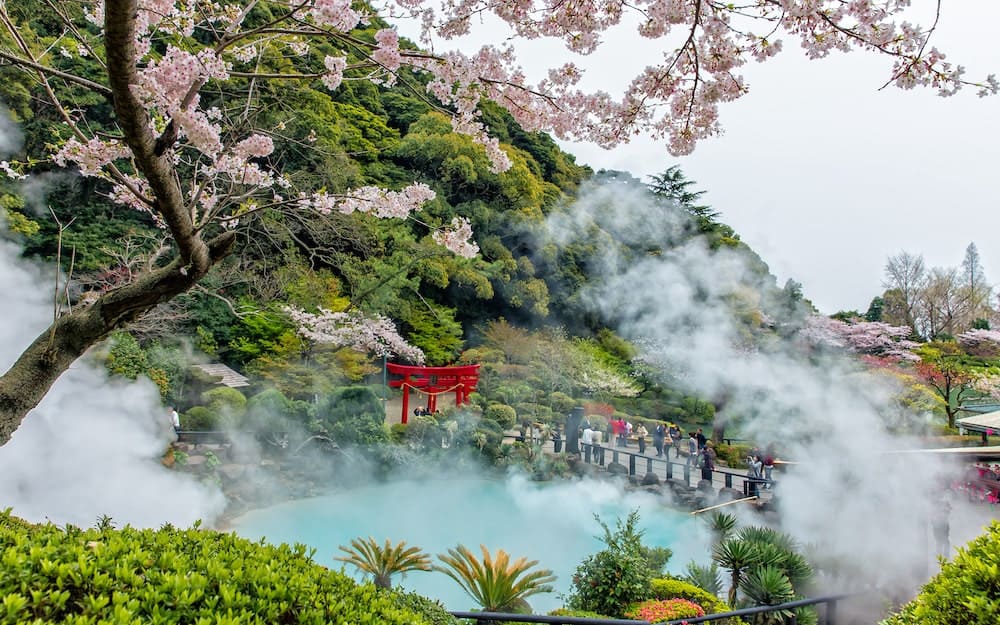
#9 | Kyushu
If you really want to experience hidden Japan, Kyushu is the right place to be. Active volcanoes, natural hot springs, mouth-watering food, and a bustling metropolis – it is hard to describe the colourful island in just one sentence.
The southernmost of Japan’s main islands, Kyushu’s sub-tropical climate is popular amongst surfers who enjoy catching waves between Hyuga and Cape Toi.
The island also offers active volcanos, beautiful beaches, pumping waves, and natural hot springs. When hunger kicks in, satisfy your inner foodie by tasting Kyushu’s famous porky Hakata ramen.
How to Get There: From Tokyo Station, a train ride to Kyushu takes about 5 hours.
Where to Stay: Shinshiyo (Budget) | Ryokan Shinsen (Splurge)
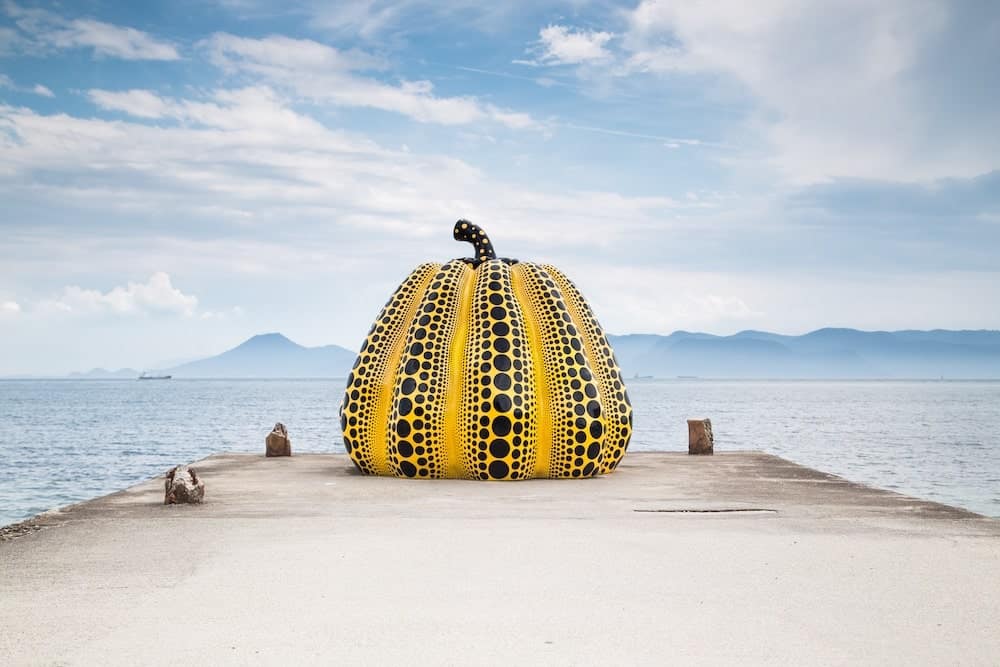
#10 | Naoshima Island
Admirers of modern art will surely enjoy a visit to Naoshima Island and, more specifically – the Benesse Art Museum . A trip to the beautiful destination wouldn’t be the same without seeing the Giant Pumpkin – a famous sculpture by Yayoi Kusama.
But even if art isn’t your thing, the island will be a pleasant surprise. Simply rent a bike and explore Naoshima and its breathtaking surroundings.
How to Get There: Hop on a train from Osaka to Okayama
Where to Stay: Hotel Art Rock (Budget) | Naoshima Juju Art House (Splurge)

#11 | Tottori
Located on the western coast along the Sea of Japan, Tottori is far different from many of these other Japan hidden spots. While most places in Japan offer volcanos and hot springs, Tottori offers massive sand dunes and ancient ruins.
Yep, in fact Tottori is well known for its glorious sand dunes, which are the largest in Japan – they cover more than 30 square kilometres. The ruins of the former feudal castle are also a must-see.
When getting off the beaten path in Japan, don’t forget to discover the Uradome Coast which features impressive rocky islands, breathtaking sandy beaches, and beautiful pine trees.
How to Get There: Take the Tokaido Shinkansen to Shin-Osaka Station. Then make a change to Super Hakuto. Plan about 6 hours for the whole journey.
Where to Stay: Drop Inn Tottori (Budget) | Super Hotel Tottori Ekimae (Splurge)
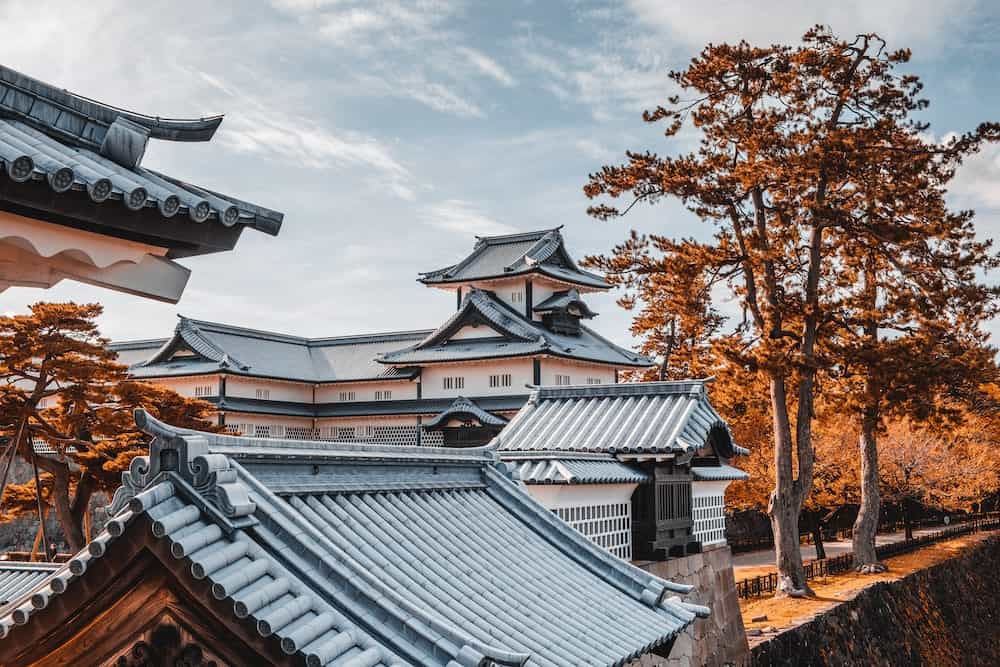
#13 | Kanazawa
At first glance, Kanazawa might seem like your typical urban destination. But as you look deeper, you will find that it has plenty of traditions and even thought-provoking crafts. It’s also the place to go if you want to see the famed snow monkeys!
Up until recently, the capital city of Ishikawa Prefecture was tourist-free. Now, it has become a must-hit stop for amazing food, culture and art. So, when you’re tired of wandering around Tokyo, hop on a bullet train and just in three hours, you will arrive in the beautiful city.
How to Get There: Catch the JR Hokuriku Shinkansen from Tokyo
Where to Stay: Hotel Pacific Kanazawa (Budget) | Hyatt Centric Kanazawa (Splurge)

#14 | Nikko
Japan is famed for its pulsing energy and vibrant way of life, but that can be a bit tiring for some. If you’re looking for a spot to calm your mind, plan a trip to Nikko National Park – a great place to learn more about the country’s traditions and World Heritage Sites.
Located just a two-hour train ride away from Tokyo, the city will surprise you with its mountain wilderness and stunning temples. Although Nikko is mostly regarded as a day trip destination, you won’t regret staying a few nights there.
How to Get There: Catch the JR Tohoku Shinkansen from Tokyo Station to Utsunomiya Station and transfer to the JR Nikko Line.
Where to Stay: Minshuku Fukufuji (Budget) | The Ritz-Carlton Nikko (Splurge)
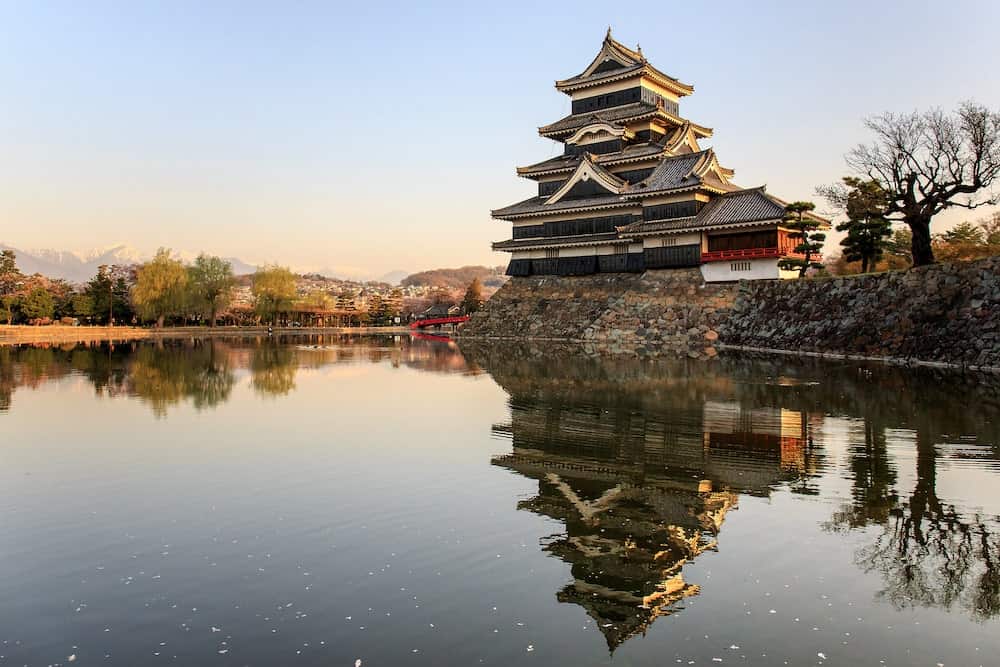
#15 | Matsumoto
Last, but not least, on this list of places to go off the beaten track in Japan is the city where you will see one of Japan’s most stunning castles – Matusmoto, the second largest city in Nagano Prefecture.
Matusmoto is surrounded by the Japanese Alps, its beauty is truly mesmerising. It’s a great place to base yourself for access to mountain resorts, skiing and winter activities.
Wander around the streets of Matsumoto and enjoy its delightful cafes, or in winter check out the Tateyama Kurobe Alpine Route, a unique road through the alps cut through the snow forming a majestic “snow corridor”, where the snow walls on either side can tower as high as 20 metres.
How to Get There: The train journey between Tokyo’s Shinjuku Station and Matsumoto takes just a bit more than 2.5 hours.
Where to Stay: cafe&stay CASTANA (Budget) | Shoho (Splurge)

Looking for More Japan Hidden Gems?
If you’re looking to discover more Japan off the beaten path places, then here are 15 additional spots that didn’t make the cut for this article but are still worth considering:
- Yukushima Island
- Sado Island
- Mount Koyasan
- Historic villages of Shirakawa-go and Gokayama
- Takachiho Gorge
- Geibikei Gorge
- Shizuoka City
Have we missed any noteworthy Japan hidden gems? Can you recommend other off the beaten path places in Japan for other visitors to check out? Let our readers know about them in the comments below!
Map of Hidden Gems in Japan
Ready to Book Your Trip to Japan?
Not only does Japan offer some amazing hidden gems, but the country as a whole is also a true gem in the world, waiting to be discovered!
We hope this article has helped you to find some off the beaten path places to visit on your next trip to the land of the rising sun! To make the most of your trip, be sure to check out the latest travel information and restrictions by visiting the official Japan tourism website .
Also, don’t forget to check out our other Japan travel blog articles:
Read More About Japan:
- The Ultimate Guide to Planning a Trip to Japan for First Timers
- 30+ Places to Get Off the Beaten Path in Japan
- The Ultimate Japan Bucket List: 230+ Experiences
- 20 Things You Should Know before Visiting Japan for the First Time
Looking for Somewhere to Stay in Japan?
Use the search box below to take advantage of the Booking.com Best Price Guarantee and get the best rates on accommodation in Japan!
Feeling inspired? Here are 10 amazing destinations you must add to your Travel Bucket List !
About the Author:
Amanda Twine is the founder and creator of Bucket List Seekers – a luxury travel blog sharing informative travel guides, food guides, hotel reviews, itineraries, and tips about how to make luxury travel more affordable.
Connect with us on Facebook | Instagram | X | Pinterest . If you found this article helpful, please share it with your friends!

Share This Post:
Get Access to our FREE Travel Resources Library!
Subscribe and get exclusive access to loads of printable planning checklists, maps, itineraries, destination bucket lists, and more!
You’ll Also Love

Top 10 Things to Do in Jordan
- Destinations
- Travel Guides
- Travel Itineraries
- Travel Tips
- Accommodation
Join Our Newsletter
And get exclusive access to our FREE Travel Planning Resources!
- Work With Us
- Disclosure Policy
- Terms & Conditions
- Privacy Policy
Copyright © 2024 Bucket List Seekers
Privacy Overview

Home » Travel » Destinations » Japan Off the Beaten Path: 16 Amazing Japan Hidden Gems
Japan Off the Beaten Path: 16 Amazing Japan Hidden Gems
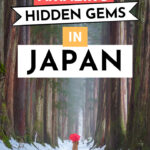
When planning a dream trip to Japan, the bustling cities of Tokyo, Kyoto, and Osaka usually spring to mind. But it would be a mistake not to explore Japan off the beaten path, even if it’s your first trip to the country.
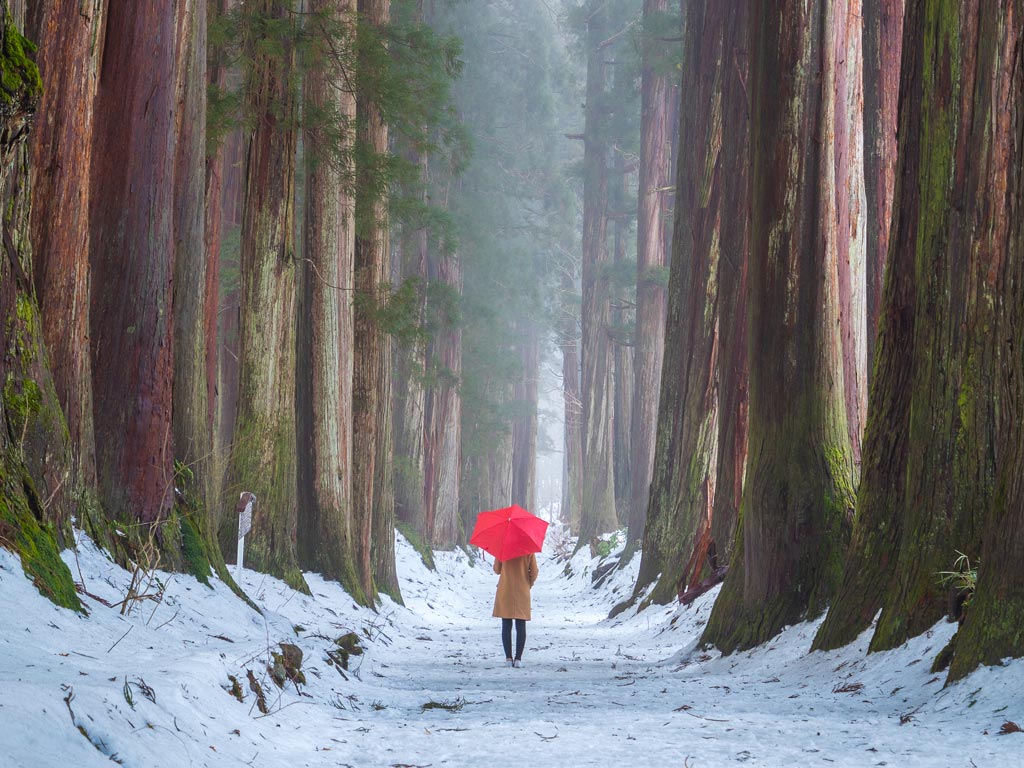
The Land of the Rising Sun is incredibly diverse, with so much to see and experience throughout its islands. From moss-covered primeval forests to charming fishing villages, the possibilities are endless. It’s why I’ve traveled to Japan three times in three years, with a fourth trip in the works!
If you’re looking for authentic and unique things to do in Japan, add a few of these amazing destinations to your itinerary alongside the country’s famous sights .
To make things even easier, I’ve included tips to reach these hidden gems in Japan by public transit.
This post contains affiliate links. As an Amazon Associate, I earn from qualifying purchases. For more information, click here .
RELATED: The Essential Japan Travel Checklist for Stress-Free Planning
Shirakawa-go
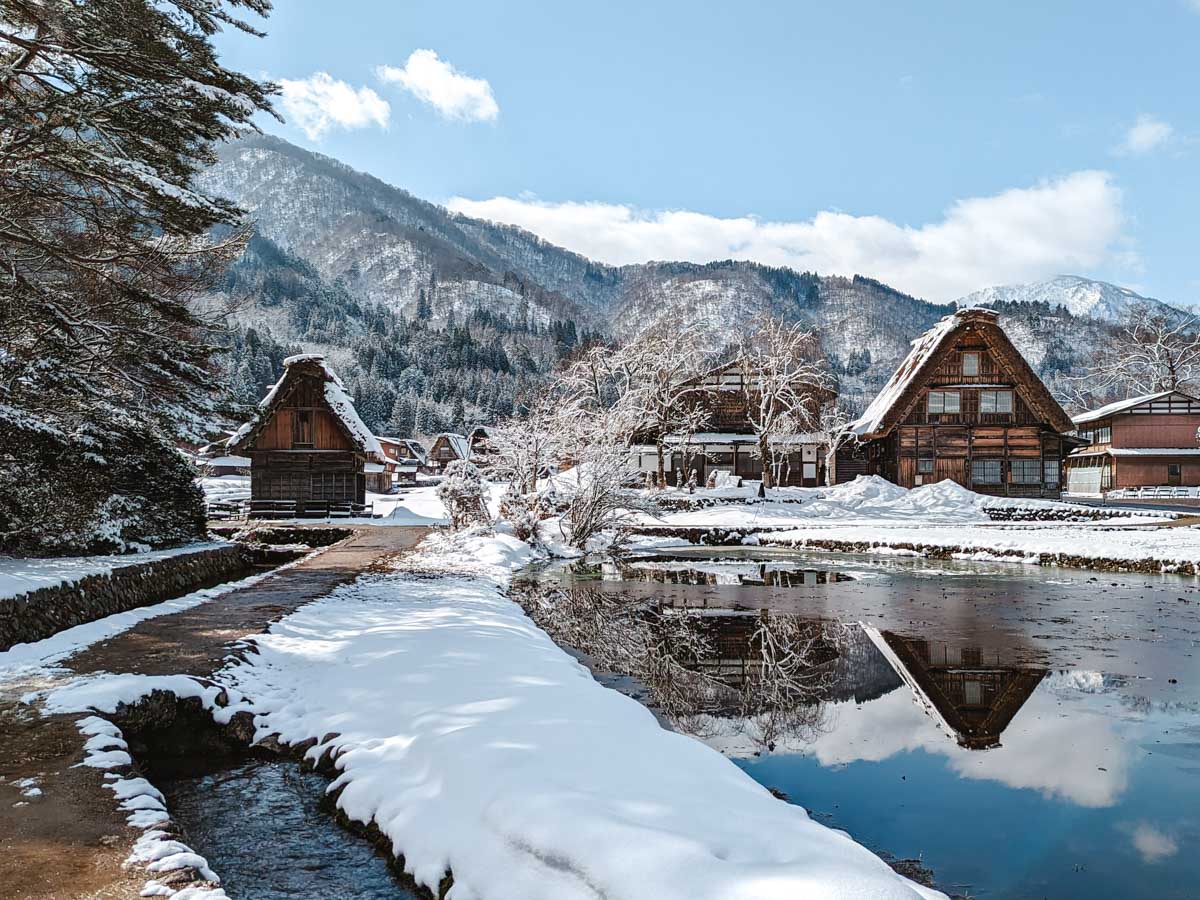
Tucked away in a mountain valley of Gift Prefecture, Shirakawa-go is a 1,000-year-old village that’s recently become my #1 favorite destination in Japan.
Thanks to its remote location, the area remained relatively undisturbed during the country’s long and occasionally destructive history, leaving its beautiful and unique Gassho-style farmhouses preserved to this day.
Along with its neighbor, Gokayama, it was placed on the UNESCO World Heritage list in 1995.
Best known for its thatched-roof A-frame buildings reminiscent of Swiss ski chalets, it’s the stunning landscape as a whole that makes Shirakawa-go worth getting off the beaten track in Japan. Between the towering pine trees, rice paddies, undulating streams, and snowy mountain backdrop, there are few places in the world that rival the village’s “stuck out of time” appearance.
There are no train stations within walking distance of Shirakawa-go. Instead, visitors need to drive themselves or take a highway bus. Nohi Bus operates the route from a number of nearby cities including Kanazawa and Takayama, and reservations–mandatory for most journeys–can be made online up to a month in advance.
Bus from Takayama Station: 50 minutes Bus from Kanazawa Station: 1 hour 20 minutes
Shizuoka City
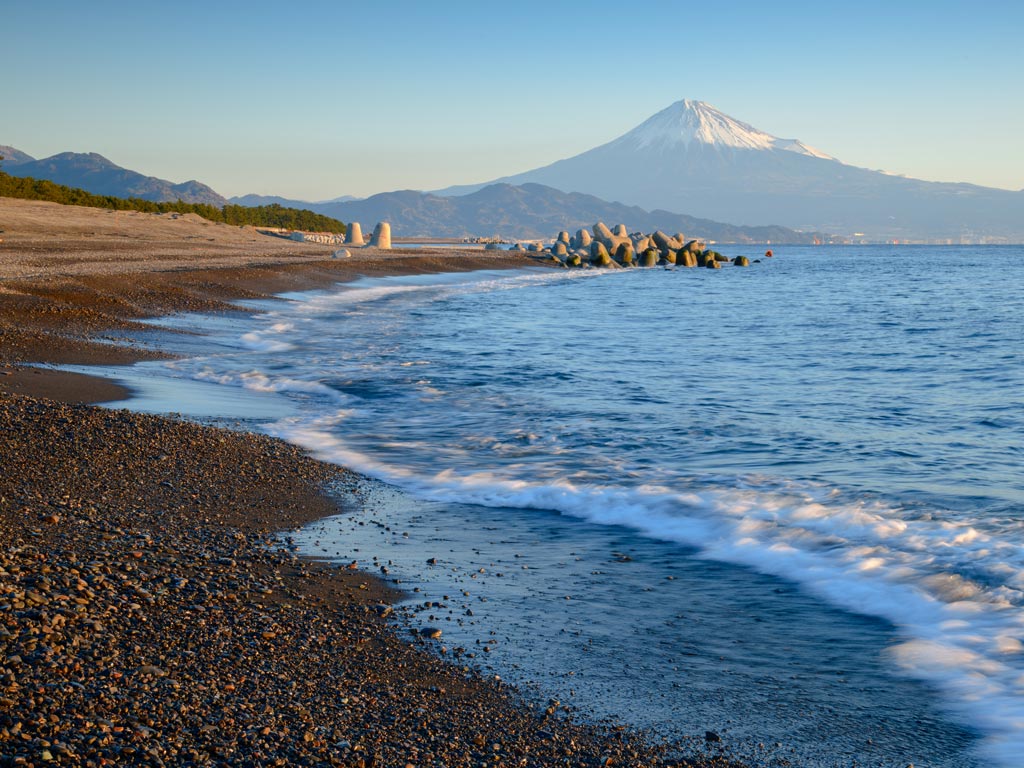
Despite its location along the “Golden Route”, Shizuoka City remains off the tourist radar. And that’s a shame, because this beautiful destination is easily one of the top places to visit between Tokyo and Kyoto .
If you’re longing for great views of Mount Fuji, you’re in luck! Shizuoka City has two amazing spots for breathtaking Fuji-san sightings.
The Nihondaira park and observatory sits at the top of Mt. Udo, and it’s totally free to enter. You’ll get 360 degree views over Shizuoka prefecture, along with lovely walking paths dotted with winter sakura blossoms.
For oceanfront views of Mt. Fuji, head to Miho no Matsubara. This tree-lined beach is considered one of Japan’s best scenic points, even if Fuji-san is obscured by clouds or fog.
Shizuoka city was also the former home base of the Ieyasu shogunate. Remnants of their castle stronghold, Sunpu, remain in the city center surrounded by a lovely public park. And their most famous leader, Tokugawa Ieyasu, was enshrined outside the city at Kunozan Tosho-gu.
Kunozan is a UNESCO World Heritage Site, with wonderfully colorful buildings spread across the mountainside overlooking the ocean. Getting here is also part of the fun. A scenic cable car ropeway connects Nihondaira overlook and Kunozan Tosho-gu shrine, offering stunning views over the forest and water.
Shizuoka lies on the Tokaido Shinkansen line, which JR pass holders can ride for free with no reservation needed. The city is well-connected by public transit, so you can visit all the highlights without a car (though a car/taxi is recommended to reach Miho no Matsubara).
Nearest train station: Shizuoka Station
Don’t Forget Your Japan Rail Pass!
Buying a Japan Rail Pass will save you a ton of time and money when traveling across Japan.
I’ve purchased a JR pass for two out of three Japan trips, and here’s why:
– Free bullet trains and reservations : Quickly travel all over Japan to maximize vacation time.
– Easy to use: Just show your pass to the gate attendant and walk to your train!
– Affordable day trips: Visit unique places like Matsumoto, Shizuoka, and more without spending a fortune on tickets.
Order your Japan Rail Pass now for speedy delivery!
Izu Peninsula
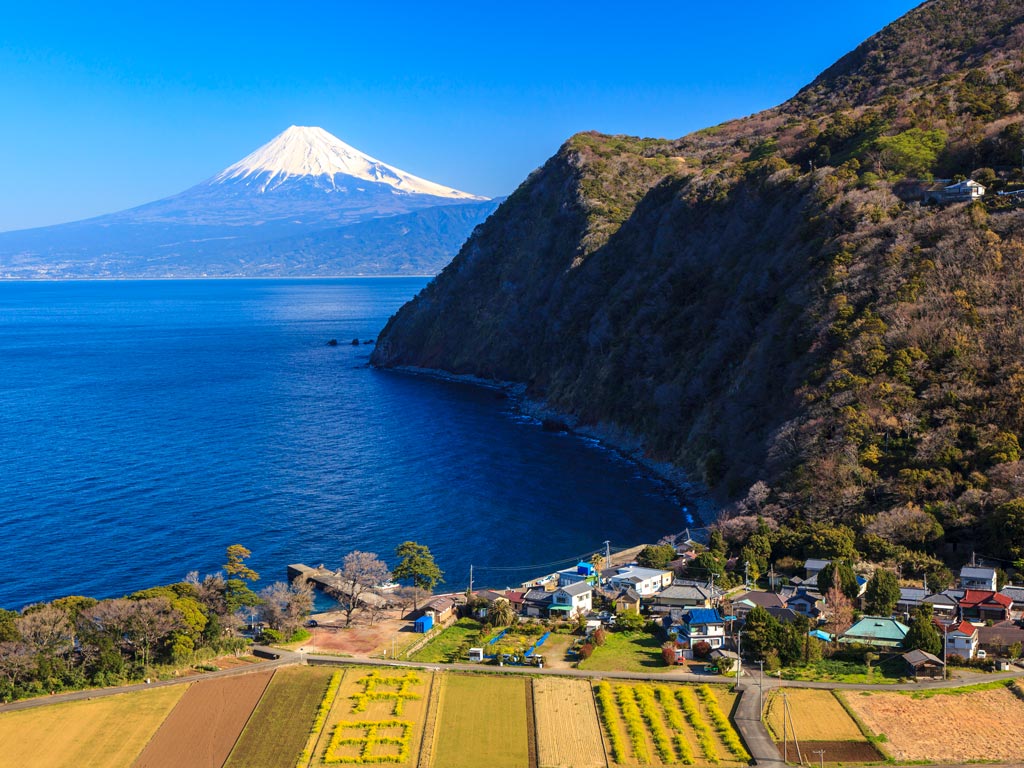
You know it’s one of the best hidden gems to see in Japan when the locals visit it. And Izu Peninsula is the go-to resort destination for Tokyo residents.
Less than a two hour train ride south, the Izu Peninsula is a mountainous peninsula on the Pacific coast with rugged, less developed and rural areas in the west, and more developed towns, beaches and onsens on the east coast.
This popular weekend getaway from Tokyo is a great change of pace and scenery if you’ve been visiting the major cities, with famous onsen resorts such as Shuzenji which not only offers bathhouses, but also meditation classes. Ito and Atami are also popular hot spring towns with ocean views.
For the more adventurous travelers, the west coast of the peninsula offers incredible views of Mount Fuji on a clear day as well as multiple walking trails, such as the Irozaki coastal trail.
Jogasaki and the Kawazu Nanadaru waterfall trails are both located on the south and south-eastern tip of the peninsula and offer beautiful views, with the waterfall trail passing through seven waterfalls in the mountain region.
Nearest train station: Izu Station
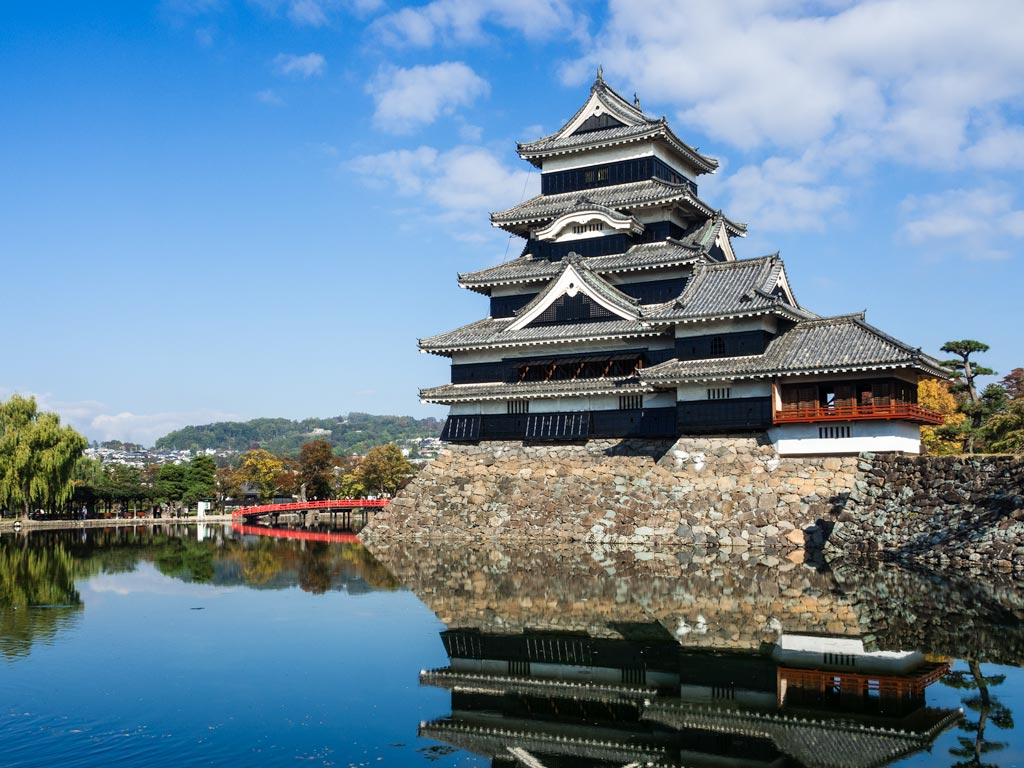
Most people who visit Matsumoto come for one reason: Matsumoto Castle.
Considered one of Japan’s “perfect castles”, Matsumoto Castle is still a hidden gem among foreigners. Its unique dark roof and borders set the structure apart from other castles in the country. And with a mountainous backdrop, swan-filled reflection pool, and long red bridge, it’s one of the most photogenic places in Japan.
Aside from the iconic castle, Nakamachi Street is a must see. This historic road is lined with black-and-white kura –traditional storehouses that have since been converted into shops. Visitors can find everything from handmade pottery to wooden crafts, along with some cozy cafes.
If you’re traveling through Nagano prefecture or nearby Gifu, you won’t regret a quick detour to Matsumoto.
Nearest train station: Matsumoto Station
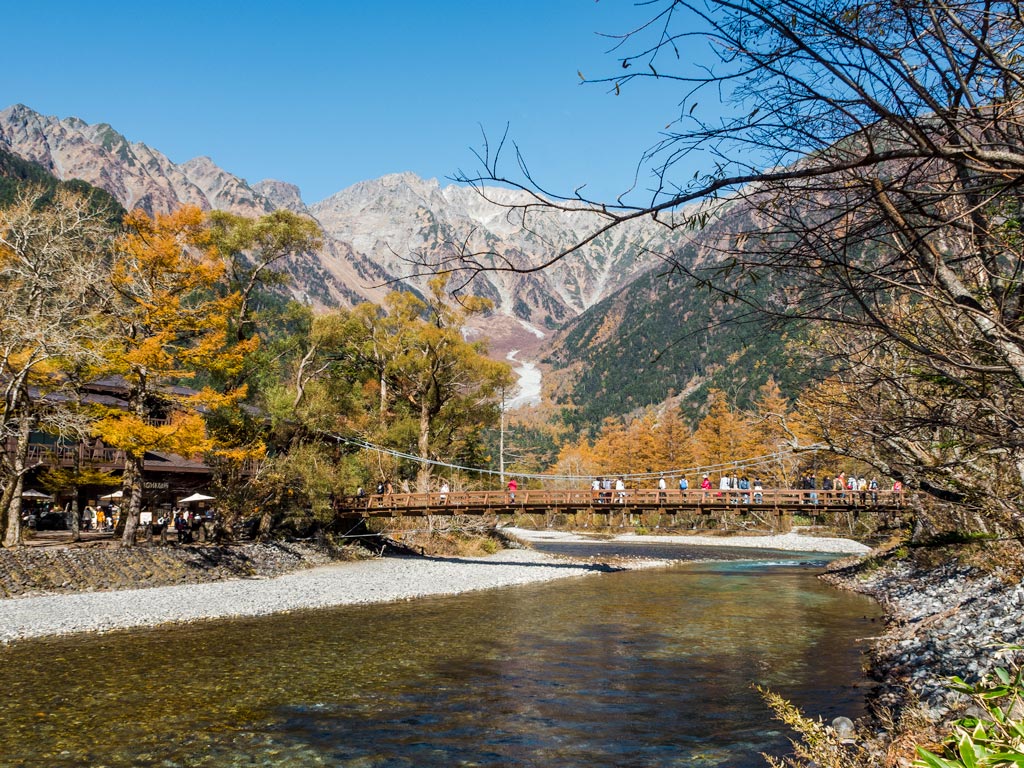
Nestled in a semi-remote valley in Nagano prefecture, Kamikochi National Park is renowned for its natural beauty. If you’re visiting Japan in October or early November, you’ll be greeted by red maples, golden larches, and yellow grasses.
During a half day trek, you’ll cross a winding river, pass beneath towering trees, and balance on wooden planks suspended over a marsh, among other adventures. Everyone from young children to the elderly can traverse the well-defined circuit, while those looking for a challenge can set off on the rugged mountain trails.
With no cars allowed in the park, Kamikochi is firmly off the beaten path in Japan. However, you can easily plan your visit with my detailed Kamikochi hiking guide !
Nearest train station: Shinshimashima Station (can take a bus into the park from this point)
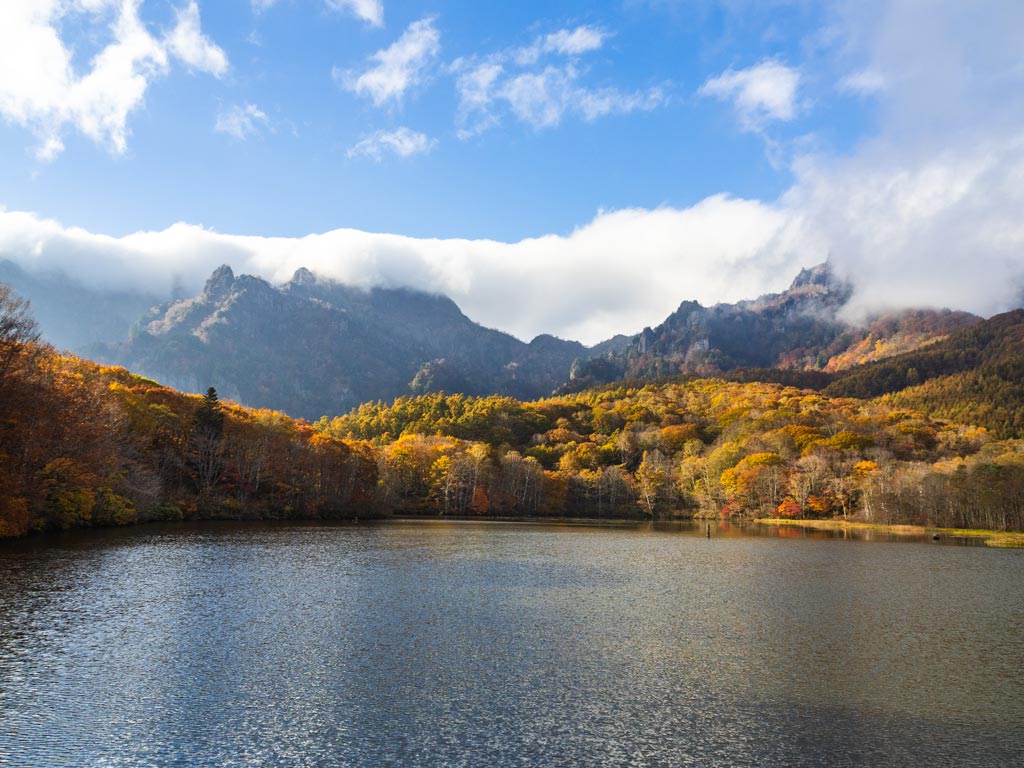
If you love nature and quiet places, you’ll love exploring Togakushi’s famous towering cedar trees and mountain shrines. Located in Nagano prefecture, this Japan hidden gem is best known for its shrine path, which winds through the village and forest to the summit of Mt. Togakushi.
There are five shrines on the path, though you can ride the Alpico bus part-way up the mountain if you don’t have the time or energy to complete the full journey.
In addition to the shrine path, Togakushi boasts stunning forest trails, a botanical garden, and a “mirror pond” ( Kagami-ike) . On calm days, the lake perfectly reflects the sky and mountains. It’s utterly magical and well worth getting off the beaten path in Japan.
If you’re travelling alone in Japan or visiting in winter, put Togakushi on your itinerary.
Nearest train station: Nagano Station (take the Alpico Bus #70 or #73 from the stand across the street)
Save me for later!
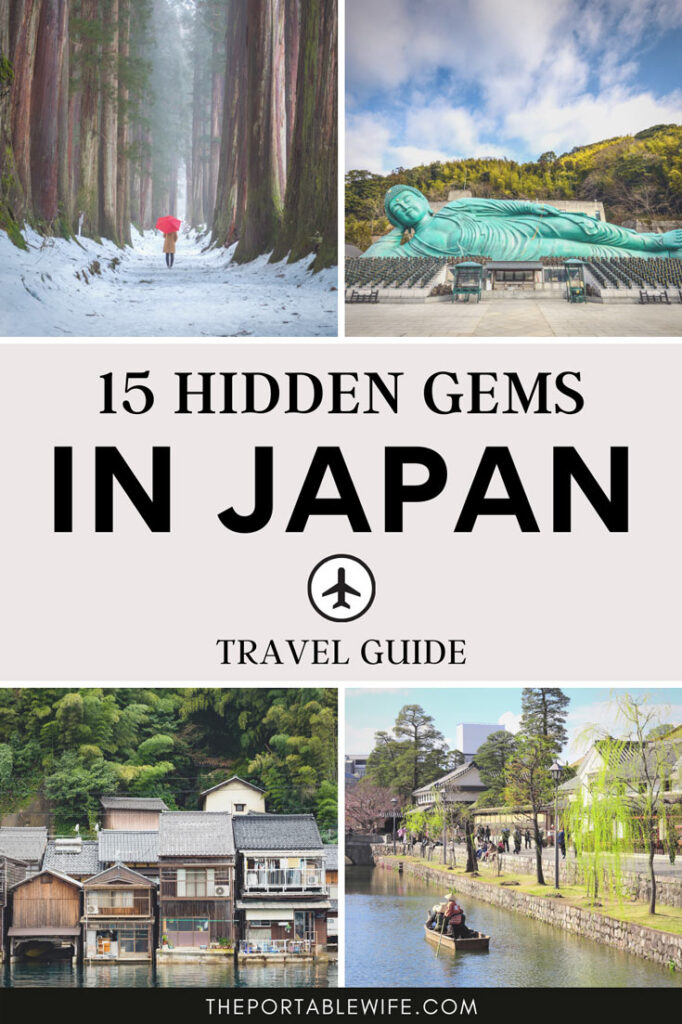
Located on Japan’s Shikoku Island in Ehime Prefecture, Matsuyama is famous for its traditional Japanese architecture, with detailed wooden houses and buildings dating from the Meji Period.
The journey to Shikoku Island and Matsuyama is well worth going off the beaten track to visit the city’s traditional Dōgo Onsen, which claims to be Japan’s oldest hot spring. Said to have inspired the setting of Spirited Away , these bathhouses are a unique Japanese experience, with soaking rooms, private baths and traditional tea and snacks on offer.
If you reach the Onsen by train, take some time to admire the Botchan Karakuri Clock which is outside of Dōgo Onsen station and was erected to mark the 100th anniversary of Dōgo Onsen. Every hour the clock chimes and the characters come alive to show scenes from the famous Japanese novel, Botchan . The station is also home to the Botchan steam locomotive.
Matsuyama Castle is a beautiful Japanese castle uniquely positioned on a large hill in the middle of the city, offering panoramic views of Matsuyama and beyond. But it really comes into its own during spring when the cherry blossoms ( sakura ) are in full bloom.
Nearest train station: Matsuyama Station
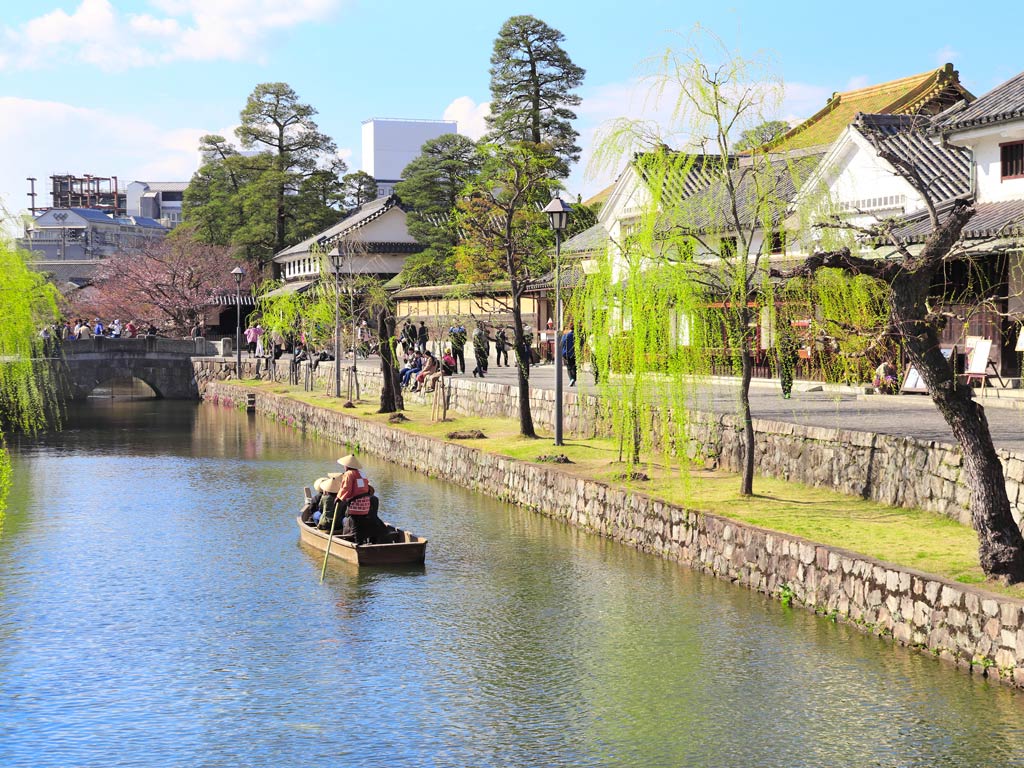
Just an hour and a half from Osaka and 30 minutes from Okayama, Kurashiki is a small city found in Okayama Prefecture. The city’s fascinating central canal area is often likened to Venice and dates back to the Edo Period. With willow-draped waterways and historic buildings, taking a canal cruise in Kurashiki is a must-do activity.
The city’s old rice storehouses have been converted into museums and quirky shops and cafes in the Bikan historic quarter, perfect for an afternoon of shopping and exploring. Interestingly, Kurashiki is the birthplace of denim in Japan, so you’ll find no shortage of denim jeans, jackets, shirts and accessories, even denim ice cream to try!
The historic district is also home to the Ohara Museum of Art which is a stunning museum not only of Japanese art, but also some of the most famous western artists in the world – Monet, Matisse and Warhol to name a few.
In the centre of the city, Achi Shrine is a traditional Shinto shrine which offers views across the city, just prepare yourself for the climb up 200 steps!
Kurashiki makes for a great off-path addition to an Osaka Kyoto Nara itinerary .
Nearest train station: Kurashiki Station
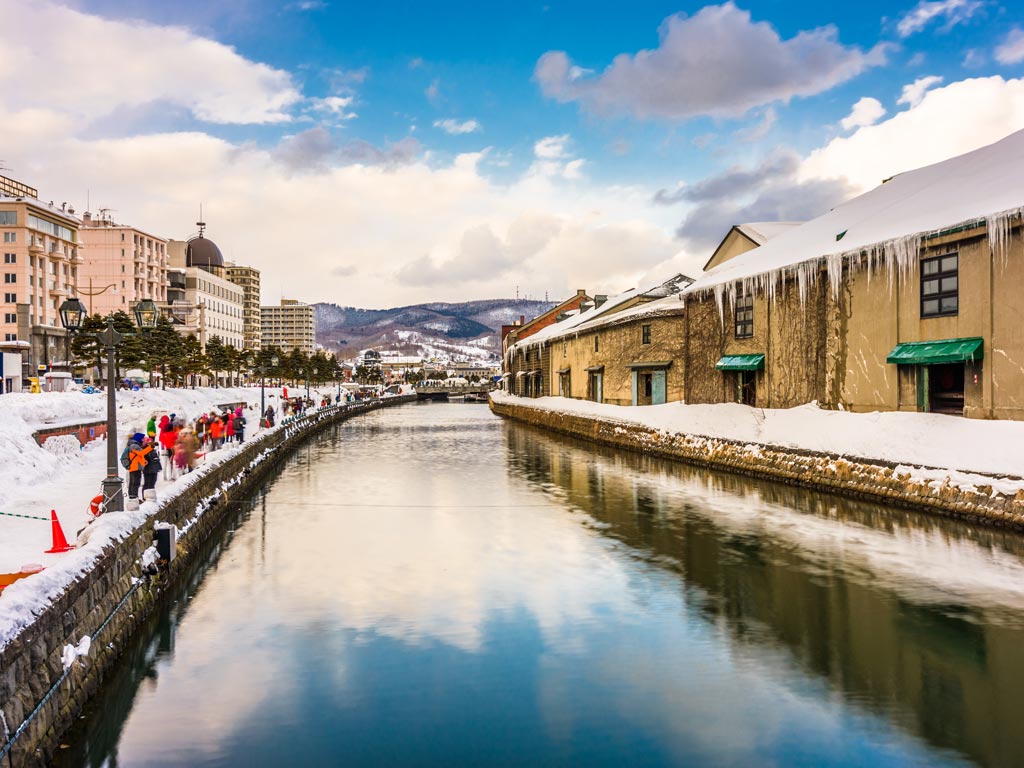
Otaru is situated just one hour from Sapporo in Hokkaido Prefecture. While Otaru is also home to a canal district, this port city is actually more famous for its glassworks and distilleries.
The Otaru Canal sits just behind the harbour area and the canal cruises take you on a historic tour of the old warehouses. Now, the warehouses are home to lively restaurants and shops which line the canalfront. The brick buildings and canal walk are magical when it’s lively and lit up in the evenings.
A unique experience in Japan off the beaten path is to visit a sake distillery. Sake is Japanese rice wine and Otaru features several sake distilleries, such as the Tanaka Sake Brewery where you can book tours and tastings. But if you’re not a sake fan, Otaru is also home to the Nikka Whisky Yoichi Distillery, a Japanese whisky distillery that offers free tours.
Nearest train station: Otaru Station
Geibikei Gorge
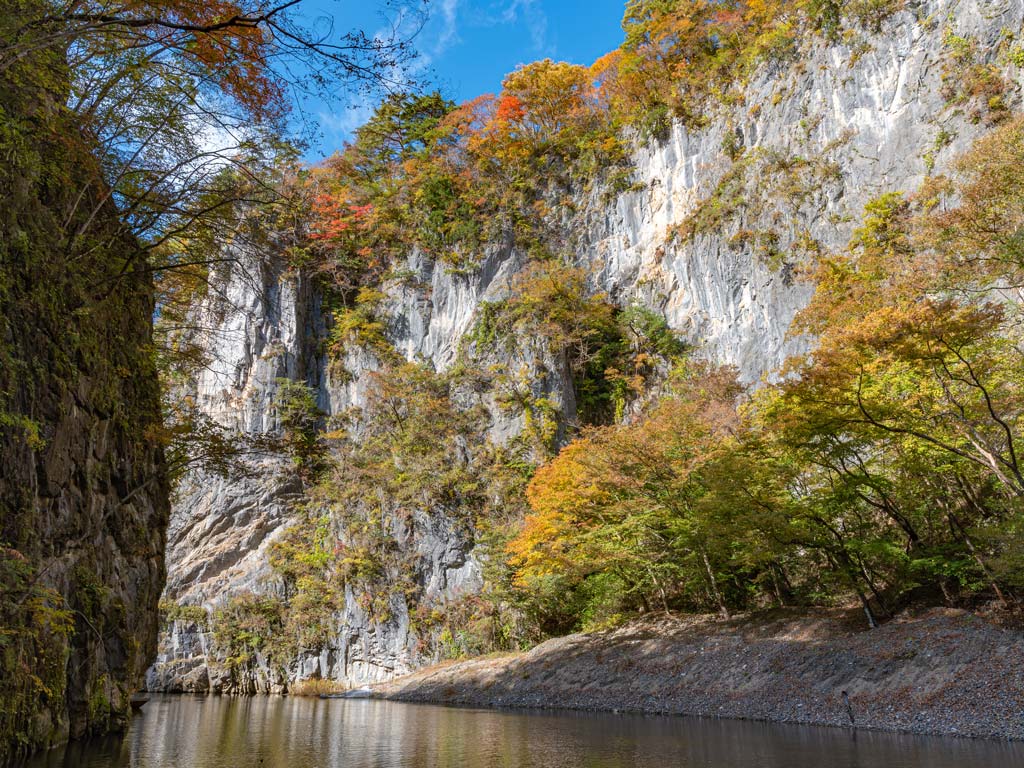
If you’re looking for Japan hidden gems, Geibikei Gorge should be at the top of your list. Whilst many visitors to Japan are familiar with the natural beauty of Takachiho Gorge in the south of Japan, Geibikei Gorge in the northern Iwate Prefecture is much less visited but arguably more scenic.
Geibikei Gorge was named a National Place of Scenic Beauty and Natural Monument in 1923 and is designated as one of the 100 Landscapes of Japan.
The dramatic cliffs and tree lined water are spectacular in autumn when the trees become vibrant shades of yellow and orange alongside the turquoise blue water.
There are regular guided boat rides through the gorge which last for about 90 minutes with an optional walk at the turning point. Times and prices can be found on the Geibikei Gorge website .
Nearest train station: Geibikei Station
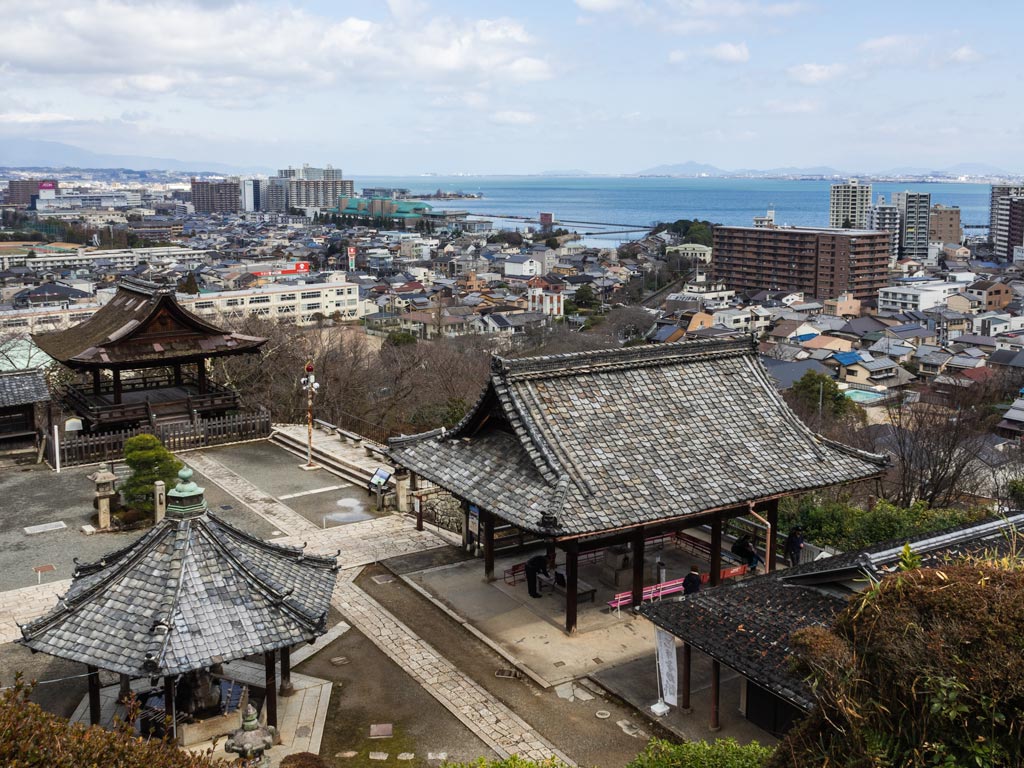
If you’re visiting Japan in the summer, Lake Biwa is an excellent day trip from Kyoto . Japan’s largest freshwater lake is where you’ll find locals swimming, kayaking, fishing, and generally enjoy the gorgeous surroundings.
Scenic points dot Lake Biwa’s coast, including Ishiyama-dera Temple, Mii-dera Temple complex, Kaizu Osaki’s cherry blossom park, Hikone Castle, and the “floating” Shirahige Torii gate. There are multiple cycling trails around the lake, and bike rental shops are plentiful in the coastal towns.
If you’re a fan of boat tours, Lake Biwa has multiple operators including a vintage paddle boat dubbed The Michigan that cruises around the southern waters.
Lake Biwa area is best explored by bike or car. However, it’s easy to explore the beautiful temples and shrines on the western shore thanks to the train lines that encircle the coast.
Check out my complete Lake Biwa day trip itinerary to plan your visit!
Nearest station: Biwako-Hamaotsu Station (there are numerous other stations along the lake)
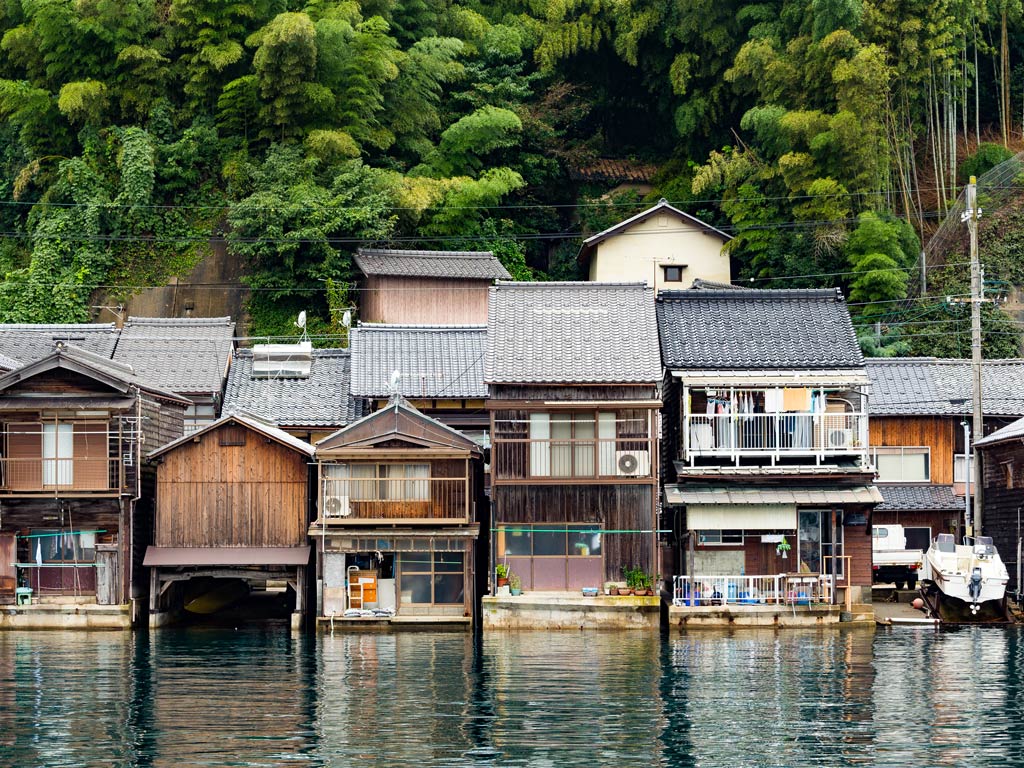
There aren’t many places in Japan which are off the beaten path completely, but without a local train station, the fishing village of Funaya really is one of the hidden gems in Japan.
To reach Funaya, you will need to take a train from Kyoto to Miyazu Station, followed by one of the local buses to reach Funaya. Buses to get around the area are irregular, but there are plenty of bikes which are free to use to cover the shorter distances rather than waiting for a bus!
But this quaint coastal village is well worth the journey. The traditional fisherman’s houses, called Funaya, are right on the water’s edge for easy water access with their boats. The best way to see these unique houses is from the water and a regular sightseeing ferry runs throughout the day from Ine Marina.
Some of the fisherman’s houses have now been converted to guest accommodation for the experience of feeling like you’re sleeping above the sea.
Funaya is a fantastic add-on to a Kyoto itinerary .
Nearest train station: Miyazu Station
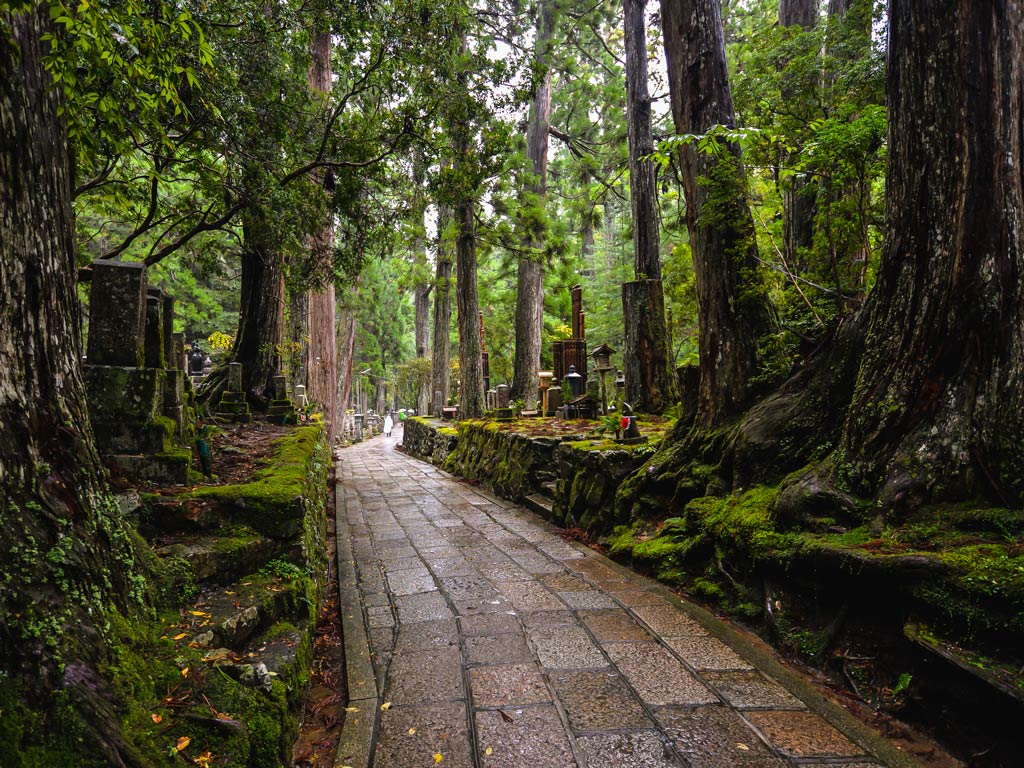
One of the most spectacular hidden things to do in Japan is seeing the huge temple complex at Mount Kōya. Kōya-san is the mountain name of the area in Wakayama Prefecture.
Mount Kōya is significant because it’s the origin of Shingon Buddhism and was founded by Kobo Daishi in Japan in 805 who also built the original mountaintop temple. Now there are over 100 temples in the surrounding area.
Okunoin is one of the most important and most spectacular of these temples as it’s the site of Kobo Daishi’s mausoleum. To reach Okunoin temple you walk through the eerie Okunoin Cemetery – the largest cemetery in Japan with over 200,000 tombstones on a kilometer long track to reach the Mausoleum.
Mount Kōya is also one of the best places in Japan to experience an overnight temple stay because there’s such a large number of temples to choose from. Be sure to book your ryokan or temple stay well in advance, as reservations fill up quickly.
Kōyasan is reached by a cable car that rises above the clouds from Gokurakubashi station to reach the mountain temple complex.
Nearest train station: Gokurakubashi Station
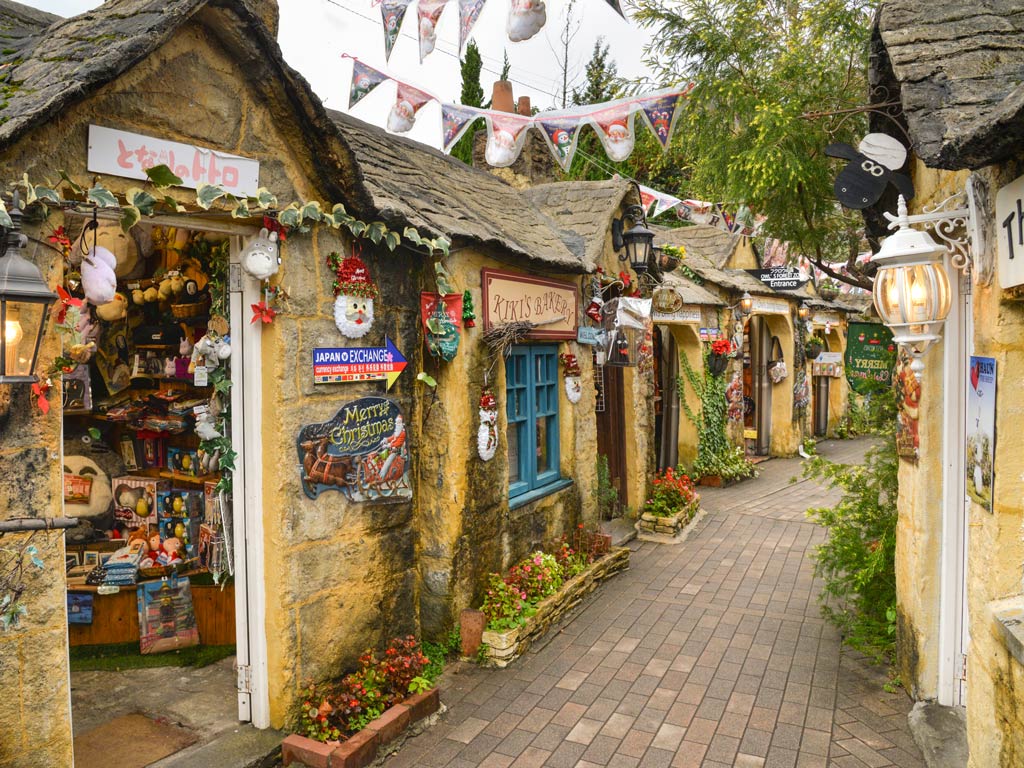
Yufu is an off the beaten track Japan destination because it’s a relatively young city, only established in 2005.
However it’s most well-known for Mount Yufu, the two-peak mountain in Oita. Climbing Mount Oita is a moderate climb which can be done in a 4-5 hour round trip from the trailhead.
Mount Yufu isn’t the only striking natural scenery in the area though. Kirin Lake is a picturesque lake known for its misty mornings and the hot springs and nature trails that surround it. The Yufu Onsen resort village here is perfect for nature lovers who like to spend time outdoors and enjoy the relaxing hot springs too.
The vibrant Yunotsubo Street is a shopping street in the city which connects Yufuin Station to Kirin Lake. Its Studio Ghibli-esque atmosphere promises to turn Yufuin into a tourist hotspot. The street is lined with shops selling traditional Japanese specialty products, whimsical souvenirs, and local food dishes.
Nearest train station: Yufuin Station or Tenjin-Yama Station
Yakushima Island
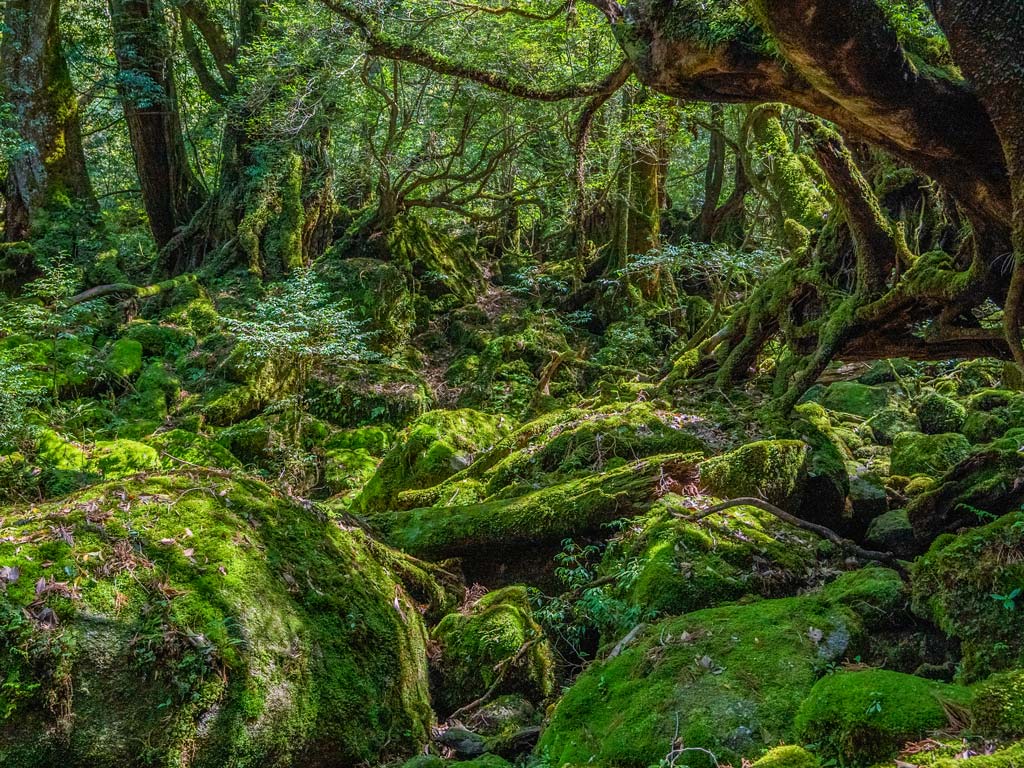
Yakushima Island is an island located off the southern tip of Japan’s Kagoshima Prefecture and this off the beaten path Japan destination can only be reached by airplane or by taking the train to Kagoshima and changing to a ferry.
The subtropical position of this island makes it an absolutely magical place to experience, especially as the island is known for its dramatic mountainous terrain and Japanese Cedar trees, some of which are over 1000 years old. The oldest tree, Jomonsugi, is believed to be the oldest at somewhere between 2000-7200 years old!
In fact the island is so unique that it’s been designated a UNESCO World Heritage site for its natural beauty. If you’re looking to explore Japan off the beaten path, it doesn’t get better than this with magical and mysterious trails winding through the cedar forests.
The island is popular with hikers and outdoor enthusiasts thanks to the trails but is also popular with Princess Mononoke fans thanks to the Shiratani Unsuikyo Ravine. The Ravine is a fascinating, green, moss-covered forest which served as the inspiration for the Princess Mononoke movie. The ravine has multiple hiking trails of varying lengths and difficulties.
Nearest train station: Kagoshima Station
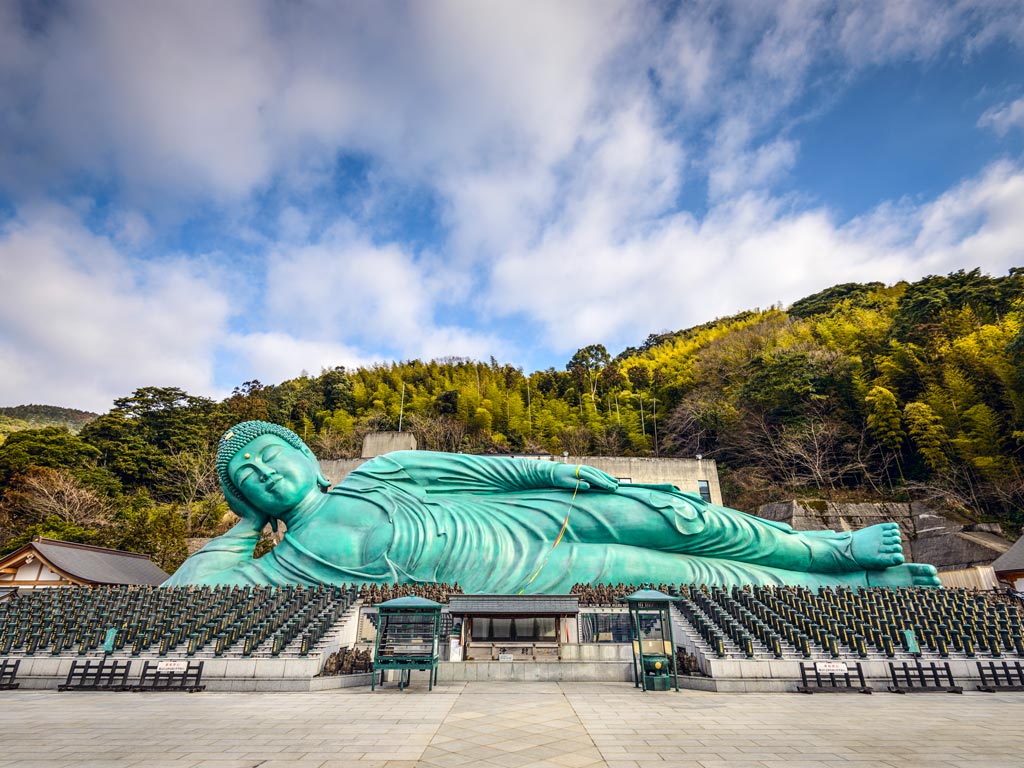
Fukuoka is the capital city of Fukuoka Prefecture on Japan’s southern Kyushu Island. The city is full of ancient temples with historic and religious significance, the oldest of which is Tōchō-ji Temple, founded in 806 and home to a 10m tall wooden Buddha statue. Tucked in the middle of the city, the five tier pagoda is striking among the city buildings.
A short walk out of the city centre takes you to the Fukuoka Castle ruins in Maizuru Park, although the majority of the castle walls are intact, the Edo castle itself is in ruin. By climbing the walls, you have a view of the city and the park, which is full of hundreds of sakura trees in spring.
If you’re looking for more quirky things to do in Japan, head to Fukuoka’s Ramen Stadium. This food court is home to dozens of ramen stations with different types of ramen from all over Japan, including the local Hakata ramen variety.
Nearest train station: Hakata Station
Are you ready to check these hidden gems in Japan off your bucket list? Here are some helpful resources to plan your perfect trip!
- 12 Things Not to Do in Japan
- Unique 10 Day Japan Itinerary: Highlights & Hidden Gems
- 11 Best Day Trips from Tokyo by Bullet Train
Leave a Comment Cancel reply
This site uses Akismet to reduce spam. Learn how your comment data is processed .

16 Amazing Japan “Off the Beaten Path” Destinations & Hidden Gems
Looking for some of the best off the beaten path Japan destinations? Smart decision! And I’ve put together an amazing list of unique destinations and hidden gems that Japan has to offer!
There’s no doubt that traveling to a foreign destination can bring about a sense of adventure. You can jump right into exploring fascinating, unfamiliar cultures with a renewed zest for life and sense of adventure. But there’s even more of a thrill that comes with discovering hidden gems tucked away from the busy cities of the world.
You can experience the magic that comes along with exploring a new place that’s been relatively untouched by tourists and as a result, remains as culturally authentic as possible. Less visited, but arguably more beautiful, Japan off the beaten track offers incredible destinations that guarantee the experience of a lifetime.
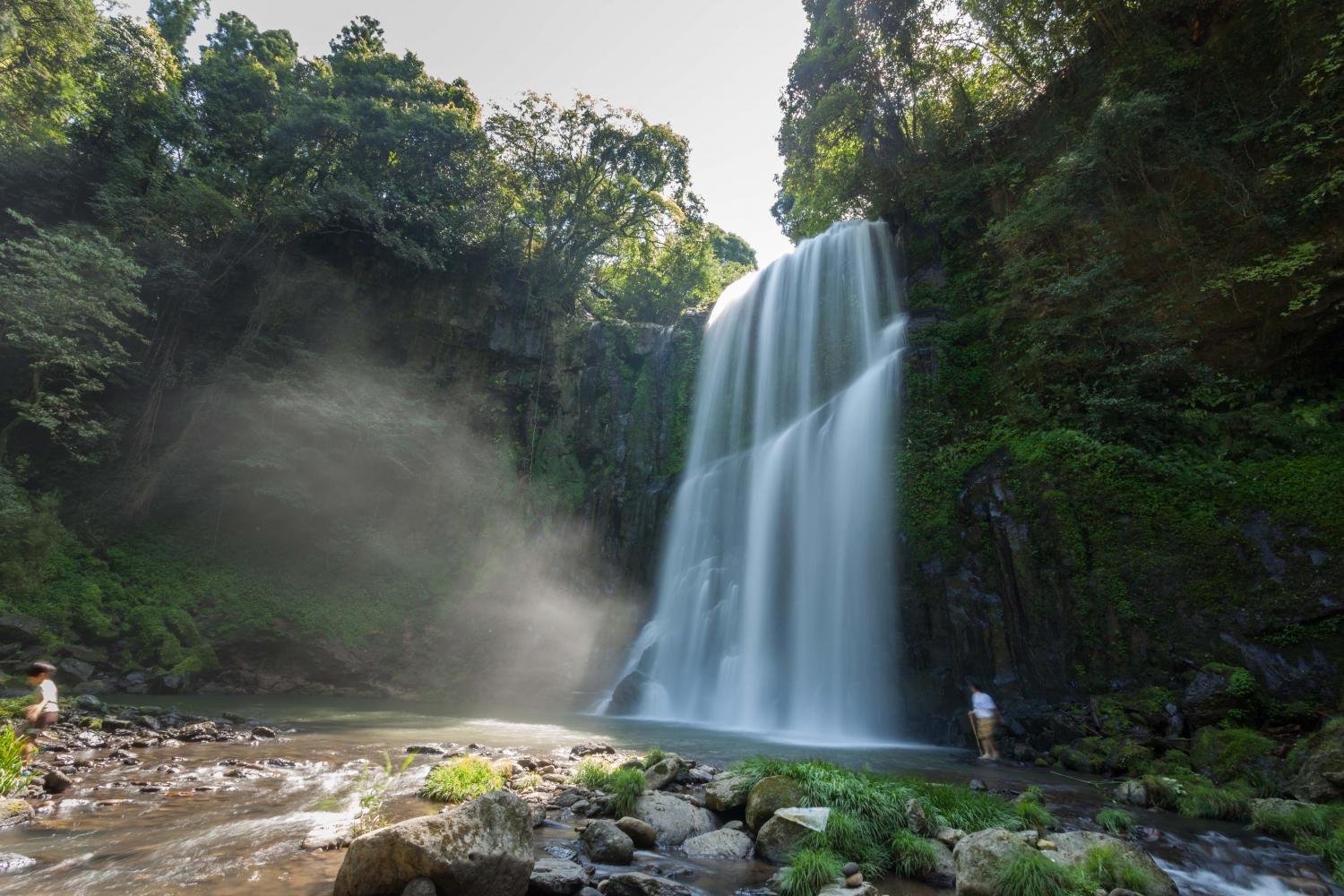
Many cities, towns and villages in Japan have retained their own unique historical charm, reminiscent of times of old. With beautiful shrines and temples, authentic cuisine, interesting locals and yes – world class hot springs- the fringes of the major urban areas can reveal many of the hidden gems of Japan. And they’re just waiting to be discovered by you.
For a truly unique experience in Japan, head to these special destinations that truly exemplify the real heart and soul of the country.
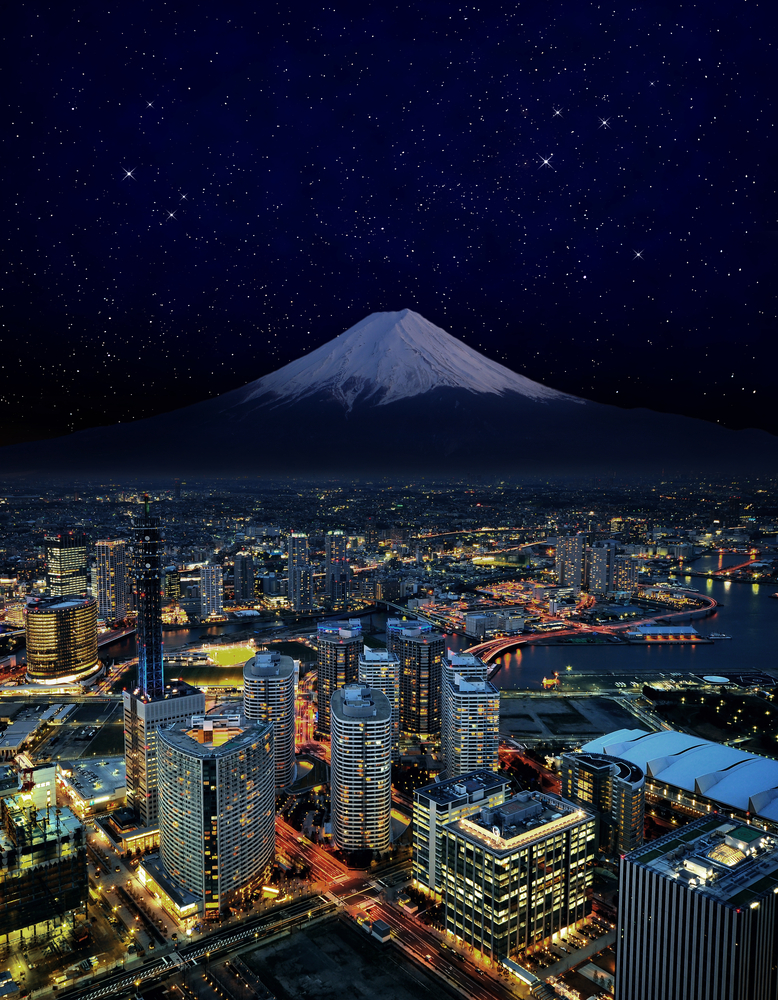
16 Japan Gems You Don’t Want To Miss Out On
It’s easy to fall into the same tourist traps when visiting a country you might not be that familiar with. And much like other places in the world, the outskirts of Japan aren’t that well-known or well-trafficked by foreigners. That’s why I’ve outlined some of the best little-known Japanese locations you definitely want to add to your Japan itinerary.
Just west of Tokyo, in Japan’s Fuji-Hakone-Izu National Park, lies the mountainous area of Hakone. Famed for its divine hot springs, the beautiful forest region is comprised of quaint Japanese mountain villages, relaxing spas and unique adventures, attracting both Japanese visitors and travelers from around the globe.
Across Lake Ashinoko, the views of Mount Fuji will take your breath away, and its the ideal escape from the frantic pace and huge populations of Japan’s city centers. Here you can experience for yourself the many cultural activities the region offers, like the Yumoto walking tours that take you to local sights such as the Kumano shrine and Tamadareno Falls.
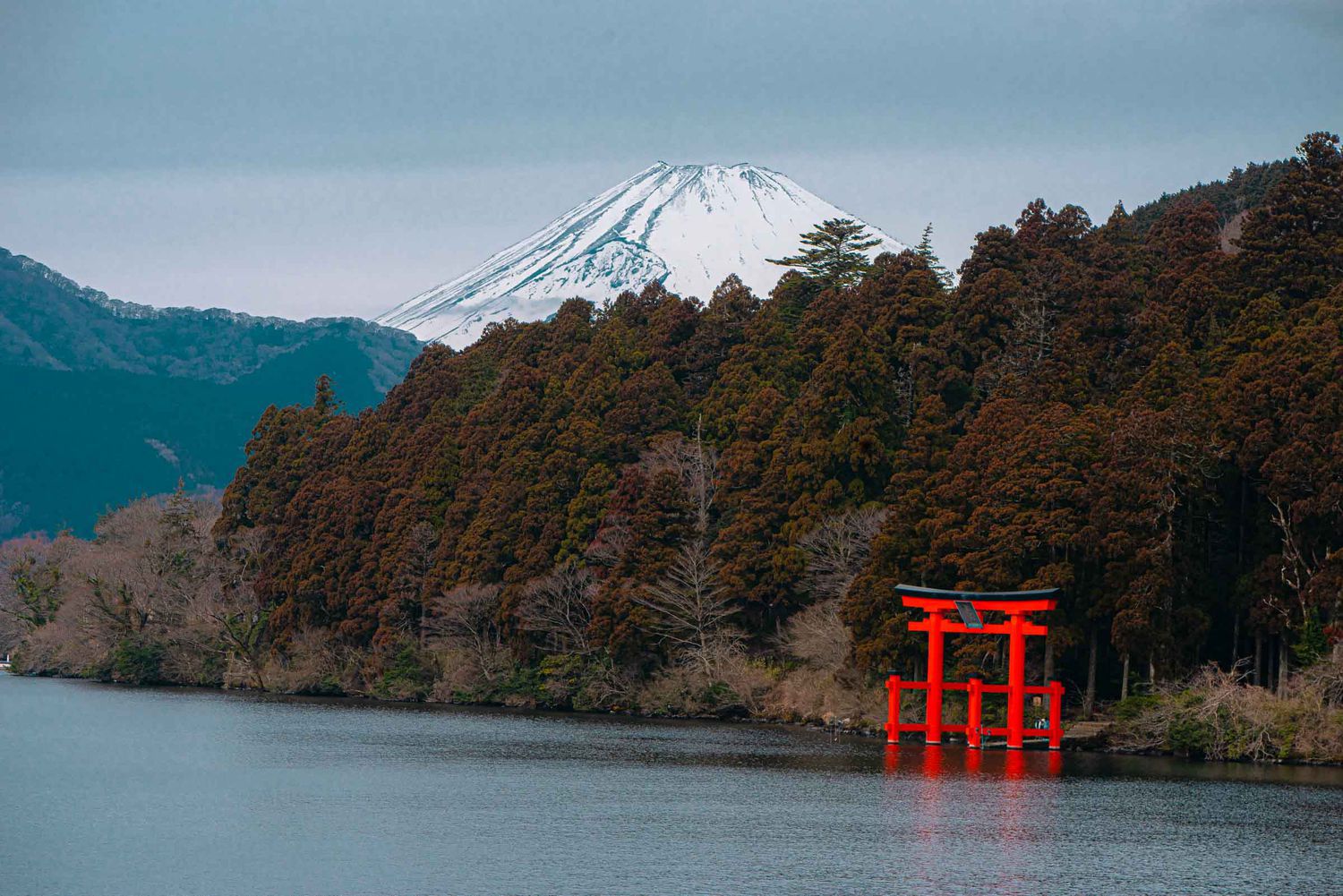
The Hakone region is comprised of seven villages, each with its own distinct history, culture, scenery and hidden secrets. From the deep-set river valleys to the volcanic waterfalls, traveling through these pristine natural locations allow you to discover parts of the Japanese culture that aren’t so well-known – but should be! There are a number of hikes you can do, many charming streets to be discovered and authentic local eateries and shops to be visited across the area. Depending on your taste and allowed time, you can bounce between areas to fully partake in a range of local specialties.
If you’re really keen to get fully involved in the local culture, be sure to book yourself a geisha experience. It includes an authentic dinner that is the most representative of a traditional ozashiki, that is, a gathering of friends. Indulge in the culture with dancing and music, authentic cuisine and attire, as well as fascinating conversations with locals.
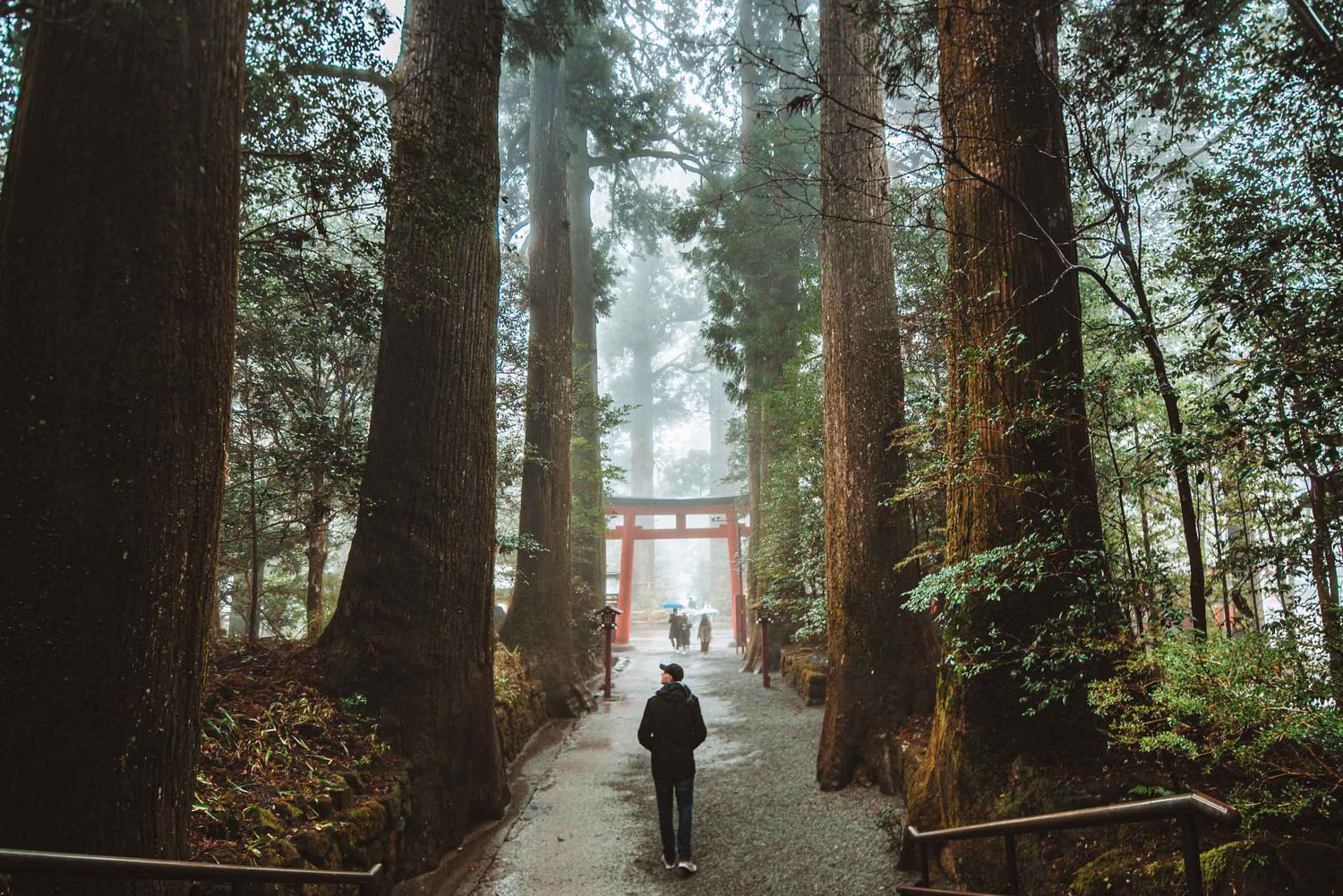
2) Sado Island
Located just off the coast of the Niigata Prefecture, Sado Island is actually one of Japan’s largest islands, despite not being a household name. In the past, the remoteness of the island allowed it to serve as a home for political exiles. The Buddhist monk Nichiren, the former Emperor Juntoku, and the founder of Noh Zeami Motokiyo once called this island home. Nowadays the island holds no exiles, but it’s still rich in culture and religion.
There’s plenty of exploring to be done on Sado Island. Visit the gold and silver mines that were paramount to the local economy hundreds of years ago, learn about the unique tribune tug boats or discover the rolling rice paddy fields on the mountainside. These rice paddy fields often belong to one family for several generations, with many families having lived and worked on the grounds their entire lives.
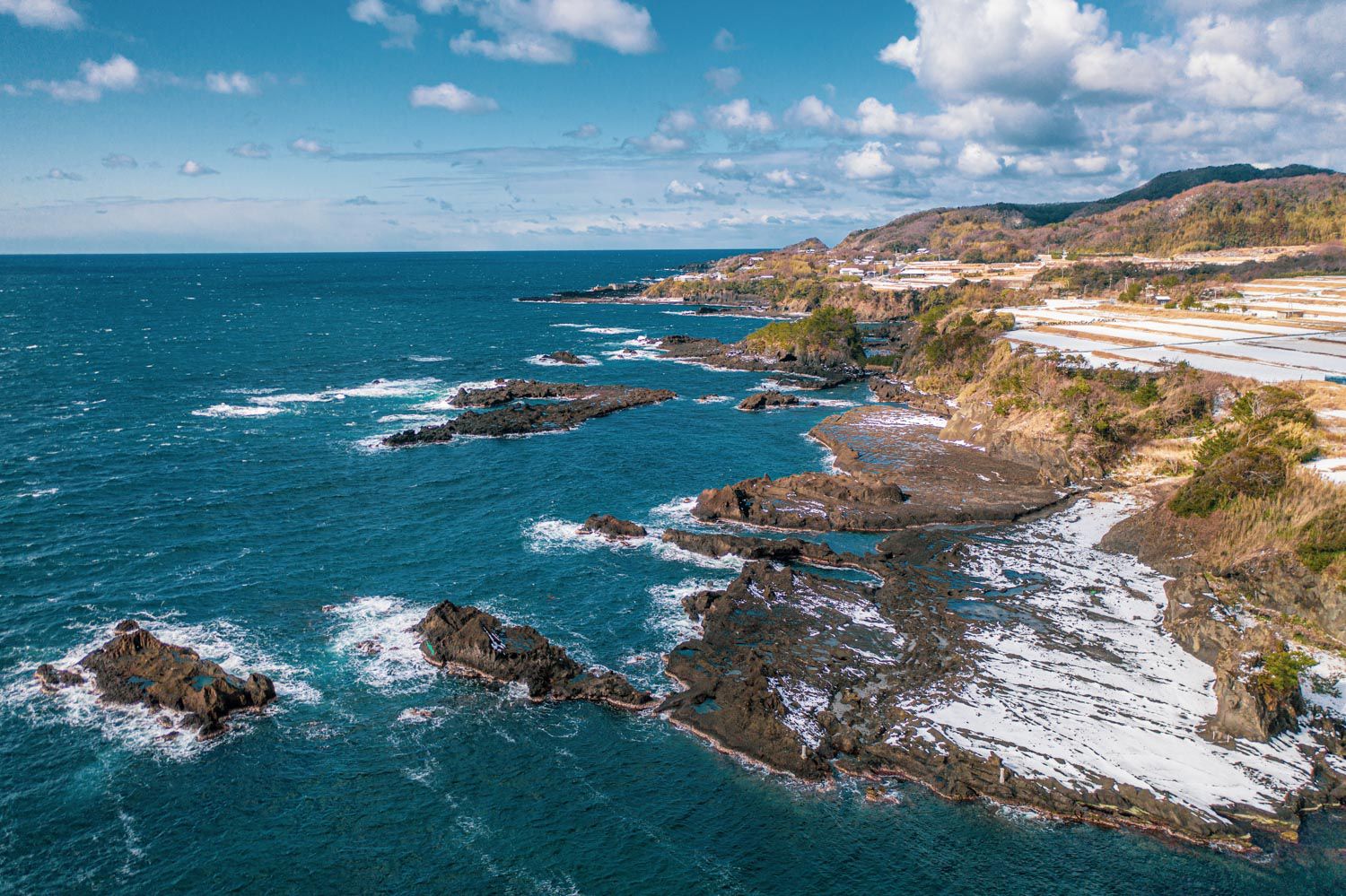
When you’re not learning about the distinct history of the island, you’re going to want to soak up the beauty of the destination’s shorelines, unique rock formations and thick forests. And as with Hakone, Sado Island is also home to many natural hot springs. Why not spend the day checking these out too? It’s definitely one of the most popular things to do on the island.
One of the biggest attractions on the island is the Earth Celebration . Held each August, the celebration brings thousands of people together to listen to music performed by the Kodo taiko group. Along with good music, you’ll also find a number of fascinating workshops at the festival. Attend a traditional taiko dancing show, or beat your hands at the taiko drumming circle.
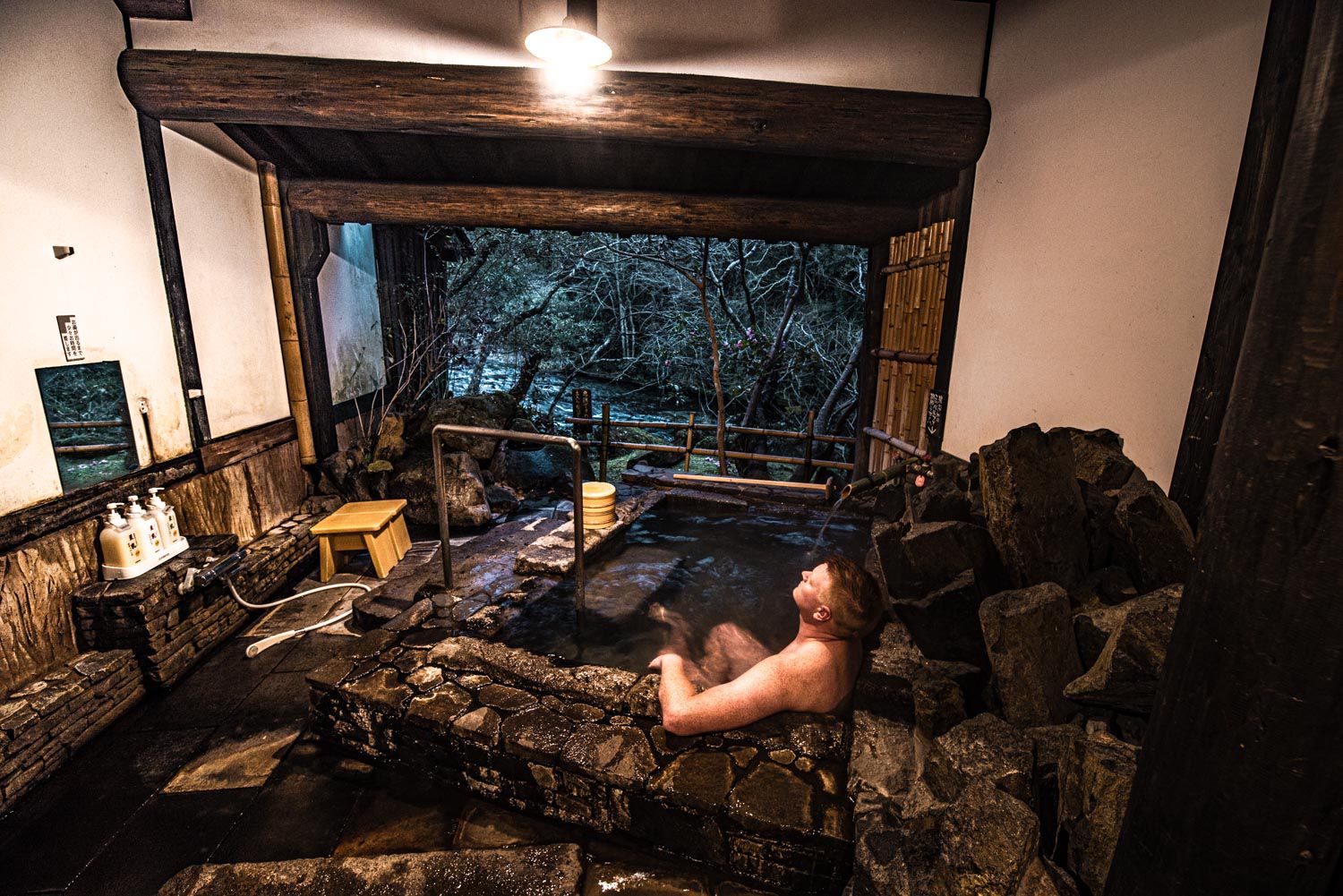
3) Oita City
The hidden city of Oita was once the gateway to trading with the west. As a result, modern day Oita has a distinct mix of many religions and ancient artifacts from Europe. Because of this connection to Europe, many of the Oitan people converted to Christianity, before Japan prohibited the religion which caused many Christians to go into hiding.
It’s important to have an understanding of the history of Oita, because this change had a powerful ongoing effect on the city’s livelihood and culture. Art and sculptures of Europe pepper the streets and can be found hidden around the city. Many of the standout works are on display at the Oita Art Museum, and are also showcased at the Asakura Fumio Memorial Park.
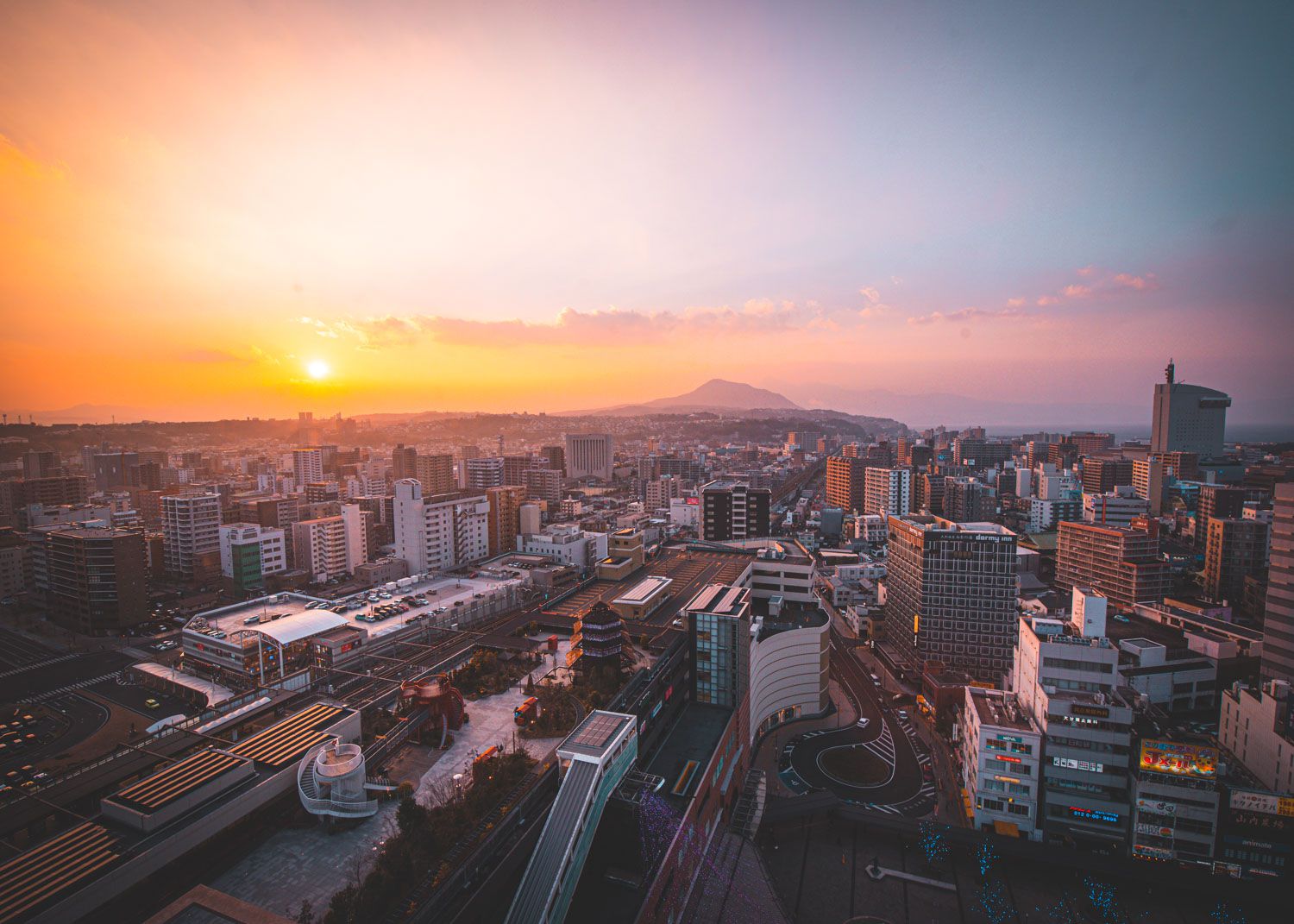
Peruse the scenic streets and enjoy the town’s idyllic beauty, while the surrounding mountains tower over the city center. A trip to this city isn’t complete without trying some of the Oita Prefecture’s famous fried chicken. Grab a dish at almost any Oita restaurant and your belly will thank you!
Before you leave, marvel at the beauty of Mount Takasakiyama, and visit the wild snow monkeys in the monkey park. Here, you can watch the cheeky inhabitants play around and dance in the sun. You’re welcome to feed them too, which can be fun if you’re traveling with the family.
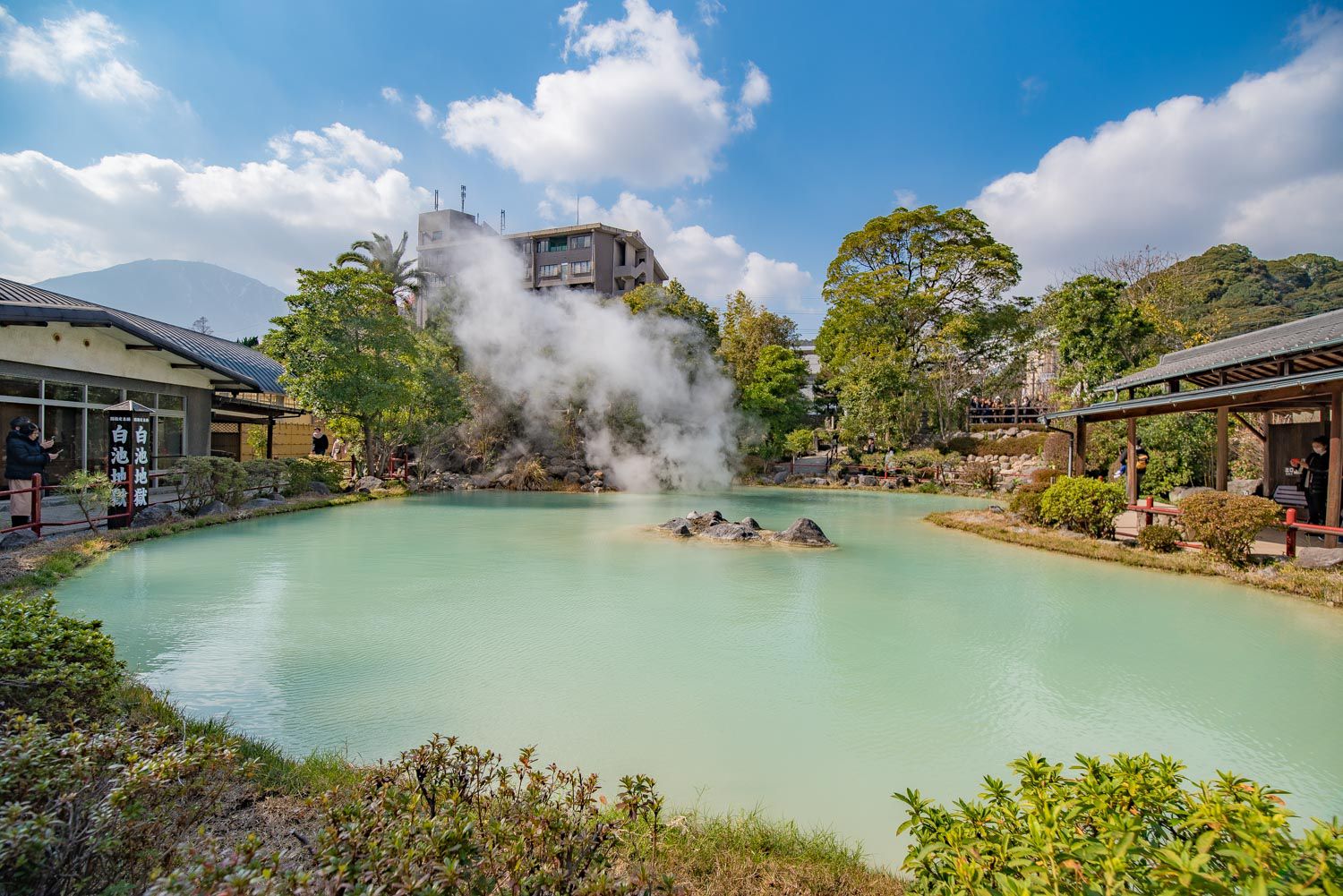
4) Kanazawa
Great museums scatter the green city of Kanazawa, while leafy gardens offer the chance to relax outdoors and appreciate the sunshine. Beautifully preserved neighborhoods, regal castles and charming Japanese markets are some of the most popular things to do in the area.
In the heart of Kanazawa, you’ll come across one of the best gardens in Japan. Kenroku-en Garden is a tempting destination for contemplative walks wandering around the wide open spaces.
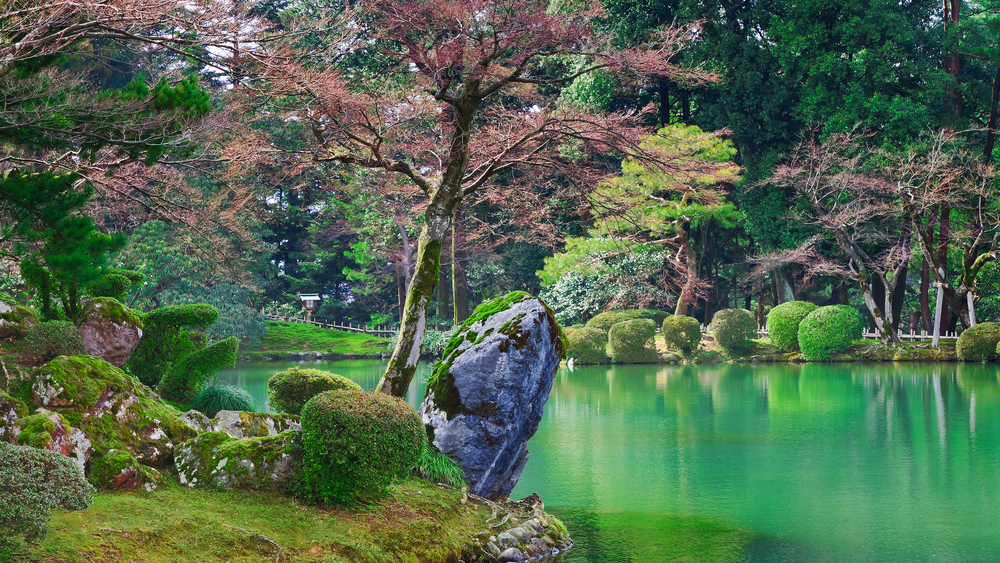
As well as offering the chance to explore some of the idyllic gardens of the city, Kanazawa boasts some pretty impressive Japanese architecture. Ninjadera Temple is an architectural delight, with its secret mezzanine floors, deceptive defense systems and classic Japanese finishes.
The area of Kanazawa also houses a Samurai District, where ancient samurai used to reside with their families. These warriors were skilled in stealth tactics, using bows and arrows along with classic ninja swords.
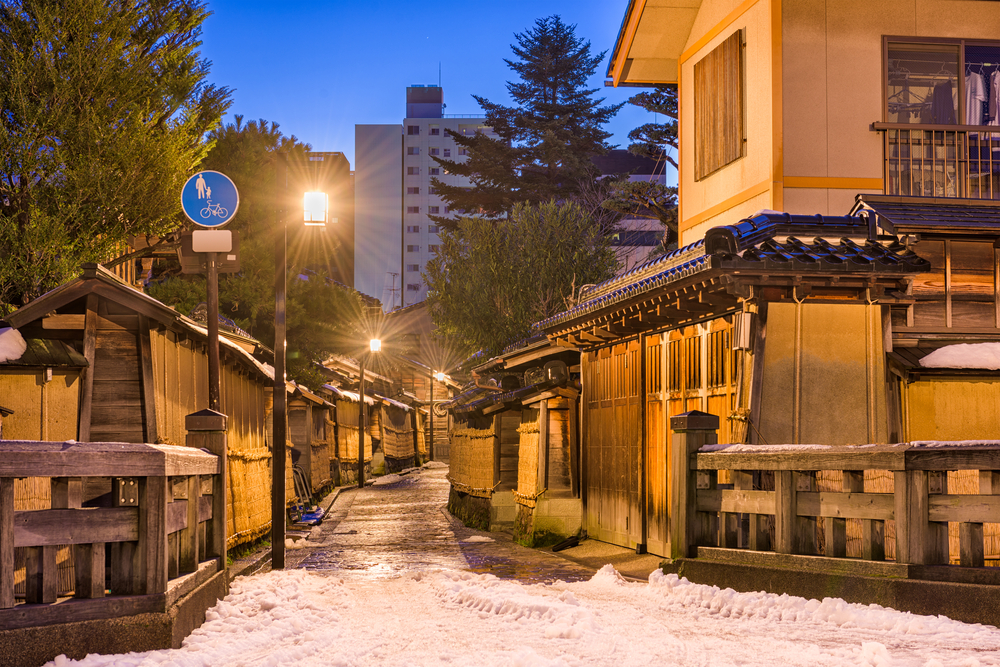
The market areas of Kanazawa are brimming with local delicacies, and you’ll find a plethora of seafood stalls lining the streets. One of the most popular dishes in the neighborhood is donburi, a steaming bowl of rice topped with a variety of different sashimi.
The markets here tend to be less populated with tourists and more enjoyable and laid back than the commercial ones you’ll sometimes find in other parts of Japan. They’re packed with locals selling freshly caught fish and locally-grown fruit and vegetables, some varieties of which you may not have even heard of.
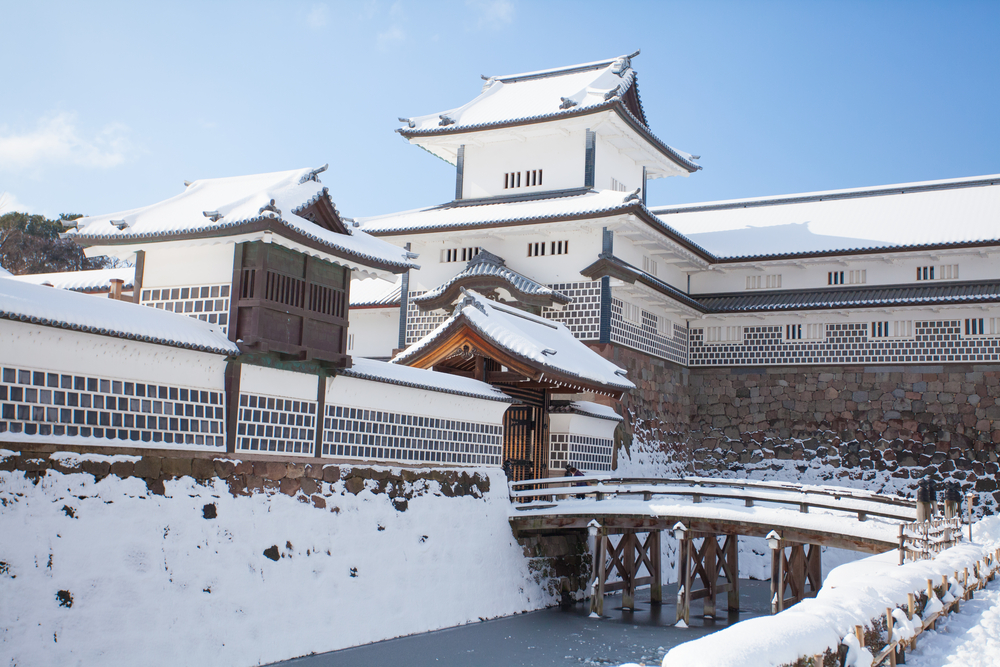
5) Nanto
Nanto can be found in the southwestern part of the Toyama region, a perfectly hidden part of Japan where an ancient landscape of historic settlement villages lies. These Gokayama Suganuma villages and Gokayama Ainokura villages – with their steep thatched roofs – have been deemed natural heritage sites. And rightfully so.
While you’re in the Nanto area, you should definitely hit up the Gokayama Folk Museum, to get a real feel for the unique lifestyles of these tribes. Check out the ancient artifacts and unusual tools that were once used, and learn about the everyday life and unique architecture of these mountain villages.
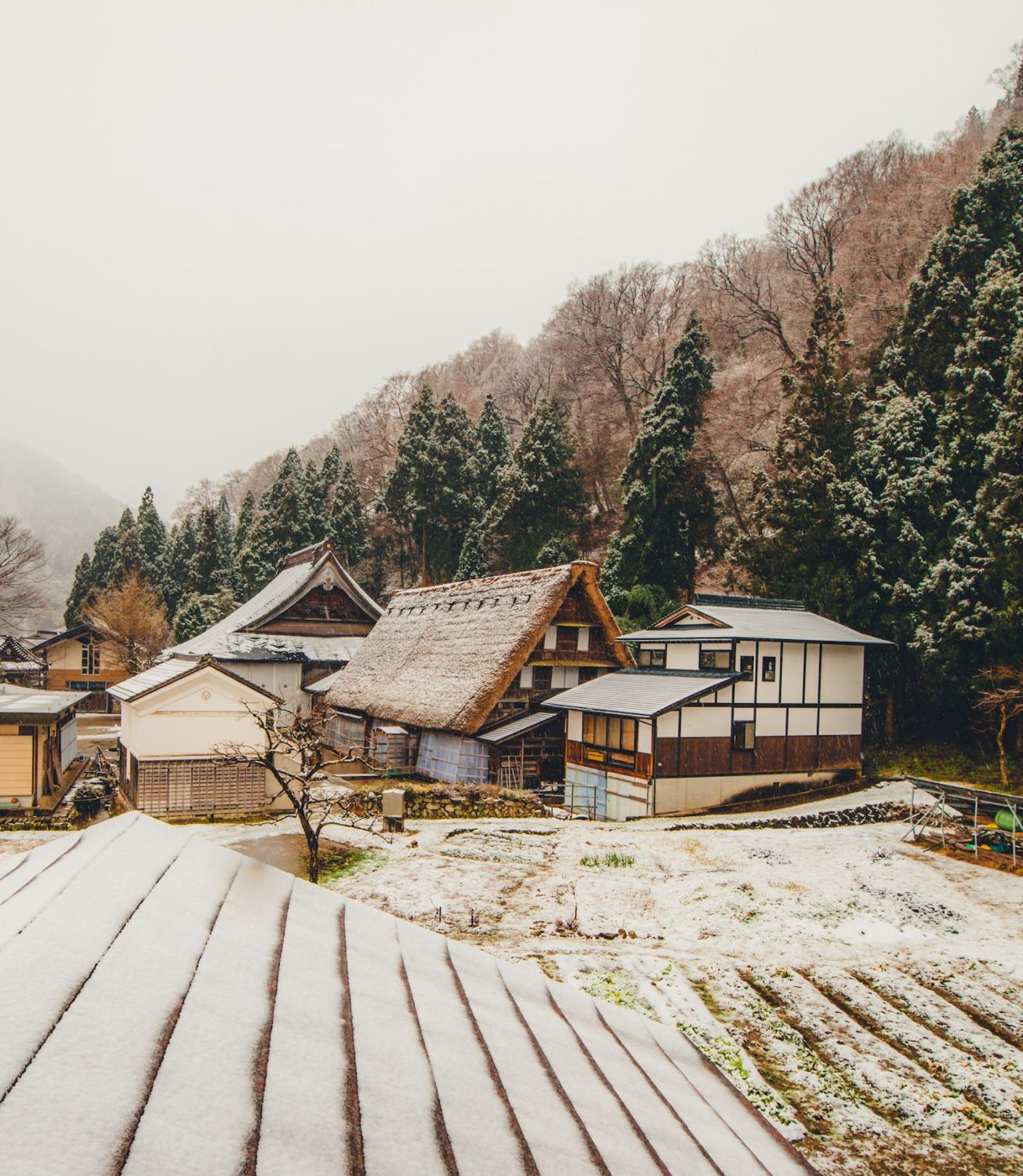
Although the villages are the main attractions here, the area isn’t short of impressive temples. One of the most famous temples in the region is the Zuisen-ji Temple. The famous inami carvings originated here, a rich tradition of handcrafted woodwork that you haven’t seen anywhere else in the world..
These inami carvings add to the already unique designs of many Japanese structures. With their intricate designs and elaborate expressions, they can be found along many building exteriors and interiors. The movement that’s created on the wood has the power to bring these inanimate objects back to life.
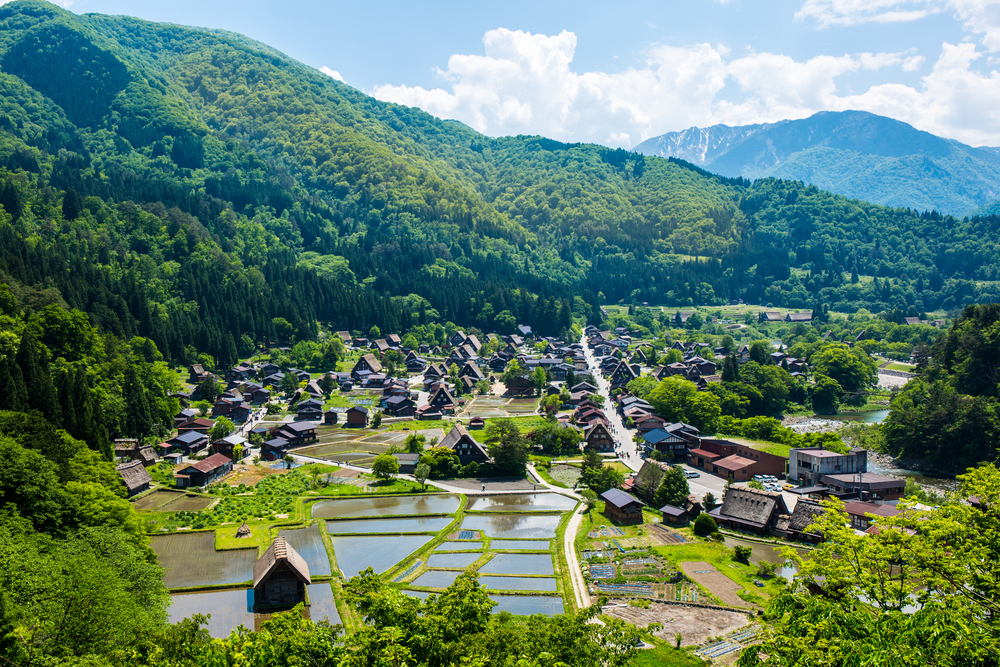
Another thing that Nanto is well-known for is Japanese paper making. And given that it’s probably something you don’t get to see every day, you should try to attend a paper making workshop. These papers are used to make fans, bookmarks, and other handcrafts, so why not make your own and bring back a totally unique souvenir from your travels?
Finally, if you’ve had enough history for one day, Nanto also has some insanely beautiful forests to explore. The forests are hidden from most tourists so they are generally not busy, and will give you the chance to enjoy some calm and contemplation.
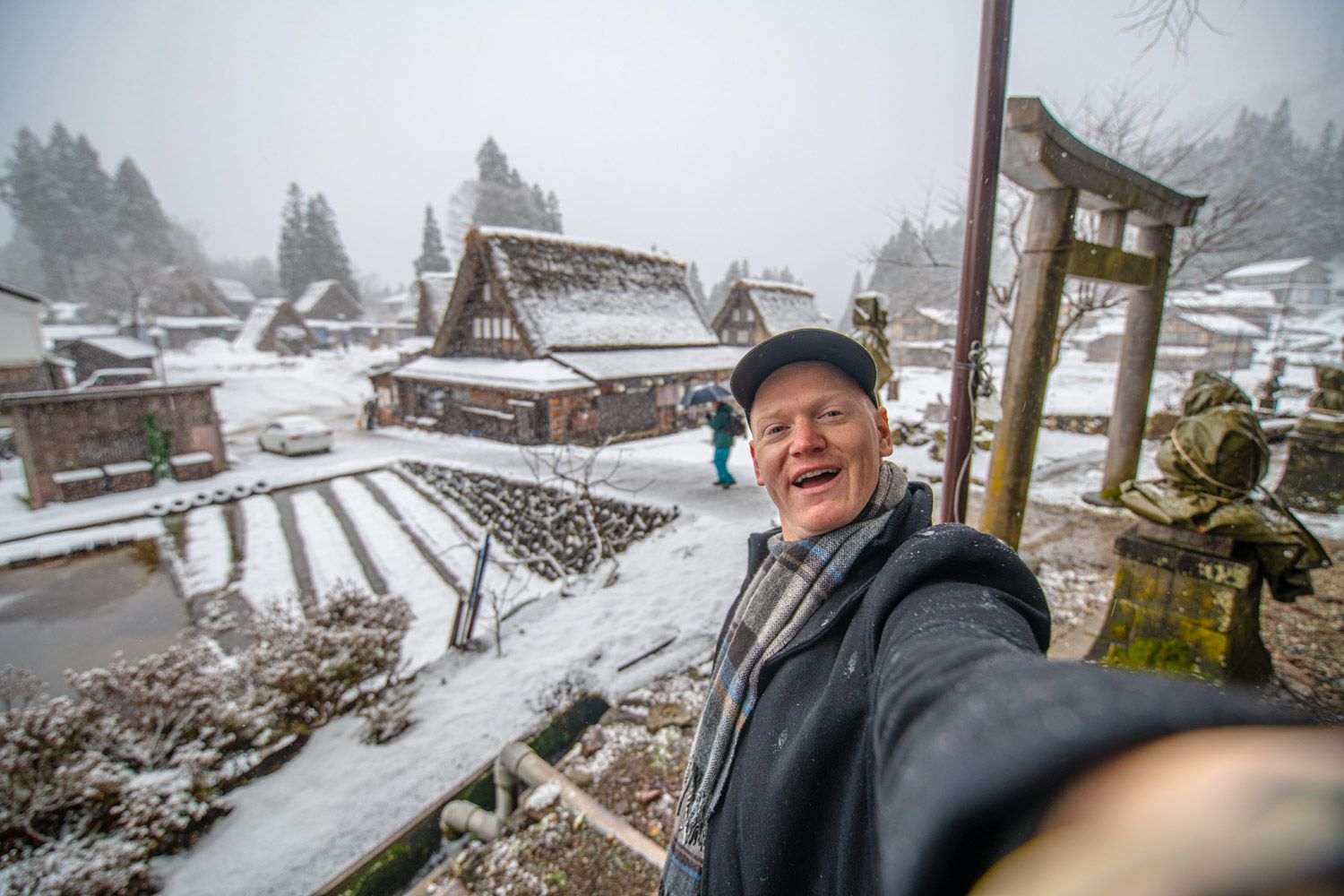
Don’t miss out on the opportunity to visit one of Japan’s most loved hot spring towns, Hita. The town is situated along the Mikuma River and is a totally zenned out, peaceful oasis. Along the banks of the town’s rivers, natural hot springs rich in minerals brim with endless health benefits. Rent out some traditional geta, Japanese sandals, and a yukata – a Japanese kimono – and soak in all the goodness these natural wonders boast.
Unchanged by time, the historic streets of Hita are still home to stores that have had their doors open for generations. They must be doing something right, because Hita is actually home to the oldest merchant houses in the whole of Japan, which date back to the 17th century.
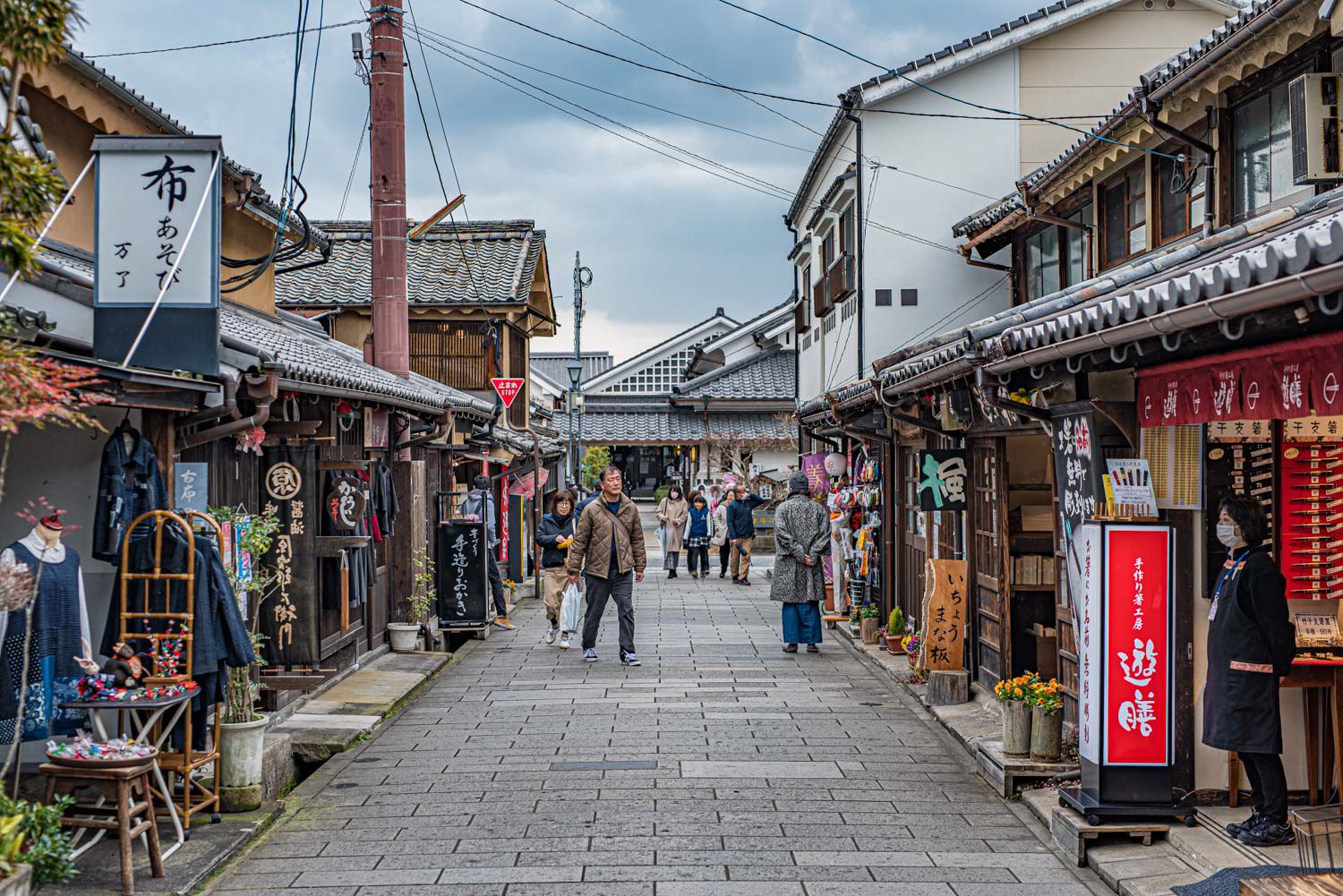
And do you know what else they’re doing right? Brewing incredible iichiko shochu – a native spirit in Japan that is made from barley malt. The white spirit has an incredibly rich and robust flavor, but its surprisingly smooth and easy to drink. Every batch is different, and it’s the luck of the draw whether you will have a stronger finish or a more subdued flavor. Iichiko shochu is made with natural spring water sourced from volcanic rock, and it’s not often you get to taste this quality or style of alcohol. The end results are believed to be the ultimate harmony between science and nature.
To learn about the fascinating production of iichiko shochu, you should head to the Iichiko Hita Distillery . A trip to a brewery is always fun, especially in this part of the world. Tour around the grounds of the distillery and discover the beer-making process, and cap off the unique experience by sampling some of their amazing creations.
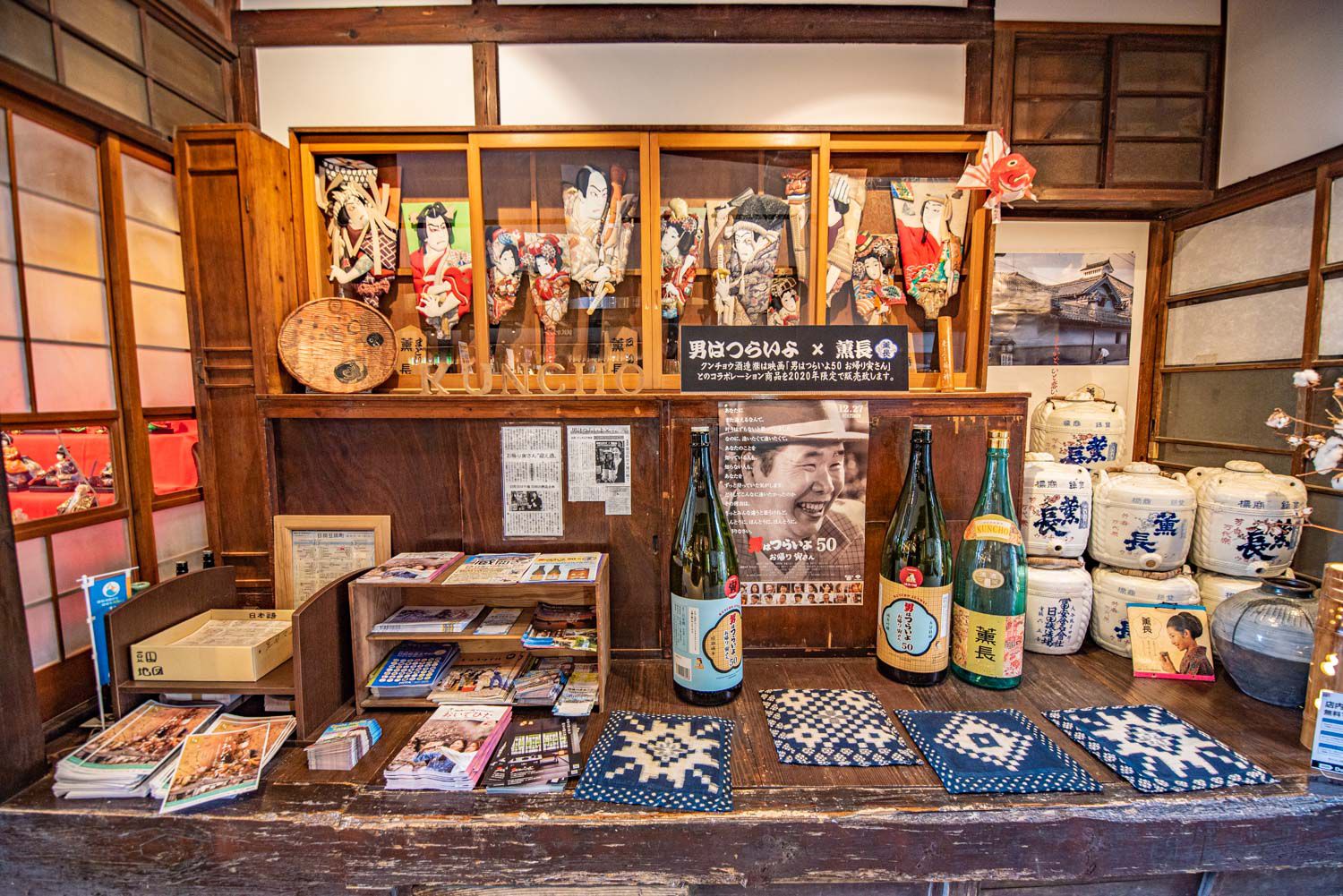
Fukuoka is one of the busier cities in Japan. In fact, it’s one of the ten busiest cities in Japan. But don’t let the prospect of a frantic pace put you off. Instead of international travelers crowding the streets for photo ops, the city generally sees a higher rate of domestic travelers than foreign tourists.
The city is equipped with many modern amenities, yet you can still explore many historical sites and get lost in the land of temples and shrines. Spend your time here wandering through the city parks, tasting the astounding variety of noodles on offer, sightseeing in the city and checking out the Fukuoka Tower.
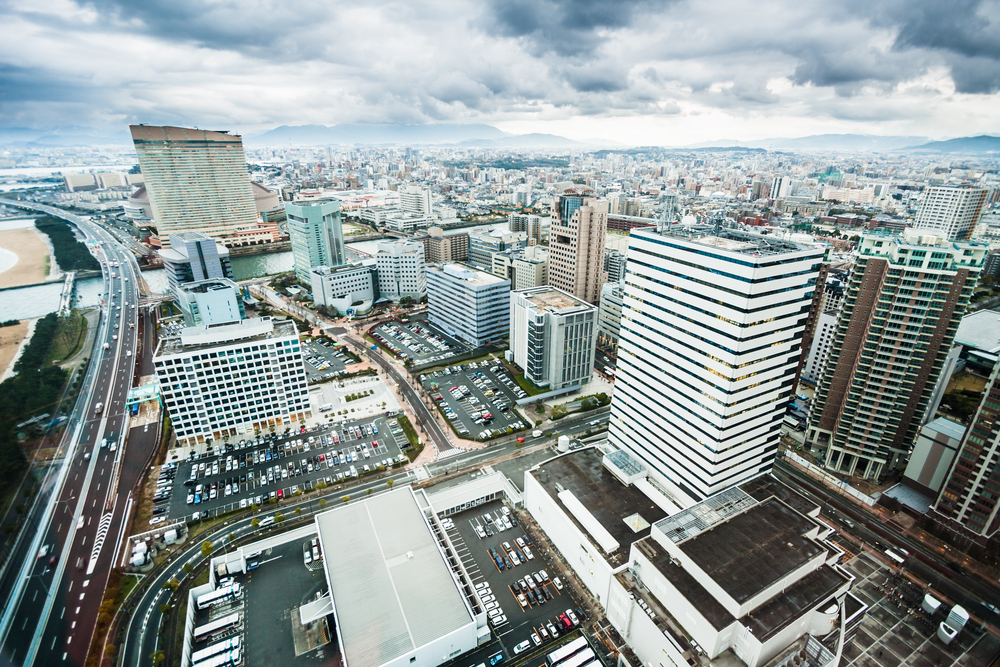
One of the biggest draws to visiting Fukuoka is that it’s right next to the sea. So when the weather is good, you can always spend some time enjoying the waterfront or visiting the Uminonakamichi Seaside Park, a floral oasis with a sunshine pool.
Because Fukuoka is right on the coast, it’s a great base for island hopping – Japan style. There are plenty of fun islands to visit nearby, like Nokonoshima, which is only a ten minute ferry ride away. While you’re galavanting about on the city’s islands, you can enjoy some great hiking and swimming along the coast. Thanks to stunning views across the water, sitting on the coastline can be an enjoyable activity in itself. Ohori Park sits right along the water and you’ll find a number of different benches that offer the best views of the sea.
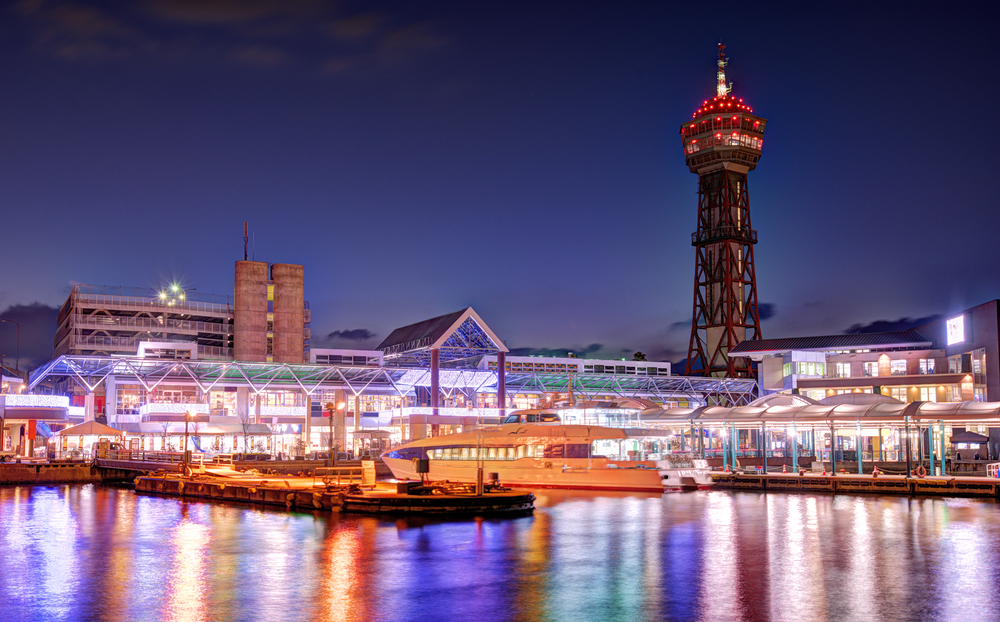
The newly established city of Sapporo is quite different to the rest of Japan. Because it was once a busy trading port, the development designs of Sapporo were heavily influenced by international traders. As a result, the city is built in line with the North American rectangular styled block streets.
Here, you can enjoy the usual perks of modern cities, while also experiencing some more authentic Japanese attractions in town. Beer lovers will be happy to know that Japan has a reputation for its exceptional brews. And Sapporo is the best place to get your hands on a cold one.
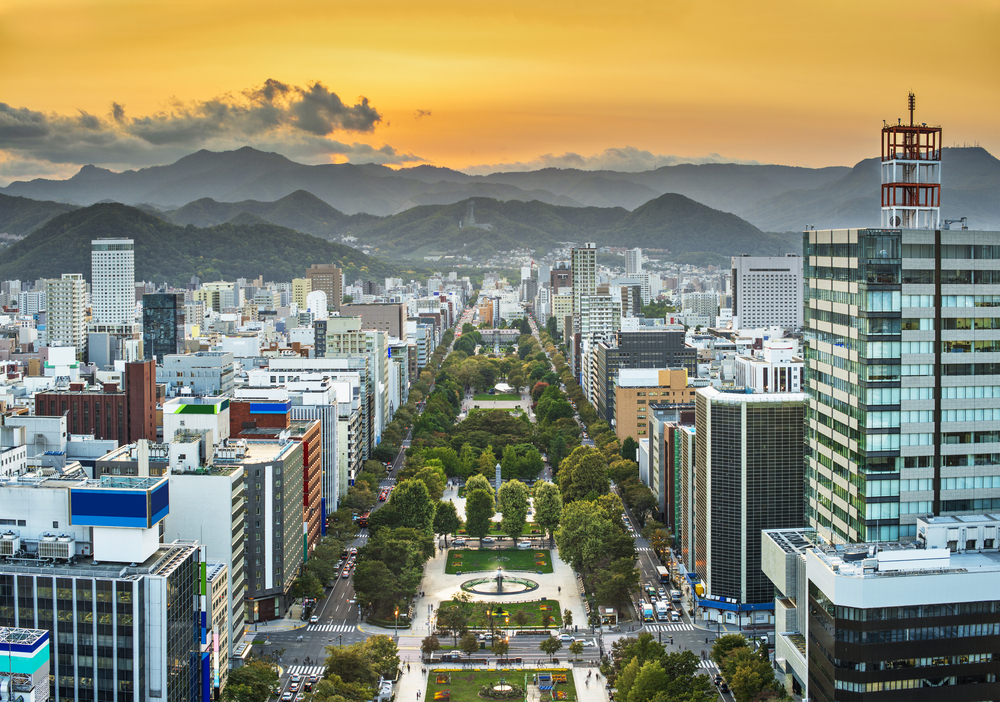
And here’s a fun fact; it’s not the typical local saki that most Japanese are drinking. Two-thirds of the population’s alcohol consumers are beer drinkers. It’s clear that beer has found a loving home here.
The Sapporo Beer Museum is one of the top attractions in the city. The museum showcases the city’s most famous beers and beverages. A tour will educate you on the history of the iconic beer, while providing an introduction to their legendary beer-making process. The Sapporo Beer Garden is handily, next door to the museum, and one of the popular activities here is the all-you-can-drink beer challenge. If you dare…
Another good reason for visiting Sapporo is to attend the Sapporo Snow Festival. Each year massive snow sculptures are put on display for a week, transforming the city into a winter-inspired wonderland.
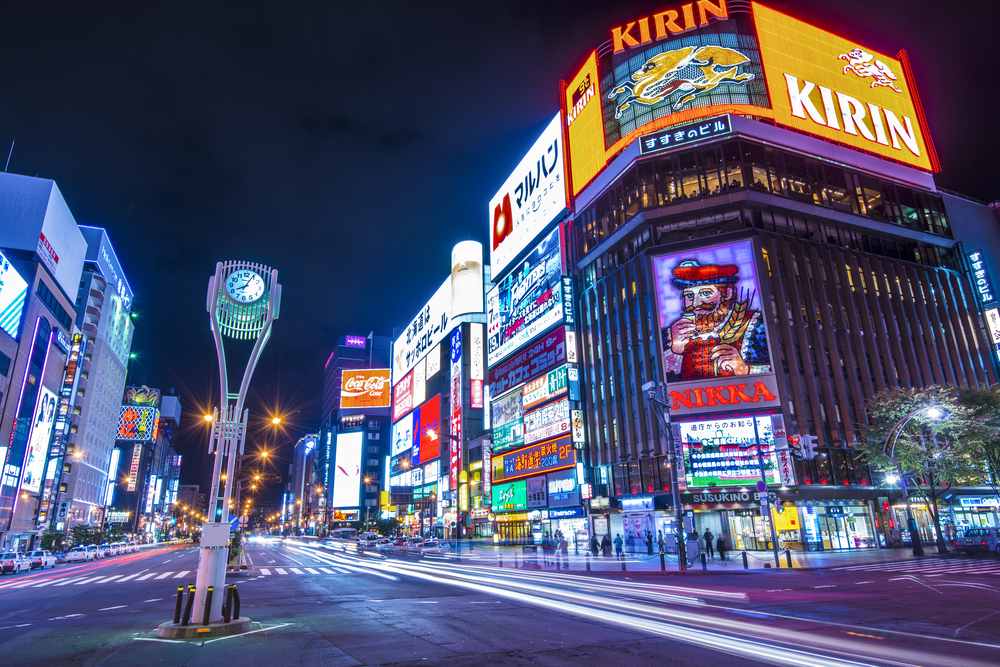
Sendai was the nearest city to the disastrous earthquake and tsunami that shook the country of Japan in 2011. The fallout left most of the coastal villages ruined, but thankfully failed to destroy the inner city.
Nowadays the city isn’t on the typical tourist radar, so visitors can get an accurate feel of what authentic Japanese life is like without the crowds. And for a city of this size, you can experience a little bit of everything that makes Japan special. Let loose and bar hop through the city’s lively nightlife districts and trendy, quirky bars.
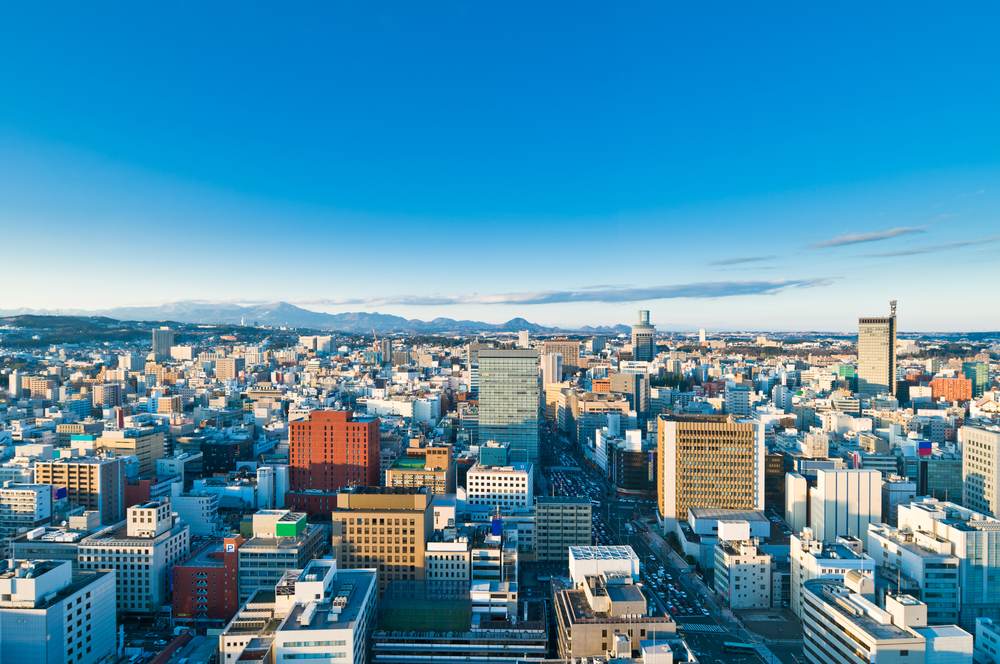
Downtown Sendai is probably the most exciting part of the city, and worth visiting if you’re a lover of urbanscapes. What makes it so special? It’s been nicknamed the “City Of Trees”, due to the fact that even indoor shopping malls are home to tall, green trees. It’s a special, earthy touch I wish I saw in more major cities.
To get the best view of the city, you’re going to want to have a pitstop at the SS 30 Observation Lounge. It’s actually an office building that offers such standout views that it opened its doors to the public. Head to the top to take in a sunset and witness the cityscape slowly start glittering as night falls.
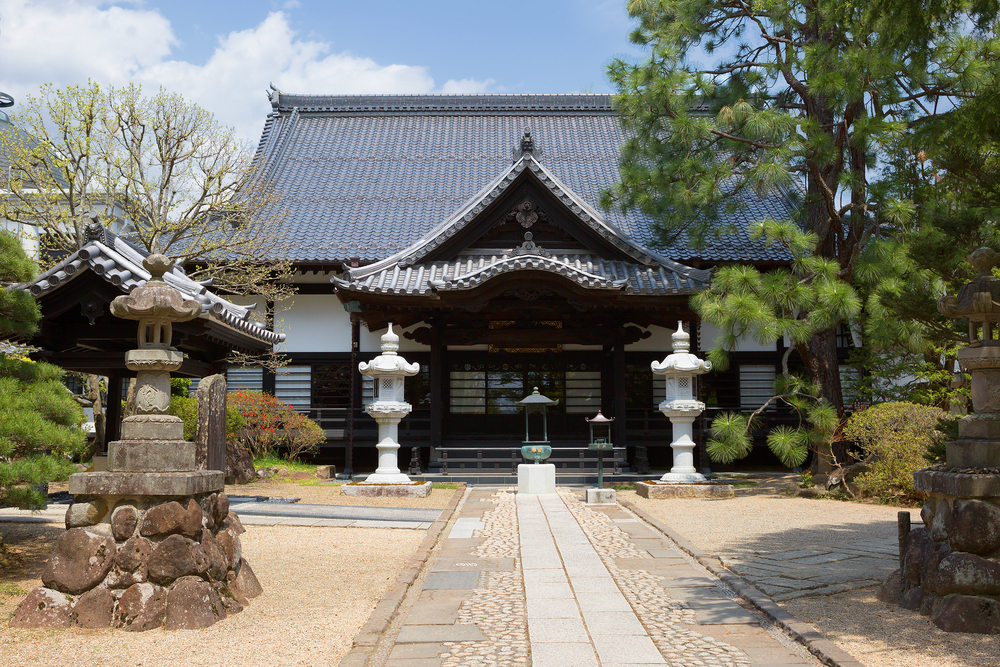
Niseko is a fantastic hotspot for adventure lovers. It’s regarded as one of the top skiing and snowboarding destinations in Japan, and is becoming even more popular with international alpine sports aficionados too.
What beats skiing through snow-covered forests that overlook a dormant volcano? Besides the incredible views for skiing, the snow in Niseko sets in perfect conditions. The snow has a low moisture content, leaving it crisp and ideal for downhill skiing. Don’t write this spot off during summer just yet, though. While it’s an impressive holiday destination for winter, it can be just as enjoyable during the warmer months. Boating in the lake, horseback riding through the forests and hiking in the mountains are just a few of the wild outdoor adventures Niseko offers.
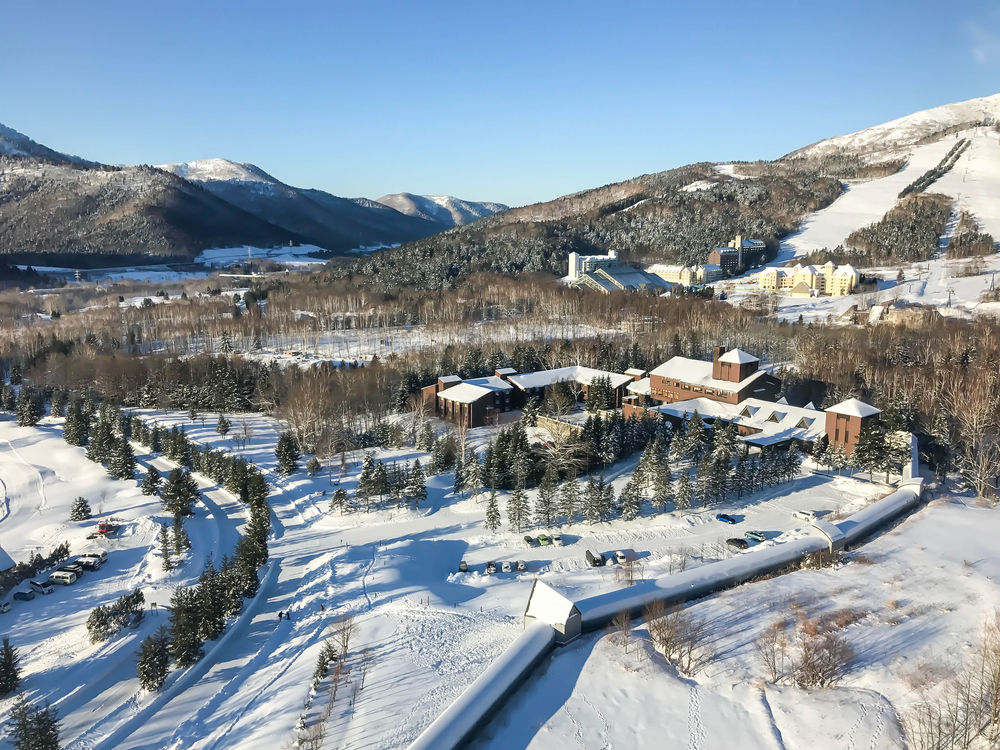
Niseko is also blessed with the beautiful Shiribetsu River that runs through the town. One way to spend a summer day is to get out on the water and do some river rafting. You can join a tour or simply rent a dinghy to yourself. It’s one of the best ways to take in all of the best Niseko scenery.
You can’t miss out on the incredible scenery Niseko has in spades. Rent a bike and whizz around the town, exploring the surrounding forests. All the roads are paved, so there’s no excuse for not jumping on this opportunity! And if you’re looking for something a little more off the beaten track, you can always rent a mountain bike and cycle to the secluded parts of the town that can’t be accessed by car. Who knows what gems you may stumble across.
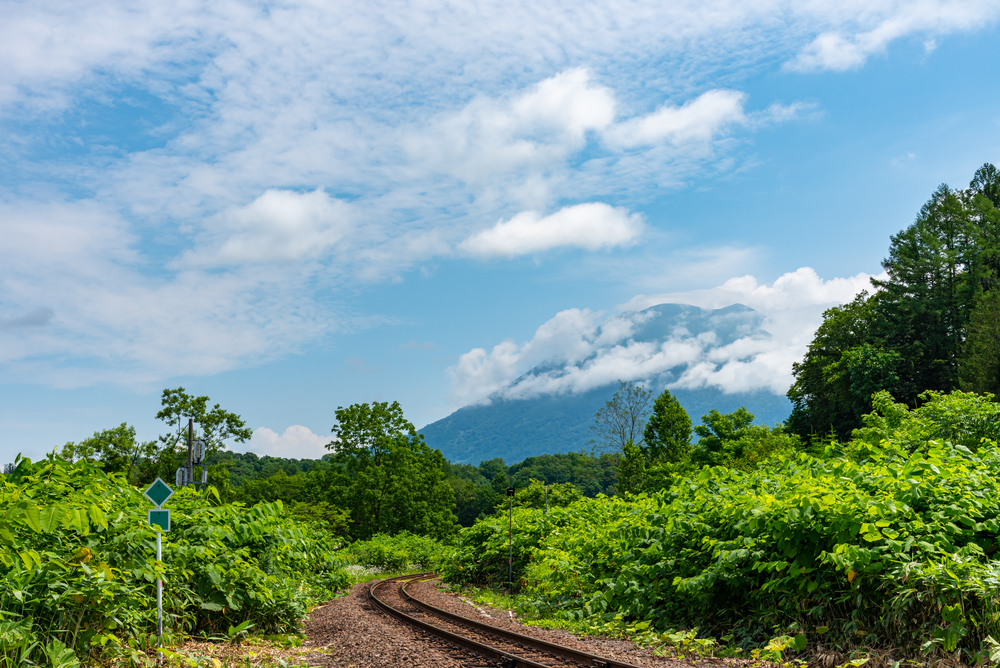
The picturesque town of Furano is known for its picturesque lavender fields that go for miles and miles. Behind the colorful fields of flowers, Mount Tokachi stands gloriously.
Furano is one of those great places you can visit regardless of the season. Traveling in winter or summer depends entirely on the traveler and the experience they want to have. Forget about the Alps of Europe or the Rocky Mountains. Furano is famed for its snow resorts and winter sports, and will give any other winter destination a run for its money. Come summertime, visitors enjoy the abundance of flower fields that seemingly overtake all of the surrounding villages. As well as the fragrant lavender fields, the lilies, poppies and sunflowers that blossom here make for beautiful photo backdrops too.
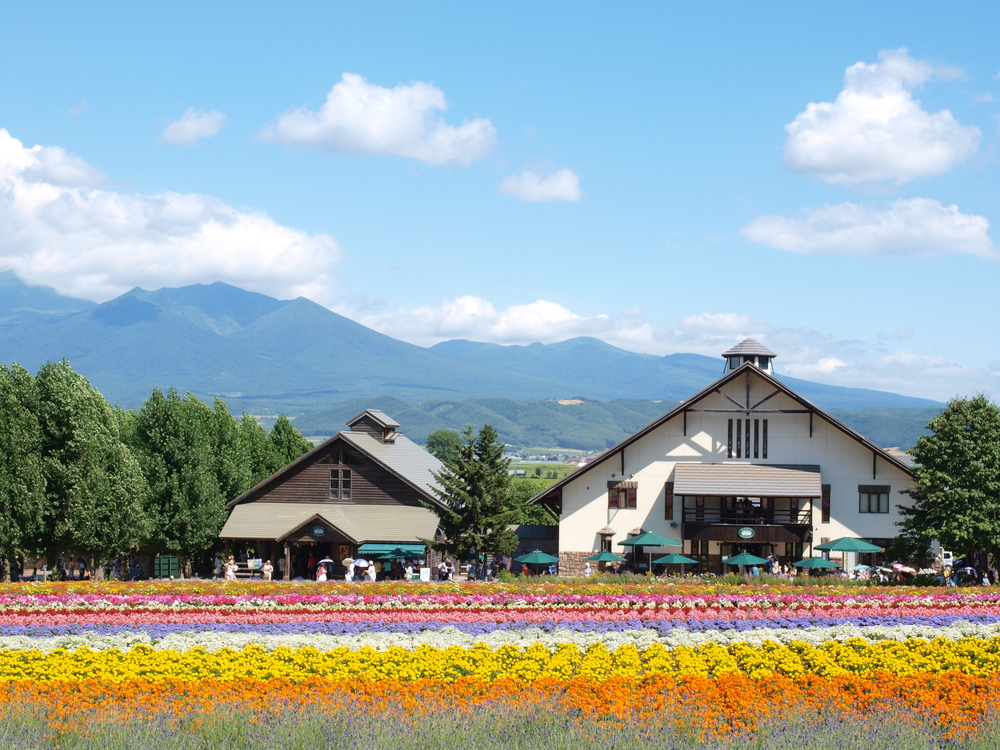
In recent years, Furano has established a number of different harvesting experiences visitors can partake in. Get your hands dirty and jump right into the farming process. Pluck some fresh vegetables or dig in the dirt for tasty potatoes.
There’s a ton of cool things you can get up to in this town, whether you’re keen on sightseeing, adventuring, eating or drinking. Go climbing in the mountains, visit the Furano cheese factory, cruise along the river and grab a scrumptious bowl of ramen. The options are endless.
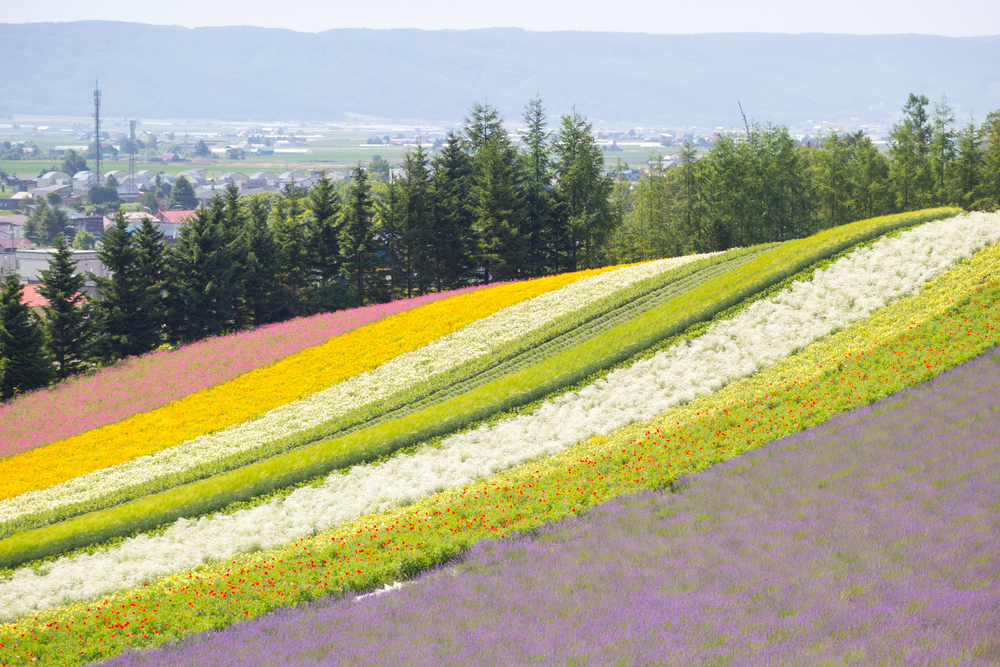
12) Yokohama
Once an old fishing village, Yokohama quickly grew into one of Japan’s busiest cities. And even though it’s a busy city with a lot to offer, it tends to get overlooked by travelers. Many tourists have their hearts set on exploring the bustling capital of Tokyo, but often forget that the surrounding areas offer just as enjoyable visitor experiences.
Japan’s largest Chinatown is located right in the center of Yokohama, and here you’ll find a variety of colorful stalls and streets bursting with local art and culture. What makes this place so tempting to explore is that it has literally hundreds of Chinese restaurants.
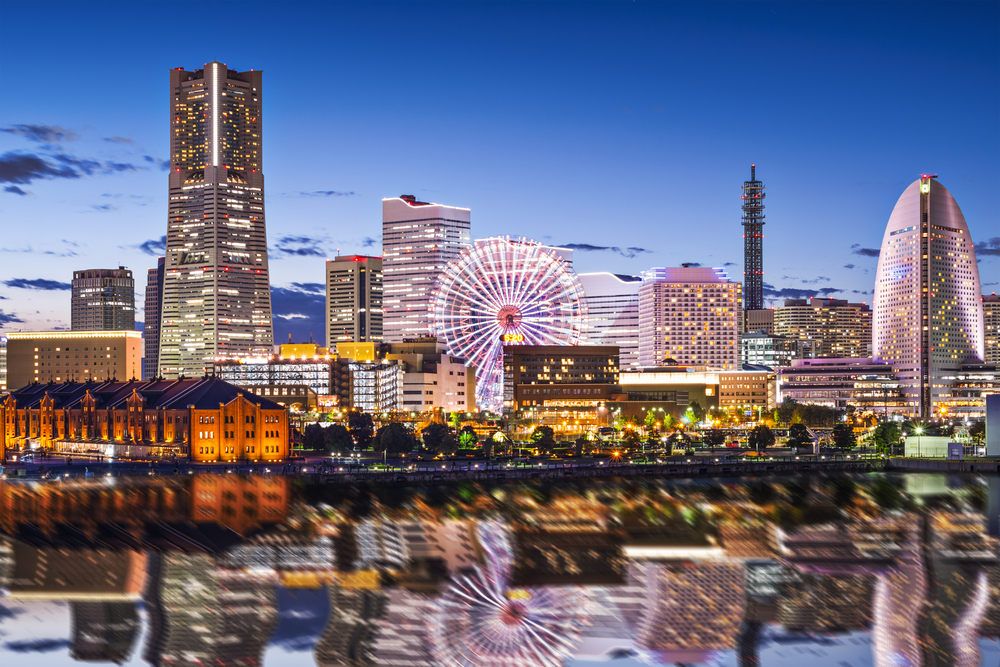
The main attraction in Chinatown is the cuisine. With the fusion of the two unique cultures, many of the Chinese dishes have a distinctly Japanese twist. Some of the most popular dishes here include ramen, of course, and manju – mouthwatering steamed buns.
Another popular spot in Yokohama is the Sankeien Garden, with its traditional Japanese landscape. The ponds and small rivers add a level of elegance and tranquility and the tea gardens only add to the magic.
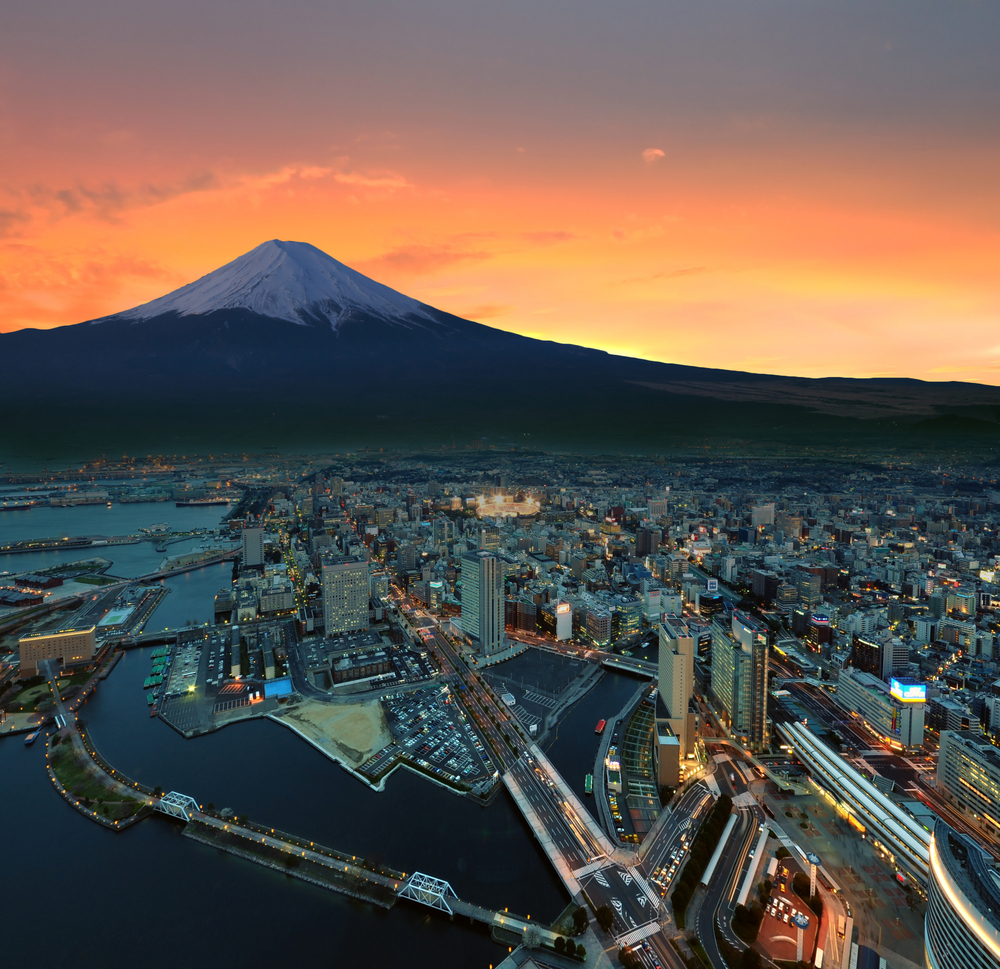
Nagoya is the hub for all things automobile-related. It’s the Japanese center for automotive production, and big names such as Honda, Toyota and Mitsubishi are churned out in this busy little city. For all the tech nerds out there, one of the best visitor experiences is to tour production sites and get a first-hand look at the most cutting edge technology. Often companies like Toyota will show off their latest developments in robotics, and how they’re planning on changing the future.
As well as their astounding ability to produce leading robotic and futuristic inventions, Nagoya is also rich in history and culture. The samurai and ninja culture once called Nagoya home, and their presence still has a subtle influence over the lifestyle here. Art, fashion and even dining here has a nostalgic quality that is unique to the city.
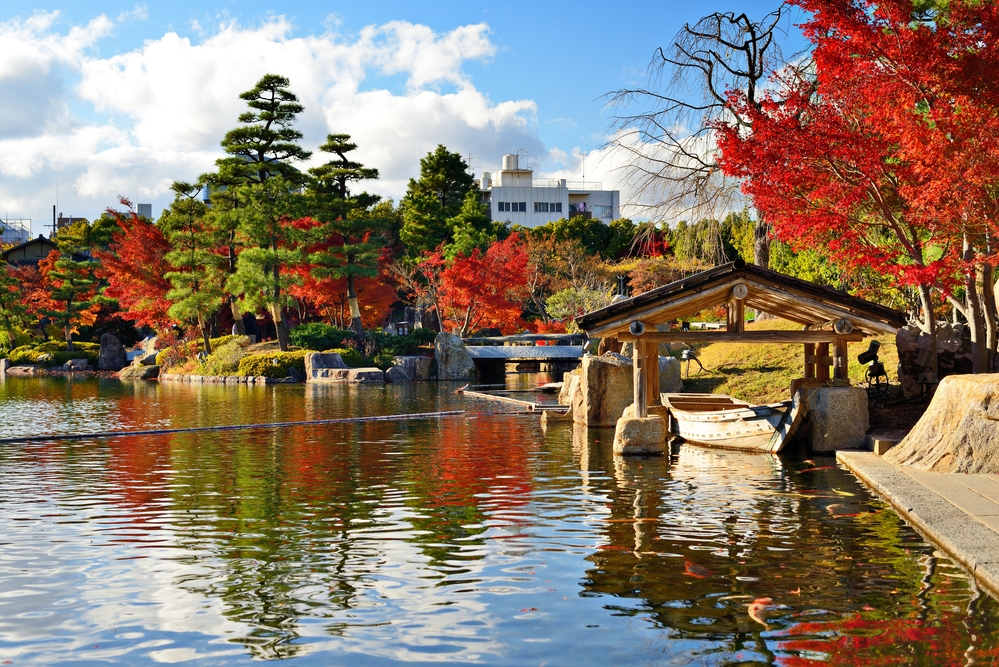
Built about 1900 years ago, the Atsuta-jingu Shrine is one of the most magical holy sites in the whole of Japan. Legend has it that the gods gifted the Japanese royal family with a grass cutting sword so that the whole town would flourish.
If you happen to be in town in October, don’t miss out on the Nagoya Matsuri Festival. There’s colorful puppet shows, dance recitals, music filling the air and streets overflowing with joy as the city celebrates their Matsuri heroes from the past.
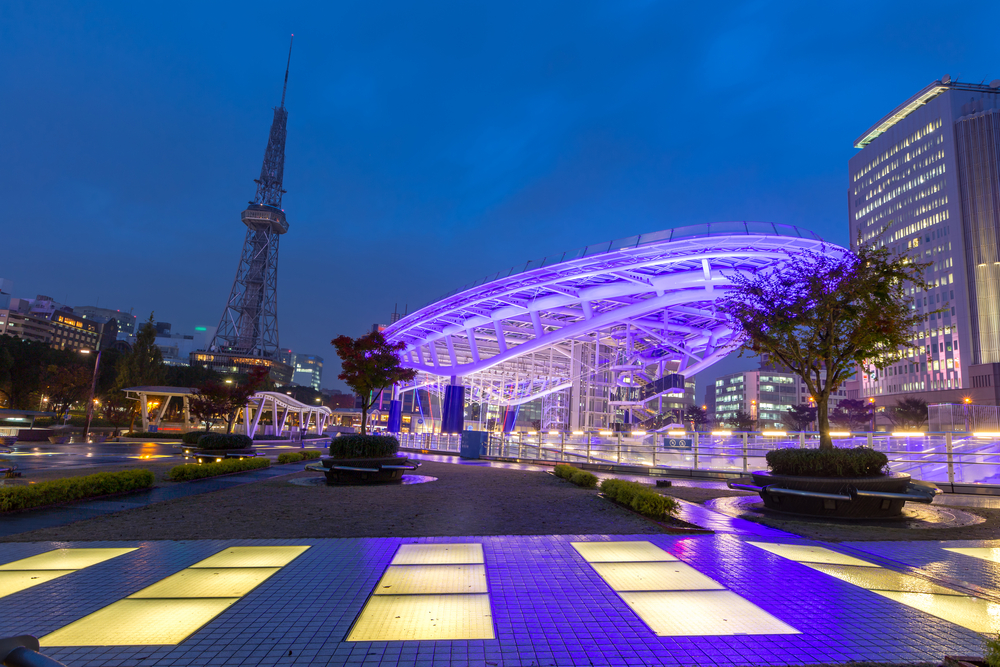
14) Hiroshima
The fact that the city of Hiroshima was once famously hit by an atomic bomb gives it a rather tragic and grim reputation. But these days, Hiroshima is so much more than that. In contrast to the devastating actions taken against them during WW2, the locals of Hiroshima are considered some of Japan’s kindest and friendliest. And to make the city’s transformation even more interesting is that it’s consistently voted one of the most liveable cities in the country.
Because of the city’s tragic past, a trip to the Hiroshima Peace Memorial is one of the most popular and moving things to do. The Prefectural Industrial Promotion Hall was the only structure standing after the bomb exploded. Now the decaying structure stands as a symbol for all those who lost their lives.
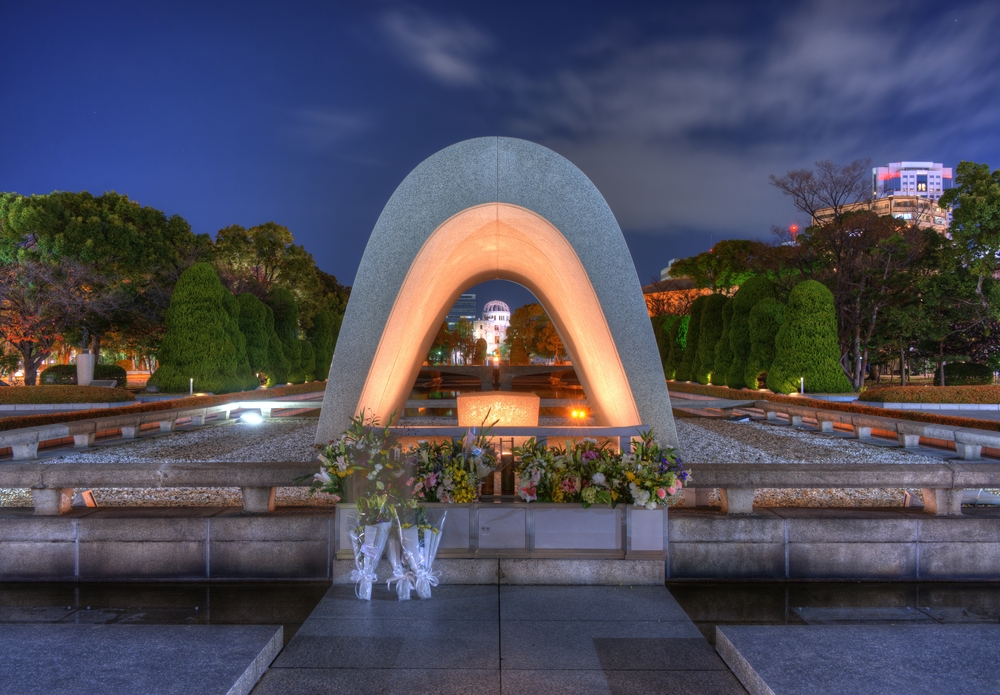
The Hiroshima Castle is another local visitor attraction, perched on a hilltop overlooking the mountains of the region. Surrounded by a moat, this five story castle was once the economical and physical center of the town. Travel to the top of the castle and you’ll be gifted with beautiful views of Hiroshima, with much of the city covered by a lush tree canopy.
Essential for energetic exploration is chowing down on some of Hiroshima’s excellent local food. While you’re here, you have to try the local delicacy, okonomiyaki. It’s kind of like a savory pancake, that contains a variety of eclectic ingredients. Have a go at tasting squid pancakes, and you might just fall in love with the unique meal.
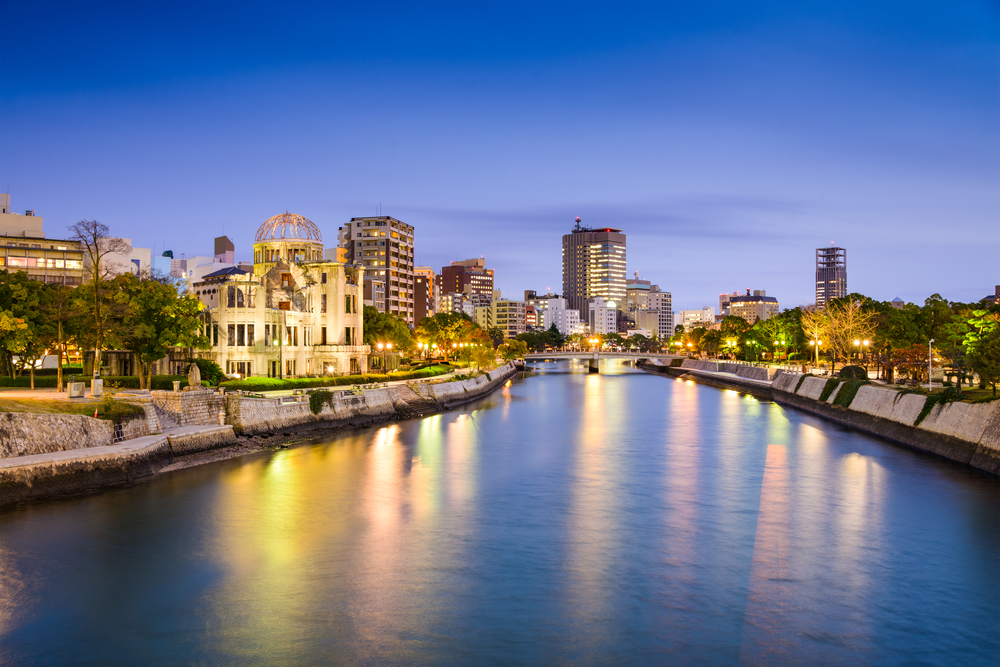
This quiet little town just north of the Kanto region is going to surprise you in the best possible way. Nikko is home to awe-inspiring landscapes, heritage sites and natural hot springs. The Buddhist monk, Saint Shodo, lived in this part of town and founded the temple and shrines that are located around Mount Futura. When you visit places like these, you open up your mind to the profound religions and philosophies that were founded in this pocket of the world.
At the entrance to Nikko’s major shrines and temples, you’ll spot the Shinkyo Bridge, an iconic symbol of the love and care that comes with the creation of Japanese artwork. You can’t help but feel like you’ve been transported back to a time when seekers wandered the grounds in the hope of finding enlightenment.
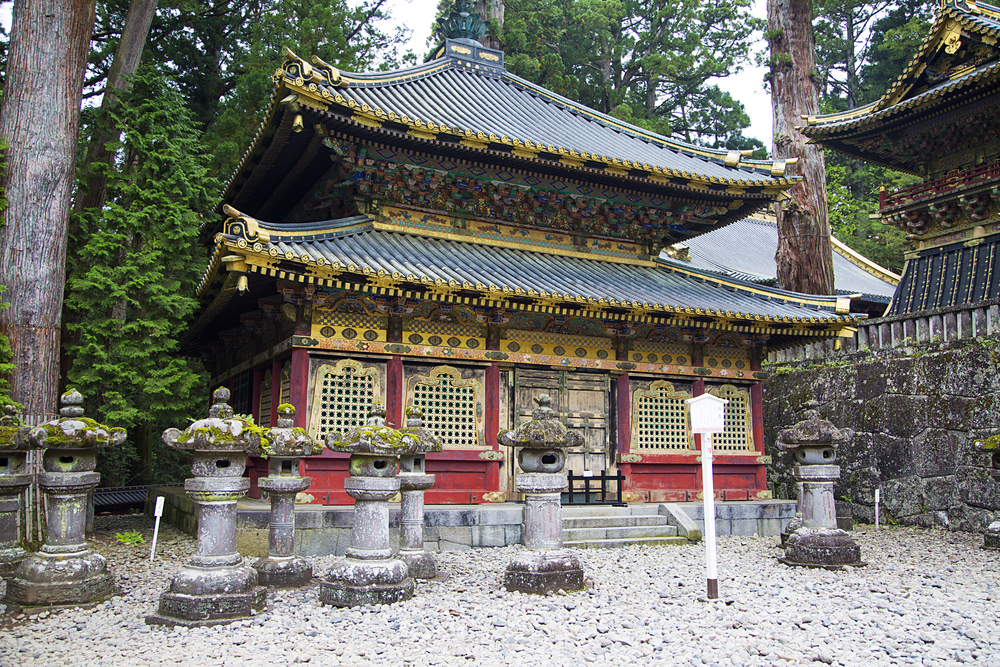
Legend has it that the bridge was created by the gods. Saint Shodo was in a bit of a dilemma when he couldn’t cross the waters because of the strong current that day. So the gods took it upon themselves to send two snakes to transform themselves as carriers to transport him across the water.
The natural landscape is just as impressive as the religious tales that accompany it. Kegon Falls is one of the many beautiful waterfalls in Nikko. From the deck, enjoy watching the green tree branches bent over the running river.
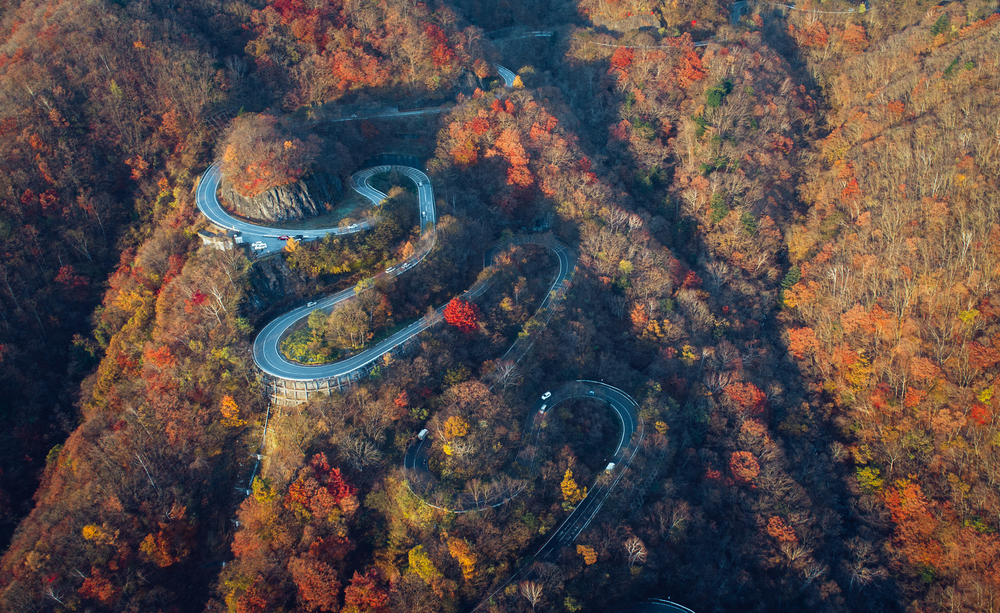
16) Takasaki
Takasaki is the perfect town to visit as a day trip from Tokyo. It’s famous for its daruma dolls, quirky little good luck charms that represent the famous monk Bodhidharma. Even though these lucky charms originated over 200 years ago, they still remain a prominent part of the Takasai heritage.
Catch a glimpse of the Takasakibyakue Daikannon statue. Given its impressive size – soaring about 50 meters high – it isn’t hard to miss. Kill two birds with one stone, as it also offers a chance to catch wicked views of the city below.
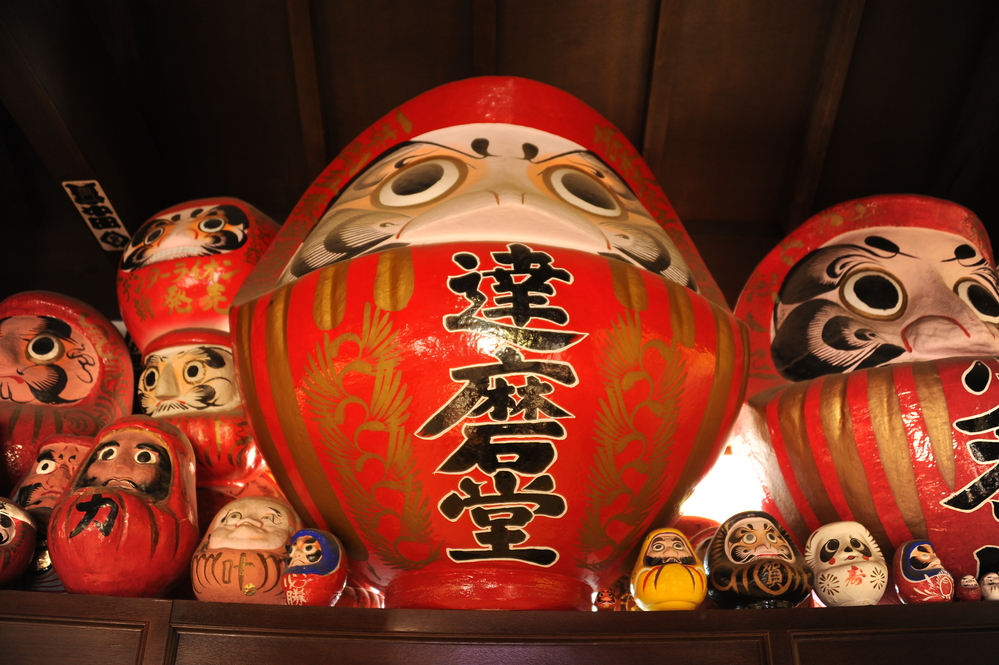
Strangely enough, Takasaki has been nicknamed “Pasta Town”, and that’s a pretty tough reputation to live up to. To uphold the name, the “King of Pasta” gourmet event is held each year, and because it’s a city heavily populated with Italian restaurants, competition is high.
Visiting the city during the sakura season is absolutely magical. From the end of March to early April, the town explodes in brilliant pink hues. It’s a beautiful time to sit underneath the trees with a picnic and simply take in the natural wonders of the city.
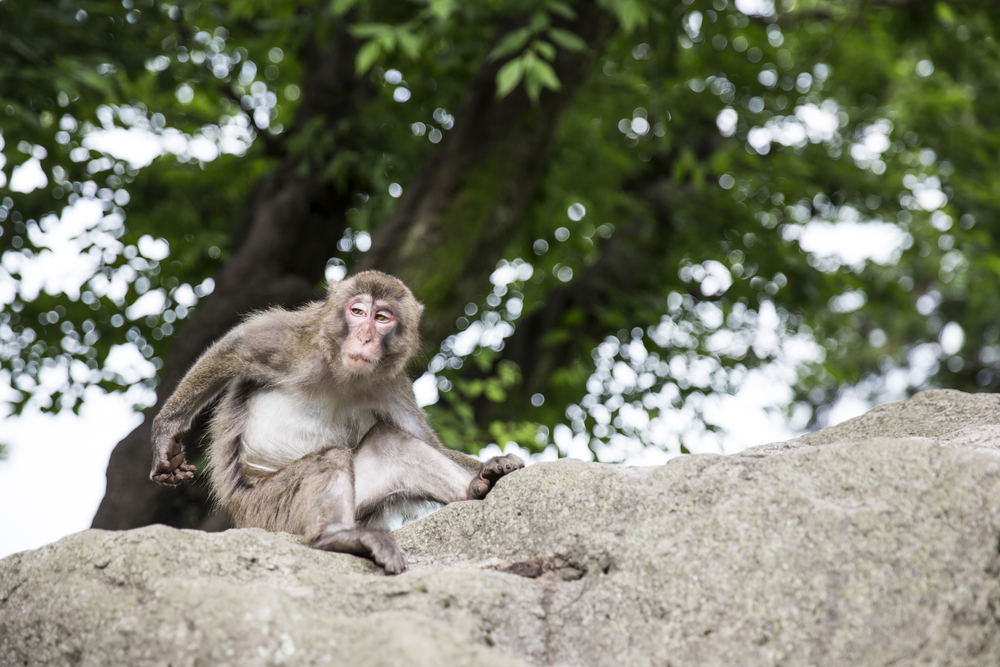
Off The Beaten Track Japan Summation
There’s no shortage of fantastic locations to explore across Japan. No matter what grabs your attention, be it snowy mountainscapes, coastal shores or lush green forests, you’re guaranteed to find an experience to match your own traveling spirit.
These one of a kind destinations will take you off the tourist trail and into the unknown, with endless surprises along the way. Whether it’s your first time in Japan, or you’re a seasoned traveler in these parts, I hope these destinations inspired you to explore beyond the main visitor hotspots.
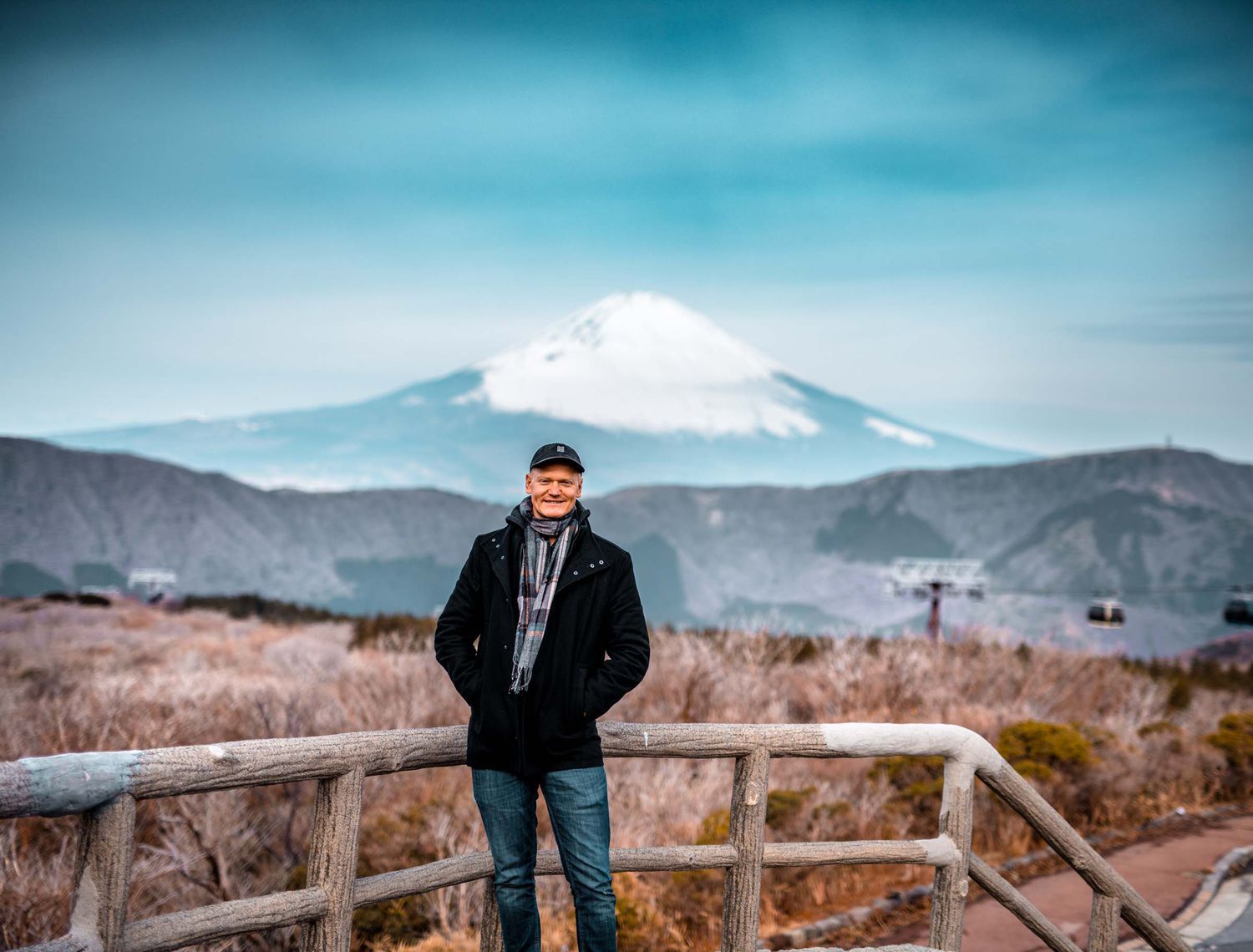
Thanks for reading about the best off the beaten track Japan locations!
Share this list with your travel crew.
8) Sapporo is a port? Wrong! Please check the map first. It is located inland.
Leave a Reply
Leave a reply cancel reply.
Your email address will not be published. Required fields are marked *
Save my name, email, and website in this browser for the next time I comment.
Photography Gear
Work With Me
Privacy Policy
Destinations
Music Festivals
Travel Itineraries
Inspiration
Travel Gifts
Southeast Asia

Hidden high amongst the tree-lined mountains of Wakayama Prefecture, the small town of Koyasan is almost the definition of off the beaten path Japan.
Arriving by public transport means taking a combination of train, cable car and local bus . Those who do make the trip to Koyasan will find one of the most beautiful towns in Japan.
Koyasan is home to countless temples and shrines , thanks to Kobo Daishi, the monk who founded a sect of Buddhism called Shingon-Buddhism in Koyasan in the 8th Century.
At the entrance of Koyasan stands a commanding vermillion gate that dates from the 11th century. Throughout the town are several ancient grand temples, including the sprawling Danjo-garan Temple complex and Kongobuji temple .
Koyasan has been a place of pilgrimage for centuries, and is part of the Kumano Kodo route, a collection of pilgrim trails that have been awarded UNESCO World Heritage status . At the far end of the town is the breathtaking Okunoin cemetery, where Kobo Daishi is buried, along with over 200,000 others .
→ See Also: What to See and Do in Koyasan, Japan’s Most Sacred Town
How to Get to Koyasan:
• By train : Koyasan is easiest to reach by train from Osaka’s Namba Station . From here take the Nankai-Koya line to Gokurakubashi Station , from where it’s a cable car ride to Koyasan Station and then a bus into the centre of the town. This journey is not covered by the Japan Rail Pass.
• The Koyasan World Heritage Ticket includes the cost of return trains to Koyasan from Namba Station, as well as the fare for the cable car and all local buses in Koyasan. More information on the Koyasan World Heritage ticket can be found here .
• By car : Koyasan is perhaps most easily reached by car. The drive to Koyasan takes in some of the most beautiful and remote areas of off the beaten path Japan.
We’d suggest hiring a car in Wakayama city or at Kansai International Airpor t. It’s about an hour’s drive to Koyasan from either location.
›› You can find the best prices on hire cars in Japan with Discover Cars here .
Wakayama City, Wakayama Prefecture

Back on the Sea of Japan, Tottori is most famous for its huge sweeping sand dunes .
Located on the edge of the city, Tottori’s sand dunes are a phenomenal sight, rising and sloping for over nine miles along the shoreline.
Next to the dunes is The Sand Museum , a unique exhibition of sand art that is not to be missed. Each year sand artists from all over the world come to the Sand Museum to create phenomenally adventurous and detailed works of art on a specific theme.
Though most people visit Tottori for its famous dunes, there’s more to enjoy here than just sand. Tottori is also famous for its hot spring waters . There are a number of hotels and ryokans with onsens located in the centre of the city.
Next to the ruins of Tottori castle is Jinpukaku Mansion , a grand Western-inspired home built for the head of the local Ikeda clan in 1907.
The house was used for the visit of Emperor Taisho whilst he was still prince during his tour of the region. Today, Jinpukaku Mansion is open to the public along with its stylish Japanese gardens .
How to Get to Tottori:
• By train : There are direct trains to Tottori Station from Kyoto and Okayama . These trains use tracks operated by private (non JR) train companies for part of the journey. Because of this Japan Rail Pass holders will need to pay an extra surcharge to use these trains. The additional fee is around 1,800¥ depending on the train.
• By air : There are direct daily flights between Tottori Airpor t and Tokyo’s Haneda Airport.
›› Find the best deals on flights to Tottori here .
Matsue, Shimane Prefecture

Okinawa, the southernmost prefecture of Japan, is a tropical paradise known for its rich Ryukyu culture , vibrant coral reefs, and poignant historical sites .
The islands offer a unique blend of Japanese and indigenous cultures, evident in their distinct architecture, music, and cuisine. Okinawa’s main island is home to the historic Shuri Castle, a UNESCO World Heritage site, and the Peace Memorial Park commemorates the Battle of Okinawa.
Beyond its cultural significance, Okinawa boasts stunning natural landscapes, from the pristine beaches of Miyako and Ishigaki islands to the lush forests of Iriomote Island, making it a premier destination for beach-goers, divers, and nature enthusiasts .
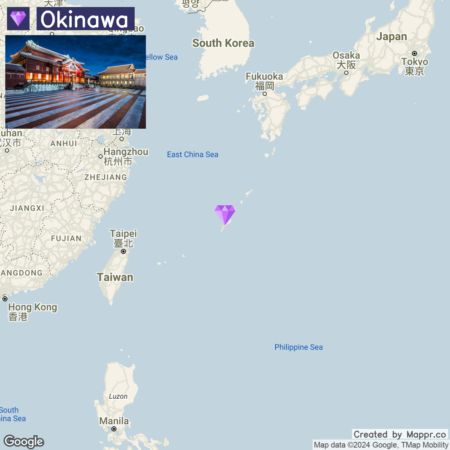
- ✈️ How to Get There : Okinawa is easily accessible by air. Naha Airport is the main gateway to the islands, offering flights from major cities in Japan and select international destinations.
- 🏨 Where to Stay : The Ritz-Carlton Okinawa , situated amidst the lush landscapes of Nago, offers a luxurious retreat with exquisite rooms. For those seeking a beachfront experience, the Halekulani Okinawa in Onna Village presents elegant accommodations with stunning sea views.
2. Kumano Kodo
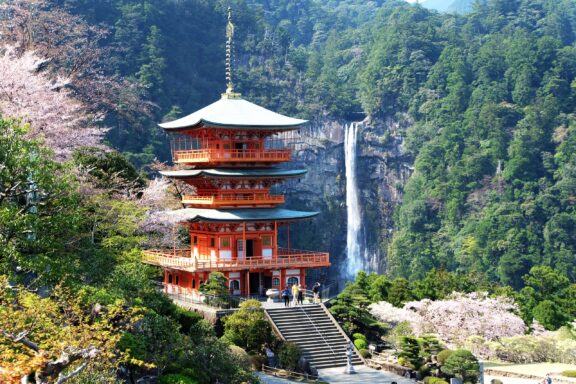
Tucked away in the verdant landscapes of the Kii Peninsula, the Kumano Kodo pilgrimage routes stand as a testament to Japan’s rich spiritual heritage.
This network of ancient trails, weaving through misty forests and rugged mountains, offers a journey back in time, inviting travelers to tread the same paths once walked by emperors and pilgrims alike .
The Kumano Kodo is not merely a hike; it’s a spiritual voyage that harmonizes the soul with nature, punctuated by the majestic Kumano Sanzan shrines at its culmination.
Along the way, the whispering streams, cascading waterfalls, and the overarching tranquility of the wilderness serve as constant companions.
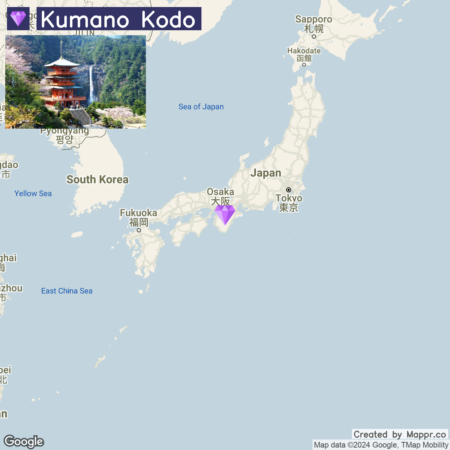
- ✈️ How to Get There : Embarking on the Kumano Kodo pilgrimage begins with a journey to Tanabe City via the JR West Railways from significant hubs like Osaka or Kyoto. From Tanabe, access to the trails can be facilitated by local buses, offering a gateway to this ancient spiritual realm.
- 🏨 Where to Stay : Nestled within the heart of this mystical landscape, the Kumano Kodo Nagano Guesthouse provides a serene retreat. It’s a place where the warmth of traditional hospitality merges with the tranquil beauty of the surrounding nature.
3. Kakunodate
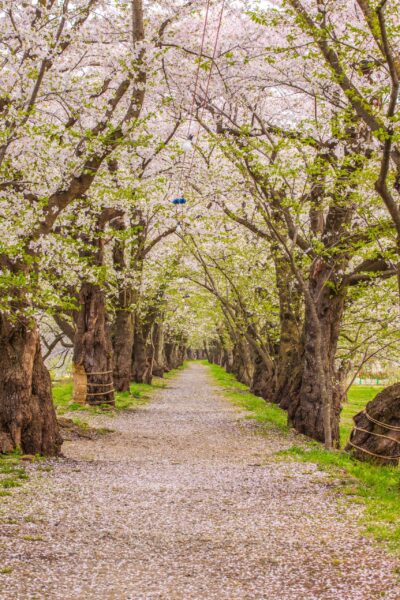
Kakunodate, known as the “Little Kyoto of Tohoku,” is a charming samurai district in Akita Prefecture, where time seems to stand still. This historic town is famed for its well-preserved samurai houses and gardens , offering a glimpse into Japan’s feudal past.
The weeping cherry trees lining the streets create a breathtaking spectacle in spring, making Kakunodate one of the best places in Japan to experience cherry blossom season. The town’s cultural heritage and serene atmosphere make it a must-visit for history buffs and nature lovers.
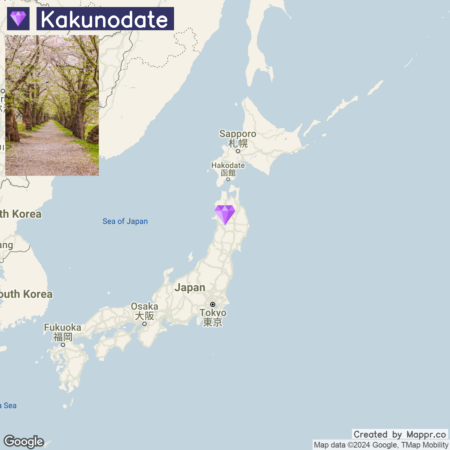
- ✈️ How to Get There : Kakunodate is accessible by train from Tokyo via the Akita Shinkansen, providing a direct and scenic route to this historical gem.
- 🏨 Where to Stay : The Aoni Sanso presents an immersive retreat into Japan’s serene natural beauty, nestled in the tranquil surroundings of Aomori Prefecture, and invites guests to experience the essence of traditional Japanese hospitality.
4. Matsushima, Miyagi
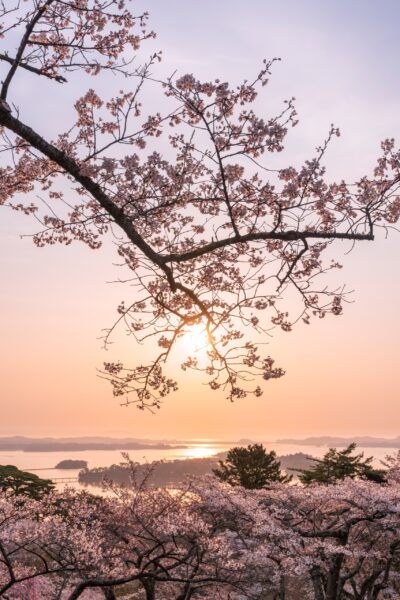
Matsushima, celebrated as one of Japan’s three most scenic views , is a breathtaking bay with over 260 pine-clad islets. Located in Miyagi Prefecture, this natural masterpiece has inspired poets and artists with its ethereal beauty for centuries.
Matsushima offers a variety of experiences, from cruising around the bay to exploring ancient temples like Zuigan-ji , one of the Tohoku region’s most important Zen temples.
The scenic beauty and rich cultural heritage make Matsushima a captivating destination for those seeking tranquility and inspiration.
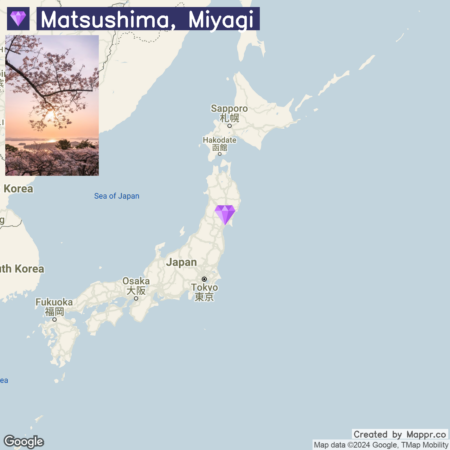
- ✈️ How to Get There : Matsushima is easily reached by train from Sendai, the largest city in the Tohoku region, making it a convenient day trip or a peaceful retreat from urban life.
- 🏨 Where to Stay : The Hotel Matsushima Taikanso offers guests traditional accommodations with stunning bay views. The Matsushima Ichinobo combines contemporary luxury with traditional Japanese hospitality for a modern twist.
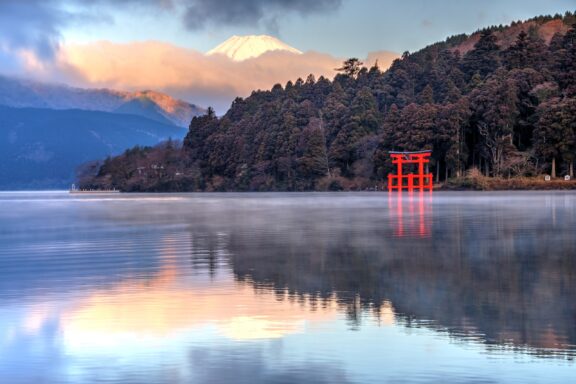
Nestled in the heart of Kanagawa Prefecture, Hakone is a scenic haven that offers a tranquil escape from the hustle and bustle of city life.
Renowned for its hot springs, stunning views of Mount Fuji , and the serene Ashi Lake, Hakone encapsulates the essence of natural beauty and relaxation.
This region is a tapestry of lush mountains, steaming geothermal springs, and rich cultural landmarks like the Hakone Shrine and the open-air museum. Hakone invites visitors to immerse in a landscape where every corner promises discovery.
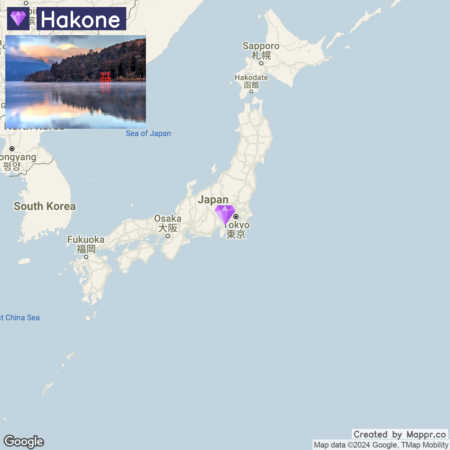
- ✈️ How to Get There : Hakone is most conveniently accessed from Tokyo by the Odakyu Electric Railway, offering a direct, picturesque journey to this tranquil destination.
- 🏨 Where to Stay : For those seeking the quintessential Hakone experience, the Hakone Ashinoko Hanaori offers lakeside serenity with its open-air baths and views of Mount Fuji. Alternatively, the Gora Kadan , nestled amidst Hakone’s mountains, presents a luxurious retreat, blending traditional ryokan hospitality.
6. Lake Biwa
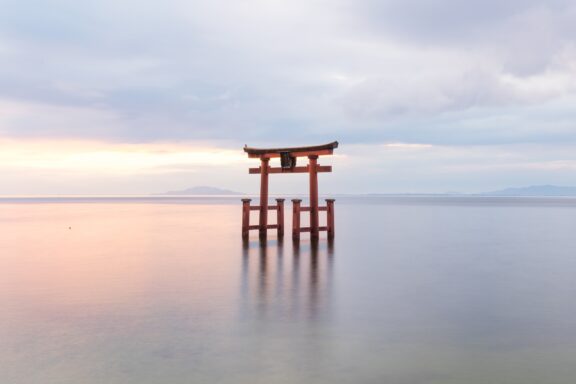
Lake Biwa, the largest freshwater lake in Japan, located in Shiga Prefecture, is a natural wonder that has captivated hearts for centuries. With its crystal-clear waters, this ancient lake is a vital lifeline for the surrounding ecosystems and a hub for cultural and recreational activities .
Surrounded by quaint towns, historic temples, and lush landscapes, Lake Biwa offers many experiences, from leisurely boat cruises to exploring its waters’ vibrant flora and fauna.
The lake’s shores are dotted with beaches, resorts, and scenic spots like the iconic Biwa Bridge, making it a perfect destination for adventure seekers and those pursuing tranquility.
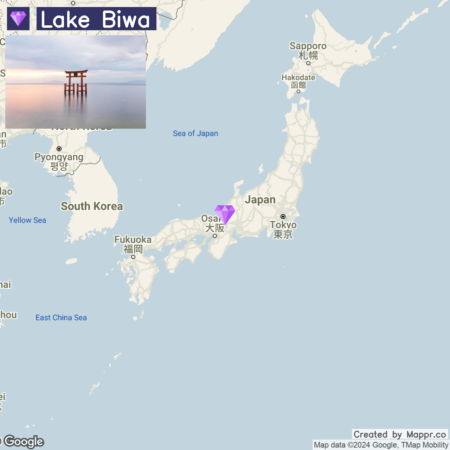
- ✈️ How to Get There : Easily accessible from Kyoto, Lake Biwa is just a short train ride via the JR Biwako Line, inviting travelers to enter a world where nature and history intertwine seamlessly.
- 🏨 Where to Stay : The Lake Biwa Otsu Prince Hotel , towering gracefully by the lake’s edge, offers breathtaking views and a luxurious stay. For a more intimate experience, the Biwako Ryokusuitei offers traditional Japanese hospitality with its tatami rooms and onsen facilities.
7. Yamagata
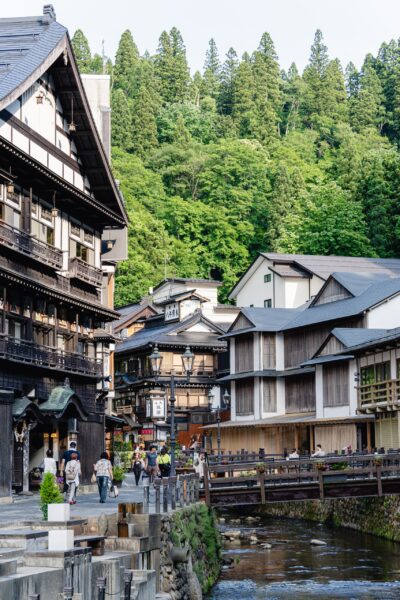
Yamagata City, nestled in the vast plains of Yamagata Prefecture, serves as a gateway to the region’s natural wonders , including the famous Zao Onsen ski and hot spring resort.
Known for its fruit orchards and the scenic beauty of the surrounding mountains , Yamagata offers a blend of cultural heritage and outdoor adventures.
Its temples, parks, and the annual Yamagata Hanagasa Festival, celebrated with vibrant parades and traditional dance, reflect the city’s history.
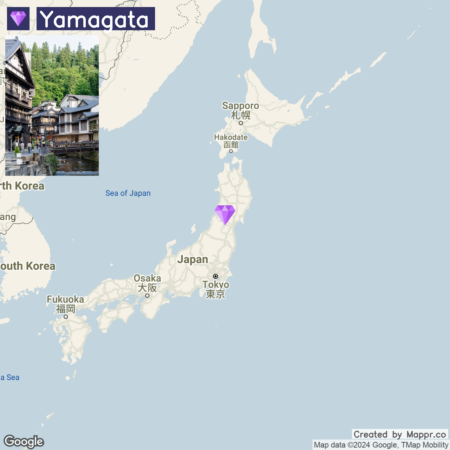
- ✈️ How to Get There : Yamagata is accessible by the Yamagata Shinkansen from Tokyo, offering a smooth and scenic journey to the heart of Tohoku.
- 🏨 Where to Stay : The Daiwa Roynet Hotel Yamagata Ekimae provides a traditional Japanese onsen experience; alternatively, the Richmond Hotel Yamagata Ekimae offers modern comfort and convenience and is ideally located for exploring the city and its surroundings.
8. Aizuwakamatsu, Fukushima
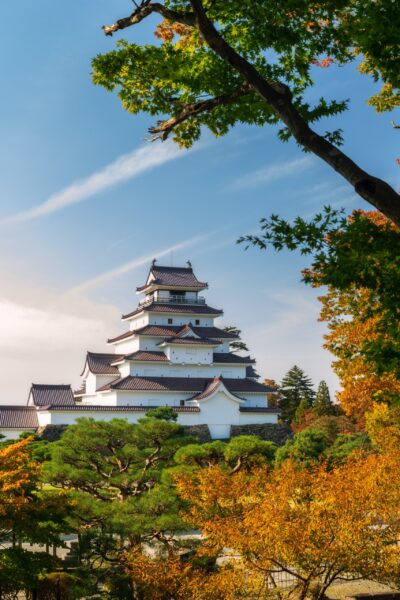
Aizuwakamatsu, in the heart of Fukushima Prefecture, is a city steeped in samurai history and tradition . Known for the iconic Tsuruga Castle and its role in the Boshin War, this city offers a deep dive into Japan’s feudal past.
The Sazaedo Pagoda and the Aizu Samurai Residences are just a few cultural treasures awaiting visitors. Aizuwakamatsu is also the gateway to the beautiful landscapes of the Aizu region, known for its sake breweries and scenic beauty.
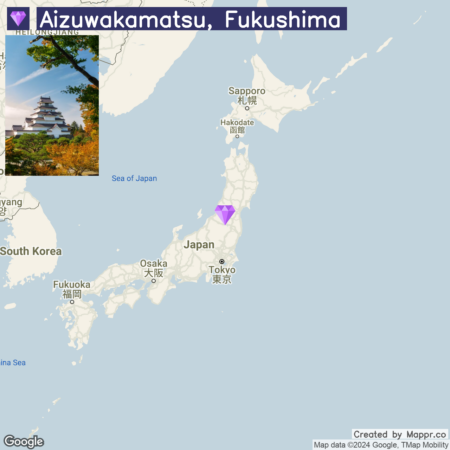
- ✈️ How to Get There : Aizuwakamatsu is reachable by train from Tokyo, with a transfer at Koriyama Station, providing an insightful journey into Japan’s rich history and culture.
- 🏨 Where to Stay : The Shosuke-no-Yado Takinoyu offers a historic ryokan experience, immersing guests in traditional Japanese hospitality and hot springs. For those seeking a contemporary stay, the Aizu Tsuruya Hotel provides modern amenities with easy access to the city’s historical sites.
9. Takayama
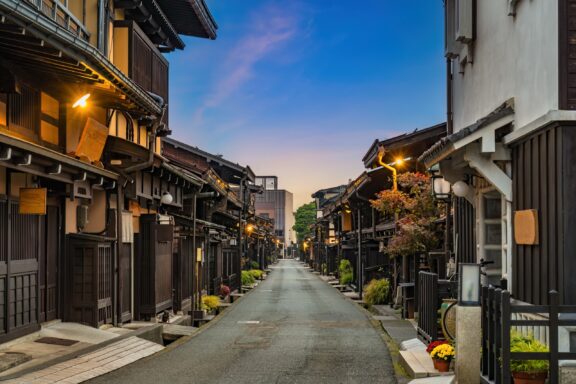
Takayama, nestled in the mountainous Hida region of Gifu Prefecture , is a city that time seems to have forgotten.
With its beautifully preserved old town, Takayama offers a glimpse into Japan’s Edo period, with its traditional merchant houses, sake breweries, and morning markets brimming with local crafts and produce.
The city is also the gateway to the majestic Japanese Alps, offering a blend of cultural richness and natural beauty. Takayama’s festivals, notably the spring and autumn festivals, are renowned for their elaborate floats and are considered among Japan’s most beautiful.
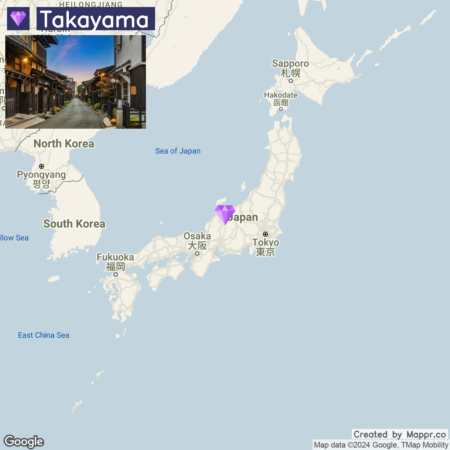
- ✈️ How to Get There : Takayama is accessible by train from Nagoya, with the JR Hida Express offering a scenic route through the heart of Japan’s countryside, directly into the heart of this historic city.
- 🏨 Where to Stay : The Honjin Hiranoya Kachoan offers a luxurious stay in the heart of the old town, providing an authentic Japanese ryokan experience. For a more modern but equally comfortable experience, the Takayama Ouan stands out with its rooftop onsen and views of the Northern Alps.
10. Ine Funaya
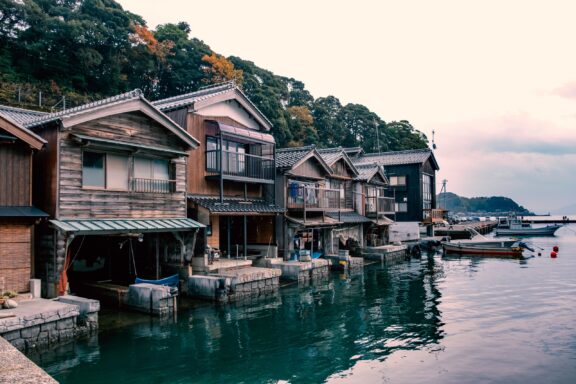
Funaya, unique to the Ine area in Kyoto Prefecture, represents a remarkable aspect of Japan’s coastal culture.
These traditional boat houses, with living quarters above and boat docks below, line the waterfront of Ine Bay, creating a picturesque scene that is both quaint and enchanting.
The harmony of these structures with their natural surroundings exemplifies the Japanese principle of living in balance with nature. Ine’s Funaya offers a rare glimpse into a lifestyle deeply connected to the sea, where the rhythms of the tides dictate the pace of daily life.
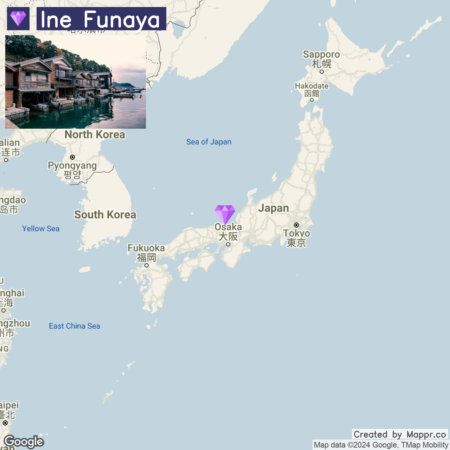
- ✈️ How to Get There : The journey to Ine and its Funaya involves a scenic drive from Kyoto city, best accessed by rental car or bus, winding through the lush landscapes of northern Kyoto Prefecture to the tranquil shores of Ine Bay.
- 🏨 Where to Stay : The Shisui Luxury Hotel provides a luxurious retreat with panoramic bay views and the famed Amanohashidate sandbar.
11. Ouchijuku, Fukushima
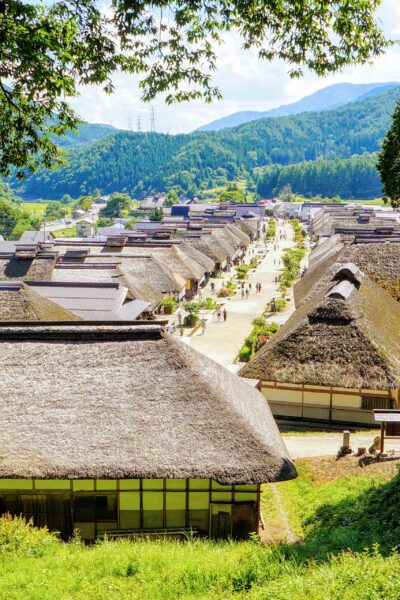
Ouchijuku is a former post town in Fukushima Prefecture, offering a rare glimpse into Japan’s Edo period . This quaint village, with its thatched-roof houses and preserved streets, transports visitors back in time.
Ouchijuku is a place to wander and marvel at historical architecture and a destination to enjoy traditional cuisine, such as negi soba, where diners use a long green onion as chopsticks.
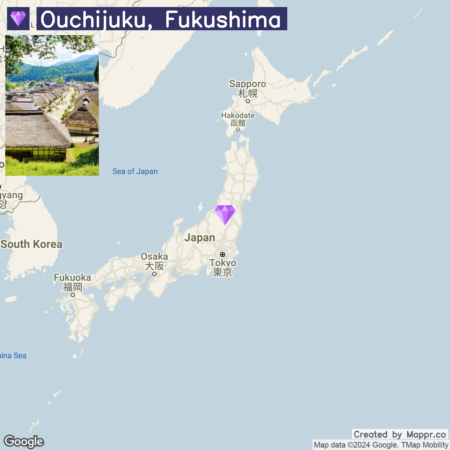
- ✈️ How to Get There : Ouchijuku is accessible by bus from Aizuwakamatsu, making it an easy day trip for those exploring the Aizu region.
- 🏨 Where to Stay : While Ouchijuku offers limited accommodation options, the Tabist Koboshi no Yu Senshintei , just 5 km away, offers an authentic ryokan experience. Meanwhile, Keikokubinoyado Kawane in Aizuwakamatsu provides a charming retreat, blending comfort with the region’s natural beauty.
12. Niigata
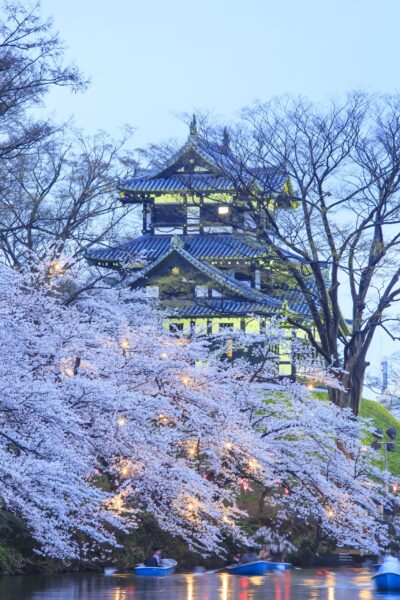
Facing the Sea of Japan, Niigata City is a hub of culture, gastronomy, and natural beauty . Renowned for its high-quality rice and sake, Niigata offers a gastronomic adventure, from its famed rice to fresh seafood.
The city’s waterfront and the Shinano River provide picturesque landscapes, while the Niigata City History Museum and the Northern Culture Museum offer insights into the region’s rich heritage.
Niigata is also a gateway to the ski resorts of Myoko and Sado Island, making it a versatile destination for all seasons.
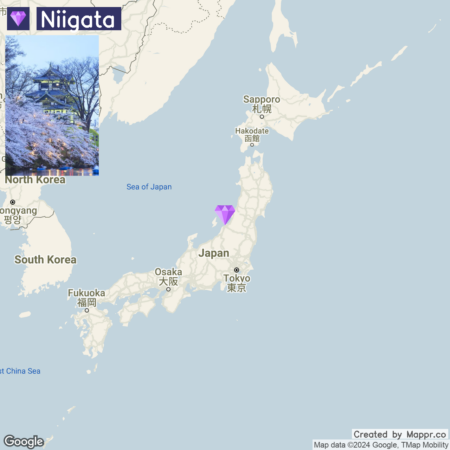
- ✈️ How to Get There : Niigata is directly accessible by Shinkansen from Tokyo, making it an easy escape to Japan’s northern shores.
- 🏨 Where to Stay : The Hotel Nikko Niigata , towering above the city, offers panoramic views of the Sea of Japan, or a blend of traditional relaxation and modern convenience, Tennen Onsen Taho-no-Yu offers a comforting retreat with its natural hot springs and contemporary amenities
13. Izu Peninsula
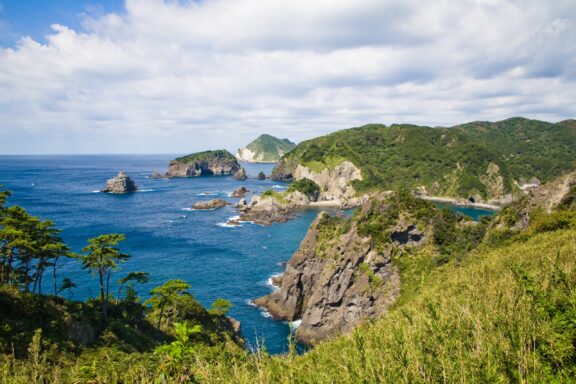
The Izu Peninsula, a stunning coastal area southwest of Tokyo, offers a diverse landscape of rugged coastline, scenic hot springs, and beautiful beaches.
Known for its geological wonders, including the Jogasaki Coast and Mt. Omuro, Izu provides many outdoor activities, from hiking and sea kayaking to indulging in the peninsula’s renowned onsen (hot springs).
The area is also rich in cultural attractions, such as the historic town of Shuzenji and the spectacular cherry blossoms of Kawazu, making it a versatile destination for travelers seeking both adventure and tranquility.
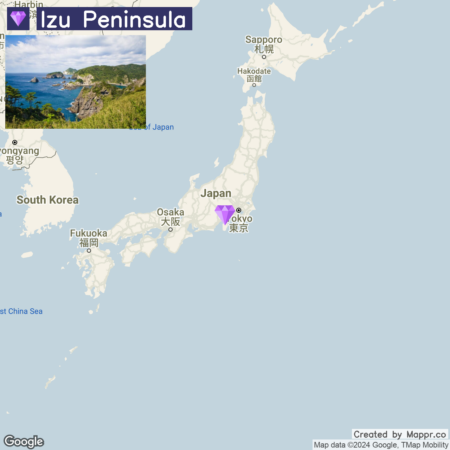
- ✈️ How to Get There : The Izu Peninsula is easily accessible from Tokyo by train, with direct services to various parts of the peninsula, offering a convenient escape into nature’s embrace.
- 🏨 Where to Stay: The Kurofune Hotel , nestled amidst the forested hills with river views, offers a secluded retreat with private onsen baths and contemporary design. Alternatively, the Shimoda Tokyu Hotel , perched on a hilltop, provides panoramic views of Mt. Fuji and Suruga Bay.
14. Kamikochi, Nagano
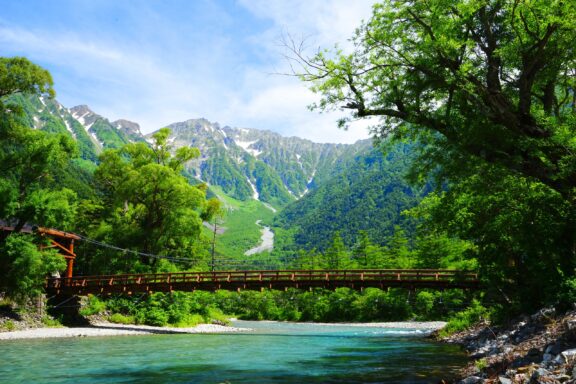
Kamikochi, located in the heart of the Northern Japan Alps, is a pristine mountainous highland valley that offers some of Japan’s most spectacular natural scenery .
Renowned for its clear waters, lush forests, and dramatic mountain vistas, including the iconic Mt. Hotaka, Kamikochi is a haven for hikers, nature enthusiasts, and anyone seeking a serene retreat into nature.
The area is carefully preserved, with access controlled to protect its natural beauty, ensuring an unspoiled wilderness experience.
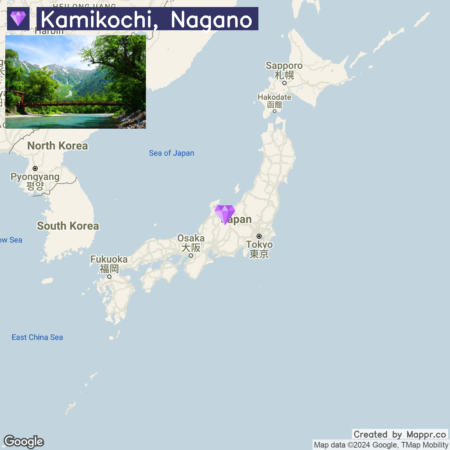
- ✈️ How to Get There : Kamikochi is accessible via bus from Matsumoto, Takayama, or Hirayu Onsen, making it an ideal excursion into the heart of Japan’s alpine region.
- 🏨 Where to Stay : Nestled in the scenic beauty of the highlands, Furusato offers a comforting retreat amidst Takayama’s natural wonders. For a more rustic experience, the Kamikochi Nishi-Itoya Mountain Lodge delivers a cozy atmosphere with traditional tatami rooms and warmth.
15. Togakushi, Nagano
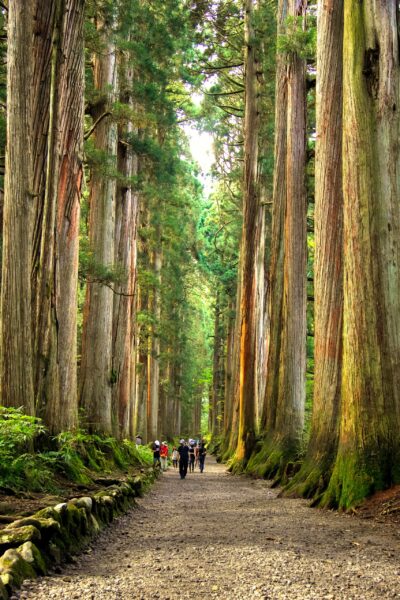
Togakushi is a mystical area in Nagano Prefecture, known for its ancient Shinto shrines set amidst a dense forest, rich with legends and spiritual energy.
The Togakushi Shrine complex, consisting of five shrines, offers a spiritual journey through beautiful forested paths leading to the impressive Okusha Shrine at the mountain’s base.
Togakushi is also famous for its soba noodles, a local specialty, making it a culinary destination for those seeking to combine gastronomic delights with cultural exploration.
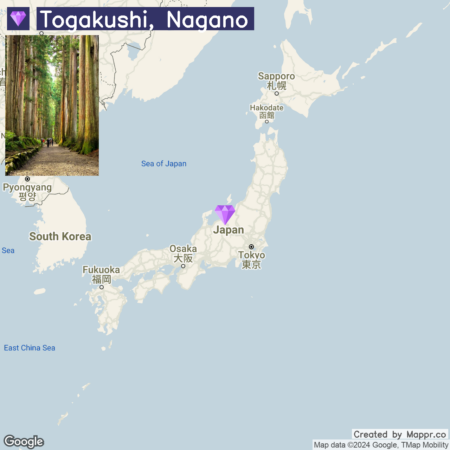
- ✈️ How to Get There : Togakushi is best reached by bus from Nagano Station, offering a scenic route into the heart of this sacred landscape.
- 🏨 Where to Stay : Yadoya Shiroganeya offers a welcoming retreat that marries traditional charm with modern comforts. For a deeper dive into the region’s cultural heritage, Oshi Ryokan presents a cozy, authentic experience with its traditional hospitality and home-cooked Japanese meals.
16. Matsuyama, Ehime
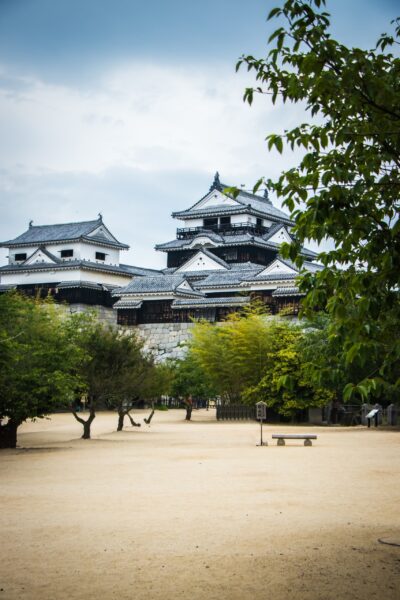
Matsuyama, the largest city on Shikoku Island, is famed for its historic Dogo Onsen , one of Japan’s oldest hot springs, and Matsuyama Castle, which offers panoramic views of the city and the Seto Inland Sea.
The city’s literary heritage, associated with the classic Japanese novel “Botchan” by Natsume Soseki, adds a cultural depth to the visit.
Matsuyama’s blend of historical sites, cultural landmarks, and modern amenities makes it a compelling destination for diverse travelers.
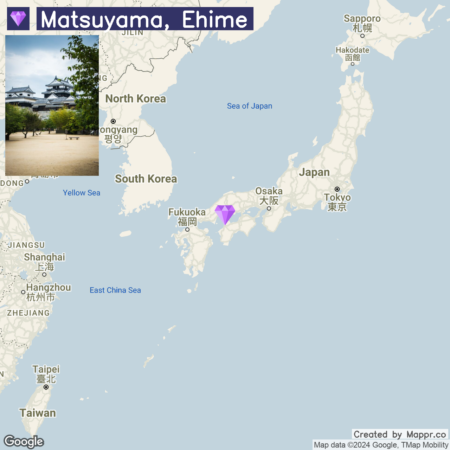
- ✈️ How to Get There : Matsuyama is accessible by air from Tokyo and Osaka or by ferry from Hiroshima, making it an easily reachable destination within the Seto Inland Sea region.
- 🏨 Where to Stay : Ensuring guests enjoy modern amenities and comfort, Comfort Hotel Matsuyama offers a convenient stay near the historic Dogo Onsen. For a more contemporary stay, the Matsuyama Tokyu REI Hotel offers modern comfort in the city center, suitable for exploring Matsuyama’s attractions.
17. Kurashiki, Okayama
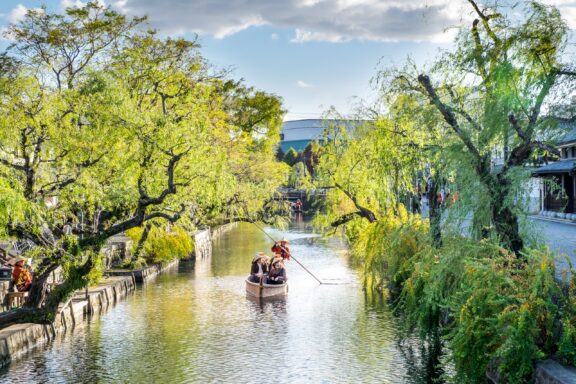
Kurashiki is a charming historic city known for its beautifully preserved canal area , the Bikan Historical Quarter, where visitors can wander among traditional storehouses and merchant homes, now transformed into museums, shops, and cafés.
The city’s cultural highlight is the Ohara Museum of Art, which houses an impressive collection of Western art. Kurashiki offers a unique blend of Japanese history and Western art in a picturesque setting, making it a fascinating stop for art lovers and history enthusiasts.
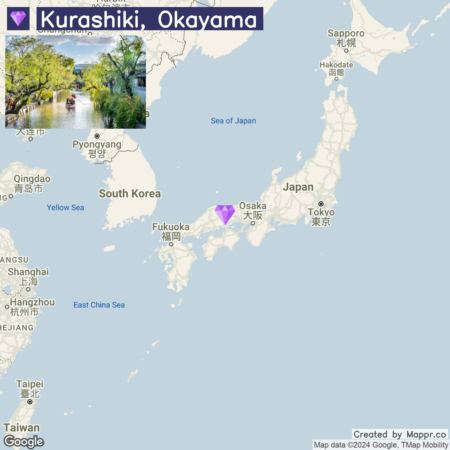
- ✈️ How to Get There : Kurashiki is easily accessible by train from Okayama, making it a convenient day trip or a pleasant stopover on a journey through the Chugoku region.
- 🏨 Where to Stay : The Kurashiki Ivy Square Hotel , housed in a converted cotton mill, offers a unique accommodation experience. For a luxurious experience, Achi’s Shokurano Inn provides an elegant retreat with refined Japanese aesthetics and hospitality.
18. Otaru, Hokkaido
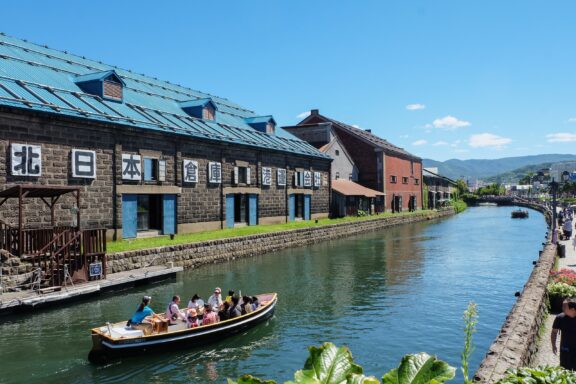
Otaru, a quaint port city on Hokkaido’s western coast, is renowned for its well-preserved canal area and historic buildings , telling tales of its bustling herring trade past.
The Otaru Canal, with its romantic gas lamps and stone warehouses, now converted into boutiques and cafes, creates a nostalgic atmosphere, especially in the evening. T
The city is also celebrated for its glassware and music boxes, with numerous shops and museums dedicated to these crafts. Otaru’s blend of historical charm, natural beauty, and artisanal heritage makes it an enchanting destination.
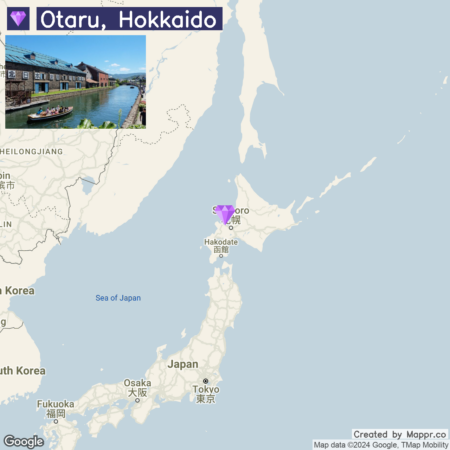
- ✈️ How to Get There : Otaru is easily reached by train from Sapporo, making it a popular day trip or a relaxing stop in a broader Hokkaido itinerary.
- 🏨 Where to Stay : The Hotel Nord Otaru , located along the scenic canal, offers comfortable accommodations with picturesque views. Alternatively, the Authent Hotel Otaru blends Western comfort and Japanese elegance.
19. Naoshima Island
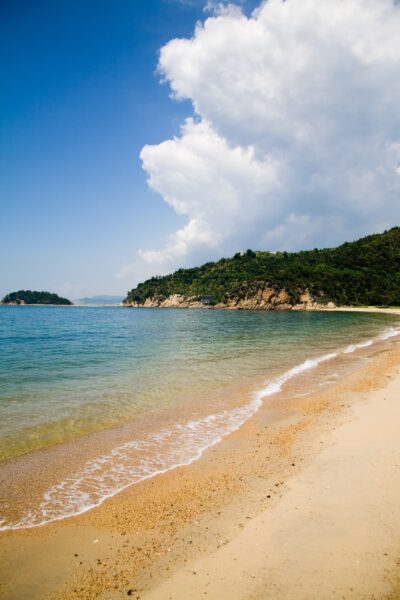
Naoshima, often called Japan’s “Art Island,” is a unique blend of contemporary art, architecture, and natural beauty in the Seto Inland Sea.
The island is home to various art installations, museums, and architectural projects, including the renowned Benesse House, the Chichu Art Museum, and the Art House Project in the traditional village of Honmura.
Naoshima’s commitment to integrating art with nature creates an immersive cultural experience, making it a pilgrimage site for art enthusiasts and those seeking a distinctive and thought-provoking escape.
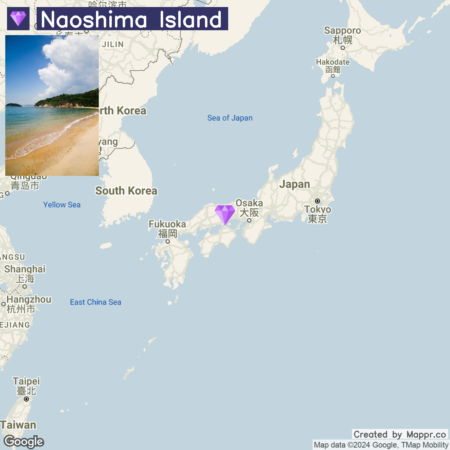
- ✈️ How to Get There : Naoshima is accessible by ferry from Uno Port or Takamatsu, offering a scenic approach to this artistic haven.
- 🏨 Where to Stay : MY LODGE Naoshima provides visitors a cozy and artistic retreat, blending seamlessly into the island’s creative landscape with thoughtfully designed spaces. The Tsutsuji-so Lodge provides cozy bungalows and traditional Japanese rooms for a more conventional stay.
20. Yakushima Island
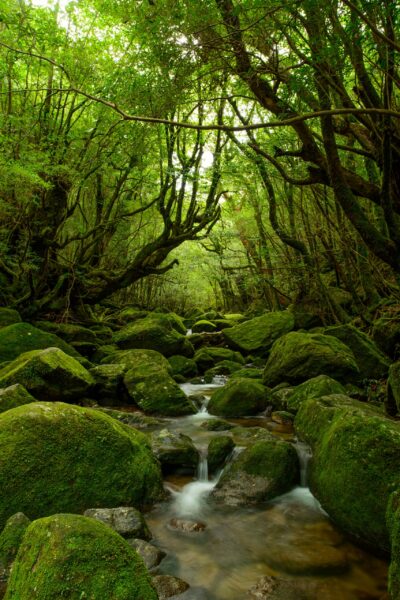
Yakushima, a UNESCO World Heritage site, is an island off the southern coast of Kyushu. It is celebrated for its ancient cedar forests, some thousands of years old, including the iconic Jomon Sugi.
The island’s lush landscapes, waterfalls, and diverse ecosystems make it a paradise for hikers and nature enthusiasts. Yakushima’s profound natural beauty and the spiritual presence of its ancient forests offer a deep connection with nature.
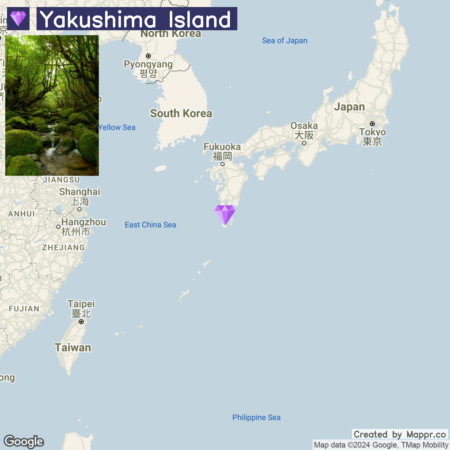
- ✈️ How to Get There : Yakushima is reachable by ferry from Kagoshima or air from Kagoshima and Osaka, offering a gateway to this enchanting island.
- 🏨 Where to Stay : The Sankara Hotel & Spa Yakushima offers a luxurious retreat, blending French elegance with Japanese hospitality. For a closer nature experience, the Yakushima Cottage Morino Fairy provides charming cottages equipped with modern comforts.
21. Geibikei Gorge, Iwate
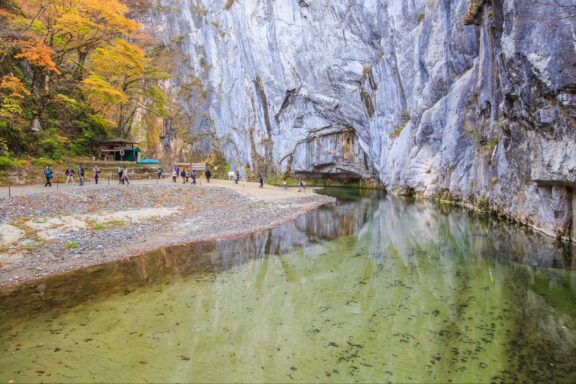
Geibikei Gorge, located in the scenic town of Hiraizumi, is a natural wonder characterized by its towering limestone cliffs and serene river .
A traditional flat-bottomed boat ride down the Satetsu River, guided by boatmen who navigate and serenade passengers, offers a unique way to experience the gorge’s tranquil beauty and seasonal splendor.
The changing leaves in autumn and the lush greenery in summer provide a breathtaking backdrop, making Geibikei Gorge a must-visit for nature lovers and those seeking peace and rejuvenation .
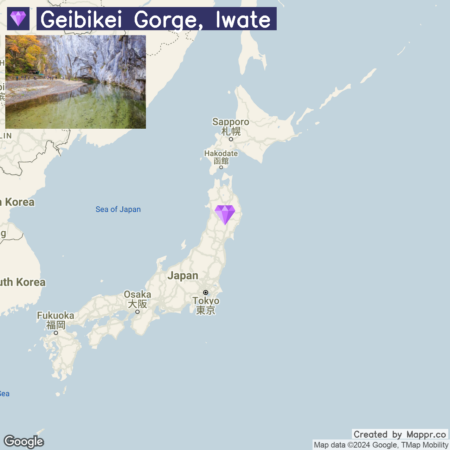
- ✈️ How to Get There : Geibikei Gorge is accessible by train and bus from Ichinoseki Station, offering a journey into the heart of Iwate’s natural landscapes.
- 🏨 Where to Stay : Café & Guest House Kaziya offers a unique and welcoming stay for those exploring the Geibikei Gorge and its surroundings. This cozy guesthouse combines the comfort of modern accommodations with the charm of a local café, providing a warm, friendly atmosphere.
22. Zao Fox Village
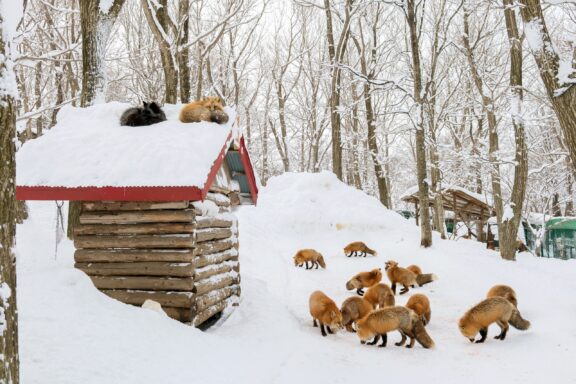
Located in the mountains near Shiroishi, Zao Fox Village is a unique sanctuary where visitors can interact with over a hundred free-roaming foxes .
This one-of-a-kind attraction provides a rare opportunity to observe and feed various foxes in a semi-wild setting. The village also houses other animals, but the foxes are undoubtedly the main attraction, offering a unique glimpse into the lives of these fascinating creatures.
It’s a must-visit for animal lovers and those interested in experiencing a different side of Japan’s diverse attractions.
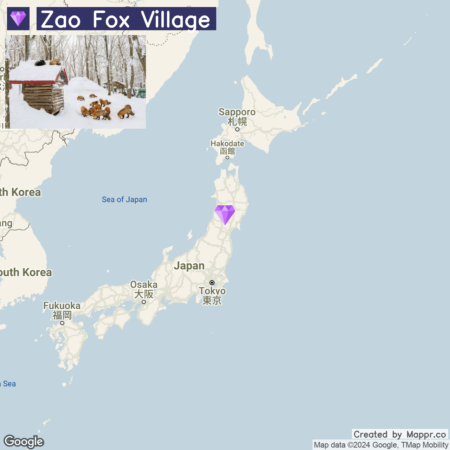
- ✈️ How to Get There : Zao Fox Village is accessible by train from Sendai to Shiroishi Station, followed by a short taxi ride to the village, nestled in the scenic Zao Mountains.
- 🏨 Where to Stay : For visitors looking to stay nearby, the Chikusenso Mt.Zao Onsen Resort & Spa offers luxurious accommodations with hot spring baths. Alternatively, the Taoya Akiu provides a comfortable stay with amenities suitable for families and solo travelers.
23. Shirogane Blue Pond
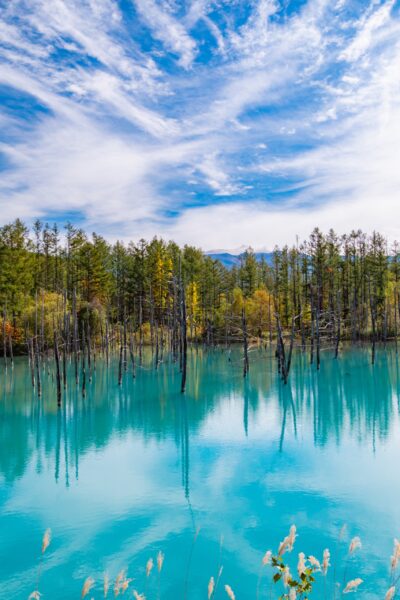
The Shirogane Blue Pond, located near the town of Biei in Hokkaido, Japan, is a mesmerizing natural wonder known for its ethereal blue water , which contrasts strikingly with the surrounding forest and the white birch trees that stand submerged in the pond.
This captivating sight results from natural minerals dissolved in the water, reflecting light so that the pond appears a bright, almost surreal shade of blue.
The changing seasons offer varied views, from the lush greenery of summer to the snowy wonderland of winter, making it a year-round attraction.
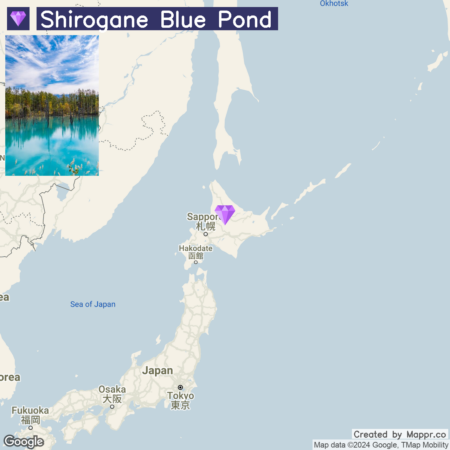
- ✈️ How to Get There : The Shirogane Blue Pond is most easily reached by car from Asahikawa, the nearest major city in Hokkaido, with an airport and train station. Public buses also run from Asahikawa and Biei, making the pond accessible for those relying on public transportation.
- 🏨 Where to Stay : The Vantean House Hotel offers a cozy and comfortable home away from home, providing a peaceful retreat after exploring. For a more intimate stay, N-vacation STAY presents a charming and modern accommodation option, perfect for couples or solo travelers looking to relax in a serene setting
24. Monet Pond
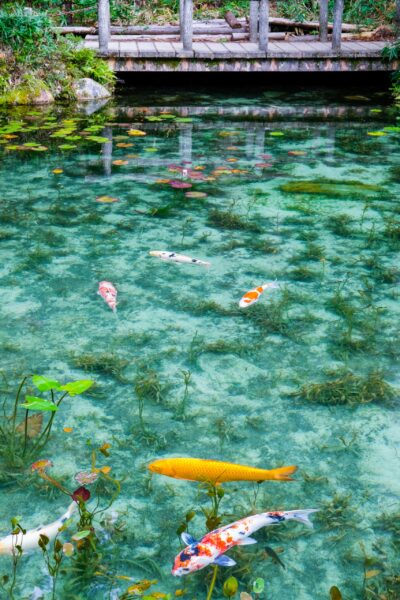
Monet’s Pond is a small but enchantingly beautiful pond in Gifu Prefecture. Its nickname comes from its resemblance to Claude Monet’s impressionist paintings.
The clear, vibrant waters, teeming with colorful koi fish and framed by lush greenery and floating flowers, create a picturesque scene straight out of a painting.
This serene spot is perfect for those seeking tranquility and a feast for the eyes , especially during the spring and summer months when the flowers bloom.
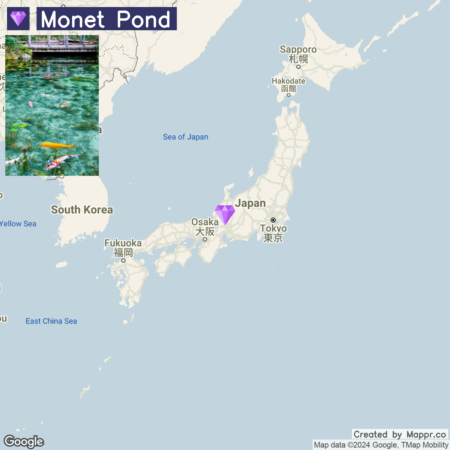
- ✈️ How to Get There : Monet’s Pond can be accessed by car or bus from nearby cities in Gifu Prefecture, offering a peaceful detour into the countryside.
- 🏨 Where to Stay : The Hotel Park Gifu provides comfortable accommodations with convenient access to the region’s attractions, including Monet’s Pond. For a more traditional experience, the Ryokan Yunoshimakan in Gero offers hot spring baths and traditional Japanese hospitality.
25. Kurokawa Onsen
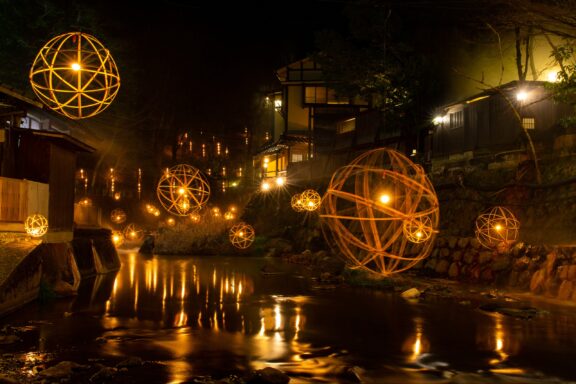
Kurokawa Onsen is a picturesque hot spring town in the heart of Kyushu, known for its traditional ryokan (Japanese inns), outdoor baths, and charming village atmosphere.
Nestled along a river and surrounded by nature, Kurokawa offers a tranquil retreat with therapeutic hot springs in rustic, scenic surroundings.
The town’s commitment to preserving its traditional character and serene environment makes it an ideal destination for those seeking relaxation and a taste of Japan’s onsen culture .
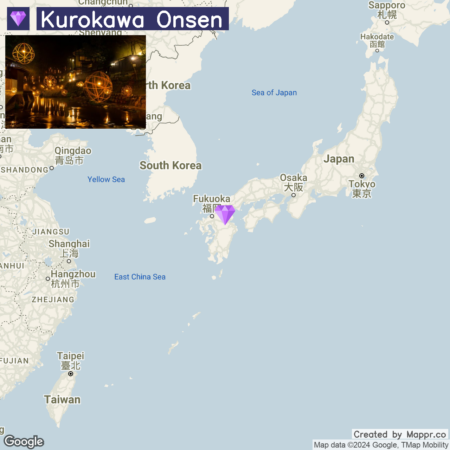
- ✈️ How to Get There : Kurokawa Onsen is best reached by bus from Kumamoto or Fukuoka, winding through the scenic countryside to this secluded hot spring haven.
- 🏨 Where to Stay : Yumerindo Kumamoto Hotel invites guests to enjoy a blend of modern luxury and traditional Japanese aesthetics. Meanwhile, Galaxy Inn Kinoko offers a cozy and intimate setting, with beautifully crafted accommodations that provide a serene base for exploring the area’s natural beauty.
26. Yonaguni Island
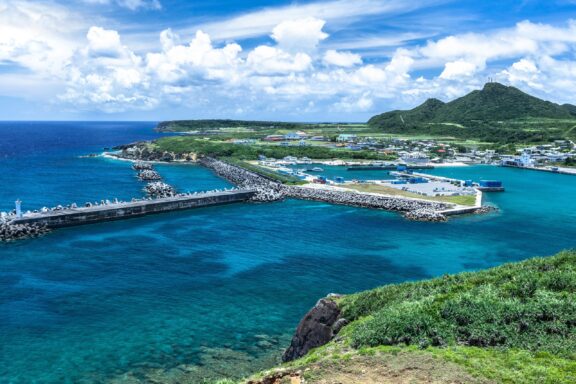
Yonaguni Island, Japan’s westernmost inhabited island, is part of the Yaeyama Islands in Okinawa Prefecture.
Known for its dramatic cliffs, deep blue waters, and the mysterious Yonaguni Monument, an underwater structure some believe to be man-made, the island offers a unique blend of natural beauty and mystery.
Diving enthusiasts flock to Yonaguni for its exceptional dive sites, including the chance to swim with schools of hammerhead sharks in the winter months.
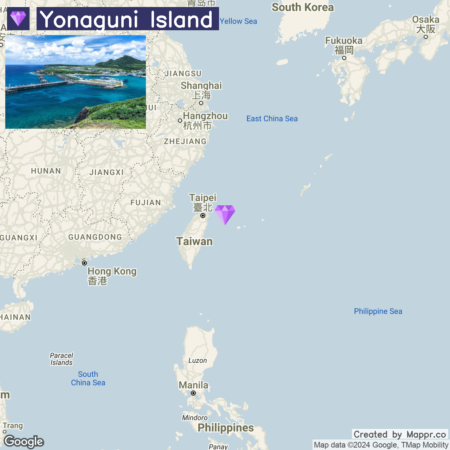
- ✈️ How to Get There : Yonaguni Island is accessible by air from Naha, Okinawa, or Ishigaki Island, making it a remote but rewarding destination for adventurers.
- 🏨 Where to Stay : The Hotel Route-inn Yamaguchi Yuda Onsen offers a simple, comfortable stay with easy access to diving shops and the island’s natural attractions. For a more immersive experience, the Resort Hotel Mihagi provides ocean-view rooms and facilities designed for divers.
27. Sado Island
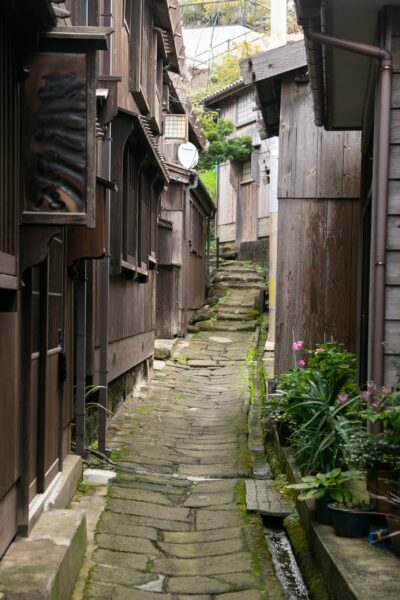
In the Sea of Japan, Sado Island is rich in history, natural beauty, and cultural heritage , including its famous tarai-bune (tub boats) and the legacy of exiles, such as the Noh dramatist Zeami.
The island’s varied landscapes offer diverse outdoor activities, from rugged coastlines to lush terraced rice fields. Sado is also known for its thriving arts scene, particularly the Kodo Taiko drumming group and the annual Earth Celebration festival.
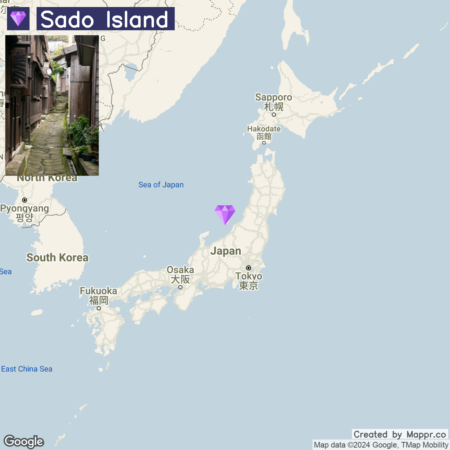
- How to Get There : Sado Island is accessible by ferry from Niigata City, a journey that adds to its remote charm.
- 🏨 Where to Stay : The Sado National Park Hotel Oosado offers spacious rooms with breathtaking views of the Sea of Japan and the rugged cliffs of Sado.
28. Shimane
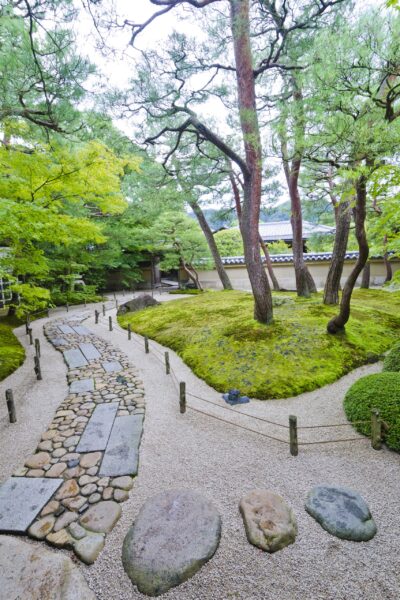
Shimane, located in the Chugoku region of Honshu, is a treasure trove of myth, history, and natural beauty .
Known as the land of the gods, Shimane is home to Izumo Taisha, one of Japan’s most important Shinto shrines, and the ancient Adachi Museum of Art with its stunning Japanese garden.
The prefecture offers a deep dive into Japan’s spiritual and cultural heritage, set against a backdrop of dramatic landscapes, from the rugged San’in Kaigan coast to the tranquil shores of Lake Shinji.
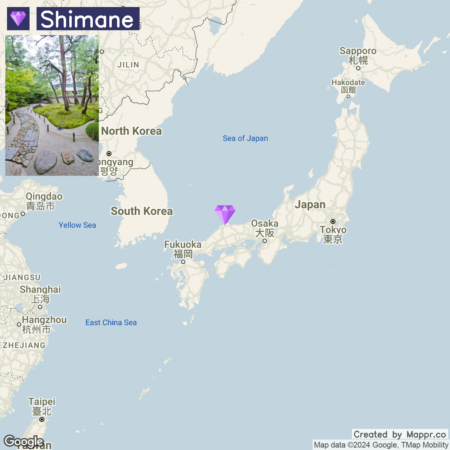
- ✈️ How to Get There : Shimane Prefecture is accessible by air, train, and bus from major cities in Japan, offering a journey into a region steeped in legend and tradition.
- 🏨 Where to Stay : The Tamatsukuri Onsen Kasuien Minami in Matsue offers a luxurious hot spring experience with exquisite gardens and refined cuisine. For a more historical stay, the Onyado Nono Matsue Natural Hot Spring provides modern comforts in the heart of Matsue.
29. Shodoshima Island
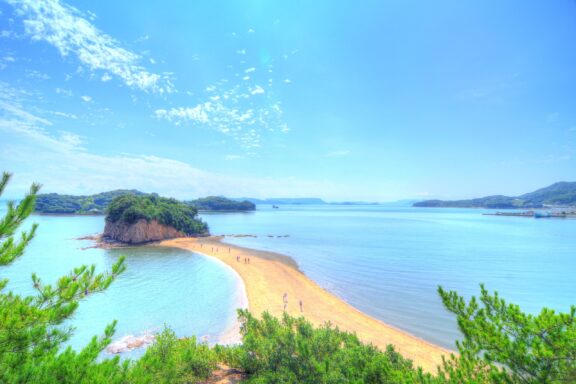
Shodoshima, the second-largest island in the Seto Inland Sea, is known for its Mediterranean-like climate, olive groves, and soy sauce production.
The island offers a unique combination of natural beauty, scenic coastlines, the dramatic Kankakei Gorge, and cultural experiences, such as traditional soy sauce factories and olive parks.
Shodoshima also serves as a venue for the Setouchi Triennale art festival, featuring installations and artworks harmonizing with the island’s landscapes.
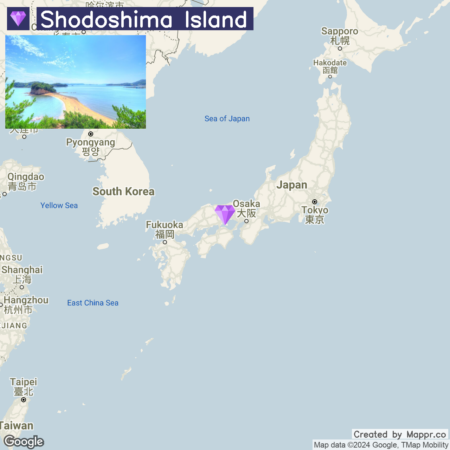
- ✈️ How to Get There : Shodoshima is accessible by ferry from Takamatsu in Shikoku or Okayama on Honshu, making it an appealing destination for island hopping in the Seto Inland Sea.
- 🏨 Where to Stay : The Bay Resort Hotel Shodoshima offers comfortable accommodations with stunning sea views, outdoor pools, and spa facilities. For a more traditional experience, the Shodoshima International Hotel provides a warm welcome with its hot spring baths and local cuisine.
30. Yakage Town, Okayama
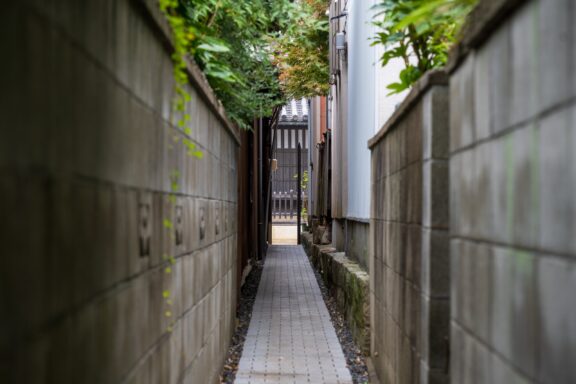
Yakage Town, located in Okayama Prefecture, is a hidden gem that offers a glimpse into the Edo period with its well-preserved samurai and merchant quarters.
Once a prosperous post town along the historical Sanyo Road, this small town invites visitors to step back in time and explore its historic buildings, traditional tea houses, and the annual Yakage Daimyo Procession, which reenacts a feudal lord’s journey.
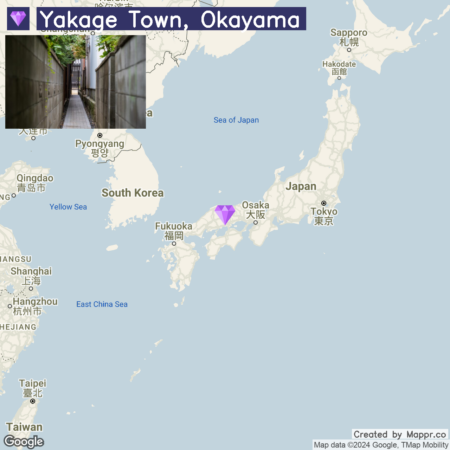
- ✈️ How to Get There : Yakage Town is best reached by car or bus from Okayama, providing a scenic drive through the rural landscapes of Chugoku.
- 🏨 Where to Stay : The Stone – Vacation STAY 14007 , located in approximately 15 kilometers from Yakage, provides a convenient base for exploring Yakage and other regional attractions.
31. Nokogiriyama, Chiba
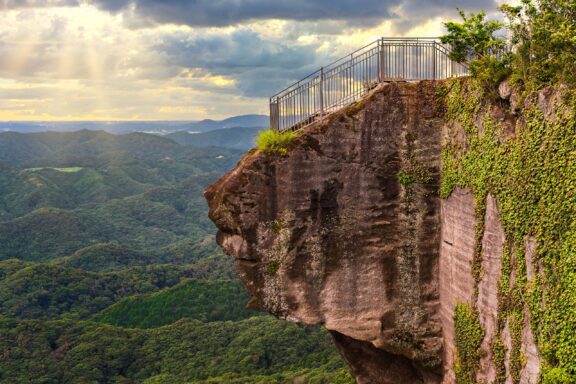
Nokogiriyama, or “Sawtooth Mountain,” in Chiba Prefecture is a lesser-known destination that offers breathtaking views and a unique cultural experience.
This mountain is home to the sprawling Nihon-ji temple complex, featuring a giant stone Buddha carved into its hillside, one of the largest in Japan , and the “Hell Peek” viewpoint, where visitors can stand over a sheer cliff for thrilling vistas.
The mountain’s name derives from its jagged ridgeline, which resembles a saw blade. Hiking trails lead visitors through beautiful natural scenery and past hundreds of arhat statues representing the disciples of Buddha.
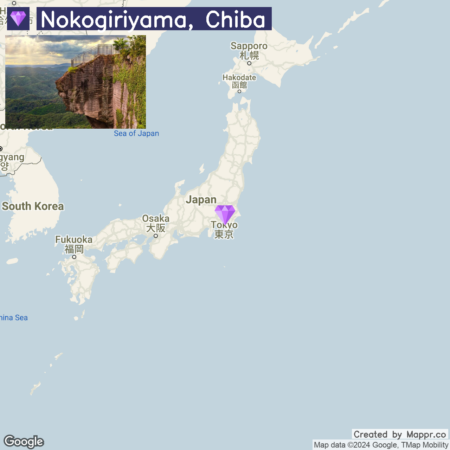
- ✈️ How to Get There : Nokogiriyama is accessible by train from Tokyo to Hamakanaya Station, followed by a short cable car ride or hike up the mountain.
- 🏨 Where to Stay : For those wishing to extend their visit, Amane in Kyonan, Chiba offers luxurious accommodations and extensive onsen facilities, providing relaxation after a day of hiking.
32. Hachimantai
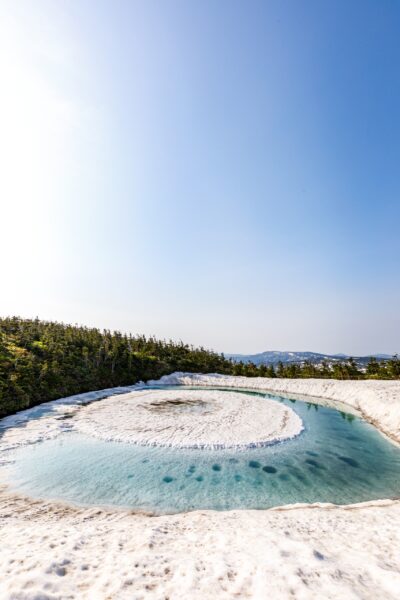
Hachimantai, located in the northern Tohoku region of Japan, is a stunning area known for its pristine natural landscapes, including vast marshlands, volcanic hot springs, and the scenic Towada-Hachimantai National Park.
This hidden gem offers outdoor enthusiasts various activities across the seasons, from vibrant autumn foliage and serene hiking trails in the warmer months to exceptional skiing and snowboarding in winter.
The region’s geothermal activity also supports numerous onsen resorts, providing a perfect blend of adventure and relaxation.
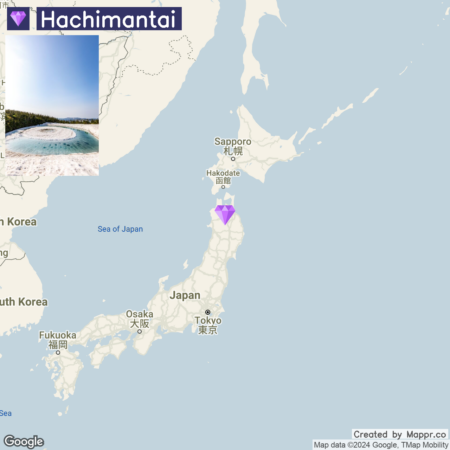
- ✈️ How to Get There : Hachimantai is best reached by car or bus from Morioka, the capital city of Iwate Prefecture. The journey from Morioka to Hachimantai provides a scenic drive through the mountains of northern Japan.
- 🏨 Where to Stay: The ANA Intercontinental Appi Kogen Resort , situated at the base of the Appi Ski Resort, offers luxurious accommodations. For a more traditional experience, the Apikogen Mori no Hotel features natural hot springs baths and traditional Japanese rooms, providing a peaceful nature retreat.
33. Teshima Island
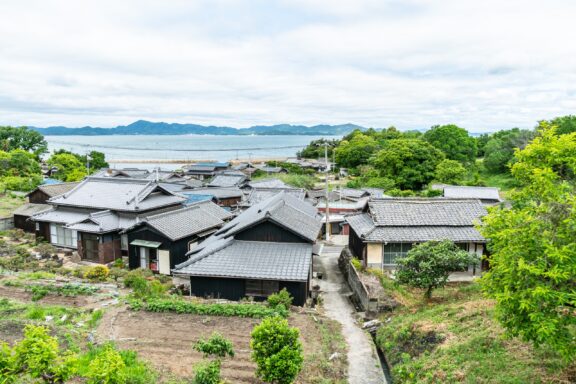
Teshima Island, another jewel in the Seto Inland Sea, is renowned for its art installations, including the Teshima Art Museum, which blends architecture, art, and nature in a seamless and captivating way.
The island’s terraced rice fields, tranquil villages, and beautiful beaches add to its allure, making it a peaceful escape for art lovers and those seeking a connection with the Japanese countryside.
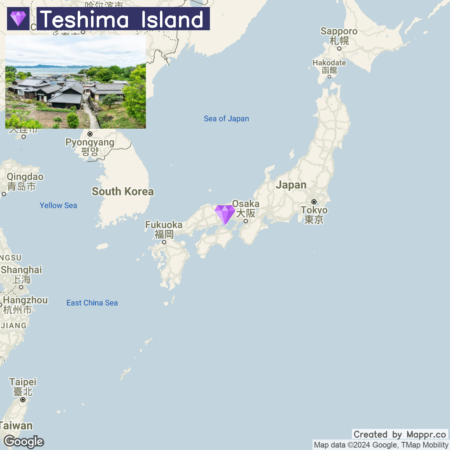
- ✈️ How to Get There : Teshima is reachable by ferry from Takamatsu or Naoshima, allowing for an easy integration into a broader itinerary exploring the art islands of the Seto Inland Sea.
- 🏨 Where to Stay : Shiraishi Island International Villa provides modern, minimalist lodgings that reflect the island’s artistic and natural beauty.
Final Thoughts
Japan’s hidden gems offer a treasure trove of experiences far beyond the well-trodden paths of Tokyo and Kyoto.
From the ancient cedar forests of Yakushima to the tropical beaches of Okinawa, and from the cultural richness of Takayama to the art-filled islands of the Seto Inland Sea, each destination presents a unique facet of Japan’s diverse landscape and heritage.
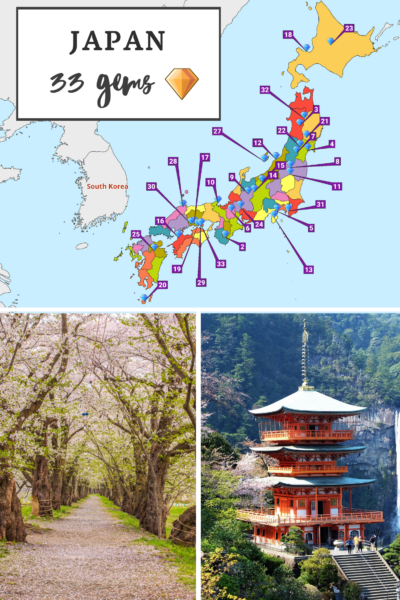
- Twilight at Shuri Castle in Okinawa: © Sean Pavone/Shutterstock
- Pagoda and Waterfall in Lush Green Setting: © Piyawannee/Shutterstock
- Cherry Blossom Alley: © Spyan/Shutterstock
- Sakura Blossoms at Sunrise in Matsushima, Japan: © Hiroyoshi Kushino/Shutterstock
- Torii Gate at Lake Ashi with Mount Fuji in the Background, Hakone, Japan: © Krishna.Wu/Shutterstock
- Torii Gate at Lake Biwa during Sunset: © TAKUYA.A/Shutterstock
- Traditional Japanese Street in Ginzan Onsen with Wooden Buildings and Stream: © lydiarei/Shutterstock
- Japanese Castle Amidst Autumn Foliage: © LightRecords/Shutterstock
- Dusk in Takayama Old Town, Japan: © Noppasin Wongchum/Shutterstock
- Traditional Japanese Funaya Houses by the Water: © Nithid Memanee/Shutterstock
- Traditional Thatched Roof Village in Japan: © Wizard8492/Shutterstock
- Takada Castle with Cherry Blossoms in Niigata: © Norikazu/Shutterstock
- Izu Peninsula Coastline: © tororo reaction/Shutterstock
- Kappa Bridge in Kamikochi, Japan with Mountain Backdrop: © Amstk/Shutterstock
- Pathway Through Tall Cedar Trees: © janken/Shutterstock
- Matsuyama Castle in Ehime Prefecture, Japan: © fumoto_s/Shutterstock
- Boat Ride Along the Kurashiki Canal in Japan: © siriwat sriphojaroen/Shutterstock
- Canal and Historic Warehouses in Otaru, Hokkaido: © Yaoinlove/Shutterstock
- Secluded Beach on Naoshima Island: © tororo reaction/Shutterstock
- Moss-Covered Stones in a Forest Stream: © since1827/Shutterstock
- Tourists at Geibikei Gorge in Autumn: © Piith Hant/Shutterstock
- Foxes in Snow at Zao Fox Village: © wolfmaster13/Shutterstock
- Serene Blue Lake with Submerged Trees and Forest Background: © okimo/Shutterstock
- Koi Fish in a Pond with Wooden Bridge: © kazu8/Shutterstock
- Illuminated Spheres at Night in Kurokawa Onsen: © TOYOKAZU.Y/Shutterstock
- Coastal View of Yonaguni Island Port: © w.aoki/Shutterstock
- Narrow Alley Between Traditional Edo-Era Wooden Houses: © Lecker Studio/Shutterstock
- Japanese Garden Pathway: © Tanya Jones/Shutterstock
- Sandy Path Between Seas: © mutsu7211/Shutterstock
- Narrow Alleyway in Traditional Town: © JinFujiwara/Shutterstock
- Observation Deck on Mountain Cliff Overlooking Forested Valley: © kuremo/Shutterstock
- Dragon Eye Lake in Hachimantai: © type100/Shutterstock
- Rural Japanese Village Landscape: © Chatchawat Prasertsom/Shutterstock

Hidden Gems and Secret Spots in Japan You Can’t Miss
Last Updated on 18th July 2024 by Sophie Nadeau
This post may contain affiliate links. Please check out my privacy policy and disclosure for more information.
Japan is a fantastic country where old meets new and ancient traditions meet cutting edge technology. It’s a country roughly the same size as California with plenty of historic temples, buzzing modern cities, and everything in between. And if you’re looking to get off the beaten path? Here are the best hidden gems and secret spots in Japan .

Kinosaki Onsen
Naoshima island, shirakawago, noboribetsu onsen, magome in the japanese alps, saiho-ji temple, nonbei yokocho, hidden gems of japan.
By Erin of Neverending Voyage
Onsen towns are a uniquely Japanese experience and perfect for a relaxing break soaking in the steaming waters of hot spring baths.
Kinosaki Onsen is ideal for your first onsen town. It’s under the radar for most visitors to Japan, but it’s foreigner-friendly (with signs in English, and unusually, tattoos are allowed) and only 2.5 hours by train from Kyoto or Osaka.
Staying in a ryokan (traditional inn) is a key part of the experience (Morizuya Ryokan is a great option). You’ll sleep on a futon and enjoy delicious multi-course meals served in your tatami mat room.
The ryokan provides a yukata (cotton kimono) and geta (wooden sandals), which you wear to stroll along Kinosaki Onsen’s picturesque canals and hop from one onsen to another.
Kinosaki Onsen has seven public onsens, all included in the free pass you get with your accommodation. They all have a different character—some are small and intimate, while others have multiple baths (and even saunas) to enjoy. Many have pretty garden views.
Mandara-Yu is the oldest bath in Kinosaki Onsen, dating back to 720 AD. Goshono-Yu, in a temple-like building, is one of the most attractive onsens, especially the lovely stone outdoor bath with a waterfall.
It’s essential to familiarise yourself with onsen etiquette before your visit. You must be completely naked and shower thoroughly before getting into the bath. Public onsens are divided by gender.
Some hotels also have private onsens available for mixed-gender use, which are a good place to start.
Once you get over any initial apprehension, it’s a wonderfully relaxing experience.
Spring (usually early April) is an especially beautiful time to visit Kinosaki as the cherry blossoms are in bloom along the canals. It’s much less busy than Kyoto, so you can enjoy the blossoms without the crowds.

By Jonny of Backpacking Man
Naoshima Island, also known as Naoshima Art Island , is one of the most surreal places to visit in Japan. Located in the Seto Inland Sea, it’s known as one of the main modern art spaces of Japan, with many strange art sculptures to see outside, as well as some contemporary art museums.
Mush of these art spaces came from the Benesse Corporation and the must-visit museums when there are the Chichu Art Museum and the Lee Ufan Museum. If you visit during Spring, Summer, or Autumn, the Setouchi Triennale contemporary art festival may be on.
It’s just not the art that makes Naoshima one of the best places to visit in Japan. It’s rural vibe, with laid-back beaches and a timeless feel is another side to the island that many visitors miss out on if only coming to see the art.
One of the best ways to see Naoshima, especially to see the randomly scattered art pieces dotted outside around the island, is to rent a bicycle.
You can rent a bicycle from rental places at the main port of arrival. Apart from Naoshima, there are several nearby islands worth exploring, although you will need more time than just a day for a visit to these.
You can stay in Naoshima at hotels and guesthouses, but it’s also easy to do as a very long day trip from the cities of Okayama, Hiroshima, Osaka, or even Kyoto, due to the rail links to reach the ferry port for the island. If you do this you will be rushed though to see everything.

By Chloe of Chloe’s Travelogue
Shirakawago is one of the best-hidden gems in Japan that international visitors have only recently travelled to. This tiny town with less than 600 households is nestled deep inside the mountainous Hokuriku region and tucked away from any spotlight…until it became a UNESCO World Heritage Site in 1995.
The quiet farm village’s most culturally valuable property is the 300-year-old gassho-zukuri, traditional Japanese farmhouses with a thatched roof. With the Japanese Alps as a backdrop, they create a picturesque scenery similar to beautiful towns in the Swiss alps.
Mountain farmers still live in these heritage houses, making the entire village a living museum. There are a few open houses and lodging for anyone interested in peeping in. Visitors are asked to respect the privacy of residents in other homes.
Visiting Shirakawago is a unique cultural experience at any time of the year; however, the best time to visit is during the snow season.
In January and February, the town hosts Shirakawago Winter Light-Up Festival . When the entire village is illuminated at dusk, the farmhouses covered in snow resemble the gingerbread houses from a winter wonderland.
During the recent festivals, only guests with tickets were permitted to the village to avoid over-tourism and to preserve the cultural heritage. Book your ticket, transportation, and accommodations well in advance to attend the festival. Event details will be announced in the early fall.
Takachiho Gorge
By Kenny of Knycx Journeying
Located in a small town in Miyazaki Prefecture, Kyushu, Takachiho Gorge is a lesser-known natural treasure to foreign travelers. It’s long been one of the most popular geological attractions among the locals because of its beautiful scenery and spiritual value.
The best way to get to Takachiho is self-driving, for travelers on a road trip to Mount Aso , Takachiho Gorge is about 50 kilometers away from the Aso and it takes about one hour to drive there.
It is also possible to visit there by public transportation, as the town has various bus connections with the major cities in Kyushu, like Fukuoka, Kumamoto, and Miyazaki.
The spectacle is a narrow passage of Gosake River. Both sides of the rocks on the gorge were crafted through a million-year process of volcanic actions.
On top of the 17-meter cliffs are lush and dense green foliage and the Minainotaki waterfall that cascade to the river below, creating a poetic and dreamy picture that leaves visitors in awe.
There are two ways to appreciate the gorge from different perspectives. From above, take a stroll on the scenic paths on the edge of the cliffs where visitors can have an overview of the entire chasm and the surrounding landscape.
There are a couple of small diners with a table on the terrace and a view of the river. The paths lead to the Takachiho Gorge Boat Rental.
Descend to the surface of the river and row a boat to get into the gorge. Take a closer look at the rock formation and hear the rumbling sound of the waterfall – but be careful that you may get wet if you row right in the falls.

By Kate of Adventurous Kate
If you want to get off the beaten path in Japan, head to the island of Hokkaido. Want to get even further? Head to Hokkaido in winter . And looking for the ultimate Hokkaido winter gem?
Head straight to the town of Noboribetsu Onsen, a popular spa town in Japan’s northernmost island where the land bubbles with sizzling hot water.
Start your day off with a walk through Jigokudani, or “Hell Valley,” a short walk north of the town center. Here the land is steaming with geothermal activity, tendrils of smoke wafting up from volcanic craters.
Be sure to stick to the wooden walkways, and wear good winter boots if visiting in winter, as there is pretty much always a layer of snow on the ground here!
Next up, get yourself a hearty seafood lunch. The stalls lining the streets are filled with the fresh catch of the day. Settle down for some sushi or grab a chirashi don (bowl of rice with sashimi on top). If you’re visiting in winter, try snow crab or sea urchin.
Finally, it’s onsen time. Onsen Tengoku welcomes day visitors and has plenty of baths of varying temperatures, with a large window overlooking Jigokudani from a distance. You’ll soak away every ache you have from the hike! Be sure to brush up on Japanese spa etiquette before you go.
While Noboribetsu Onsen is a popular spot to overnight or spend the weekend, it also works well as a day trip from Sapporo. Take the train to the town of Noboribetsu (70-100 minutes) and switch to the bus taking you into town (10 minutes).

By Vicki of Vicki Viaja
If you want to escape to old rural Japan and experience idyllic nature simultaneously, Magome might be the right place for you. The small village in the Japanese Alps is just perfect for those who want to escape the hustle and bustle of the big city of Tokyo for a short time.
Located about a 3-hour drive from Tokyo, Magome can be reached by bus or car.
Magome is also an excellent destination for hikers. As a stop on the Nakasando Trail, a popular approximately 11-day hiking trail through the Japanese Alps, Magome is considered one of the most beautiful places you’ll pass through while hiking.
While (local) hikers may have discovered this peaceful place for themselves, Magome remains pretty much untouched by mass tourism.
The picturesque path that leads through the small village takes you along beautiful old buildings and a few ryokans. Since a few local tour buses frequently come to Magome during the morning hours, it is worth staying overnight to experience the place’s beauty without any tourists.
To complete the experience, it is recommended that you book a ryokan. This way, you will get the complete “Japan experience” in this gorgeous place, with a full typical Japanese dinner and breakfast.
Stroll along the path and discover the sights of the place, such as the cemetery, which offers an incomparable view of the region’s nature.
If you want to experience more of the local nature, you can use the next day to hike on the Nakasendo Trail to the next stop, another cute village called Tsumago.
The Magome Tsumago Trail is an easy hike that only takes a few hours. If you’re lucky, you may even spot some wildlife along the way, such as Snow Monkeys.

JBy ames Ian of Travel Collecting
Saiho-ji Temple in Kyoto is a small temple in Kyoto that is often called Kokedera “Moss Temple” because of the beautiful moss garden there.
The site has been a temple since 749, but it wasn’t until 1339 that a garden was added. It was originally a Zen sand garden, but after it fell into neglect about 200 years and flooded, a moss garden grew in its place.
The garden is centered around a lake shaped like the Japanese kanji symbol for “heart”. There are three tiny islands in the lake called “Sunrise”, “Sunset” and “Mist”, and a couple of small tea pavilions in between the trees and moss.
This hidden gem takes some effort to see. The only way to visit is to submit a request for a reservation in writing (snail mail) one week to two months in advance and include a special return postcard for them to mail back to you.
They will designate the day and time and the return postcard then becomes your ticket. The easiest way to do this is to ask your accommodation provider to help you and use their address.
On the day of your visit, be sure to bring the confirmation and the fee in cash.
When you visit, there is a mandatory pre-garden experience at the temple, which may be chanting sutras, meditating, or copying the heart sutra (in kanji).
You are then able to wander the gardens for about an hour. There are over 100 varieties of moss in the gardens, and it is a wonderful, mystical place that few people get to see.

By Catrina of 24 Hours Layover
Nonbei Yokocho – also known as Drunkards Alley is one of the best hidden gems of Japan – located right in the middle of Tokyo would you believe!
Situated out of sight just behind the world’s busiest pedestrian crossing ( Shibuya Crossing ) you will find this quirky and charming traditional area with several narrow alleyways and lantern-lit streets that feels like a whole new world.
Whilst Shibuya has changed drastically over the years and is now one of the brightest and busiest neighbourhoods in Tokyo, it’s amazing how you can still find a small reminder of the old town amongst the back streets.
Nonbei Yokocho is definitely a lovely place to escape the crowds for the lucky few who know about this unique little spot. There are many little restaurants and bars here – some so small that they can only hold around 4 people at once!
They are filled with local people and these ‘yokocho’ (alleyways) in Tokyo are definitely worth a visit, if not to experience the true Tokyo, then at least to have a break from the crowds and experience one of the most hidden yet authentic photo spots in Tokyo .
The bars are restaurants have been here in Nonbei Yokocho since the 1950’s – before then this was home to the Tokyu railway corporation Head Office.
Nonbei Yokocho is probably the most authentic ‘yokocho’ in Tokyo you’ll find. It’s full of character and is an absolute must-visit when you’re here, making it one of the best secret spots in Japan.
Travel tip: head here in the evening so you can go inside the small bars for a drink and to mix with the locals! Each of the bars have their own unique atmosphere and are very cosy! Note that most of the bars are shut on Sundays and during the day!

Sophie Nadeau is a full time travel writer and photographer focused on cultural experiences in Europe and beyond. When she's not chasing after the sunset (or cute dogs she sees on her travels) she can be found reading, playing video games, and going on long hikes with her husband.
Similar Posts

10+ Best Things to do Near the Tokyo Tower

How to Visit Shinjuku Gyoen National Garden

How to Visit Kinkaku-ji (Kyoto’s Golden Temple)

How to Visit Shibuya Sky in Tokyo

How to Spend One Day in Tokyo: (a cherry blossom season itinerary)

How to Visit Fushimi Inari-taisha, Kyoto
Leave a reply cancel reply.
Your email address will not be published. Required fields are marked *
Save my name, email, and website in this browser for the next time I comment.
This site uses Akismet to reduce spam. Learn how your comment data is processed .
Boutique Japan
Japan’s Best Off-The-Beaten-Path Places
If you’re the type of traveler who seeks out unique, non-touristy places, this short list of our favorite off-the-beaten-path Japan destinations is for you.
Most people who visit Japan focus on more well-known places, like Tokyo and Kyoto — and with good reason. You’ll find the modern and ancient capitals in our sample trips , along with other renowned destinations, because they’re truly worthwhile.
But to complement your travels to what might be considered “essential” destinations, it’s also worth getting off the beaten track to spend time in areas of Japan that fewer travelers visit.
It’s also a good way to minimize exposure to crowds. Particularly during peak seasons , it’s normal for iconic places to attract lots of visitors. Yet even at popular times of year, you can almost feel like you have the beauty of Japan to yourself by venturing to more remote parts of the country.
So to help you plan the most unique trip possible, we’re pleased to present a selection of the best off-the-beaten-path places in Japan. (If you’re looking for even more inspiration, see our comprehensive guide to Japan’s best destinations ).
Originally written in 2014, this post was updated and republished on August 28, 2020.
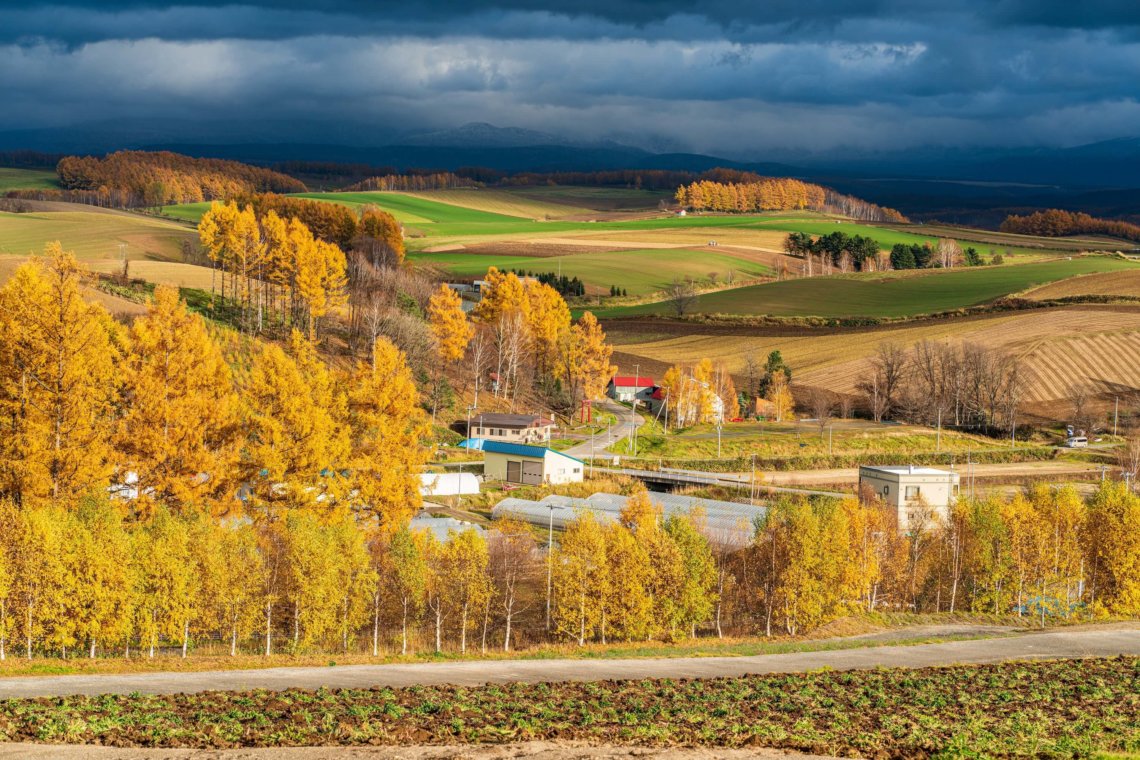
Notes About Travel in Rural Japan
Traveling through the Japanese countryside is ultimately easier than many travelers imagine. Here are a few key things you should know, which are generally applicable to the destinations featured below (and rural Japan on the whole).
- Expect to stay in ryokans (Japanese-style inns) at least some of the time. Even in less-visited regions most cities have hotels, but in very remote areas there may only be Japanese-style options.
- Trains in Japan are wonderful and the country has a comprehensive rail network, but in off-the-beaten-track areas it’s often easiest to explore by car (some travelers enjoy driving, while others prefer to have a private driver).
- It’s safe to say you’re likely to encounter fewer English speakers in more rural parts of Japan. Read more on what you should know about the Japanese language .
Without further ado, we present our favorite off-the-beaten-path areas of Japan (not listed in order of preference – we love them all!):

Located in the southwest of Japan, Kyushu is a perennial favorite among Japanese people and Japan enthusiasts for its food, natural scenery, and onsen (hot springs). It’s also the birthplace of shochu , Japan’s most popular distilled liquor.
For most visitors, the gateway to Kyushu is the city of Fukuoka. From Tokyo, Kyoto, and Osaka, it’s a straight shot by shinkansen (bullet train) to Hakata Station.
For some travelers, the easy domestic flight to Fukuoka Airport may make the most sense – and Fukuoka Airport also serves many international flights from throughout Asia.
Below are some of our favorite places and experiences in Kyushu.
Highlights of Kyushu, Japan
- Kyushu’s largest city, Fukuoka , is perhaps Japan’s most “livable” large city, with friendly people, pleasant weather, a dynamic arts scene, and amazing cuisine. The food in Fukuoka (also known as Hakata) is a major draw for culinary travelers: the city is known for its yatai street stalls, tonkotsu ramen, and much more.
- Beppu is Kyushu’s most famous onsen destination, but for a less “gaudy” experience try the more laid-back town of Yufuin , or the hot springs village of Kurokawa Onsen .
- The city of Nagasaki is worth visiting for its history (both during the Edo Period, and WWII), its charm, and its eclectic cuisine.
- For travelers interested in traditional and modern craft, Saga Prefecture is a must, with highlights including Arita , Imari , and Karatsu .
- Mount Aso is one of Japan’s most impressive volcanoes, and don’t miss the chance to enjoy a picturesque boat ride through the majestic Takachiho Gorge .
- The best place to experience Kyushu’s natural wonders is on the remote island of Yakushima , a few hours’ ferry ride (or short flight) from Kagoshima , Kyushu’s southernmost city. Yakushima is a dream for nature lovers, with ancient forests, hikes to waterfalls, and more.

Located in northern Japan (just south of Hokkaido), the Tohoku region is by far one of our favorite of Japan’s lesser-visited areas. Thanks to its relatively out-of-the-way location, most travelers end up missing it. This is unfortunate for them, but good news for you if you’re looking for an authentic off-the-beaten-track experience.
Tohoku is a large region including various distinct prefectures (Akita, Aomori, Fukushima, Iwate, Miyagi, and Yamagata), and there is no single “best” way to explore it all.
A common route for people visiting Tohoku is to travel from Tokyo to the city of Sendai by shinkansen , and from here continue to explore the region by train and/or car (if you skipped ahead, see above for Notes About Travel in Rural Japan ).
Below are some of our favorite places and experiences in Tohoku.
Highlights of Tohoku, Japan
- Tohoku’s largest city, Sendai , is a convenient gateway to many of the region’s rural highlights, and is worth a stop in its own right – especially if you love Japanese food . Sendai has a vibrant culinary and nightlife scene, with great izakayas and local sake .
- Long famed in Japan as one of the country’s most scenic destinations, Matsushima Bay is a lovely place to hike or just enjoy the views. The nearby port town of Shiogama is an excellent place to enjoy fresh sushi.
- Like Kyushu, the Tohoku region has too many wonderful onsen to name. Visit the quintessential hot springs town of Ginzan Onsen (said to have inspired Ghibli ), or venture to the remote Nyuto Onsen for an unforgettable rustic onsen experience.
- The Sanriku Coast is remarkable not only for its scenery and traditional towns, but also for its resilience following the tragic tsunami of 2011.
- For history lovers, the cities of Kakunodate (most famous for its samurai district) and Hirosaki (most famous for its castle) are highly worth visiting.
- One of Japan’s most spiritual areas, Dewa Sanzan (the Three Mountains of Dewa) is a traditional pilgrimage destination, with beautiful scenery, historic shrines, and great hiking options. (While not in Tohoku, read about Mount Koya , another spiritual destination in Japan.)
- The entire Hachimantai region is a nature-lover’s dream, with Lake Tazawa (Tazawako), mountain hikes galore, and a wealth of natural hot springs (including Nyuto Onsen mentioned above).
Tohoku is too large and its regions too varied to succinctly summarize, but hopefully this piques your interest in this often overlooked part of Japan.

Even among this collection of Japan’s hidden gems, Shikoku stands out for its beauty and remote feel. If you’re looking for an isolated yet stunning slice of the Japanese countryside, Shikoku is a fantastic destination to consider.
Why visit Shikoku? Beautiful nature, peaceful villages, art islands, wonderful local food (including Japan’s best udon), hot springs, and a rich traditional culture including matsuri such as the lively Awa Odori.
Most travelers enter Shikoku via the cities of Takamatsu or Tokushima, and the ideal entry point will depend on your first destination.
It is possible to explore some of Shikoku by rail, but — echoing the Notes above — a rental car or private driver is likely your best option, as transport links within the island are relatively limited. (If your main destination is the art island of Naoshima, a car is not as essential.)
Below are some of our favorite places and experiences in Shikoku.
Highlights of Shikoku, Japan
- Actually just off the coast of Shikoku, Japan’s famous “art island” of Naoshima is a major draw for travelers interested in art and architecture (see our introduction to Naoshima ). A short ferry trip away is the lesser-visited island of Teshima , home to the awe-inspiring Teshima Art Museum .
- Perhaps Shikoku’s most important gateway, the city of Takamatsu is worth exploring. You could spend hours at Ritsurin Koen, a spacious and elegant garden, and make sure to sample the local udon at one of the city’s many specialty shops.
- Kotohira is a small, charming town featuring the island’s best-known shrine, Konpira-san (also known as Kotohira-gu), as well as a magnificent old kabuki theater, Kanamaru-za.
- The lively city of Matsuyama is full of history and flavor, and home to one of Japan’s oldest hot springs destinations, Dogo Onsen , along with the original preserved Matsuyama Castle (Matsuyama-jo).
- To get away from it all, venture to the Iya Valley deep in Shikoku’s hard-to-reach interior, where you’ll find striking landscapes, delightful old-fashioned accommodations, hiking and rafting, as well as hot springs and waterfalls.
- The Shikoku Pilgrimage (Shikoku Henro ) is one of Japan’s most important pilgrimages (another, though not on Shikoku, is the Kumano Kodo ), and includes 88 Buddhist temples located throughout the island. Most visitors choose to pay a visit to a small selection of the temples.
- Located just east of Teshima (see above), the island of Shodoshima is known for its traditional soy sauce production as well as its Mediterranean climate and bountiful olive groves.
- The charming town of Uchiko is an attractive detour for travelers who enjoy picturesque old streets and little old-fashioned shops.
- The laid-back city of Kochi , on Shikoku’s southern coast, feels about as far from the mainland as possible. Like Matsuyama (mentioned above), the city boasts an original castle, along with temples, famed local cuisine, and beaches nearby.
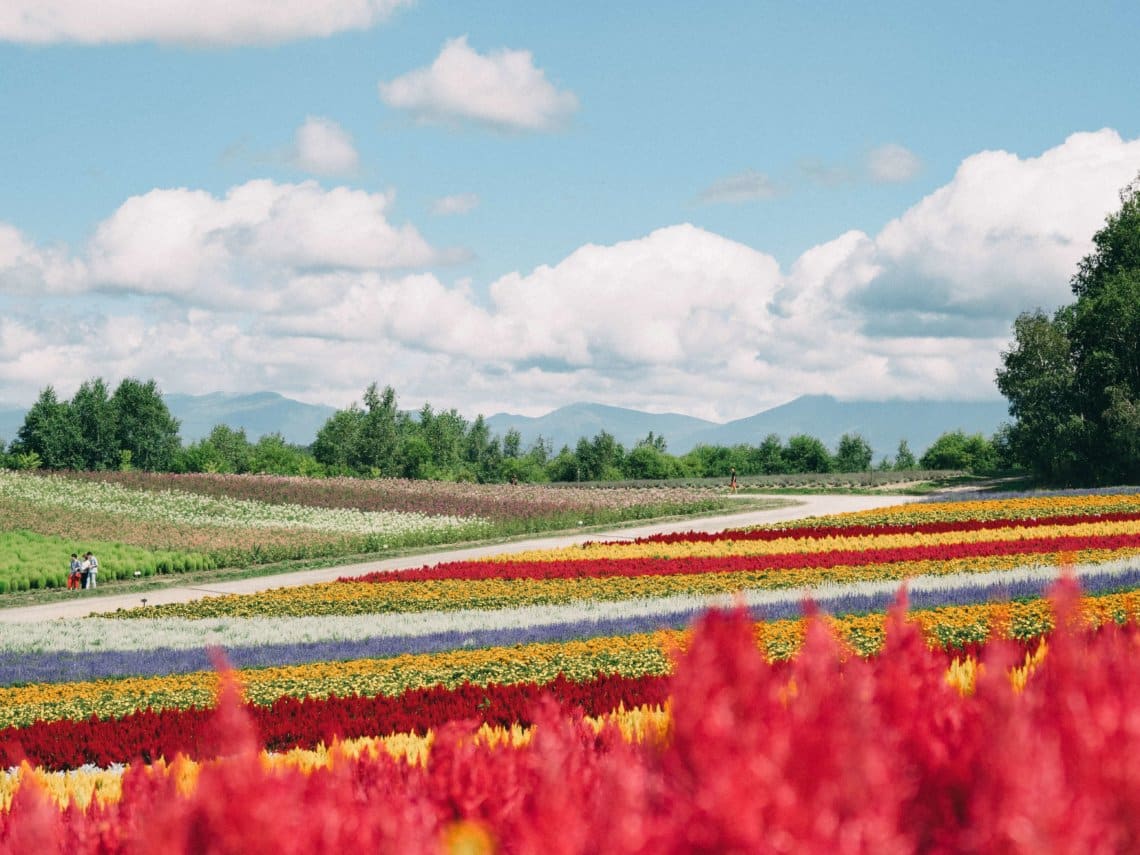
4. Hokkaido
Hokkaido, Japan’s northernmost island, is no “secret,” and in fact is quite well-known especially thanks to its incredible skiing and snowboarding. But beyond its famous winter highlights most travelers don’t realize how much Hokkaido has to offer — and what an appealing summer destination it is.
When most of Japan is dealing with the intense heat and humidity of summer, Hokkaido is irresistibly pleasant, making it an ideal time to explore the island. It also has a beautiful if brief autumn before the long, snow-filled winter begins.
Unlike most of Japan, Hokkaido is renowned for its wide-open spaces, and it’s a great destination for travelers interested in the outdoors, adventure sports, and wildlife.
Perhaps even more importantly — at least for many of our travelers — Hokkaido is an extraordinary culinary destination, worth visiting for its seafood (and some of Japan’s best sushi and sashimi), produce, dairy (including outrageously good cheese), and even bread and pastries (the island is home to some amazing bakeries).
For most travelers, the easiest way to get to Hokkaido is by domestic flight. There are plenty of daily flights from throughout Japan to the Sapporo area’s New Chitose Airport (which also serves a number of international destinations).
Another option for travelers with a bit more time is the Hokkaido Shinkansen. You can get from Tokyo to the southern Hokkaido city of Hakodate in just a few hours.
(In line with the Notes above, once in Hokkaido a car may be your best bet for exploring the island, depending on your itinerary.)
Below are some of our favorite places and experiences in Hokkaido.
Highlights of Hokkaido, Japan
- If you’re visiting for the nature, you may be tempted to skip Sapporo , the island’s largest city. But if you’re here for the food, you’ll want to spend some time eating your way around this lively city. Along with its cuisine, Sapporo also has a smattering of interesting art and architecture, and in winter plays host to the famous Snow Festival (Yuki Matsuri).
- Home to what some skiers and snowboarders believe to be the world’s best powder, Niseko is Japan’s most famous ski resort (and also home to a dynamic culinary scene). Among too many to list, other winter resorts in Hokkaido include Rusutsu , Furano , Kiroro , Tomamu , and Asahikawa .
- Noboribetsu Onsen is one of the best places to enjoy an exquisite ryokan stay, with beautiful natural surroundings and splendid meals featuring local and seasonal ingredients.
- The UNESCO World Heritage Shiretoko National Park stands out even on this list as one of Japan’s most remote areas, home to some of the country’s most pristine wilderness and wonderful wildlife viewing opportunities.
- Biratori is a small town rich in indigenous Ainu culture and home to the Biratori Nibutani Ainu Culture Museum.
- If you take the shinkansen from Tokyo, you’ll end up in Hakodate , renowned for its seafood and morning market, and its small historical districts.
- Along with skiing in winter, Furano is a popular destination for its lavender fields in summer, and the idyllic Biei nearby is also home to vibrant flower fields.
- Another top winter destination, Asahikawa , is also one of Hokkaido’s best hiking areas in summer, with easy access to the impressive Daisetsuzan National Park .
- Yoichi , where you’ll find the Nikka Whisky Yoichi Distillery, is an important destination for whisky lovers. On the way or as a detour, the port town of Otaru has a small historical district (and excellent seafood).
- On Hokkaido’s eastern coast, Abashiri is home to the Museum of Northern Peoples, and the Moyoro Shell Mound Museum.
- Wildlife enthusiasts also flock to Kushiro Shitsugen National Park for a chance to witness endangered Japanese cranes.
- Last but certainly not least, Hokkaido is home to a wealth of pristine lakes, from Shiretoko (mentioned above) to Lake Akan , Lake Toya , Lake Kussharo , Lake Shikotsu , Lake Onuma , and Lake Mashu .
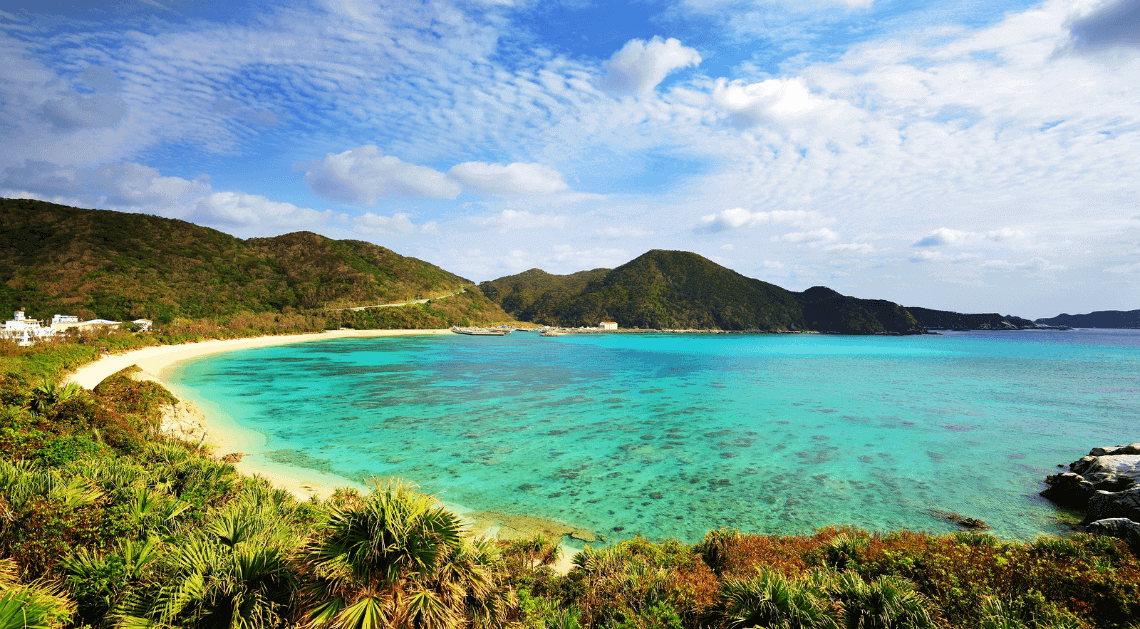
Most people have heard of Okinawa (like Hokkaido, its existence is no secret), but few travelers realize just how beautiful it is. Because of this, we consider Okinawa to be one of Japan’s most underrated destinations.
Imagine a more laid-back, subtropical version of Japan, and you can begin to picture what makes Okinawa so appealing. With lovely beaches and jungles, the scenery is spectacular; you’ll find world-class scuba diving and marine life; and the weather is fantastic year-round (though note that it does get cool at times of year).
Okinawa’s islands are full of picture-perfect beaches, but we typically recommend Okinawa most for travelers who are interested in a combination of stunning landscapes, activity, and local culture. The rich and fascinating Ryukyu culture lives on in many aspects of life throughout the islands, including in Okinawa’s food , lively music, and distinctive architecture.
One reason many travelers skip Okinawa is its distance from mainland Japan, though this shouldn’t stop you. There are convenient flights from major Japanese cities to Okinawa (there are also some international flights).
Most travelers fly into Naha Airport on Okinawa’s main island, or New Ishigaki Airport on the island of Ishigaki in Okinawa’s far-flung Yaeyama Islands. Flights to the larger Naha are more frequent, but you may want to skip Naha and the main island if you’re opting for an off-the-beaten-path adventure in the Yaeyama Islands.
Once in Okinawa, expect to travel by ferry for shorter island-hopping excursions, and inter-island flight for longer trips (for example, from Ishigaki to Naha).
Below are some of our favorite places and experiences in Okinawa.
Highlights of Okinawa, Japan
- We love Okinawa on the whole, but if you only visit one area consider the secluded paradise of the Yaeyama Islands , which are actually located closer to Taiwan than mainland Japan. The Yaeyama Islands include Ishigaki, Iriomote, and Taketomi (more on these below), as well as Yonaguni (particularly famous for its scuba diving), Kohama, and Hateruma.
- Begin your Yaeyama Islands adventure in the small city of Ishigaki . Some travelers choose to stay on Ishigaki and use it as a convenient base for island-hopping around the local islands. Ishigaki itself is famous for the scenic Kabira Bay, and is also full of places to enjoy Okinawan food and music (the sound of the sanshin is intoxicating). You can also hike, bike, snorkel, and dive.
- From Ishigaki, the nearest island is tiny Taketomi , which has pretty beaches, and a quaint and beautifully-preserved historical town center.
- Another wonderful island within easy reach of Ishigaki is the lush, jungly island of Iriomote , which offers great hiking, waterfalls, canoeing and kayaking, SUP, and more.
- Located between the Yaeyama Islands and Okinawa’s main island is Miyako Island (Miyako-jima), another off-the-beaten-path gem, known for its great beaches and marine activities.
- Okinawa (the main island, Okinawa Honto) is a major draw for tourists thanks to its convenience and plethora of resorts. While we still tend to recommend more out-of-the-way islands, it can be a good option for families. Its main city of Naha offers plenty to do, including the colorful Makishi Market and the unique Shuri Castle. Most of the resorts are further north, where the Churaumi Aquarium is also located.
- Near the main island you’ll also find the Kerama Islands National Park , with a quieter atmosphere and — you guessed it — great beaches!
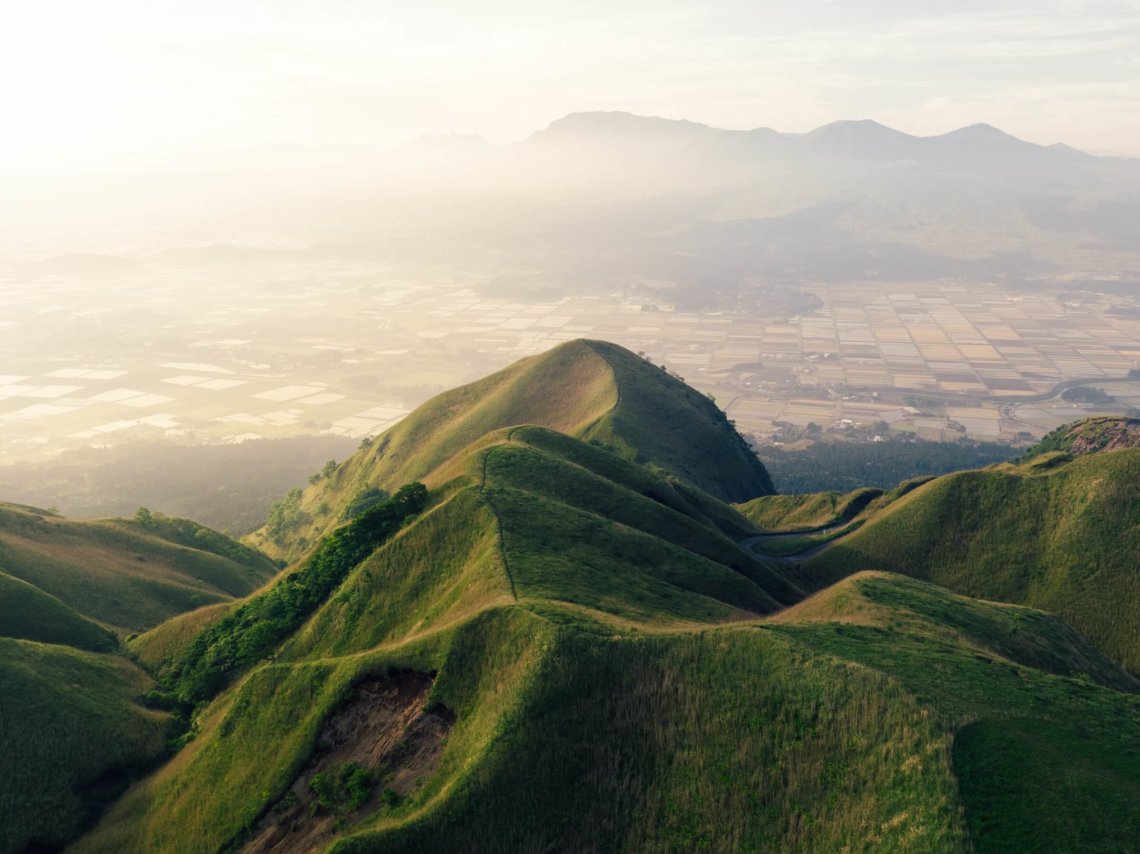
Looking for more inspiration?
We hope our guide to Japan’s best off-the-beaten-path destinations helps you as you plan your Japan trip! For more inspiration, see our 25 Japan experiences to add to your bucket list .
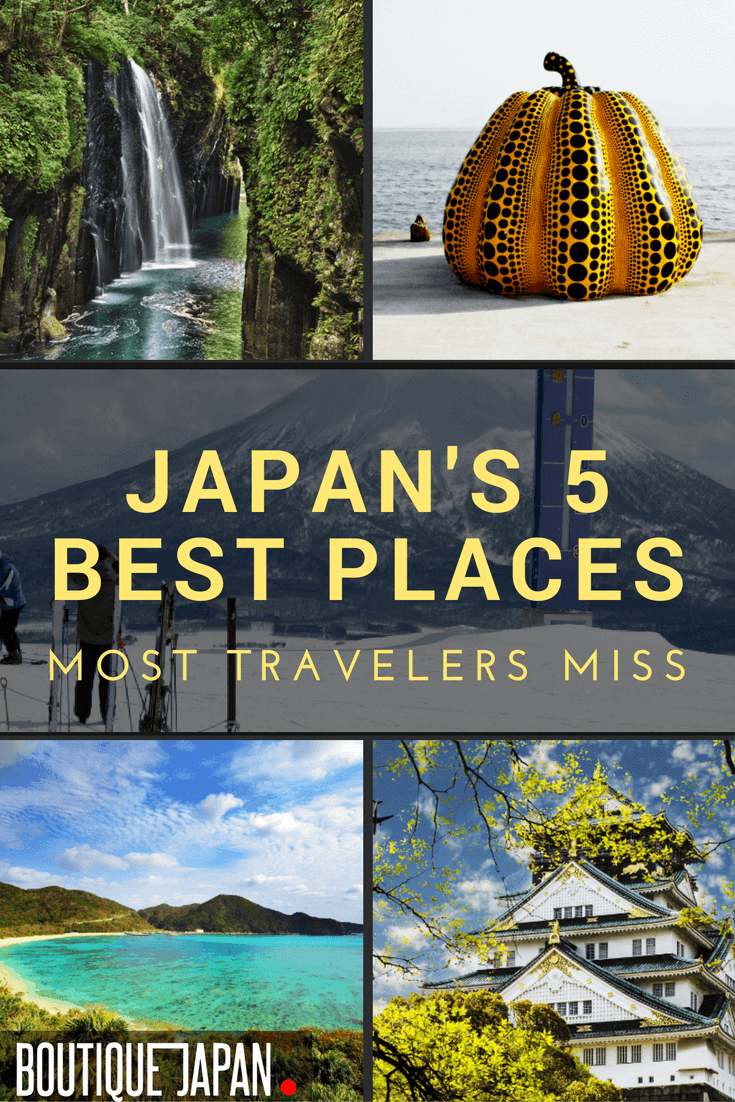
More Great Posts

Is Japan Expensive?
One of the most common myths about Japan is that it’s incredibly pricey — but how expensive is Japan really?…

Japan’s Best Boutique and Luxury Hotels & Ryokans
The best hotels and ryokans in Japan range from charming traditional inns in the countryside, to stylish design hotels and…

Traveler’s Guide to the JR Pass (Is It Worth It?)
The Japan Rail Pass (or JR Pass, for short) can be a good way to get around Japan, but many…
Plan Your Japan Trip
Learn more and contact us to discuss your unique trip.
Get Started
- The Process
- Testimonials
Japan Off The Beaten Path – 10 Hidden Gems You Should Travel To

Japan is everything that people say it is, and so much more.
For the repeat-travelers, ones avoiding the tourist traps, there’s plenty of deep culture left to discover. For those who’ve booked an extra-long stay or are looking for something a bit different, you’ve come to the right country; novelty and variety abound.
Condensed cities hosting populations in the millions offer a staggering number of activities. Historical structures, isolated communities, and nigh-inaccessible, untouched nature offer a glimpse at Japan you won’t see on TV. You’re spoilt for choice when it comes to places to visit.
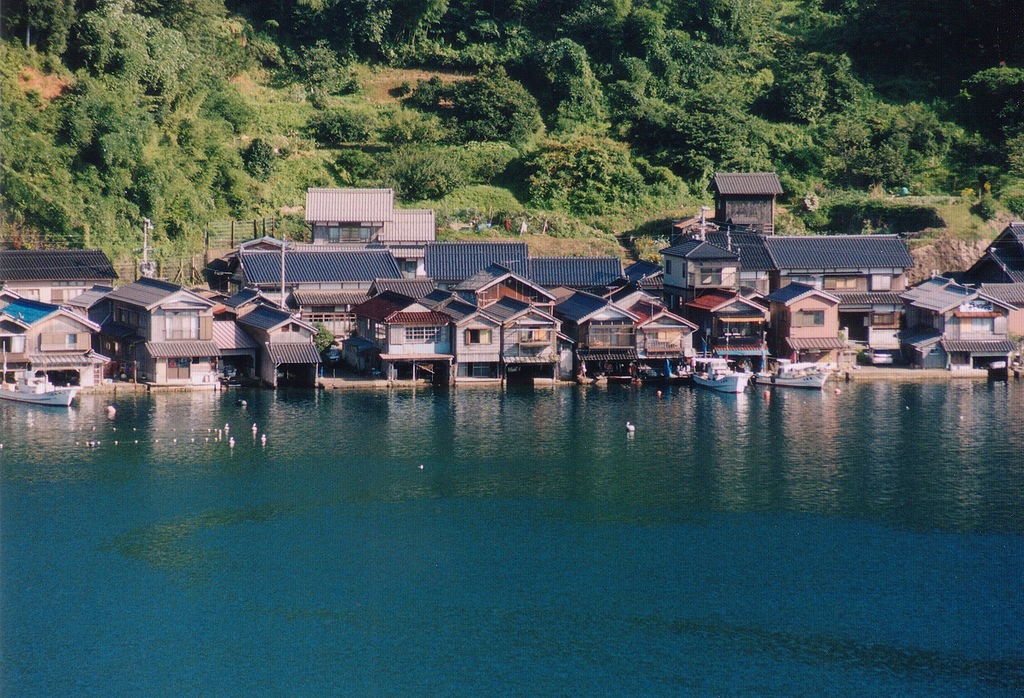
For those wanting a bit more of an ‘off the beaten path’ experience, then have we got a list for you. Below, we’ve curated our version of the best ten underrated places you should go in Japan. Most have been thoroughly covered by the locals, but Western media hasn’t quite made it out this far yet, so now is the best time to visit.
Read on and prepare to cram your itinerary!
Japan Off The Beaten Path – 10 Underrated Destinations You Should Visit!
Here are our ten favorite off-the-beaten-path places to visit in Japan:
- Nachi Falls
- Kurokawa Onsen
1. Narai Juku
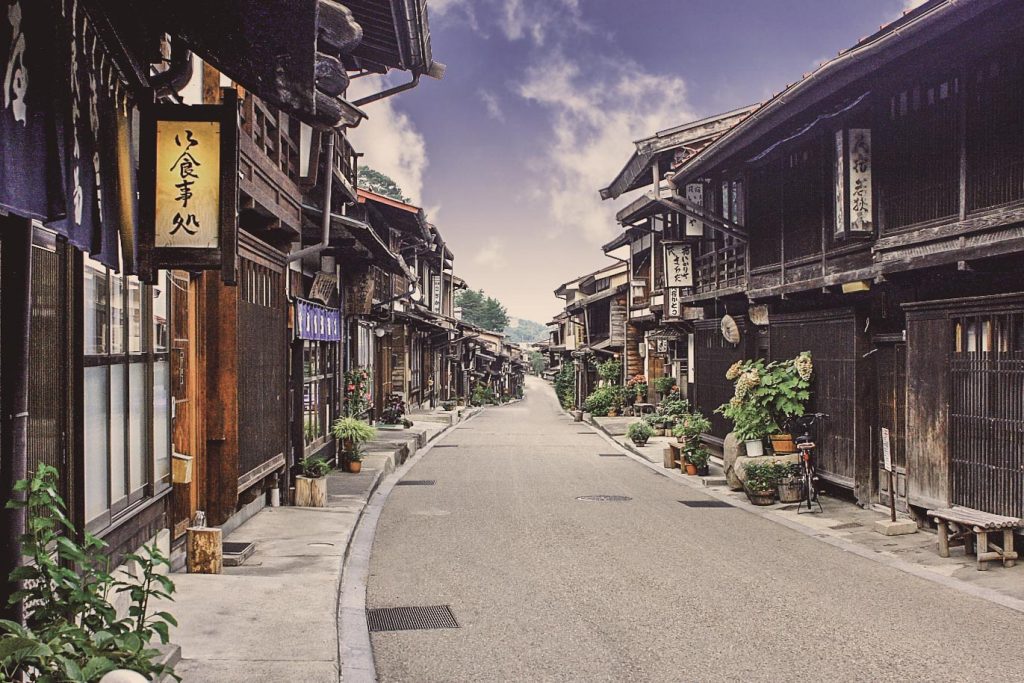
The quaint, historic post town of Narai Juku has been standing since the Edo Period (1600s to the 1800s). Post towns were purposely built along major merchant and pilgrim routes to accommodate travelers.
It’s famous for a number of things: being the historic mid-way point between Kyoto and Tokyo, having the longest stretch of traditionally built houses on its route, and, most notably, its ability to retain a beautiful, nostalgic atmosphere for hundreds of years.
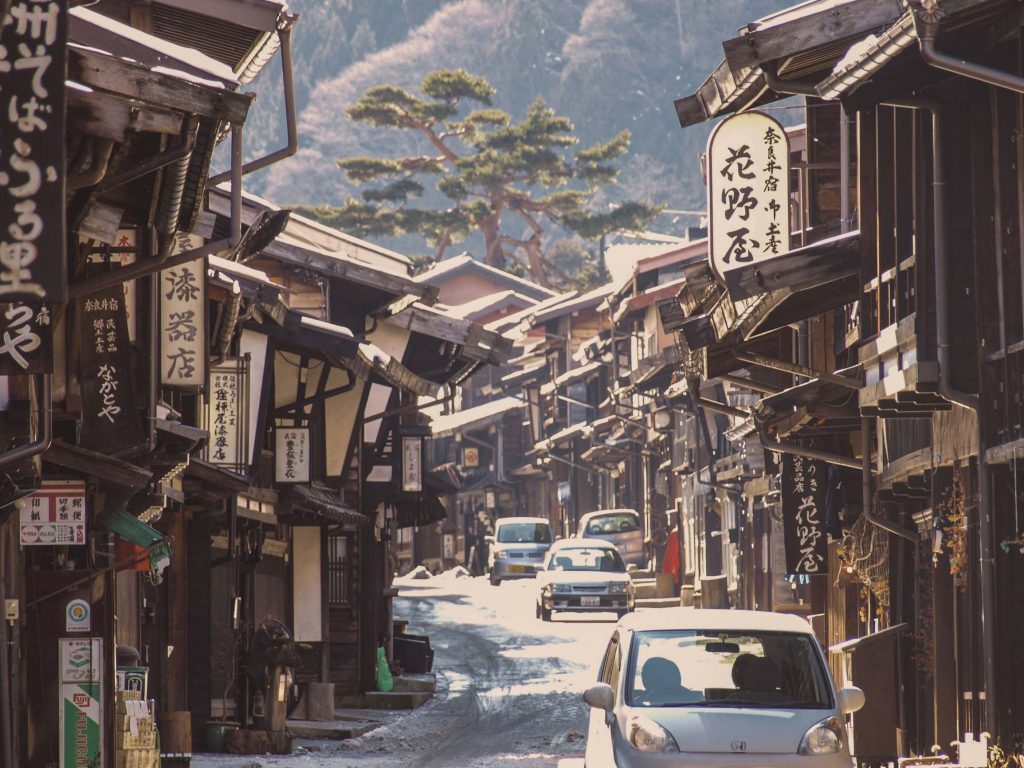
Narai Juku offers a calming exploration experience. Visitors enjoy activities such as visiting original kominka residences or its picturesque bridge and learning about its history at the museum. If you plan ahead, this is a great place to start hiking the famous Nakasendo trail.
If you’d like to read more about it, click on this link to our Narai Juku article .
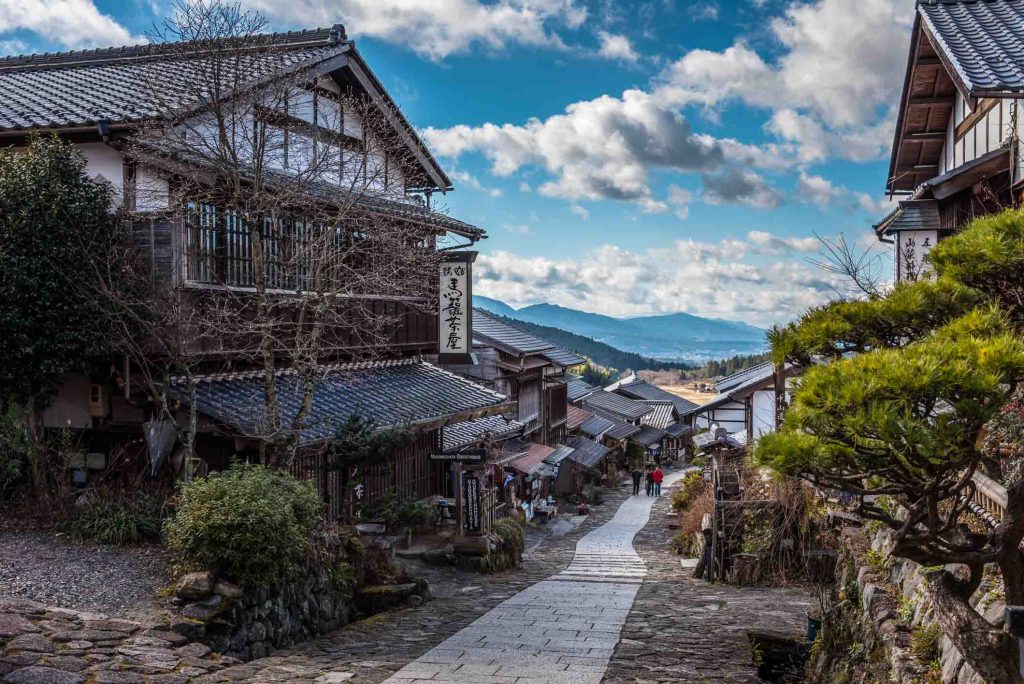
Magome is another Japanese post town that’s very popular with the locals. It has been beautifully restored with a stunning broad stone walkway designed specifically for visitors. Easy navigation, combined with well-manicured landscaping, creates Edo-era photo opportunities everywhere you look!
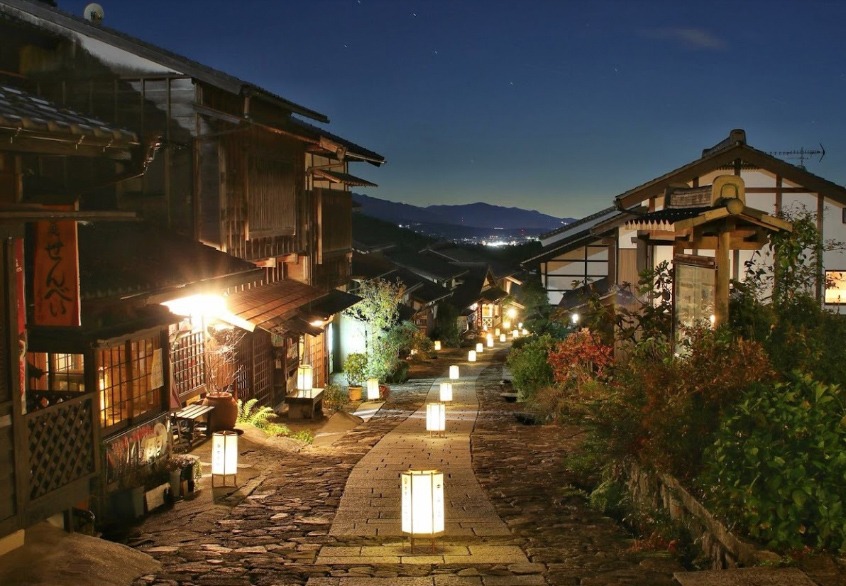
The houses here are as historic as they get, and some have opened up as souvenir shops and restaurants.
Many travelers come to visit the memorial museum of Shimazaki Toson, a figure in Japanese history who hailed from Magome. Others challenge the Tsumago to Magome hiking trail. Thanks to the restorations, plenty head to Magome’s lookout point to get some stunning photos and take pictures along the main walkway in town. During winter, we recommend getting up and out early to beat the crows for photos.
If you’d like to read more about it, click on this link to our Magome blog post .
3. Dogo Onsen
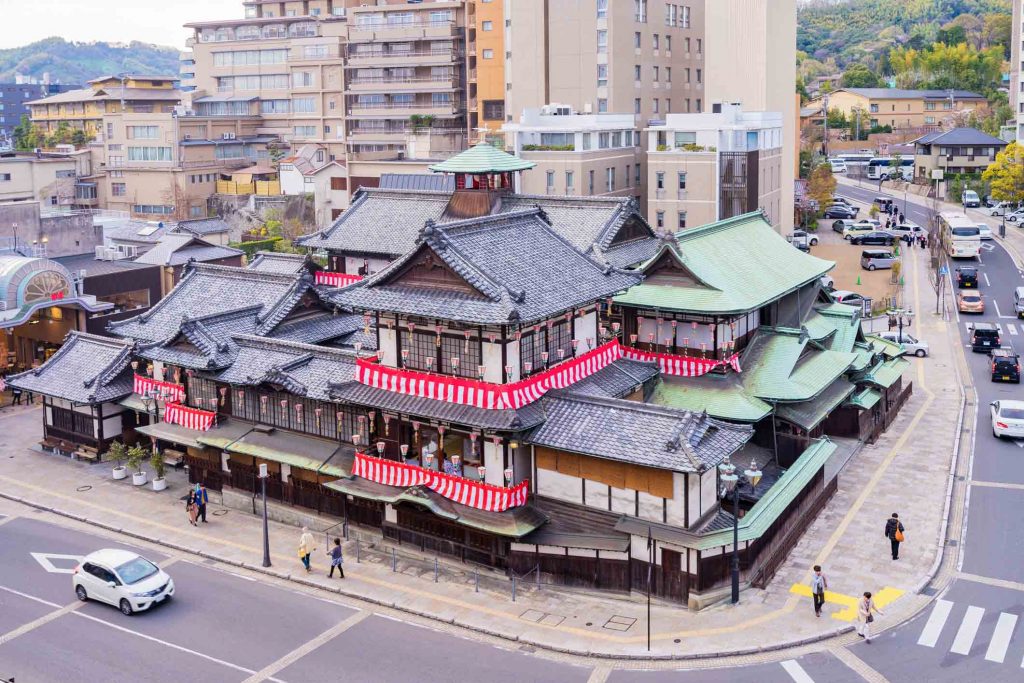
Even if you haven’t heard of the famous Dogo Onsen in Matsuyama of the Shikoku Island, you’ve probably seen it on screen! Its main attraction is the Dogo Onsen Honkan. Does it look familiar? Fans of Hayao Miyazaki’s film, Spirited Away, won’t be surprised to learn that its interior inspired the bath house.
In real life, this onsen was just as luxe, one of the most frequented baths by the imperial family. Of course, the Honkan is a must-see, but the area has plenty of other fantastic sights, right out of the gate-literally.
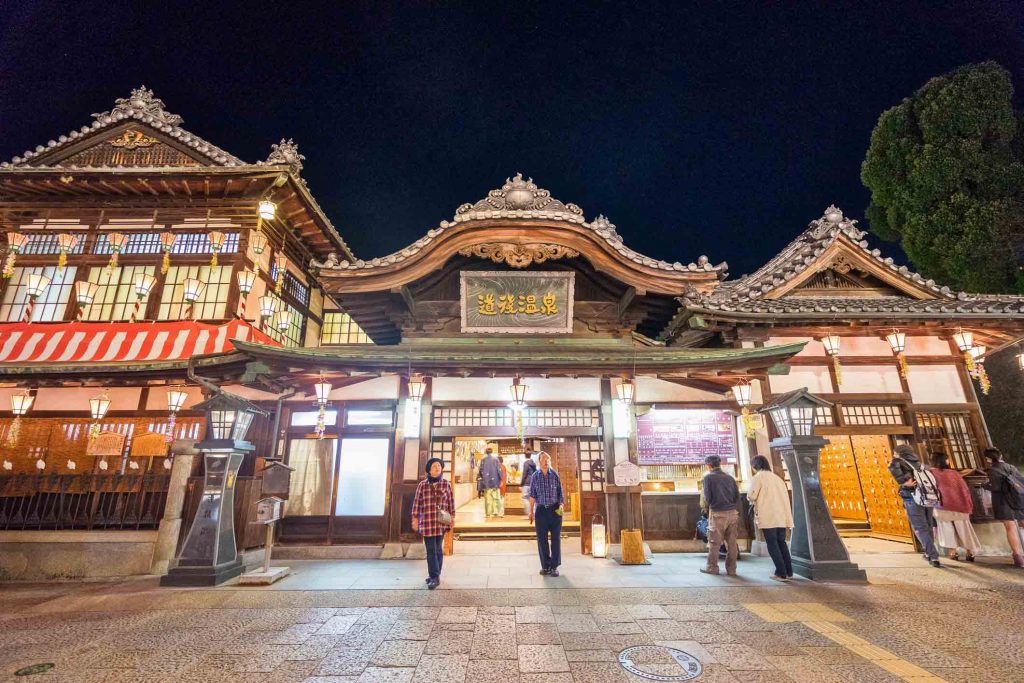
The station is a gorgeous representation of the Meiji period architecture (right near Dogo Onsen Honkan). There is also a clock built straight out of the novel “Botchan”, a fantastic arcade that sells food and souvenirs, and opportunities to try wearing yukata. Relax by soaking in onsen or breathing in the fresh air at one of many shrines and temples.
If you’d like to read more about it, click on this link to our Dogo Onsen article .
4. Nachi Falls
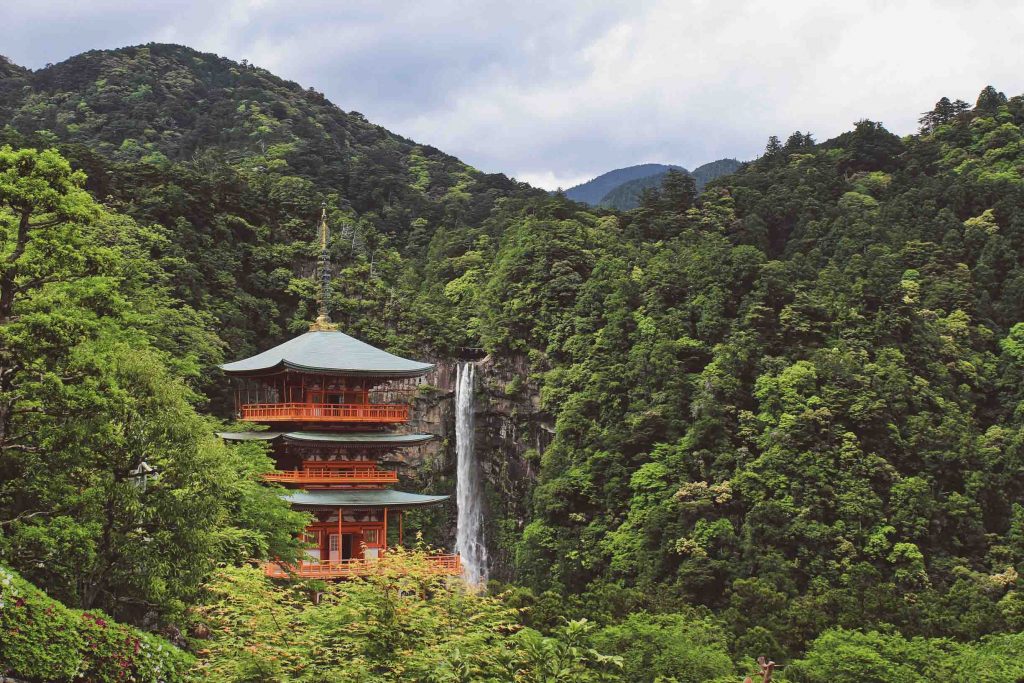
A staggering 133m high, Nachi Falls is the tallest waterfall in all of Japan. Nachi Falls is located next to Kumano Nachi Taisha, one of the main destinations along the ancient Kumano Kodo pilgrimage route. The shrine’s use of Buddhist and Shinto iconography makes it unique to the Kumano region.
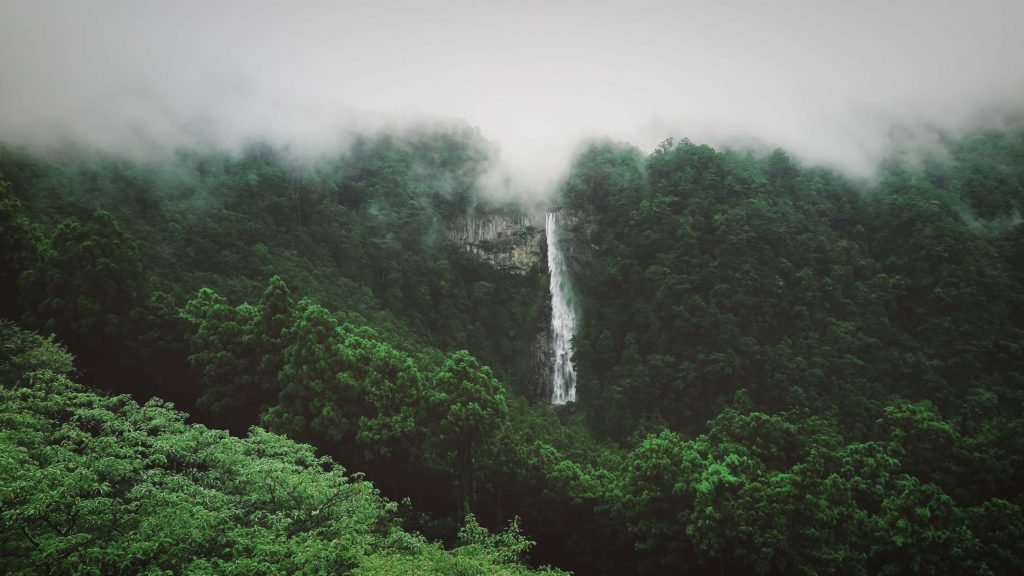
The waterfall itself was revered as the original religious site long before the pagoda and shrine complex were built. Even today, it’s believed to offer a spiritual experience to those witnessing its falls.
If you’d like to read more about it, click on this link: Nachi Falls .
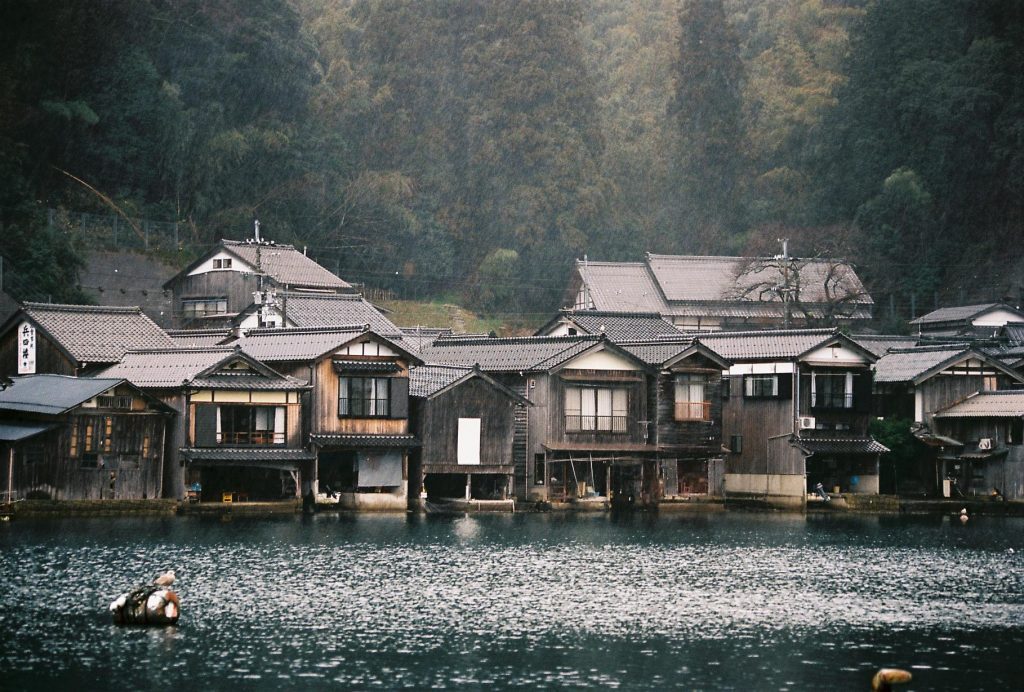
Ine, located north of Kyoto, is one of the most unique communities in Japan. It was, and still is, a historic fishing village with eye-catching waterfront architecture. This outstanding architecture is the ‘funaya’, waterfront boat houses.
The top floor is residential, and the ‘ground’ floor acts as a garage for the family’s waterboats. Ine’s waterfront used to be almost totally occluded by these houses, and even now, over 200 stand along the coast.
Most funaya stayed within the family, but some have been converted into guest houses for visitors. Only a handful accept English-ready reservations, so bookings can be tight.
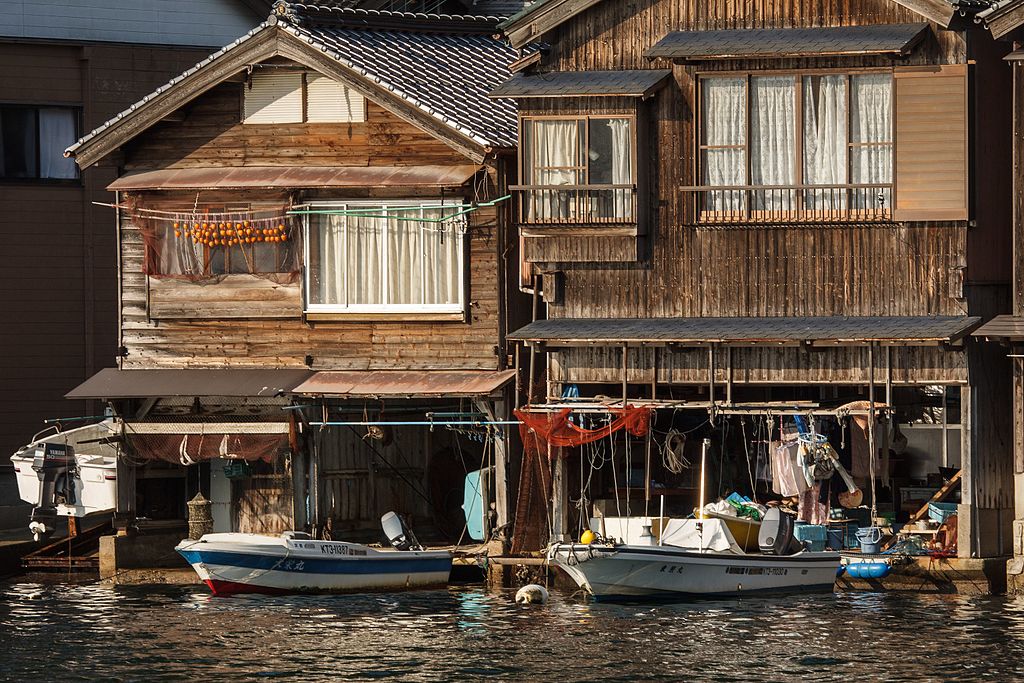
Although staying in one of the funaya homes is key to Ine’s charm, the coastline is even more beautiful when viewed from one of the boats! A relaxing fishing village, visitors spend their time cycling, fishing, and enjoying views from the observation points. Catch a boat tour to see the architecture from afar and enjoy the local atmosphere-plus some tasty, down-home fish dishes.
If you want more info about this village, check this out: Ine Village .
6. Kurokawa Onsen
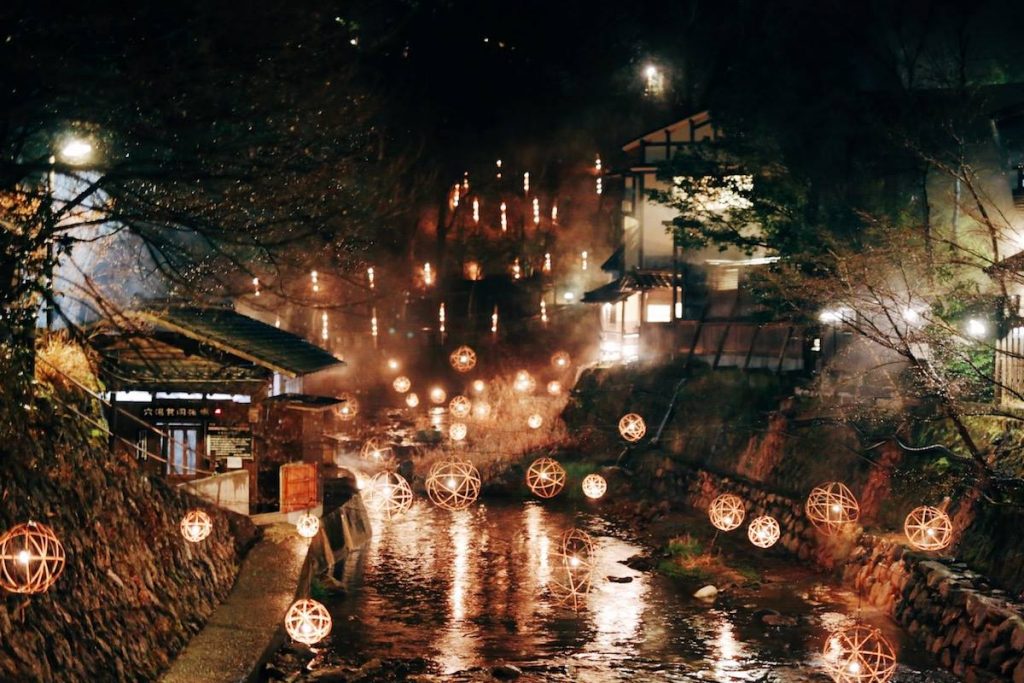
Historic onsen towns are sprinkled all over Japan. While they’ve all got their own charm and aesthetic, there’s something particularly special about Kurokawa Onsen, considered to be one of the most attractive in Japan.
It might be the nostalgic atmosphere that seeps from the original wooden buildings, its unique location right in the middle of nature, or the river that flows through the middle of the town. Whatever it is that draws people here, Kurokawa Onsen is definitely worth a visit. The onsen provides a great stop in Western Kyuushuu for travelers going to and from, too.
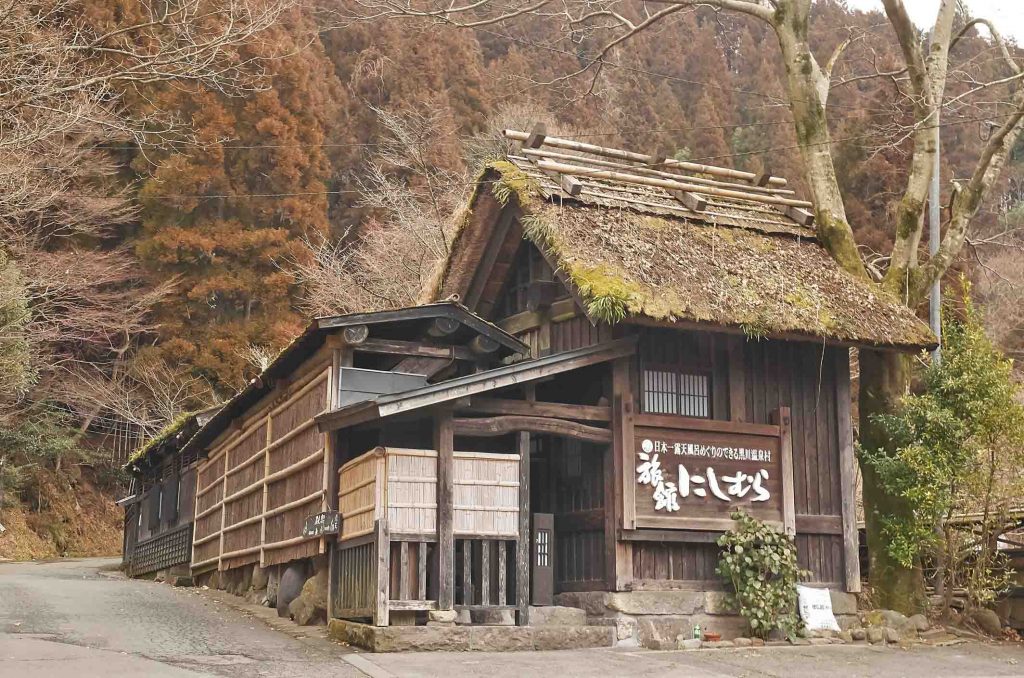
Here, expect roads to be lined with historic buildings and onsen bathhouses, and small souvenir shops passed down within the family for generations. The food at local cafes and restaurants will be local favorites and mom’s-style cooking, with none of the crowds you might expect for being such a beloved onsen!
If you’d like to read more about it, click on this link to our Kurokawa Onsen article .
7. Takayama
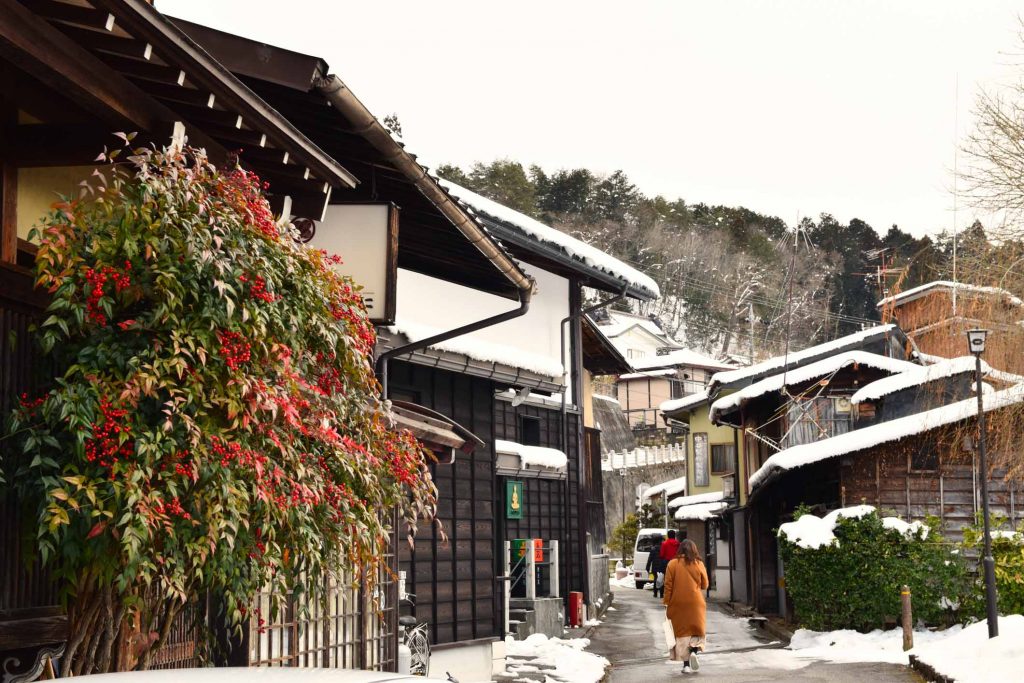
Takayama is in the mountainous Hida region, welcoming visitors with traditional life and stunning seasonal transitions. Takayama has an old-town aesthetic, gorgeous background of mountains, and rivers flowing through town. Because of its easy-to-access location, many tourists find that adding Takayama to their itineraries adds a bit of old-world charm without eating a substantial chunk of the trip.
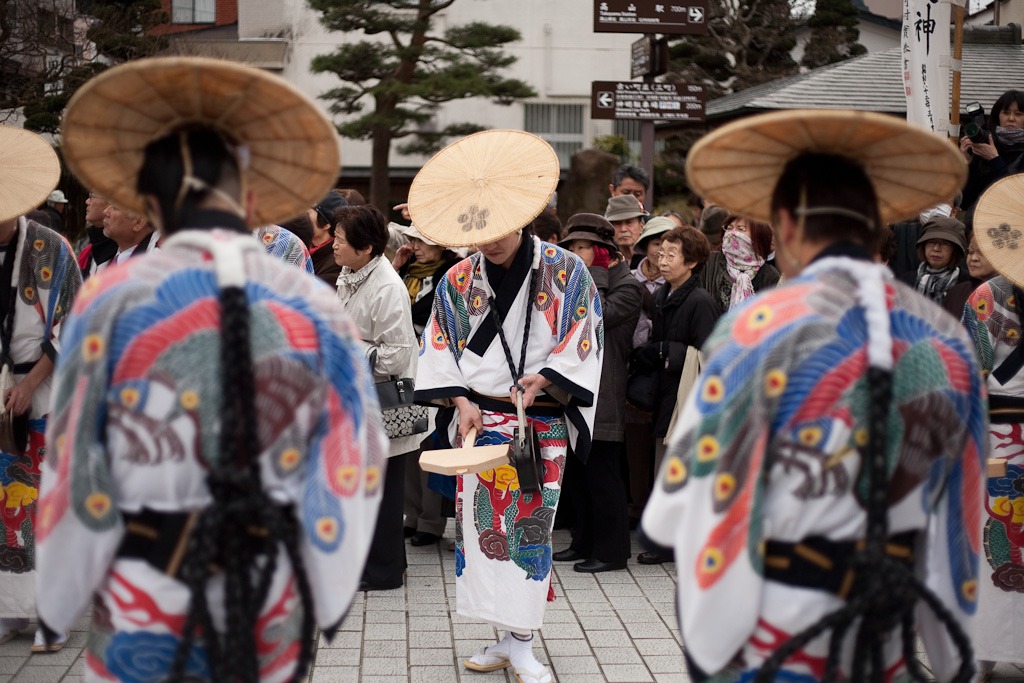
The number one activity in Takayama is actually the Takakama Festival, which happens in both spring and autumn. Held over two days during both seasons, this festival is a splendid display of floats, song, and dance, and plenty of local, home-grown frivolity. The event is so popular that guests often run out of accommodation options in town and book hotels in neighboring areas, so be warned!
You can learn more about festivals in Japan here .
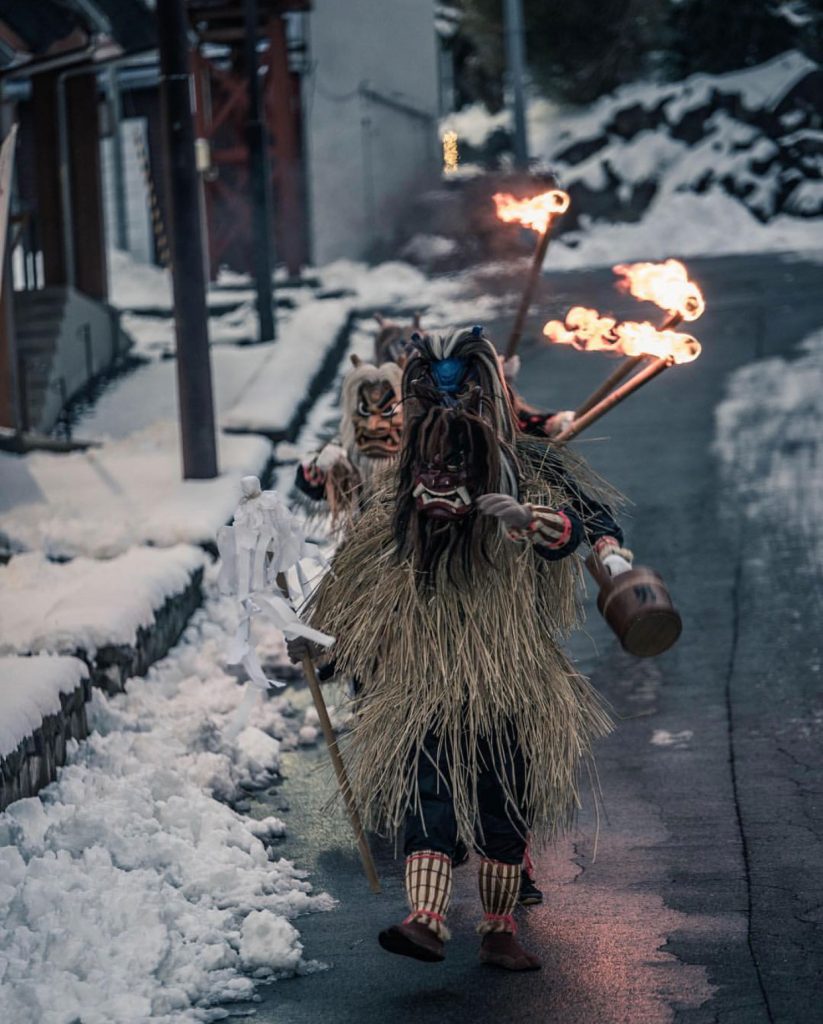
Akita, located in the northern Tohoku region, is a best-kept winter secret in Japan. Like Tohoku’s other prefectures, Akita is known for its stunning mountain ranges, long and mesmerizing coastline, hot spring towns, and historic sites.
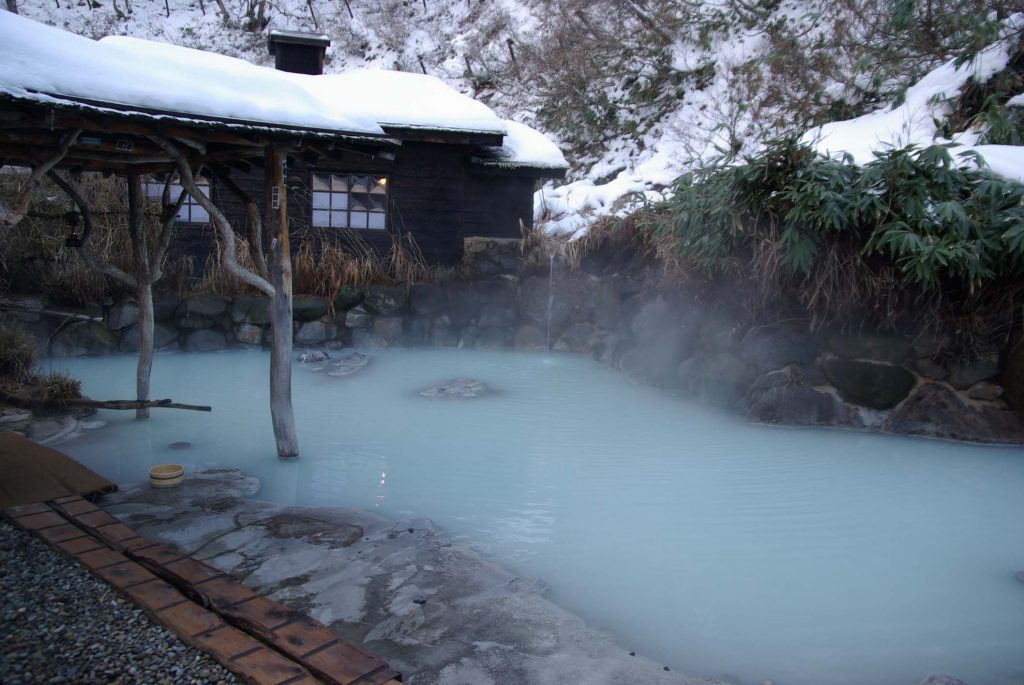
Nyuto Onsen and Kakunodate (a well-preserved samurai city) are two towns worth a stop, while Akita’s Kamakura Festival draws crowds in search of winter fun. The ice sculptures and igloo displays keep guests coming even during Tohoku’s frigid months!
At the end of winter, Akita hosts the Amekko ( Japanese candy ) festival. Beloved by kids young and old, the most popular part of this festival is actually the Akitainu dog parade. Owners and families parade their pooches down Omachi Hachiko Street – something you can’t miss if you visit for the festival!
If you’d like to read more about this wonderful region, click on this link to our Akita blog post .
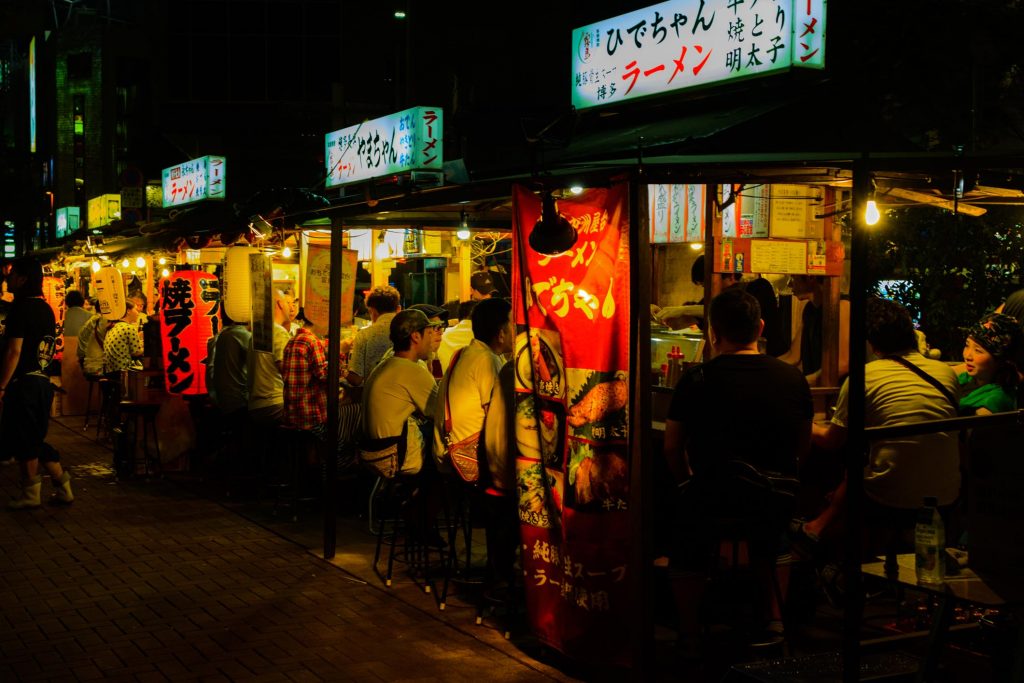
Fukuoka is the largest city in Kyushu and one of the top ten largest cities in Japan, but it rarely appears in tourist guides or must-see lists. We think it’s time to change that. Fukuoka is a bustling city, full of young people, start-ups, and putting special emphasis on new business development and eco-living. All of this makes it a great city for young travelers looking to experience Japan.
Fukuoka is the birthplace of Hakata ramen, now served worldwide at Ichiran ramen chains! Of course, each ramen-ya has its own take on the local favorite. Japanese visitors take gourmet-go-round trips and try as many shops as possible while walking through town. It’s an activity we think foreign guests should try, too! The best way to do this is by strolling through the throngs of yatai food stalls from dusk till dawn. These popular mini-restaurants seat 6-10 guests, and many even manage to bring in crowds waiting for a seat.
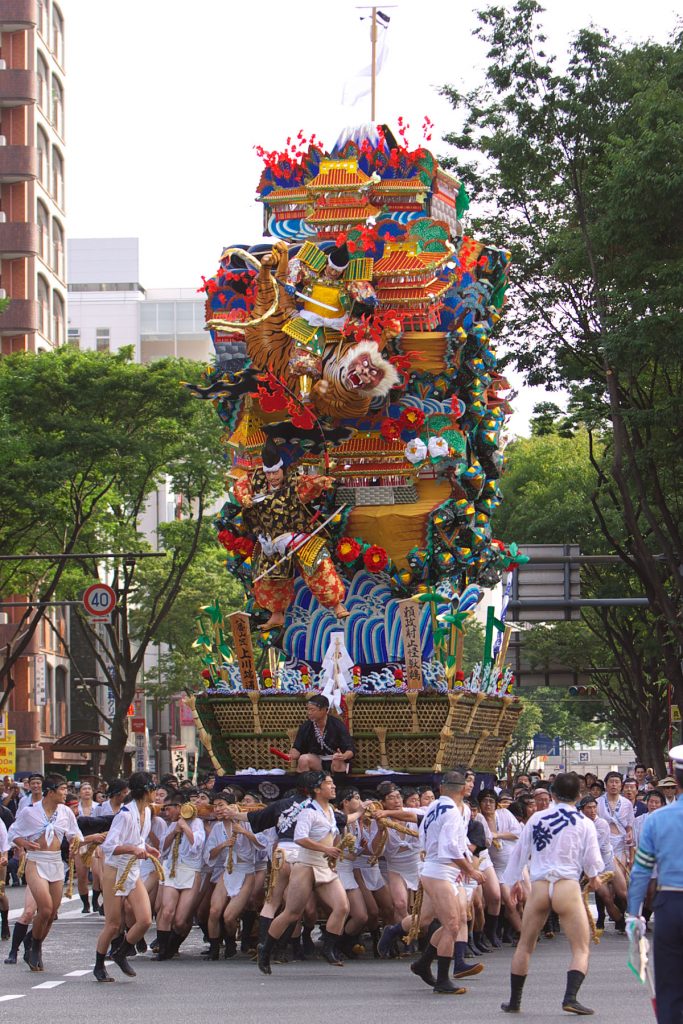
Fukuoka also hosts the Hakata Gion Yamakasa Festival. This is a famous festival with a timed race where intricately decorated floats are pushed along a 5-kilometer course through the city. Fukuoka is great on its own, but it’s considered the gateway to two more fantastic (and underloved) areas, Saga and Kagoshima, too.
10. Asahikawa
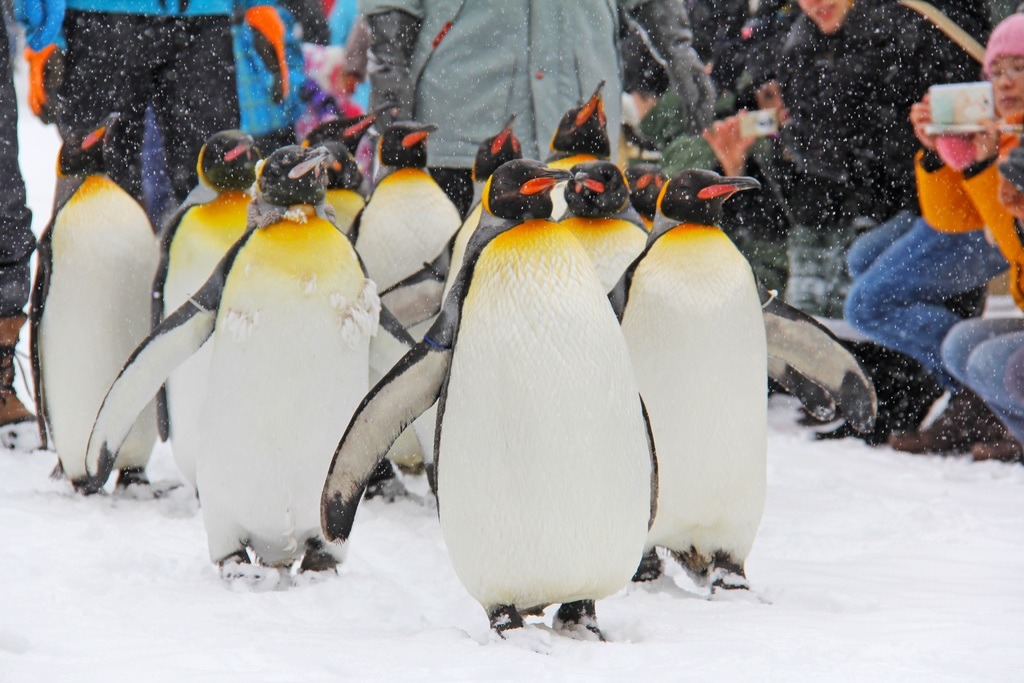
Asahikawa, located on the northern island of Hokkaido , is actually the prefecture’s second-largest city. That said, in light of its much more famous sister Sapporo, Asahikawa has stayed fairly off the radar of tourist itineraries.
For foodies, you can’t go past a bowl of Asahikawa ramen without giving it a shot. Asahikawa’s original local ramen is one food no visitor should miss a chance to try. More heavily reliant on soy sauce than Hokkaido miso ramen or mouth-watering tonkotsu, the dark broth is a first for plenty, foreign and Japanese alike. Because of the harsh Asahikawa winters, the ramen here often features a thin, hardened layer of lard on top.
Don’t be turned off though! The idea is that these extra lipids help trap heat in the bowl longer, like a layer of blubber protecting arctic-dwelling ramen critters. On the outskirts of town, there’s a ramen village offering mega-portions of Asahikawa ramen, as if the normal size weren’t plenty to sustain you through a blizzard.
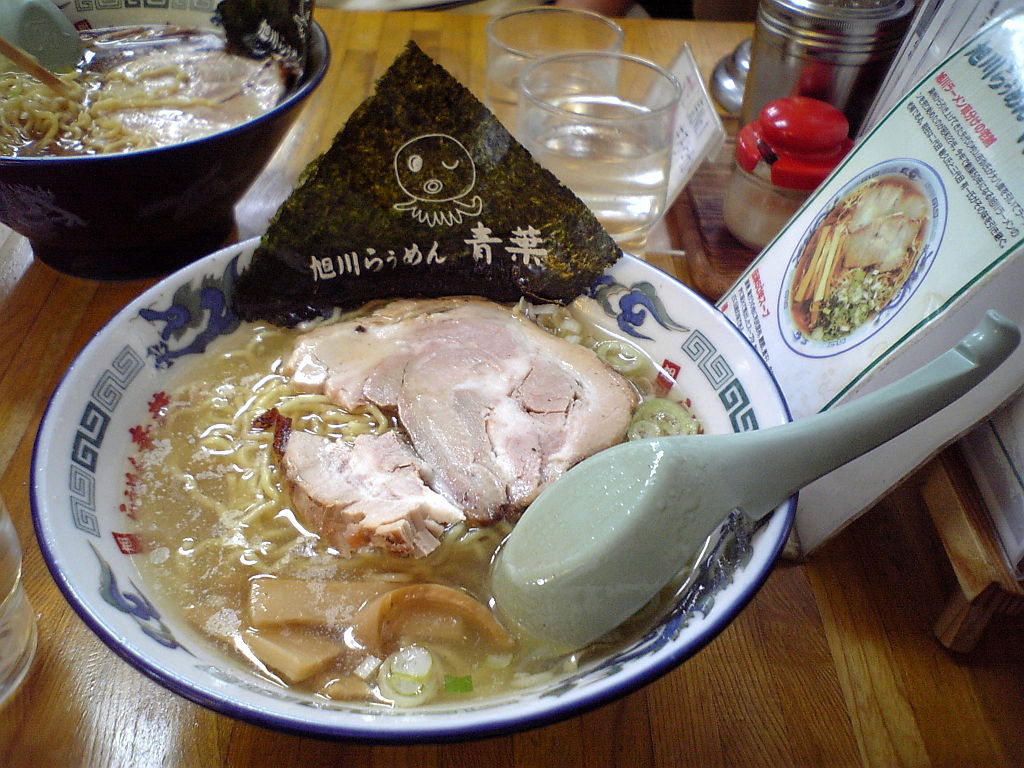
Aside from that, there are heaps to do and see in Asahikawa, including exploring the Otokoyama Sake Brewing Museum, perusing Furaito Alley, visiting the Snow Crystal Museum, skiing and snowboarding, cycling, and shopping!
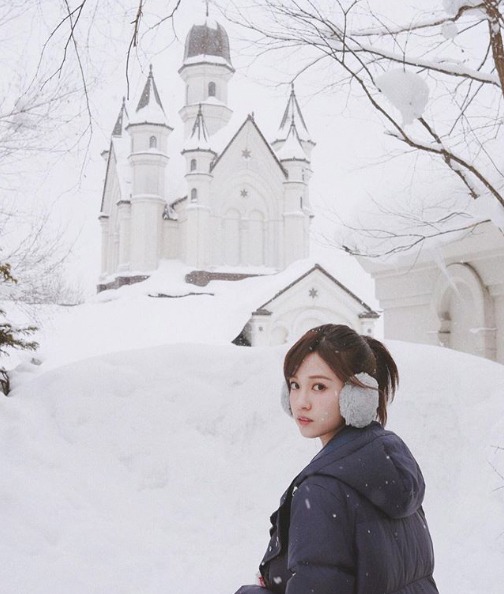
More info about this beautiful city here: Asahikawa .
So, where to?
Wherever you plan to visit, if you can squeeze in one or two of these not-yet-buzzing local hideouts, we promise you won’t regret it. You don’t need to be a Japanese history-buff to enjoy some slow-paced travel in one of these sleepy local towns. There’s plenty of city life too, if you know where to look! Don’t limit your adventures to what you can find in travel books. Get out to where the locals visit and discover the real Japan.
Find all our tips to travel to Japan here: Japan Travel Blog .
Leave a Reply Cancel reply
Your email address will not be published.
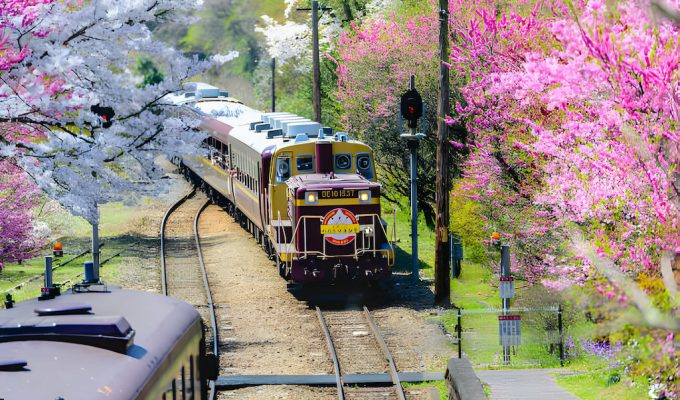
A Complete Guide To Enjoy Peach Blossom In Japan
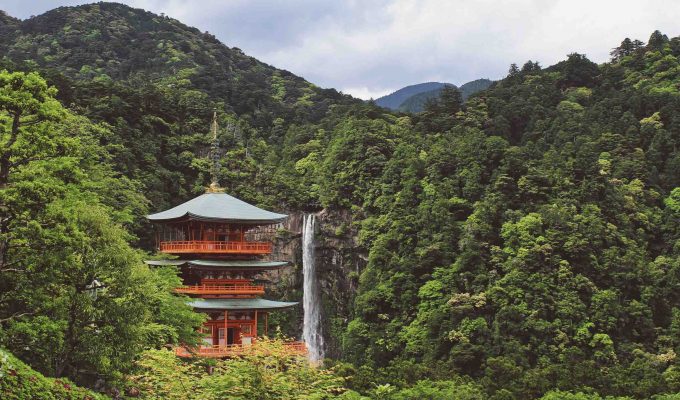
Japan Travel Blog 2024 – The Ultimate Guide To Visit Japan
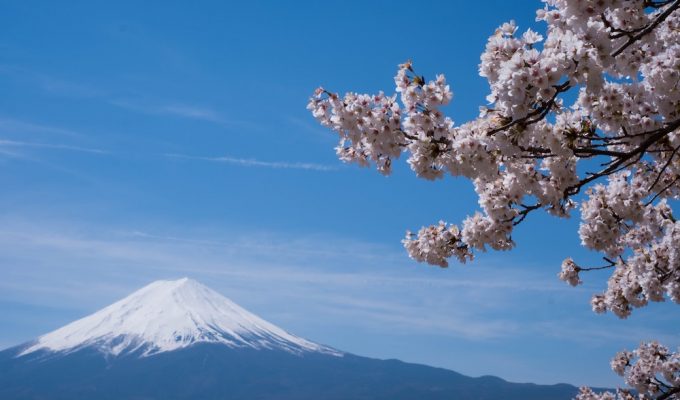
Cherry Blossom Forecast Japan Spring 2024 – When To Enjoy Sakura
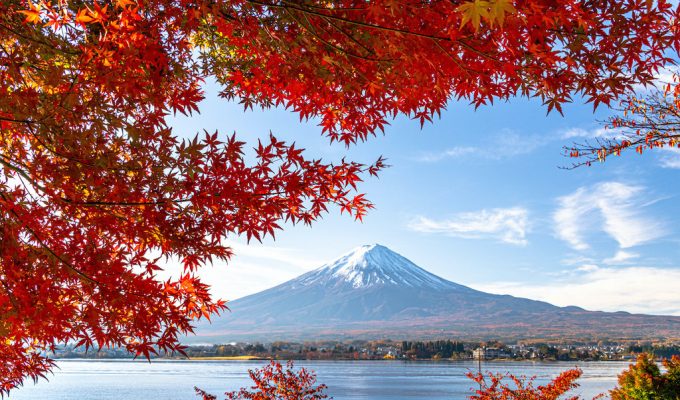
The 10 Most Beautiful Autumn Leaves Spots In Japan
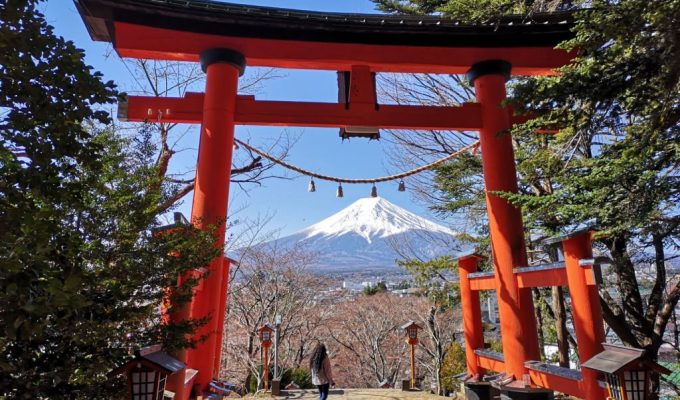
The 15 Most Beautiful Torii Gates In Japan You Have To Visit
The 10 coolest & most unique hotels in japan.

Welcome To The New Sumo Restaurant In Tokyo: Asakusa Sumo Club
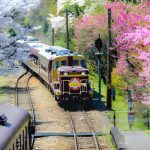
Discover Otsu – 10 Things To Do In This Beautiful Hidden Town Near Kyoto
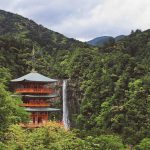
Zao Onsen – Get Off The Beaten Track And Visit This Gorgeous Onsen Town
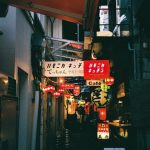
Explore Kichijoji in Tokyo – Full Area Guide You Have To Read!
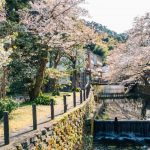
The 7 Best Onsen Towns Near Kyoto You Have To Explore

Secret Places In Japan: 15 Hidden Gems In Japan
Want to travel to lesser-known but amazing places in Japan? We have curated secret places in Japan you can visit. These hidden gems in Japan have lesser tourists and you can enjoy your vacation without the crowd!
Planning for a trip to Japan?
Then I think only the hustling and bustling cities of Tokyo, Kyoto, and Osaka are popping up in your mind. Right?
But you are making a mistake if some of Japan's off-the-beaten paths are not on your bucket list.
Then what about checking out some of the hidden places in Japan that are not discovered by tourists yet?
Well, if you are truly interested, you are just at the right place now.
Today, I am here to let you know some of the secret places in Japan. Visiting them will definitely make your Japan trip different and exceptional.

Revealing 15 Hidden Gems Of Japan
The island country, Japan, is surrounded by a number of smaller islands that are stunningly beautiful and filled with nature.
Therefore, no matter whether you are a first-time visitor or not, these places are worth a visit.
So, let's explore Japan like a local.
Here are the hidden gems for you.
Chichijima Island
When Tokyo is the most visited city in Japan, you might not think that any place can still be left hidden or undiscovered in the Japanese capital.
But what if I mention one such less explored spot in this city which can be a great escape from the crowd of the town?

Yes, I was talking about the island of Chichijima, which is surprisingly only a ferry ride away from Tokyo.
The nature here is waiting for you to reward with a tropical island vibe featuring white sandy beaches and bright blue water.
And if you never see a whale in real life, then this place will make a way out for you.
So, make your dream come true by watching these mysterious sea creatures in the morning.

But for that, you must visit this island between February to April or July to September.
Anyway, after spending the morning whale watching, you can get yourself ready to enjoy snorkeling over a shipwreck in the afternoon.
Now I am going to reveal the most appealing side of this island.
In the water around this island, you will see dolphins throughout the year.
Now tell me. Are you getting excited thinking that you can add "swim with the dolphins" to your Japan bucket list?

From swimming in the blue water to hiking in the nearby mountains, this peaceful place is chock full of outdoor adventures, where you can take a breath of peace for a while, avoiding the bustle of Tokyo.
So, I think this place will be worth visiting for you if mountains, islands, and sea attract you that much.
But if you prefer the opposite of an island as well as water that means desert, consider visiting the next place.
Tottori Sand Dunes
Japan is a country full of surprises, but even I was shocked to discover a desert hiding away in its Tottori prefecture.
Only a three-hour train ride from Osaka (no bullet train is available yet) will leave you in one of the less touristy places in Japan, the Tottori Sand Dunes.

Located within the Sanin Kaigan National Park, this desert stretches for 16 km along the coast of the Japan Sea, and its width is around 2 km.
In fact, it is the largest sand dune in the country.
Now, what can you do here, right?
Well, you should definitely trek up to 164-foot-high peaks to be rewarded with some epic views and sweet serenity.
Another interesting thing about this area is that camels are widely available here.

So, you will feel like traveling to any desert located in the middle east.
Now hop on the camel and relish the excitement.
Yes! Camel rides in Japan, and it is not a dream!
Besides, you will also find the Sand Museum here, where you can check out sand sculptures from renowned artists all over the world.
So, hurry up and visit this place if you wanna taste this desert-like atmosphere in this island country.
Want to experience Japan as it was centuries ago?
Hey, I am not joking.
It is really possible if you visit the picturesque historic post town of Narai Juku, a quiet, small town in the Nagano Prefecture, which sits to the western Tokyo.

It has been standing since the Edo Period, and this place is famous for a number of things.
This town used to be a stop on the Kiso Way, a trade route extending between Kyoto and Edo (Tokyo).
Another notable thing about this town is its wooden houses that are incredibly well preserved, and since it is located in the Kiso Valley, the scenery is also beautiful.
These old-style houses retain the beautiful nostalgic atmosphere of a town that is hundreds of years old.

Just the thinking of it is giving me a spooky feeling!
What more Narai Juku can offer you is viewing a picturesque bridge and learning more about its history at the museum.

You can even consider hiking the famous Nakasendo trail, one of only five Edo-period highways that goes through dense forests and mountains.
Amanohashidate
While planning for a trip to the historical city Kyoto, you may think about visiting its numerous famous temples and shrines .
But now, I will introduce you to an off-the-beaten path in Kyoto, which is Amanohashidate.

This sandbar extends along the mouth of Miyazu Bay, and this place is covered with numerous pine trees.
If I translate the Japanese name Amanohashidate, it means bridge in heaven.
And the first time when you see this, you will surely understand that this place has done justice to its name.
Looking at the stunning views of this unique natural formation from the nearby mountainsides, you can only imagine it as a path between heaven and earth.

This is undoubtedly one of the most scenic views in the country, which is my favorite in all of Japan.
For relishing this mind-blowing beauty, you can come any time of the year, but May to August will be the best time.
So, to discover a new side of Kyoto, this aesthetic place in Japan is a must-visit for anyone who wants to taste something unique and unusual.
You can explore one of Japan's last remaining unspoiled landscapes in Iya Valley, which is placed in a remote area in Shikoku.

This natural V-shaped valley carved out from the cascade is overwhelming in its beauty.
Due to the high level of precipitation in the area, there are lush forests everywhere in the valley.
You will definitely want to witness its fresh early summer leaves and the beautiful autumn foliage.

I suggest you come here between October and November to see the breathtaking beauty of colorful autumn foliage.
Apart from these, this remote valley is home to a handful of lovely bridges made of living vines.
So, if you ever heard of famous woven vine bridges in Japan and wished to see one of them, this Iya Valley is offering you this infrequent opportunity.
Don't you think that there is something surreal about climbing across these living bridges?

Yes, it is really something that you won't find elsewhere.
Another thing you can do here is hiking the mountains.
Hence, to enjoy all these and experience the real charms of rural Japanese life, I am inviting you to this place.
Shirakawa and Gokayama Village
Have you ever watched the famous Disney movie Frozen?
Then you must have seen how beautiful Elsa's village is! It looks like a winter wonderland, right?

Well, if you want to have the feeling of being somewhere just like the place straight out of this movie, you shouldn't miss visiting Shirakawa and Gokayama Village.
Shirakawa and Gokayama Village are situated in far northern Gifu Prefecture.
These hidden villages in Japan are listed on the UNESCO World Heritage site for their traditional farmhouses, gassho-zukuri, some of which even date back more than 250 years ago.

I suggest you go there during winter when a large amount of heavy snow falls on the steep thatched roofs of those houses, turning the entire village into a magical wonderland.
You should also spend a night at one of the farmhouses for the best experience ever.
And don't forget to make a trip to the Shiroyama viewpoint to see the village of Ogimachi illuminated in the snow, looking like something out of a fairytale.
Rice Terraces
Are you surprised?
Well, it is normal to wonder about the existence of rice terraces in Japan when rice terraces are most commonly found in southeast Asian countries such as Vietnam and Bali.

But fortunately, you will find rice terraces in this country as well.
And it is worth taking a trip out there to the countryside and walking or biking through the paddies.
No matter when you go there, they will reward you with breathtaking scenery all year round.
The rice is harvested in autumn, turning it into a golden field.
In the summer, they are bright green in color, and they are usually covered in snow in winter.

And the terraces remain flooded with water during spring.
Though these rice terraces wear different looks in different seasons, I recommend you go there during autumn to observe the dazzling beauty of ripening golden crops under the sunlight.
Hozenji Yokocho Alley
Now I am going to reveal one of the secret places in Osaka that you won't want to miss.
Located right next to the Hozenji temple , this historic alley is adorned with Edo-era architecture, and navigating this place will take you back to that period of history.

The 80-meters long narrow lane can bring a smile to your face if you are a foodie at heart.
This path is packed with taverns and restaurants where you can indulge in some of Osaka's local dishes to calm down your growling tummy.

Visit any time of the year, take some snaps on your camera in the day, and finally return in the evening to witness an entirely new atmosphere.
And don't forget to visit the nearby must-see place, the Hozenji temple in between.
Yakushima Island
Another offbeat place in Japan is Yakushima, a mysterious subtropical island with a large ancient forest.

For a true change of pace, you can visit this island, which is home to some of Japan's oldest living trees
Starting with a 7200-year-old Jomonsugi cedar tree, most part of the island is covered in long-lived Yakusugi cedars and moss, which have helped this island earn the status of a World Heritage site.
Some Yakugushi you will find are over 1000 years old. So, there is something magical about being in this old forest.

And another part of the magic is that you can visit the Shiratani Unsuikyo Ravine, which was the inspiration for Princess Mononoke, a Studio Ghibli film.
If you love hiking and nature, you really don't want to miss this unique forest.

For hiking, the best time to visit this place is between September and November, when there is less rain and the weather remains cool.
But between the end of March and early April, you will get to see something spectacular on this forested island.

Yes, the whole island bursts into blooms with the mountain cherry blossoms!
What a pleasant surprise!
Rebun Island
Numerous mountains and islands are scattered throughout Japan, and this Rebun Island is off the beaten path in Hokkaido.

And where there are mountains, there is hiking. So, Japan can give you endless opportunities to get on the trek.
But if you are searching for a hiking getaway in a little more remote place, I will suggest you go to this Rebun Island, situated 50 km off the coast of the wilds of Hokkaido.
You will find an abundance of rare alpine flowers, green spaces, and a striking coastline at this 29km long, hidden gem in the Sea of Japan, especially in the southwest of the island at Motochi.

The required time for hiking the length of the island is almost eight hours. But you can choose smaller ones as lots of short tracks are also available there.
And a walk past the water of Sukai Cape is a must. You will be mesmerized by the clarity of its crystal blue water.

It is a journey of some hours, but I can guarantee that you will remember it for years after years.
Zao Fox Village
We all know about the cat island in Japan or the explosion of cat cafes in this country.
But have you ever heard about the Zao Fox Village of Miyagi Prefecture ?
Situated near the beautiful Mount Zao, an active volcano in northern Honshu, this fox village will give a rare opportunity to hang out with six different species of these fluffy critters.
And If you think it is something scary, I can assure you that you are totally safe here.

So, no fear, my dear!
Anyway, you will find more than 100 animals there, but the most common is the adorable Japanese Red Fox.
You can even feed these clever fluffy-tailed creatures. Spend only JPY 1000 and pick up some snacks for that.
Well, I suggest you not feed them by hand but rather throw the food to the ground.
Though they are quite tame, who knows, they are wild animals after all.
After roaming around in this fox sanctuary, if you wish for a big animal hug, go to the on-site petting zoo, where you will get to see bunnies, goats, and ponies.
Kurokawa Onsen
You will find a number of historic onsen towns sprinkling all over Japan.
So, you might think that when onsen is so common throughout this country, how can it be an unusual place?

Well, they all have their own aesthetics and charms, but there is something particularly unique about Kurokawa Onsen.
It may be its pure nostalgic atmosphere retaining in its original wooden building structures, or the river that streams through the heart of the town, or even its unique location right in the middle of nature.
Whatever it is, this Kurokawa Onsen is definitely worth a visit, especially when you are heading to the western Kyushu region during your Japan trip.
Roads here are lined with many onsen bathhouses, historic buildings, small souvenir shops, tiny cafes, and restaurants.

As an intriguing place, this place should be crowded all day long, but the real scenario is totally opposite.
So, wander around peacefully in this area to explore those traditional structures, buy small keepsakes, immerse yourself in the flavors of local foods, and finally, after a hectic day, you can go to the Kurokawa Onsen for relaxation.
Ine Funaya is another underrated place in Japan.
Not many places in this country are completely off the beaten path, but without a local train station, Funaya, the fishing village, is one of the hidden gems in Japan.

To reach this village, firstly you will need to ride a train from Kyoto to Miyazu Station. Then hop on a local bus to get Funaya.
Though you have to struggle a little to reach there, this exceptional coastal village is well worth the journey.
The main highlight of this village is the traditional fishermen's houses, which are called Funaya.

Sitting on top of the water, this traditional waterfront wooden building's first floor is used as a garage for boats. And the residential space is on the upper floors.
Some of them have now been converted into guest houses where you can stay overnight to enjoy the first-hand Funaya experience.
But if you ask for my suggestions, I will say that the best way to explore Ine and its Funaya is from the sea by riding a regular sightseeing ferry that runs throughout the day from Ine Marina.
The Izu Peninsula
Are you eagerly waiting for a beach vacation?
Then head to the Izu Peninsula.
A less than 2 hours train ride to the south from Tokyo will leave you in this one of the quiet places in Japan.

So, what can you do here?
This area is well-known for its plethora of beautiful hot springs and gorgeous coastline.
It also combines some breathtaking natural features with lovely walking trails along the coast.
Hence, whether you want to sit back and relax on the white sand beach of Shirahama or trek the rugged Irozaki Coast, you can get your seaside fixed here.

While relishing the best beach days, what about enjoying hanami ( cherry blossoms viewing festival) here?
Sounds pretty unique? Right?
Then, try to come here between February and March to enjoy the Kawazu Cherry Blossom Festival along with your relaxing beach and tiresome hiking days.

Apart from all these, you can also get to witness an incredible view of Mount Fuji on a clear day from the peninsula's west coast.
In addition, I suggest you find some time if you can and visit the famous onsen resort Shuzenji which offers not only bath houses but also meditation classes.
You might have heard or even visited the famous Blue Pond in Hokkaido, but now I am inviting you to see the Monet Pond, which is not that famous but, of course, worth visiting.
A small body of water having a length of only 60 feet, this pond is located in Seki City in Gifu Prefecture.

You can easily access the pond by car, but buses are also available here four or five times a day from Gifu Station.
This naturally beautiful pond remarkably resembles the pond in the French painter Claude Monet's famous Water Lilies series, which actually delineates the Japanese garden at his home in Giverny, France.
I think you already have guessed the reason behind the name of this pond.
Beautiful water lilies floating on the glass-like turquoise water and colorful Japanese carp swim under the flowers create such a panoramic view that you can only imagine as a picture.
To observe the best and the most stunning view, go there during early summer when the water lilies are in full bloom or late autumn when the surrounding Japanese maples of the pond turn red.

So, you can step into this unusual japan itinerary to enjoy some of the best picturesque scenes in the world.
Well, these are the most beautiful unusual places in Japan that you can visit while being in this country.
But before going to a conclusion, I want to give some tips and tricks to make your journey easier and smooth.
Visit the island of Yonaguni if you want a diving experience like no other. With a large number of hammerhead sharks inhabiting its waters and the Yonaguni Submarine Ruins, this hidden gem of an island is a popular destination for divers.
View this post on Instagram A post shared by keiko oka (@hana.dita.1224)
Experts disagree as to whether the ruins are man-made rock formations or the submerged remains of an old metropolis.
Whatever said and done, I always love a good mystery and the Yonaguni Monument is definitely intriguing! You can freely explore the region underwater while attempting to ascertain its origin.
While expert divers can dive here year-round, you should visit between November and June if you want to see the schools of hammerhead sharks.
Sado Island
Undoubtedly, this isolated island is one of Japan's lesser-known destinations. This island is well-known for being the exile destination for several well-known individuals, including an emperor and the creator of the Noh theatre.
This island is well-known for being the exile destination for several well-known individuals, including an emperor and the creator of the Noh theatre. Sado Island is one of the few places where you may observe the critically endangered Japanese Ibis. It also has beautiful scenery and open-air gold mines.
The Earth Celebration, a music and dance festival hosted by the famed Kodo taiko group, is Sado Island's most well-known event. The event offers concerts, markets, and seminars where visitors can pick up traditional dancing and taiko drumming skills.

This event happens in August, so I would suggest that you time your visit to the Sado island around this time.

Despite the fact that Takayama is home to one of Japan's top festivals, this is not a popular destination amongst the tourists because of its isolated location.
However, this small mountain town is the ideal location to learn about Japanese history. You must visit Takayama's two charming morning markets, and the old town area that is amazingly well kept, giving you the impression that you are strolling through Japanese history. The island also has amazing museums where you can learn more about Japanese history.
Takayama also hosts the Takayama festival in the months of either April or October. Here you can see some beautiful floats and Karakuri performances.
Located on the western coast of Honshu Island, Kanazawa is a city brimming with history and charm. Often overshadowed by Kyoto, this hidden gem offers a glimpse into traditional Japan without the crowds.
Start your journey at Kenrokuen Garden, one of the country's most celebrated gardens, where you'll be captivated by the meticulously landscaped grounds, vibrant flowers, and serene ponds.
Take a stroll through the well-preserved Higashi Chaya District, where traditional teahouses line the streets, inviting you to experience a traditional tea ceremony.
Explore the impressive Kanazawa Castle, a symbol of the city's feudal past, and immerse yourself in contemporary art at the 21st Century Museum of Contemporary Art, featuring innovative exhibitions and interactive installations.
Naoshima Island
Naoshima, a small island in the Seto Inland Sea, has transformed itself into an artistic haven. As you step off the ferry, you'll be greeted by a fusion of art, architecture, and nature.
The Benesse Art Site Naoshima, designed by renowned architect Tadao Ando, seamlessly blends art into the island's landscape.
Explore the Chichu Art Museum, an underground structure that houses works by Monet, Walter De Maria, and James Turrell, all bathed in natural light.
Admire the iconic Pumpkin sculpture by Yayoi Kusama, which stands on the shore as a symbol of the island's artistic spirit. Take a leisurely bike ride around the island, discovering outdoor sculptures and installations that surprise and delight around every corner.

Naoshima's tranquil beaches and stunning sunsets provide the perfect backdrop for reflection and artistic inspiration.
Located in the southwestern region of Japan's main island, Shimane Prefecture is a hidden gem that offers a wealth of cultural and historical experiences.
Begin your exploration in Matsue, known as the "City of Water" due to its beautiful canals and the iconic Matsue Castle. Take a boat ride along the scenic Horikawa River, admiring the castle's reflection in the water.

Visit the Adachi Museum of Art, home to an exquisite collection of contemporary Japanese art set amidst meticulously manicured gardens.

Travel to Izumo and discover the spiritual heart of Shimane. The Izumo Taisha Grand Shrine is one of Japan's oldest and most important Shinto shrines, dedicated to the deity of relationships and marriage.
Explore the shrine grounds and witness the vibrant atmosphere during festivals, when locals come to pray for good fortune.
For nature enthusiasts, the Oki Islands beckon with their rugged coastlines, crystal-clear waters, and diverse wildlife. The islands offer opportunities for hiking, kayaking, and diving, allowing you to immerse yourself in pristine natural surroundings.
Explore the UNESCO Global Geopark on Nishinoshima Island, home to unique rock formations, sea caves, and untouched landscapes.
Situated in the Seto Inland Sea, Shodoshima is an island known for its olive groves, scenic landscapes, and artistic heritage.
Explore the Olive Park, where you can wander through the olive trees, enjoy panoramic views of the surrounding sea, and even sample olive-based products.
Discover the picturesque Kankakei Gorge, renowned for its vibrant autumn foliage and stunning hiking trails that lead you through the lush forest.

Shodoshima is also famous for its soy sauce production, and you can visit soy sauce breweries to learn about the traditional methods of making this essential condiment.
Don't miss the chance to relax in the island's rejuvenating hot springs and savor the local cuisine, which features fresh seafood and ingredients infused with the island's olive oil.
Tucked away in Okayama Prefecture, Yakage is a charming town that transports you to the Edo period. This well-preserved hidden gem is known for its beautifully preserved samurai residences, quaint streets, and nostalgic atmosphere.
Take a leisurely walk through the town's historic district and admire the elegant architecture of the samurai houses, some of which are open to the public.
Visit the Yakage Castle Ruins, a hilltop site with remnants of the castle and panoramic views of the surrounding area. Don't miss the opportunity to try the local specialty, Yakage yakisoba, a delicious stir-fried noodle dish that will tantalize your taste buds.
Located in Oita Prefecture on the island of Kyushu, Yufuin is a picturesque hot spring town surrounded by stunning natural landscapes.
Nestled at the foot of Mount Yufu, the town offers a serene and tranquil atmosphere, perfect for relaxation and rejuvenation.
Explore the charming streets lined with boutiques, cafes, and art galleries, showcasing the works of local artisans. Take a leisurely stroll around Lake Kinrinko, a scenic crater lake known for its mesmerizing reflections.

Indulge in a traditional Japanese hot spring experience at one of the many ryokans (traditional inns) in the area, where you can soak in the healing waters and enjoy the hospitality of the locals.
For panoramic views of the town and its surroundings, take a cable car ride to the top of Mount Yufu.
Shikoku Pilgrimage:
For those seeking a unique and spiritual journey, the Shikoku Pilgrimage offers a transformative experience. This ancient Buddhist pilgrimage route consists of 88 temples scattered across the island of Shikoku.
Travelers can choose to walk or drive the pilgrimage, visiting each temple along the way. Each temple has its own unique history and significance, and the journey allows for introspection, personal reflection, and encounters with fellow pilgrims.
Along the route, you'll traverse diverse landscapes, including mountains, valleys, and coastal areas, immersing yourself in the natural beauty of Shikoku.
Whether you complete the entire pilgrimage or choose to visit a few select temples, the Shikoku Pilgrimage provides a deeply meaningful and spiritual adventure.
Iriomote Island
Deep in the Okinawa Prefecture lies Iriomote Island, a hidden gem known for its untouched nature and tropical landscapes.
Explore the island's dense jungles and mangrove forests by taking a river cruise or kayaking along the Urauchi River, Japan's longest river. Discover the captivating Pinaisara Falls, a stunning waterfall nestled amidst lush greenery.

Immerse yourself in the island's vibrant marine life by snorkeling or diving in the crystal-clear waters, where you can spot colorful coral reefs and an array of tropical fish.
Embark on a jungle trek to encounter unique wildlife, such as the elusive Iriomote wildcat and rare species of birds.
Iriomote Island offers a true escape into nature, where you can unwind, explore, and reconnect with the pristine beauty of Japan's southernmost wilderness.
Nestled on the northern coast of Hokkaido, Otaru is a charming port city renowned for its nostalgic ambiance and preserved historic buildings.
Take a stroll along the picturesque Otaru Canal, lined with old warehouses that have been converted into shops, cafes, and museums.
Explore the Sakaimachi Street, a charming shopping district where you can find glassware, music boxes, and local delicacies.
Visit the Otaru Music Box Museum, a delightful museum filled with a wide array of beautifully crafted music boxes. Indulge in the city's culinary delights, such as fresh seafood and mouthwatering sushi.
Otaru's romantic atmosphere, stunning waterfront, and cultural heritage make it a hidden gem that shouldn't be missed.
Japan's hidden gems are scattered throughout the country, offering a diverse range of experiences that cater to every traveler's interests.
From the untamed beauty of Iriomote Island to the historic trails of the Kiso Valley, and from the surreal landscapes of the Tottori Sand Dunes to the nostalgic charm of Otaru, each destination holds its own unique allure.
Venture beyond the well-known cities and discover the lesser-explored corners of Japan, where you can immerse yourself in nature, uncover hidden cultural treasures, and create unforgettable memories.
These hidden gems allow you to escape the crowds, delve deeper into Japan's history and traditions, and connect with the natural beauty that defines the country.
Whether you seek tranquility in the lush forests of Yakushima or desire to embark on a spiritual pilgrimage along the Shikoku Pilgrimage, Japan's hidden gems offer a respite from the bustling city life and a chance to immerse yourself in the country's rich heritage.
Explore the charming streets of Hida Takayama, where Edo period architecture transports you to a bygone era, or venture into the untamed wilderness of Iriomote Island, where untouched jungles and marine ecosystems await your discovery.
These hidden gems also provide opportunities for cultural encounters and unique experiences. Visit the traditional samurai residences of Yakage, where you can step back in time and appreciate the elegance of a bygone era.
Witness the vibrant festivals of Shimane and experience the deep-rooted spirituality at the Izumo Taisha Grand Shrine. Engage in the artistic wonderland of Naoshima and immerse yourself in contemporary art installations.
As you explore these hidden gems, you'll also have the chance to savor local cuisines and indulge in regional specialties. From savoring Hida beef in Takayama to sampling olive-based products in Shodoshima, each destination offers a culinary journey that tantalizes the taste buds and showcases the unique flavors of the region.
Venturing off the beaten path and discovering Japan's hidden gems is a rewarding and enriching experience. It allows you to forge a deeper connection with the country, its culture, and its natural wonders.
These lesser-known destinations offer a glimpse into the authentic soul of Japan, inviting you to explore, appreciate, and create memories that will last a lifetime.
So, pack your bags, step away from the usual tourist routes, and embark on a journey to uncover the hidden gems of Japan. Your adventure awaits!
Tips and Tricks to Visit Unusual Places in Japan
Yes, we have google these days. And, of course, it helps us learn a lot about the unknown.
But there is something more than this that only the living we know.
So, getting someone who has experience in these places or visited these places as a tourist will be most convenient.
That's why I suggest you hire a private guide from any travel agency in Japan.
It will make your journey comfortable and hassle-free.
Some other advantages are:
- It will save you time. So, you can travel to more places.
- You can make the schedule the way you want according to your preference.
- The time will be flexible, and also it will let you focus only on the people you are traveling with.
- Another benefit you will achieve from this plan is that it will definitely save some money cutting the unnecessary cost.
That's all for today. Let's end it here.
More articles
Japan truly.
The Online Japanese Store. Feels like shopping in Japan!
Product Review
Contact information.
Quick links
123 John Doe Street Your Town, YT 12345
Store Hours Sun: Closed Mon-Fri: 9:00 - 17:00 Sat: 10:00 - 13:00
What to expect at pickup
Closing at 5pm
Closing at 1pm
- Japan Tours
- Japan Travel Guide
- Where to Go in Japan
Off the Beaten Path in Japan: 10 Hidden Gems

- ~ mins read
As one of the most fascinating countries in the world, there is no lack of places to visit in Japan . From the country's delicious cuisine (fresh sushi, anyone?) to the multitude of gorgeous shrines, Japan guarantees travelers experiences of a lifetime. While there are many popular tourist destinations, Japan has more to offer travelers who want to try something a little different. There are hidden gems all over the country (even inside tourist-centric cities like Tokyo , Kyoto , and Osaka ) that are less-visited but just as stunning. If you want a truly unique experience, visit these parts of off the beaten path in Japan to discover the real heart and soul of the country.
- Czarmaine Majan
- Thomas Nelson
- Theodore Baxter
10 Off the beaten path in Kyoto
1. amanohashidate.

Discover a new side of Kyoto on a trip to Amanohashidate. This sandbar spans the mouth of Miyazu Bay and is covered in pine trees. The name translates to “bridge in heaven” because when you look at it from the mountains on either end of the bay it looks like a path between heaven and earth. It’s undoubtedly one of the most scenic views in the country!
- Why we love it: The stunning views of this unique natural formation from the nearby mountainsides are some of our favorite in all of Japan! There’s nothing quite like Amanohashidate anywhere else in the country.
- Best time to visit: Come any time of year for beautiful views but it’s best between May to August.
Off the beaten path in Osaka
2. hozenji yokocho alley.
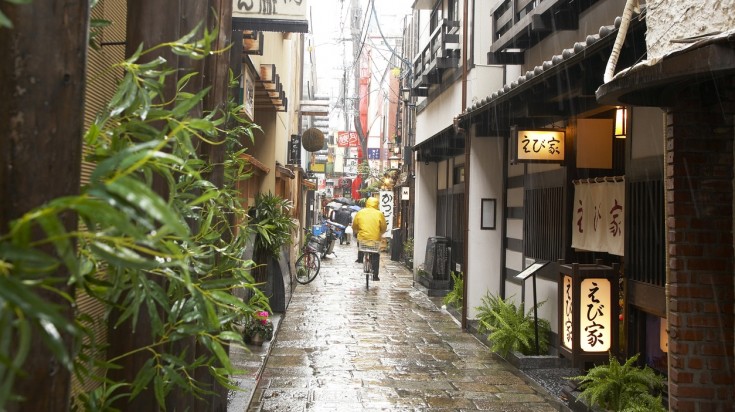
The Hozenji Yokocho Alley is an off-the-beaten-path spot in Osaka that you don’t want to miss. With its edo-era architecture, you’ll feel like you’re walking back in time as you navigate this historic alley, located right next to the Hozenji temple (which is another must-see). This narrow street is 80-meters long and home to a ton of excellent restaurants and interesting shops to explore.
- Why we love it: The Hozenji Yokocho Alley is packed with taverns and restaurants where you can binge on some of Osaka’s local dishes.
- Best time to visit: Visit any time of the year! In the day, snap some pictures and return in the evening for a whole new atmosphere.
Off the beaten path in Tokyo
3. chichijima.

The island of Chichijima is a perfect place to be if you’re looking to escape the crowd and venture into lesser explored parts of Japan. The island is only a ferry ride away from Tokyo, and here you can relax with some tropical island vibes, white sandy beaches and bright blue waters included. Spend a morning whale watching and then go snorkeling over a shipwreck in the afternoon. It’s, This peaceful island chock-full of outdoor adventure activities from swimming to hiking in the mountains is the perfect place to escape the bustle of Tokyo.
- Why we love it: The water around the islands is home to dolphins all year, so you can add “swim with the dolphins” to your Japanese vacation checklist!
- Best time to visit: Weatherwise, this island is beautiful pretty much year round. If you’re interested in seeing whales though, your best bet is to come between February to April or July to September.
Other underrated places in Japan
4. yonaguni.
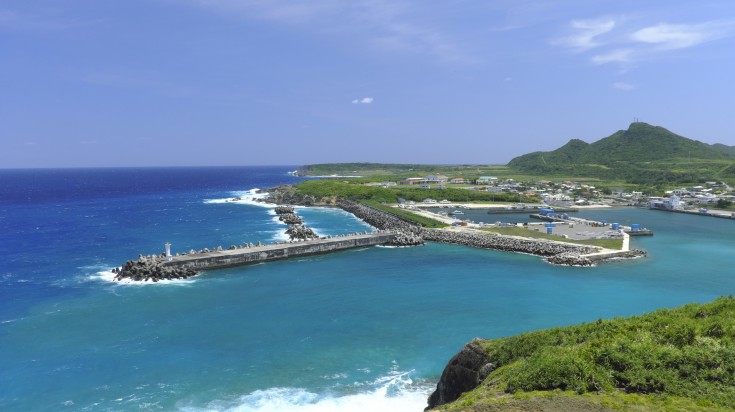
For a totally unique diving experience, visit the island of Yonaguni. This underrated island is a hotspot for diving enthusiasts, with a high population of hammerhead sharks living in its waters and the Yonaguni Submarine Ruins, a fascinating submerged rock formation of debated origin. Some experts say the ruins are a natural rock structure, and others believe they are the sunken remains of an ancient city. You’ll have to decide for yourself what you believe.
- Why we love it: We love a good mystery and the Yonaguni Monument is certainly mysterious! You can explore the area underwater without restriction as you try to determine its origin for yourself.
- Best time to visit: While experienced divers can dive here year-round, if you want to catch a glimpse of the schools of hammerhead sharks, you’ll want to head there between November and June.
5. Iya Valley

If you’ve heard of Japan’s famous woven vine bridges, then you’ve probably heard of Iya Valley. If you haven’t, then you’re in for a treat! This remote valley is buried in the mountains of Tokushima Prefecture and is home to a handful of gorgeous bridges made of living vines. It’s also a great area to start out in if you want to get into the mountains for some hiking and experience (really, really) rural Japanese life.
- Why we love it: Japan is full of beautiful nature, but there’s something surreal about climbing across these living bridges. It’s unlike anything you’ll find elsewhere!
- Best time to visit: Come between October and November to see the stunning autumn foliage in the valley!
6. Sado Island

This remote island is certainly one of the more underrated places in Japan. Famous for being the place of exile for several famous figures, including an emperor and the founder of Noh theatre, this island has a lot to offer the intrepid traveler. Sado island is home to scenic views, gold mines you can explore, and is one of the only places you can see the endangered Japanese Ibis. And those aren’t even what it’s most famous for!
- Why we love it: Sado Island is best known for its Earth Celebration, a music and dance festival, put on by the world-renowned Kodo taiko group. The festival includes performances, marketplaces, and workshops where you can learn taiko drumming and traditional dance.
- Best time to visit: Time your visit on the island to be in August for the Earth Celebration!
7. Takayama

You probably haven’t heard too many people talking about Takayama, even though it’s home to one of Japan’s best festivals, because of its remote location. But this rural mountain town is the perfect place to experience Japanese history. Takayama has two charming morning markets you can visit and the old town neighborhood is remarkably well preserved so you’ll feel like you’re taking a walk through Japan’s history. If that’s not enough history for you, there are several great museums in town to check out!
- Why we love it: If the impressive open-air museum and charming scenic location weren’t enough, Takayama also hosts the Takayama Festival twice a year, with beautiful floats and Karakuri performances.
- Best time to visit: Catch the Takayama Festival in April or October for the best experience.
8. Izu Peninsula

Ready for a beach vacation? Head to the Izu Peninsula! This area is best known for its plethora of hot springs and gorgeous coastline. Whether you want to lounge on the white sand beach of Shirahama or hike the rugged Irozaki Coast, you can get your seaside fix here. Izu is also one of the first places you can have a hanami holiday each year during the Kawazu Cherry Blossom Festival , as it’s home to an early blooming type of cherry tree.
- Why we love it: This area combines our favorite natural features, with beautiful walking trails along the coast and plenty of hot springs to soak in afterward. It’s the perfect place to relax after the hustle and bustle of Tokyo.
- Best time to visit: Come between February and March to enjoy the Kawazu Cherry Blossom Festival.
9. Shirakawa and Gokayama Village

Enjoy the winter landscape of a Gassho-style village covered in snow
If you really want to explore an off the beaten path in Japan, you can’t go wrong with a trip to the winter wonderland of Shirakawa and Gokayama Village. This UNESCO World Heritage site is known for its unique farmhouse with steep thatched roofs. It’s a little tricky to get to, but this remote site is worth the visit. It’s beautiful in the summer, but it’s unbelievable in the winter.
- Why we love it: Take a trip to the Shiroyama viewpoint on one of the Winter Light-Up nights to see the village of Ogimachi illuminated in the snow and looking like something straight out of a storybook.
- Best time to visit: January and February are best, but make sure to reserve your spot ahead of time!
10. Yakushima

For a real change of pace, visit Yakushima, a subtropical island that is home to some of Japan’s oldest living trees. This national park features a massive cedar forest where you can find many trees, called Yakusugi, which are over 1000 years old. The oldest tree, the towering Jomonsugi, maybe as old as 7,000 years! If you like hiking and nature, you really don’t want to miss this unique forest.
- Why we love it: There’s something magical about being in a forest this old and part of that magic is that you can visit the Shiratani Unsuikyo Ravine, which was the inspiration for the Studio Ghibli film, Princess Mononoke.
- Best time to visit: If you want to hike, the best time to visit is between September and November when there is less rain and cooler temperatures but between the end of March and early April the island bursts into bloom with the mountain cherry blossoms.
Nothing compares to the unique experiences you get by tackling an off the beaten path in Japan; from diving among sharks to hiking with the country’s oldest trees, the country has so much more to offer than its main tourist attractions. If you’re interested in visiting some of these remote places (winter wonderland in Shirakawa sounds pretty good to us), there are plenty of Japan tours , any of which could prove to be your perfect trip. You can also connect with our travel experts in Japan to help you plan a trip of a lifetime!
Related Categories
- How Long To Stay In Japan
- Japan Travel Advice
- What To Do In Japan
- When To Visit Japan
- Where To Go In Japan
- Previous Post

Popular Destinations
- Europe Tours
- Everest Base Camp Trek
- Italy Tours
- Spain Tours
- Argentina Tours
- Canada Tours
- Sri Lanka Tours
- Chile Tours
- Antarctica Tours
We use cookies to analyze traffic and give you personalized content and ads. It's an essential part of giving you a great site experience. Click on the 'Accept' button if you agree with our use of tracking and analytical cookies. Please refer to our Cookie Policy for more information.
- Things to Do
- Hidden Gems
10 Amazing Off-the-Beaten-Path Places in Japan
Best Hidden Gems in Japan
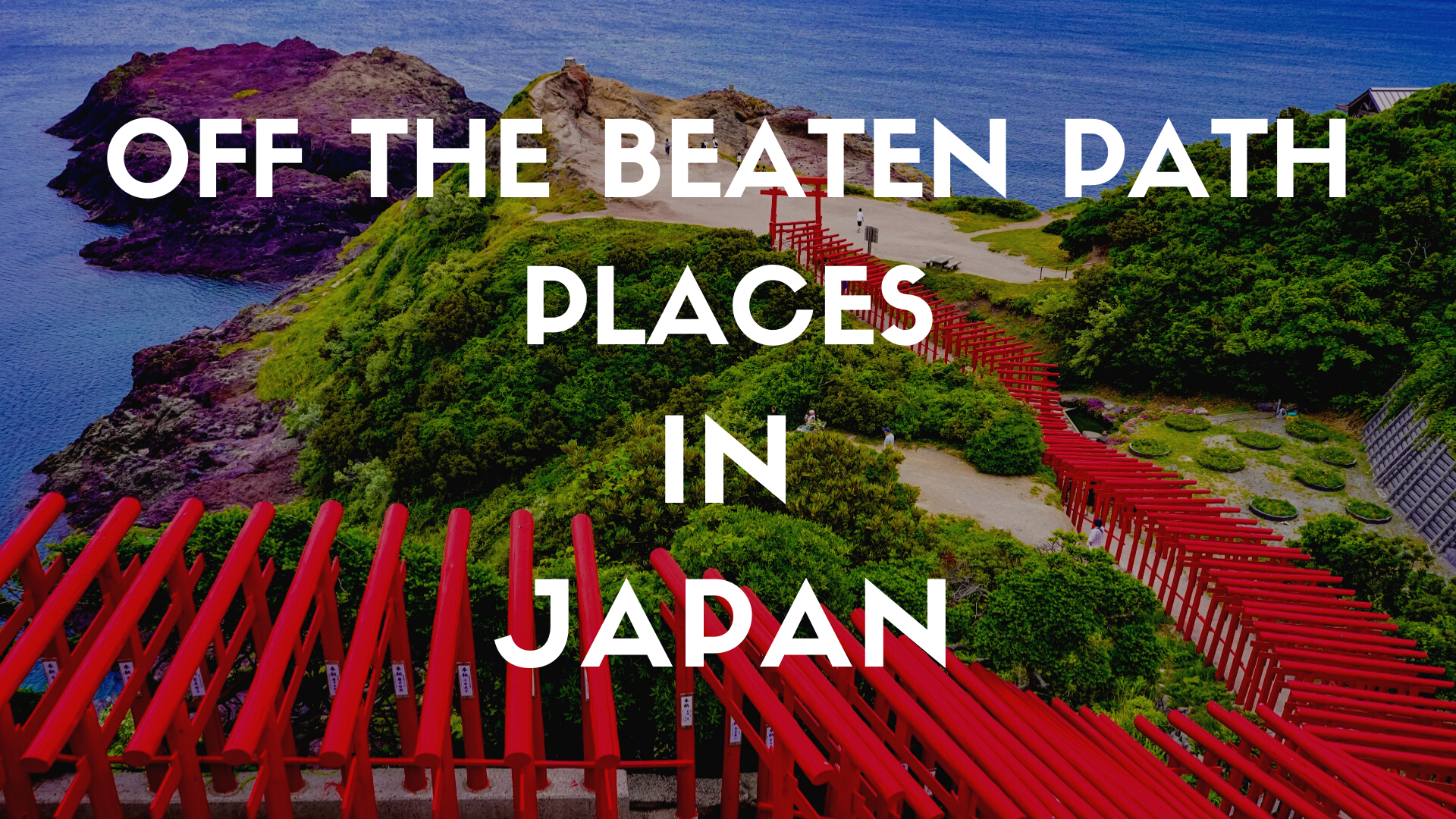
Looking for new travel destinations or non-touristy places in Japan?? If you are planning to visit Japan for the second time (or more), or wish to avoid tourist crowds while travelling, you should definitely check out my list of the best off-the-beaten-path places in Japan!
These places are not overly crowded nor very famous YET, but for sure they will soon become a THING! Some of places are situated in/near popular tourist destinations such as Tokyo and Kyoto, so if you are planning to visit these cities, consider visiting those hidden gems alongside 🙂
Add them on your bucket list for your next visit to Japan and let’s hit these places before anybody else!
1. Nyuto Onsen
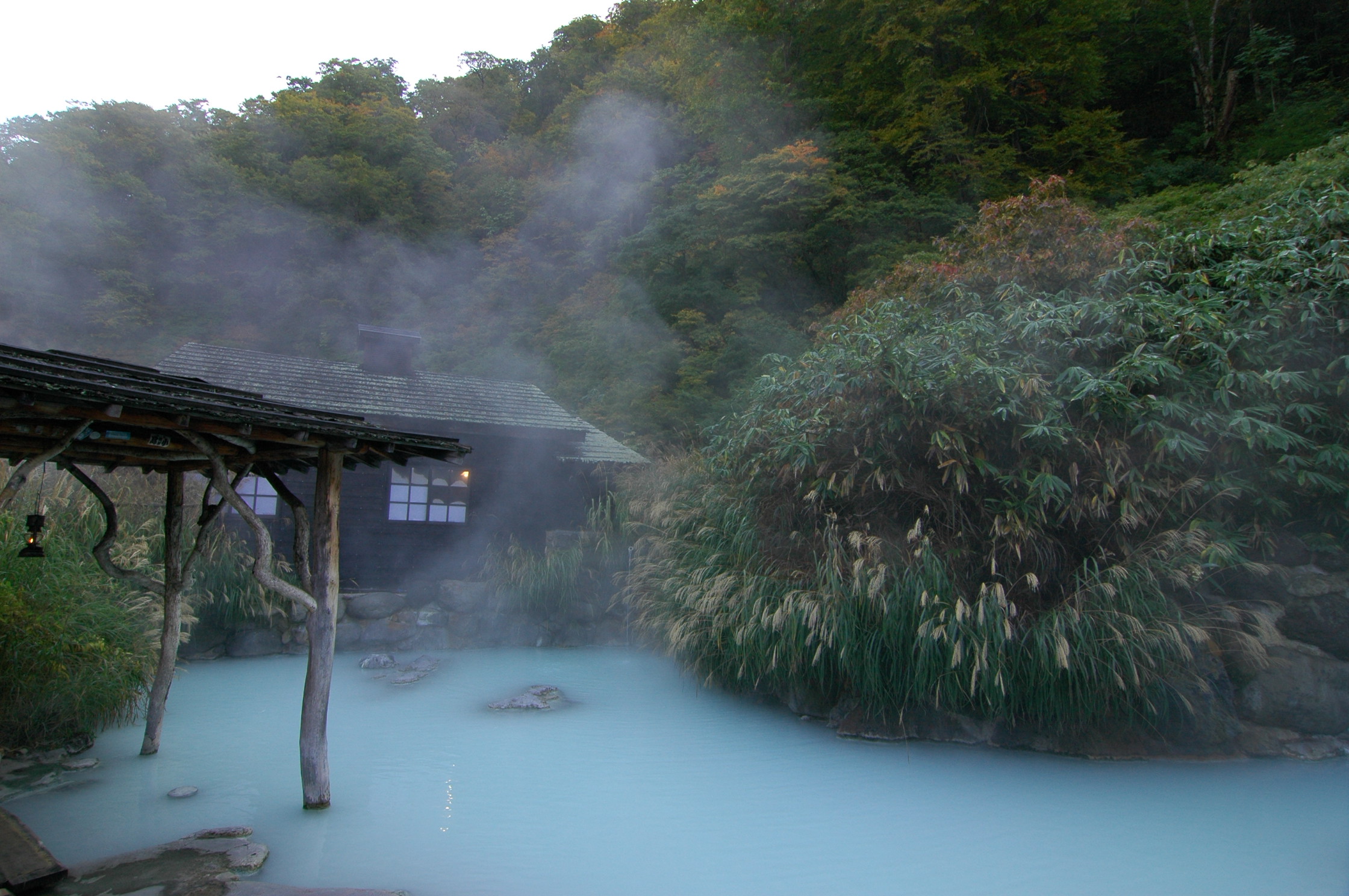
Nothing fabulous but rustic and incredibly genuine. The true onsen experience can be found in the deep mountain of northern Japan. Nyuto Onsen (乳頭温泉) is the most famous “Hitou (秘湯/hidden onsen)” in Japan with a history of over 300 years. Enjoy milky hot spring water with authentic local dishes.
More info: Nyuto Onsen: the Hidden Onsen Village in Northern Japan
2. Yanaka Ginza
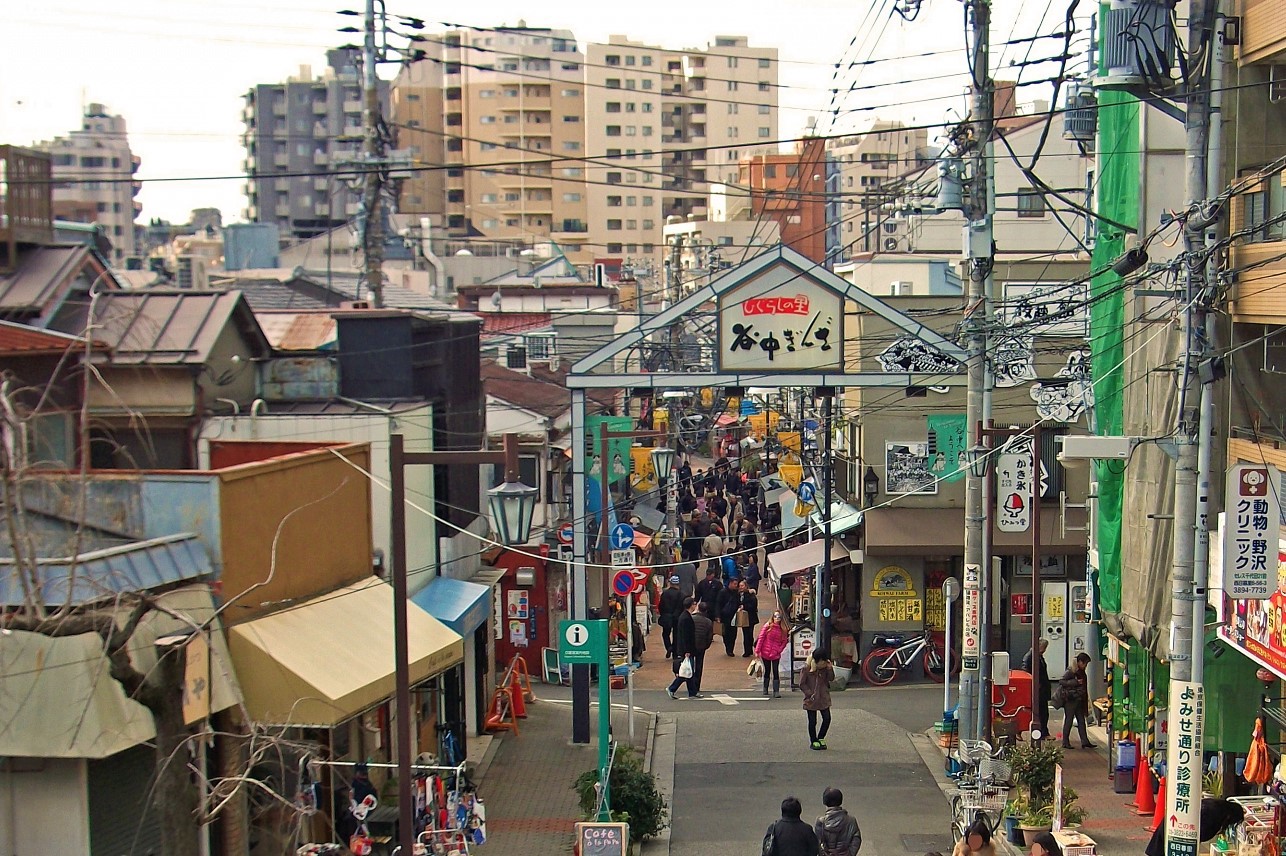
Is there anywhere that we haven’t discovered in Tokyo? Yes, Yanaka Ginza (谷中銀座) is one of Tokyo’s last well kept secrets. The old-fashioned shopping arcade is lined with small stores where locals do shopping and hang out. Although it’s located in central Tokyo, true local atmosphere and the old downtown vibes remain strongly in this surrounding area.
More info: Yanaka Ginza: Tokyo’s Best Old-Fashioned Shopping Street
3. Mt.Oyama
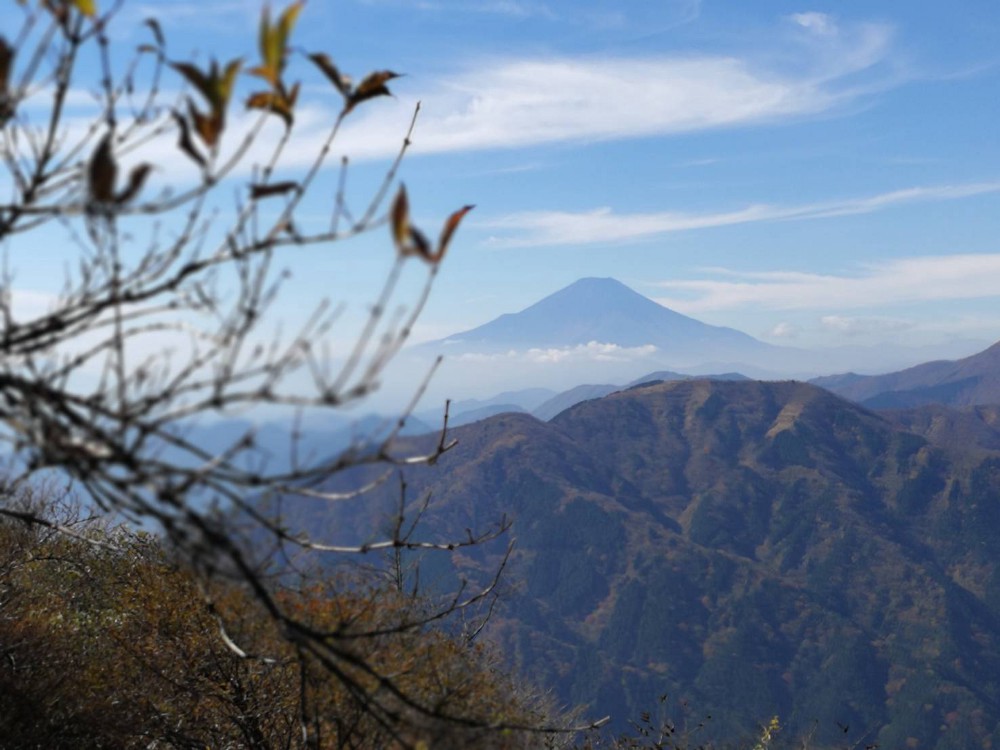
Want to keep active while travelling?? Hiking is one of most popular activities, and did you know some hiking spots can be easily access from Tokyo? Mt. Oyama (大山) is located in Isehara City, Kanagwa and can be reached from Tokyo within 90 mins. The mountain houses sacred shrines and offers great hiking trails with a view of Mt.Fuji.
More info: Mt. Oyama: Hike on the Sacred Mountain in Kanagawa!
4. Fuji City Tea Plantations
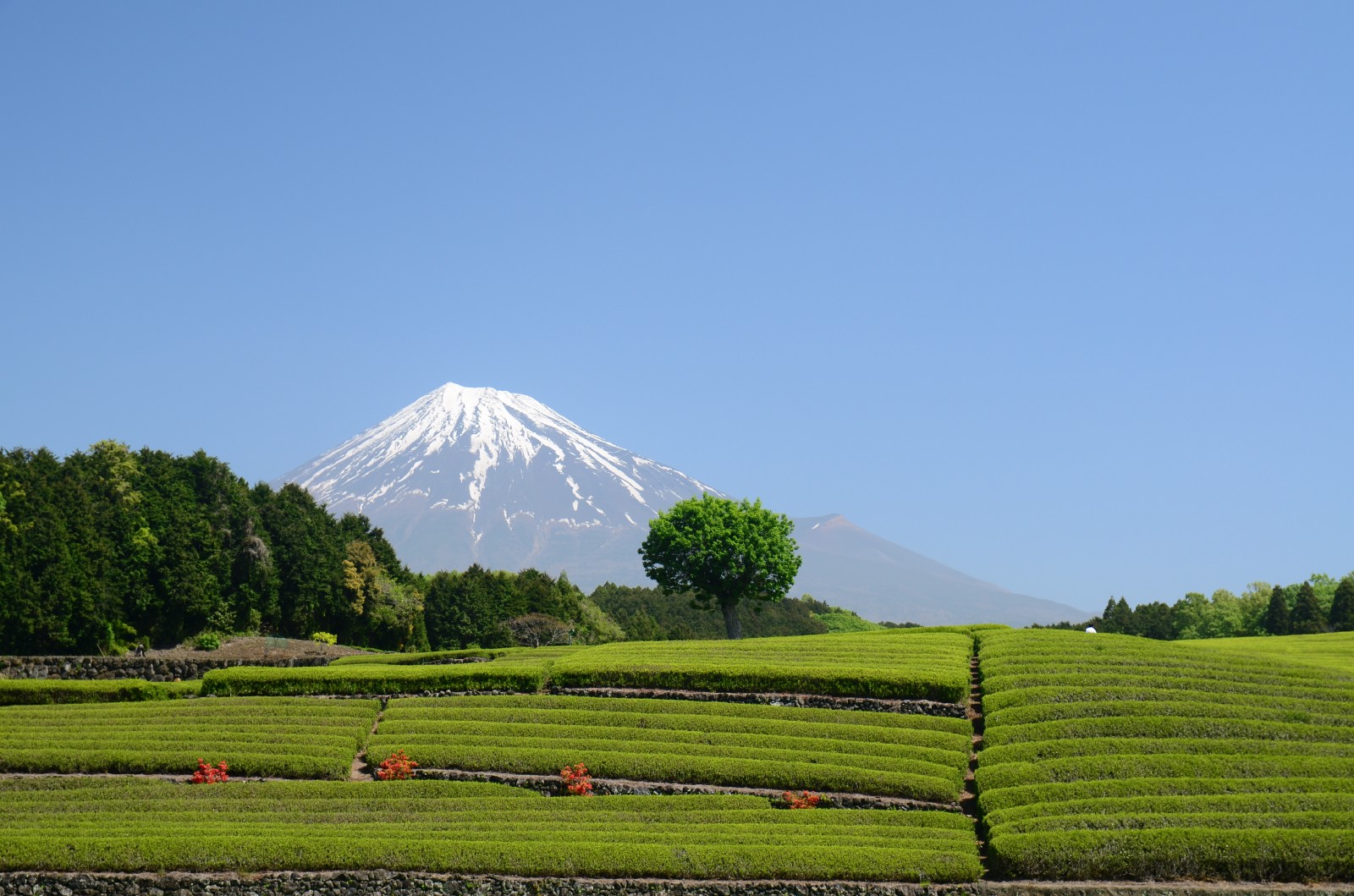
I believe many tourists in Japan are in a quest for taking best photos of Mt. Fuji. There are several famous photo spots around the mountain, but don’t you wish to take one step ahead from other photographers?? Then I think this should be your next target. They are not easiest places to access but totally worth the effort.
More info: Obuchi Sasaba and Imamiya: Best Green Tea Plantations in Shizuoka
5. Monet Pond
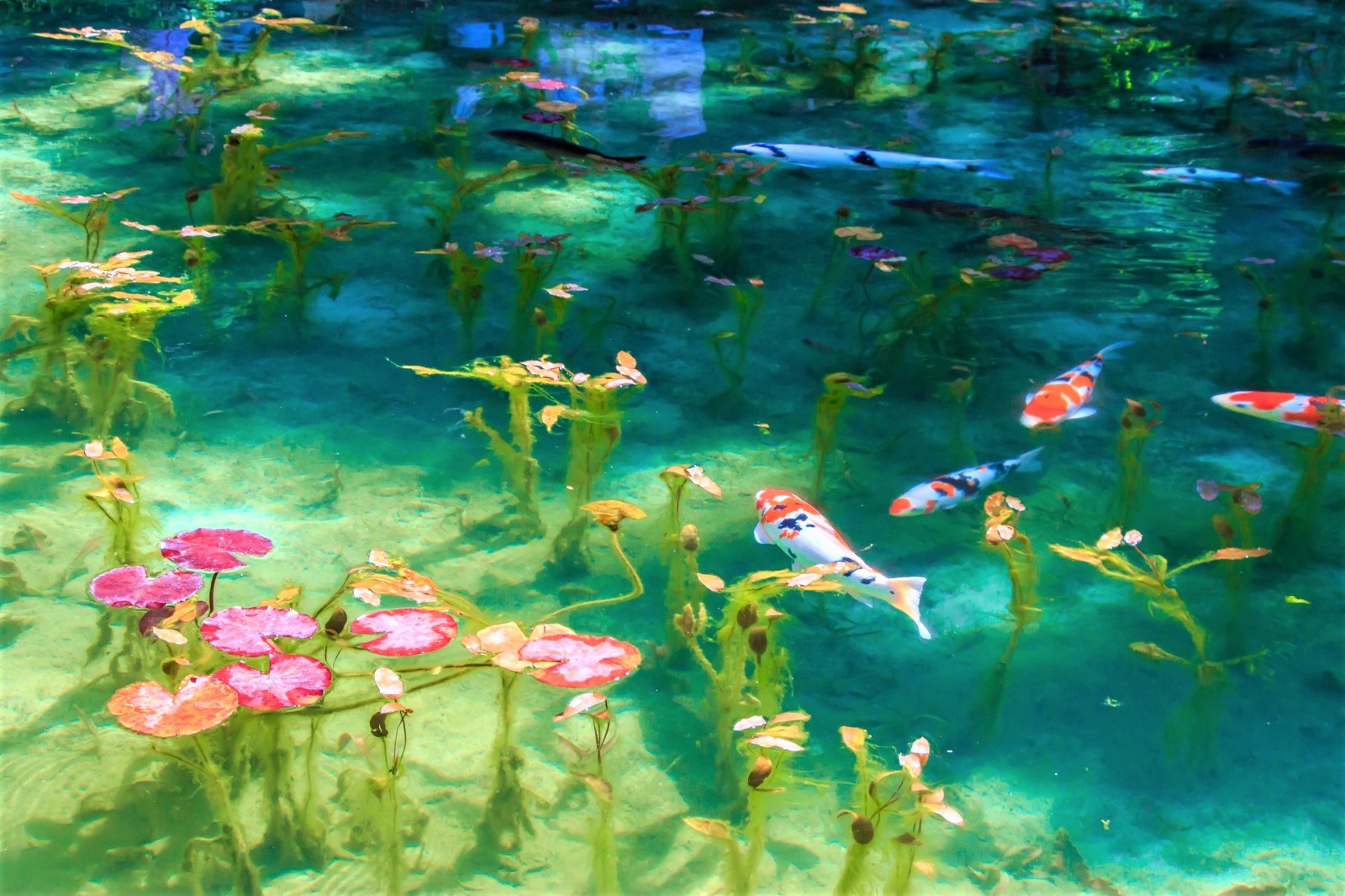
One of biggest internet sensation last year, the pond has no name (a.k.a. Monet Pond) went viral cos it’s simply too good to be true. The pond is not very easy to access as it’s located in deep mountain of Gifu prefecture, however it’s a great travel destination if you are an eager photographer.
More info: The Mystery Pond In Japan Looks Like Monet’s Paintings
6. Shoujuin Temple
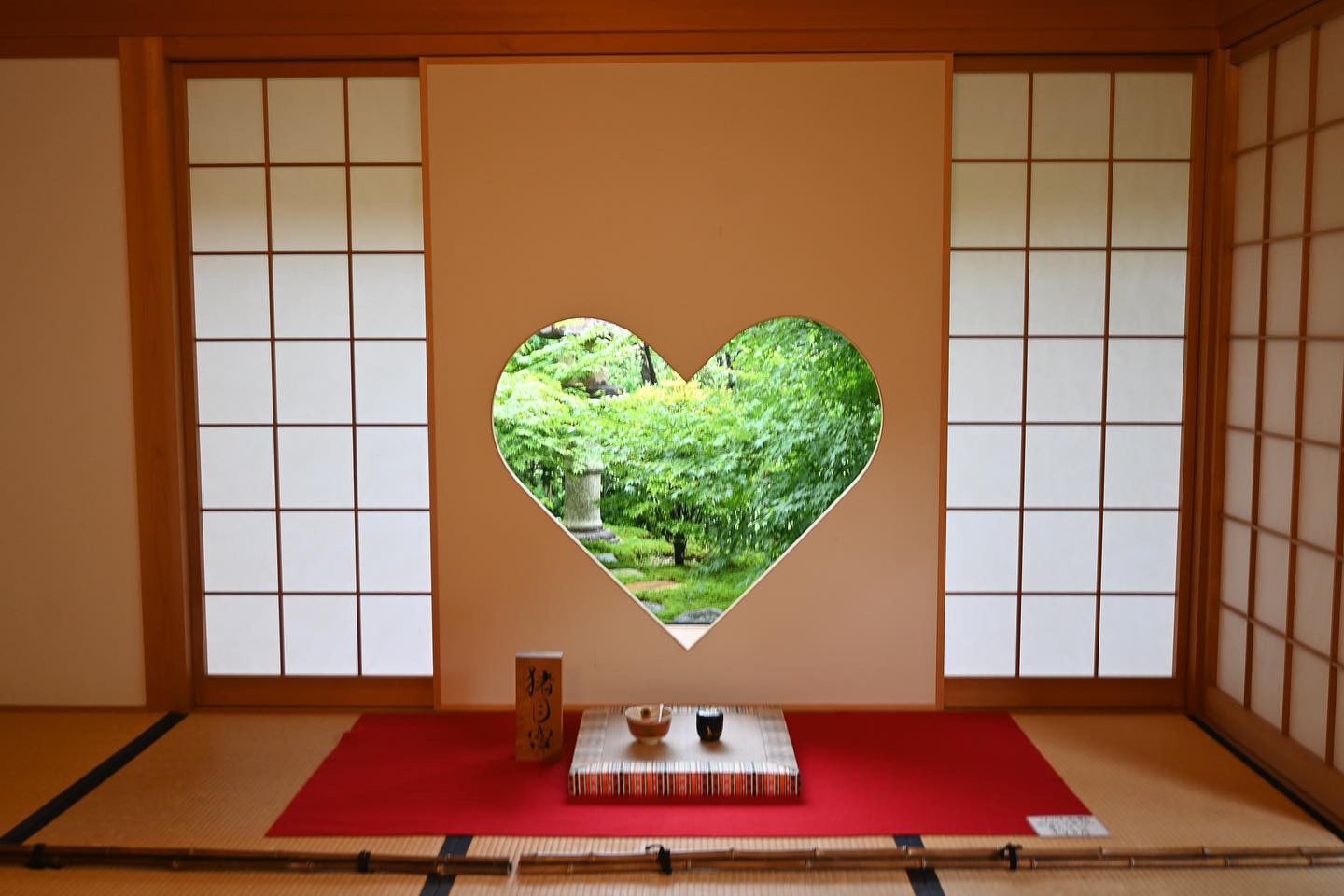
Another Instagram sensation of latest years. Shojuin Temple (正寿院) has caught every girls’ hearts by its heart-shaped window and coloufully painted ceiling, and soon became the most instagrammable temple in Kyoto.
More info: Shoujuin Temple: Most Instagrammable Temple in Kyoto!
7. Adashino Nenbutsuji Temple and Otagi Nenbutsuji Temple
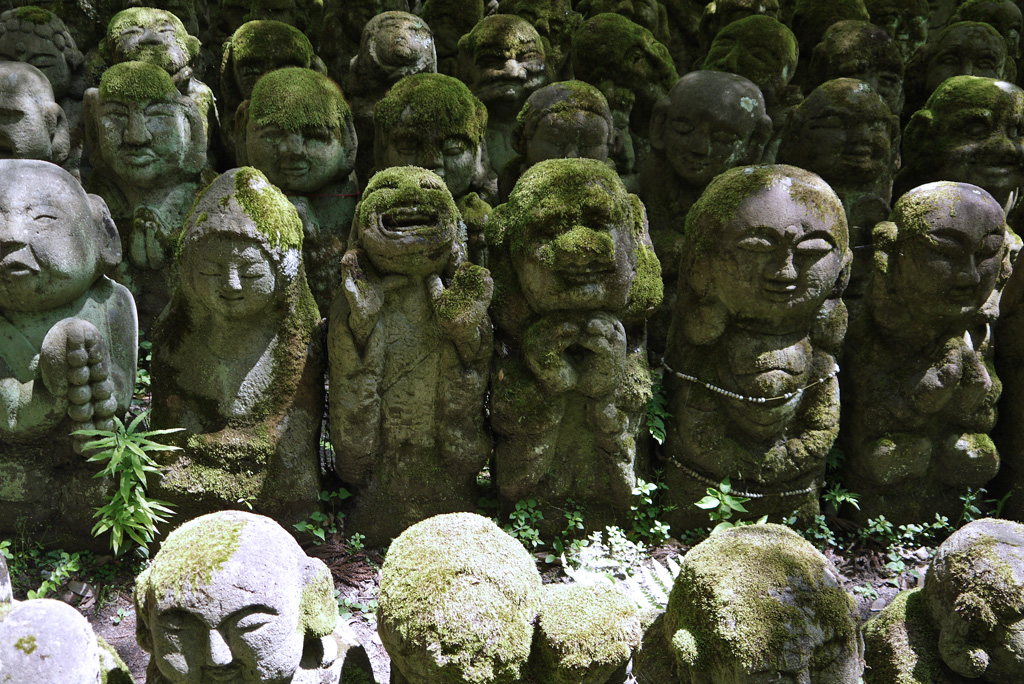
Tired of overly crowded shrines and temples in Kyoto?? There are many hidden spots in the city off the major touristic route just like these two temples. Adashino Nenbutsuji Temple (化野念仏寺) and Otagi Nenbutsuji Temple (愛宕念仏寺) are two most mysterious and unspoiled temples in Kyoto, Arashiyama area.
More info: Adashino Nenbutsuji Temple and Otagi Nenbutsuji Temple: Two Most Curious Temples in Kyoto
8. Shodoshima
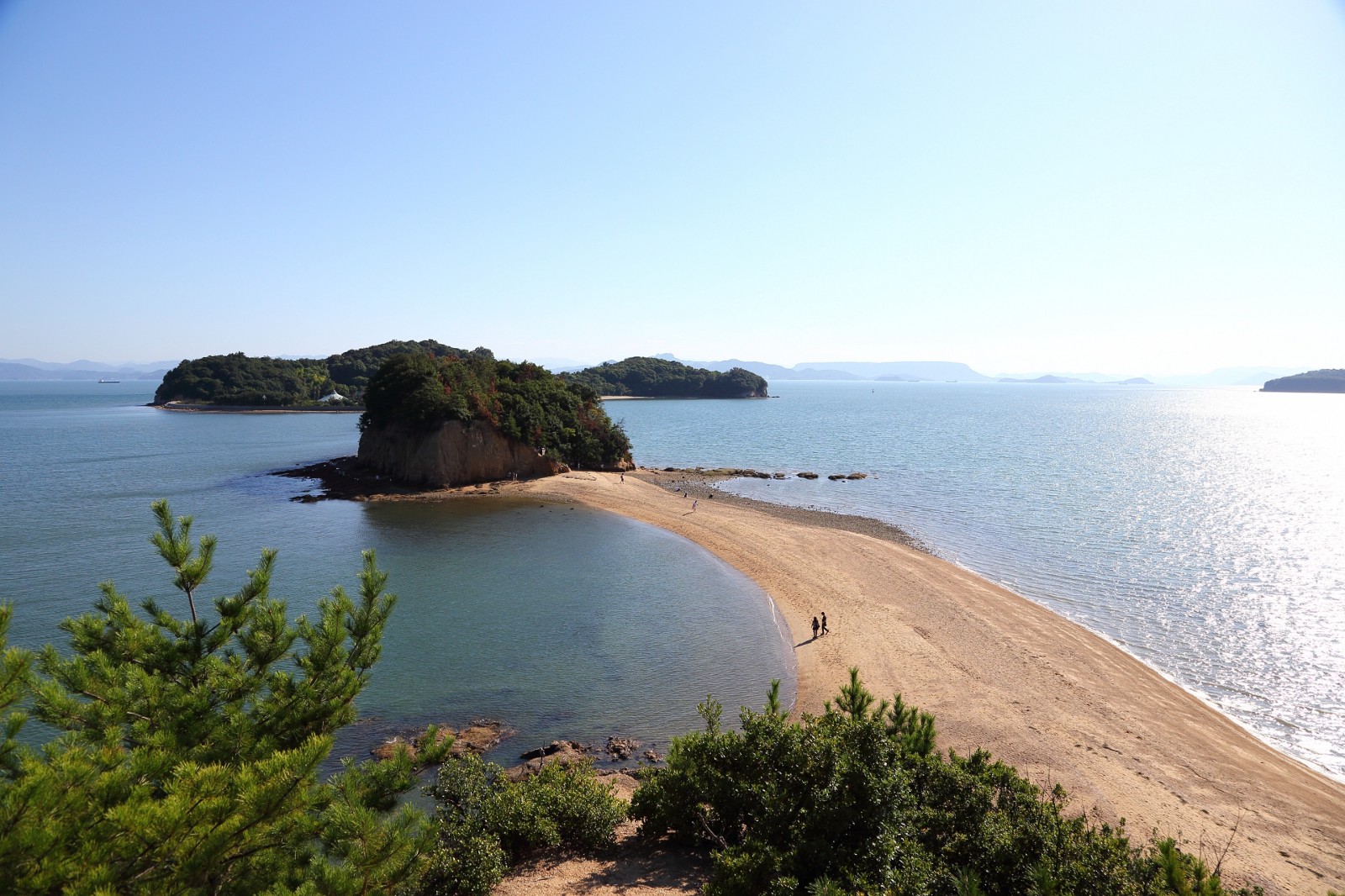
Seto Inland Sea is definitely one of the hottest regions in Japan, and popularity is increasing every year. One of most popular islands is Shodoshima (小豆島) a.k.a. Olive Island. The playful island offers numbers of tourists attractions including museums, delicious food and scenic views such as the Angel Road.
More info: Shodoshima: Guide to the Olive Island in Seto Inland Sea
9. Motonosumi Inari Shrine

Is Fushimi Inari Taisha in Kyoto your thing? Is you are attracted by vermilion torii gates, this is definitely your next target. Motonosumi Inari Shrine (元乃隅稲成神社) is one of most scenic shrines in Japan with over 100 gates are lined at the cliff by the ocean. It’s located in Yamaguchi Prefecture, the tip of main island of Japan.
More info: Motonosumi Inari Shrine: Japan’s Most Bizarre and Incredible Shrine!
10. Yanagawa
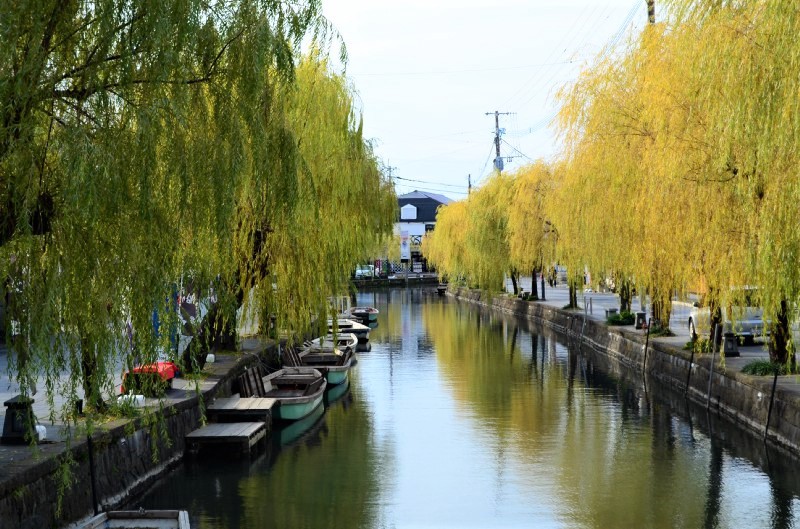
Yanagawa (柳川) is a small city in southern Fukuoka Prefecture, where historical atmosphere remains strongly, yet is not over crowded. The old castle town is often described as “the City of Water”, and the charming streetscape with willow trees and old buildings can be enjoyed by river cruising on traditional small boats called Donko.
More info: Yanagawa: the City of Water in Fukuoka
Visiting Japan for the first time?? Then you may wanna check out the top must-visit tourist sites in Japan!
▶ 10 Best Japan Tourist Attractions
What did you think about my list of off the beaten path places to visit Japan? If you like exploring new spots in Japan, you may like these articles, too!
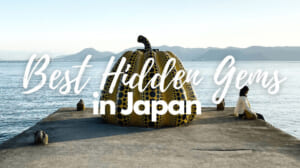
▽ Related Articles ▽
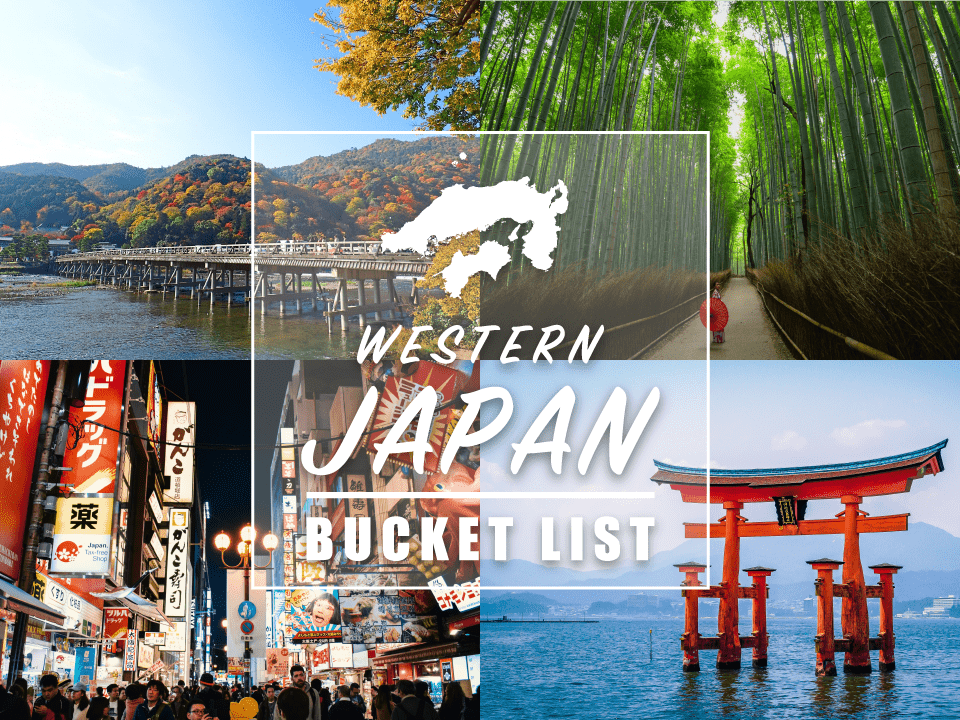
▼ Editor’s Picks ▼
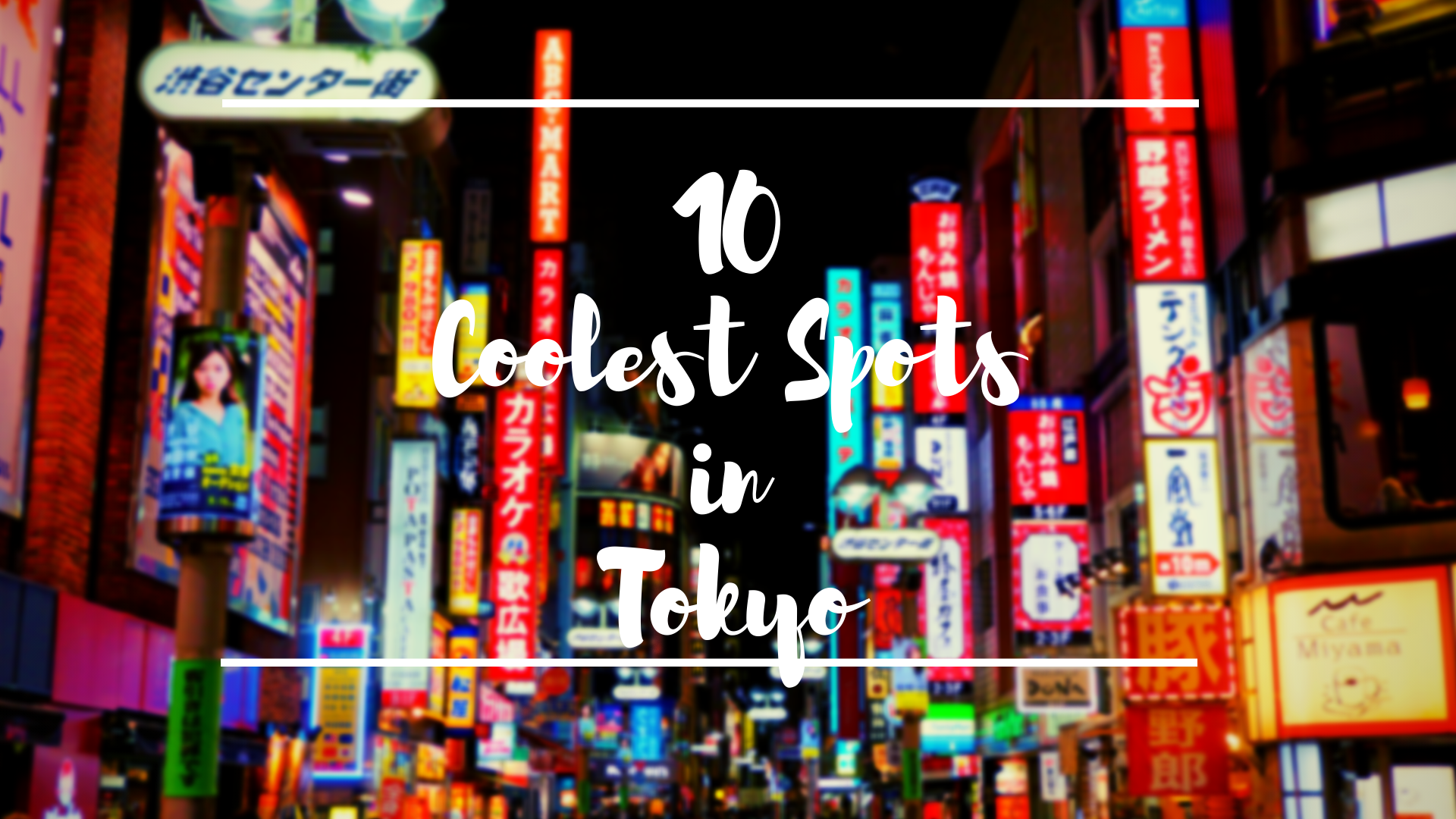
"The world is my oyster" A globetrotter 🌎 and hammock lover 🌞 who loves taking adventures to fuel wanderlust. Born and raised in Japan, I have spend almost a decade living and exploring countries across the world. Based on my travel experience, I'd love to share my knowledge and tips for travelling with my readers. I hope my stories help you plan your trip and have a great time in Japan 🌈

Popular Destinations

All Destinations
- Aland Islands
- Canary Islands
- Czech Republic
- El Salvador
- Europe & UK
- Faroe Islands
- Indonesia (Bali)
- Liechtenstein
- Middle East
- Netherlands
- New Zealand
- North America
- Philippines
- Saudi Arabia
- South Africa
- South America
- South Korea
- Switzerland
- United Arab Emirates (Dubai)
- United Kingdom
- United States of America
- Vatican City
Your cart is empty
BUY ONE, GET ONE 25% OFF ALL ESIMS & SIM CARDS

Hidden Gems in Japan for Tourists: Unveil Japan’s Best Secrets
Japan is often associated with bustling cities, iconic landmarks, and vibrant culture, but beyond the neon lights of Tokyo and the historic temples of Kyoto lies a world of hidden gems just waiting to be discovered. These lesser-known destinations offer a glimpse into Japan’s rich history, stunning natural beauty, and unique local traditions, all while avoiding the crowds that flock to the more popular spots. Whether you’re a seasoned traveler or a first-time visitor, these hidden gems promise an unforgettable experience. Let’s explore some of Japan’s best-kept secrets.
Table of Contents
Takeda castle: japan’s machu picchu, shodoshima: the island of olives and stunning views, tottori sand dunes: a desert in japan, ouchi-juku: a post town frozen in time, kamikochi: the japanese alps’ hidden treasure, okunoshima: the rabbit island, historical significance.
Nestled high in the mountains of Hyogo Prefecture, Takeda Castle is often referred to as “Japan’s Machu Picchu,” and for good reason. This ancient fortress, perched on a mountaintop, offers breathtaking views of the surrounding landscape, especially when a sea of clouds envelops the valley below. Built in the 15th century, Takeda Castle has a rich history that mirrors the rise and fall of the samurai era. Wandering through its ruins, you can almost feel the echoes of the past.
How to Get There
Reaching Takeda Castle requires a bit of effort, but the journey is well worth it. The nearest train station is JR Takeda Station, from which a short but steep hike will take you up to the castle. If hiking isn’t your thing, a shuttle bus operates during the peak seasons. The best time to visit is early in the morning when the mist often blankets the valley, creating the famous “castle in the sky” effect.
Best Time to Visit
Takeda Castle is a year-round destination, but each season offers a different experience. Spring brings cherry blossoms that contrast beautifully with the stone ruins, while autumn drapes the surrounding mountains in vibrant hues of red and orange. For photographers, the early morning mist in late autumn and winter is the perfect time to capture the castle’s ethereal beauty.
Exploring Olive Park
Shodoshima, one of the largest islands in the Seto Inland Sea, is known for its Mediterranean-like climate and is famously home to Japan’s olive cultivation. Olive Park, located on the island, is a must-visit for anyone interested in experiencing a slice of the Mediterranean in Japan. You can wander through groves of olive trees, sample olive oil, and even try your hand at making olive-based crafts. The park offers stunning views of the Seto Inland Sea, especially at sunset.
Kankakei Gorge
For nature lovers, Kankakei Gorge is the highlight of Shodoshima. This deep gorge, carved out by ancient volcanic activity, is one of Japan’s most scenic spots. A ropeway takes you up to the top, offering panoramic views of the dramatic cliffs and the sea beyond. The area is particularly stunning in autumn when the foliage turns vibrant shades of red, orange, and yellow.
Local Delicacies
No trip to Shodoshima would be complete without sampling the local cuisine. The island is famous for its somen noodles, which are hand-stretched and air-dried, giving them a unique texture and flavor. Shodoshima is also known for its soy sauce production, with several breweries offering tours and tastings. Don’t miss the chance to try “kankakei somen,” served in a refreshing cold broth, especially on a hot summer day.
Unique Landscapes
When you think of Japan, deserts probably aren’t the first thing that comes to mind. Yet, the Tottori Sand Dunes, located along the Sea of Japan coast, offer a surprising and surreal experience. These vast dunes stretch over 16 kilometers and rise up to 50 meters high, creating a landscape that feels more like the Sahara than Japan. The winds constantly reshape the dunes, ensuring that no two visits are ever the same.
The Tottori Sand Dunes aren’t just for admiring from afar—they’re a playground for adventure seekers. Sandboarding down the dunes is a thrilling experience, or if you prefer something a bit more relaxed, camel rides offer a fun and unique way to explore the area. For those interested in photography, the dunes are particularly photogenic at sunrise and sunset, when the shifting light creates dramatic shadows and textures.
Nearby Attractions
While in Tottori, be sure to visit the Sand Museum, which showcases incredible sand sculptures crafted by artists from around the world. Another nearby attraction is the Uradome Coast, known for its crystal-clear waters and rugged coastline. The contrast between the soft dunes and the rocky coast offers a unique glimpse into the diverse landscapes of Japan.
Step Back in History
Ouchi-juku, located in Fukushima Prefecture, is a beautifully preserved post town that takes you back to the Edo period. Once a key stop on the Aizu-Nishi Kaido trade route, Ouchi-juku has retained its historical charm with rows of traditional thatched-roof houses lining its main street. The absence of power lines and modern buildings allows you to truly immerse yourself in the atmosphere of a bygone era.
Traditional Accommodations
For those who want to experience life as it was centuries ago, staying in a traditional inn in Ouchi-juku is a must. These inns offer tatami rooms, futon bedding, and meals cooked over an irori (traditional Japanese hearth). The experience is both authentic and peaceful, providing a unique window into Japan’s cultural heritage.
Must-Try Dishes
Ouchi-juku is also known for its unique cuisine. One dish not to miss is “negi-soba,” a type of soba noodle served with a long green onion, which you use in place of chopsticks. It’s a fun and delicious way to enjoy a traditional meal. Another local specialty is grilled river fish, often served with a sprinkle of salt and cooked over an open fire—simple, yet full of flavor.
Thanks for visiting our blog, are you planing to travel to Japan? Check out our eSIM Japan .

Pristine Nature
Kamikochi, located in the Northern Japanese Alps, is a remote mountain valley that offers some of the most stunning natural scenery in Japan. Often referred to as the crown jewel of the Japanese Alps, Kamikochi is a paradise for nature lovers, with crystal-clear rivers, lush forests, and towering peaks. The area is part of Chubu Sangaku National Park and has been carefully protected, allowing its pristine beauty to remain untouched.
Hiking Trails
Kamikochi is a hiker’s dream, with trails suitable for all levels of experience. For beginners, the trail from Taisho Pond to Kappa Bridge is a flat, easy walk that offers spectacular views of Mount Hotaka and the surrounding mountains. More experienced hikers can tackle the challenging climb up to Mount Yake, an active volcano that offers panoramic views of the valley below.
Seasonal Wonders
Kamikochi is beautiful in every season, but each offers its own unique charm. Spring brings delicate alpine flowers, while summer is perfect for escaping the heat of the city. Autumn is perhaps the most magical time to visit, with the valley ablaze in red, orange, and gold. In winter, Kamikochi is closed to the public due to heavy snowfall, but the snow-capped peaks create a breathtaking backdrop for those who can catch a glimpse from nearby areas.
History of the Island
Okunoshima, a small island in the Seto Inland Sea, is better known by its nickname—Rabbit Island. This unusual name comes from the thousands of friendly rabbits that roam freely around the island. However, Okunoshima has a darker past. During World War II, the island was used for the production of poison gas. Today, the island’s dark history is memorialized in the Poison Gas Museum, while the rabbits have become a symbol of peace and innocence.
Getting There
Visiting Okunoshima is a delightful day trip. The island is accessible by ferry from Tadanoumi Port or Omishima Island. The ferry ride is short, and once you arrive, you’ll be greeted by the island’s furry residents. Bicycles are available for rent, making it easy to explore the island at your own pace.
Interacting with the Rabbits
The main attraction of Okunoshima is, of course, the rabbits. These friendly creatures are used to humans and will happily approach you, especially if you have food. Rabbit food is available for purchase on the island, but it’s important to remember to feed them responsibly and respect their natural habitat. Interacting with the rabbits is a heartwarming experience, and the island’s serene environment makes it a perfect escape from the hustle and bustle of city life.
Before you take off make sure to check with local government of the travel status.
What is the best time of year to visit Japan’s hidden gems?
Spring and autumn are ideal, offering mild weather and beautiful scenery.
Are these hidden gems easily accessible by public transportation?
Some are accessible by train or bus, but renting a car may provide more flexibility for certain locations.
Can I visit these hidden gems in a day trip from major cities?
Many of these spots can be visited as day trips, though some may require an overnight stay to fully enjoy.
Are these lesser-known destinations crowded?
Generally, these hidden gems see fewer tourists than popular spots, offering a more tranquil experience.
Do I need to speak Japanese to visit these hidden gems?
Basic Japanese can be helpful, but most areas have signs in English, and locals are often willing to assist travelers.
Leave a comment
All comments are moderated before being published
Related Posts

Exploring Japan's Rural Villages: A Journey Through History

Best Places to Visit in Europe with Kids and Family

Best Places to Snowboard in Europe: Top 10 Destinations

Scenic Road Trips in Japan: Must-See Routes for Travelers

Most Dangerous Places in Europe: Top 10 Spots

Best Japanese Street Foods: A Culinary Adventure in Japan
Why is the activation date important.
- We need these dates to activate your SIM card so you can use it when the SIM is inserted into your device.
- For a seamless experience, make sure the date you insert at checkout is the exact date you want to start using the SIM, not earlier or later.
- Activation can take anywhere from a few minutes to a couple of hours.
Not sure on your dates yet?
- You can add in an estimated date for your SIM. Your SIM’s data & validity won’t start until you plug it into your device.
- Once you know your exact dates, please let us know via our live chat or at [email protected] so we can activate it for you at the right time.
What if you need to change the dates?
- You can reach out to us via our live chat or at [email protected] with your order number so we can change it for you.
Hidden Japan: Secret Spots You Must Visit

by GoWithGuide travel specialist: Amy Dodgson
Things To Do
Japan has many great places to visit just off the beaten path. The top 10 best hidden spots in Japan are Yajima Taiken Koryukan (sado), Ashikaga flower park, Yakushima island, Iya valley, Blue pond, Otaru canal, Aoshima (cat island), Ryusendo cave, Mount Koya and Farm Tomita. When you visit Japan, make sure you don't just visit Tokyo. Why not check out one of these places and travel Japan like a local. Japan is an island country surrounded by lots of smaller islands that are incredibly beautiful and filled with nature. Whether you are a first time visitor to Japan or not, these places are worth a visit.
Yajima Taiken Koryukan
Tour an inlet by tarai bune (tub boat). Enjoy your time on the gently undulating sea Head out into the waters of the inlet by tarai bune which originated in Sado. There is the enchanting view of two small islands and the red arched bridge, and on good days, you can enjoy the crystal blue sea. A 10-minute ride on the tarai bune leisurely sailing on the bay In the port town of Ogi at the southern end of Sado Island, you can try sailing in tarai bune which first originated in the area. On the tarai bune of the Yajima Taiken Koryukan, you can enjoy the rich natural scenery of an inlet with gentle waves, a vermilion arched bridge and the islands of Yajima and Kyojima. The slowly moving tubs are small but very stable, and the strangeness of sailing in such boats is oddly pleasant. It’s a short cruise at 10 minutes but with the sim...
more information
Business hours - Everyday (8:00 AM ~ 5:00 PM ) Phone 0259-86-2992 Price - Adult: 500 JPY - Child: 300 JPY Website www.visitsado.com
Ashikaga Flower Park
A floral theme park made famous from its Giant Wisteria Festival which draws 500,000 visitors Japan’s largest wisteria garden with more than 350 wisteria trees proudly blooming. Flowers such as roses and hydrangea can be enjoyed all year round, and it was even chosen as one of the Nine Dream Tourist Destinations in the World by CNN. Paradises that are visited by 8 floral seasons during the year Ashikaga Flower Park which has become famous for its wisteria blooms has more than 350 wisteria trees on its huge 92000㎡ grounds. The year is divided into 8 seasons with a floral theme which begins with winter peony in early January, so that flowering plants such as wisteria, hydrangeas, irises and flowers can be enjoyed all throughout the year. During this time, the Giant Wisteria Festival which takes place from late April to May is popular, attracting more than 500,000 people an...
Business hours - Everyday Dependent on the season so please check the homepage Phone 0284-91-4939 Price Since the fees will vary due to blossoming conditions, please refer to the homepage Website www.ashikaga.co.jp
Yakushima Island
A mysterious island with a large ancient forest Beginning with a 7200-year-old Jomonsugi cedar tree, 90% of the island is covered in long-lived Yakusugi cedars and moss which has earned Yakushima the status of a World Heritage site. You will want to participate in trekking in full gear. Yakushima, a World Heritage island with an ancient forest Yakushima is a World Heritage island. Beginning with the 7200-year-old Jomonsugi cedar tree which is the symbol for the island, lush and beautiful nature continues to flourish. 107.47 sq. km. or 21% of the total area of Yakushima has been registered as a World Heritage site. The roughly disc-shaped island measures some 130km in its circumference and has Kyushu’s highest peak, Mt. Miyanoura, at 1935m, with mountains in the 1,000m-1,900m range covering most of the island so that th...
Phone 0997-49-4010 Price Varies depending on the facility Website en.wikipedia.org
Known as one of Japan’s Three Secluded Regions, this is a V-shaped valley with beautiful greenery and fall foliage Iya Valley is a remote area in Shikoku which contains one of Japan’s last remaining unspoiled landscapes. The naturally-created valley carved out from the rapids is overwhelming in its beauty. You will want to visit the fresh leaves of early summer and the beautiful autumn foliage. A Shikoku landscape carved out by rich nature The V-shaped valley continues on for its total length of 10km along the Iya River, a tributary of the Yoshino River located in Miyoshi City, Tokushima Prefecture. There are lush forests due to the high level of precipitation in the area, and since the valley has cliffs which soar for several hundred meters, it has become popular as one of Japan’s Three Secluded Regions which retains a largely unspoiled landscape. Access to the area is not easy so rental car is convenient. There are few train...
Phone 0120-404-344 Price - Free Varies depending on the facility A regular tourist bus service going around Shikoku can be reserved ahead of time (adults: 7500 yen) which regularly visits the main tourist places of Iya and Oboke. It is very convenient since the cost includes lunc Website www.miyoshinavi.jp
This mystical pond whose appearance changes depending on the season and the angle of light is a hidden must-see spot Within the natural and hilly Biei area, this is a prominent tourist spot. Truly one of the hidden scenic sites whose entry was restricted up to 2010. A mystical pond which shines in blue The town of Biei in Hokkaido where the Blue Pond is located is a place where you can feel the great outdoors of the prefecture through its rolling hills. Along with the Furano district, Biei is a popular area that is a member of The Association of The Most Beautiful Villages in Japan. The town has many tourist spots such as magnificent Mt. Tokachi which have been blessed by nature and are very relaxing. The Blue Pond is one other such site. It is a body of water that was created from a dam which was built...
Price - Free Website www.biei-hokkaido.jp
Otaru Canal
Recommended for the night lighting which brings a warm atmosphere Active as the gateway into a developing Hokkaido from 1923, even now, facilities like restaurants have been revived in their original form. Otaru Canal is also known as the venue for the Snow Light Path Festival. You can feel the atmosphere of a trip back through time During the age of Hokkaido’s development, ships being able to make deliveries directly to the warehouses began with Otaru Canal. Built from offshore reclamation, the canal makes a gentle curve with a total length of 1140m. The former waterway was halved, and currently, it is now a walking path and boulevard garden. In the surrounding area, there is Canal Plaza with stores where you can purchase special products of Otaru, and facilities such as the Otaru Civic Museum. Also, you ca...
Price - Free Website translate.google.co.jp
Aoshima (Cat Island)
The small island in the Seto Inland Sea has a human population of 15 compared to the far larger feline population of 100 to make a cat paradise Aoshima has become an island of cats due to natural reproduction and human depopulation. Meet these very amiable cats and spend a relaxing time with them. Aoshima, a paradise for cats Aoshima is a small island that is located in the Seto Inland Sea within Nagahama-cho Ohsuji City in Ehime Prefecture. With an area comparable to Tokyo Dome, cats started to reproduce naturally on the island from around the year 2000, and currently there are about 100 cats living with 15 people in an area which is a must-see place for cat lovers. It was introduced on the Internet and TV as a cat’s paradise in 2014 and the island became an overnight sensation. Although in the 1940s there were as many as 880 res...
Business hours - Everyday Boats to Aoshima Outbound Departing 8am – Arriving 8:35am Departing 2:30pm – Arriving 3:05pm Return trip Departing 4:15pm – Arriving 4:50pm Phone 0893-52-2700 Price - Adult: 1360 JPY - Child: 680 JPY ※Round-trip tickets for the boat trip
A limestone cave with a deep blue, clear and tranquil lake of mystery Passing through the limestone cave and the roosts of bats, you go further deeper until you finally reach the underground lake which boasts the one of the world’s clearest and deepest waters as it shines like a deep blue jewel. A beautiful limestone cave with an underground lake that shines Dragon Blue Ryusendo, which counts itself as one of Japan’s Three Major Limestone Caves, is famous for its underground lake which glows an eye-opening lovely blue color and has some of the world’s deepest and clearest waters. Up to now, the cave is known to be 3600m deep of which 700m are open to the public, but there are ongoing investigations, and one theory goes that it may exceed 5000m. Also, there are 8 underground lakes that have been discovered of which 3 are op...
Business hours - Everyday (8:30 AM ~ 5:00 PM ) May-September 8:30am-6:00pm October-April 8:30am-5:00pm Phone 0194 -22-2566 Price - Adult: 1000 JPY - Child: 500 JPY Website www.japan-iwate.info
Farm Tomita
Enjoy the spectacular view of Japan’s largest lavender field Hokkaido’s leading tourist spot where you can enjoy the entire day admiring the 15-hectare lavender field and cultivated flowers, along with delicious cuisine making use of local ingredients. Japan’s No. 1 lavender field Furano City in the center of Hokkaido is especially famous for its lavender and every year, numerous tourists come and visit for that wonderful scent and view. Farm Tomita is renowned for having the largest lavender field in the Furano area. Boasting a wide 15 hectares, the peak time is in July and so the journey to the farm is notable for its traffic jams. Also, the farm’s Traditional Lavender Field has the longest history of its type in Japan. Its grand landscape unfurls like a violet carpet and the...
Business hours - Everyday (9:30 AM ~ 4:30 PM ) Phone 0167-39-3939 Price - Free Website www.farm-tomita.co.jp
Discover Japan with help of someone who knows the country
Yes, we have Google. And yes, it really helps our lives and makes us learn a lot, but there some things that only living we know. Due to this, when traveling, having someone who has experiences in the place and also with other people who visited as tourists is awesome. They are able to help us to choose which spots are the best according with each interest.
For this, we recommend you to hire a private guide from GoWithGuide . Here are some advantages of the service:
- Save your time: you will be able to go to more places and go to the right places for you.
- Custom itinerary: you will be able to make the schedule the way you want, at the pace you want and according to your interests.
- Qualified professionals to guide you: you can choose the guide you want and all of them are selected by our team for being well-capable.
- Not a group excursion : Private experience that allows you to focus on the people that are traveling with you and with time flexible.
- Affordable price: you must be thinking "Okay, but how much would it cost to me?!" and we are glad to say that it is cheaper than you think. Check the guides list to know the prices.
You can also join a tour from GoWithGuide too and get knowledge about the main spots selected by the guides. This way, you will certainly have a great experience visiting Japan.
If you want to go further to the country, you can also hire private cars from GoWithGuide that allows you to go to various places without having to worry about the public transportation system and schedule.
Triple Lights is a company that wants to help tourists in Japan to have a better experience visiting the country. If you want to know more about how can the company helps you, visit the website or contact one of the guides .
Blogs About Traveling To Japan
Japan Travel - 7 Days Itinerary Around Tokyo, Kyoto, and Osaka
Cool Things in Tokyo: 2019 Hidden Gems
Tokyo Walking Tours: 8 Great Options for Small Groups
Tokyo Itinerary: Tokyo up to 3 Days - First Timers
5 Best Day Trips from Tokyo: All You Need to Know
Written by Amy Dodgson

GoWithGuide’s writers are passionate travel specialists sharing unique tips and essential information for global explorers.
Popular japan tour guides.
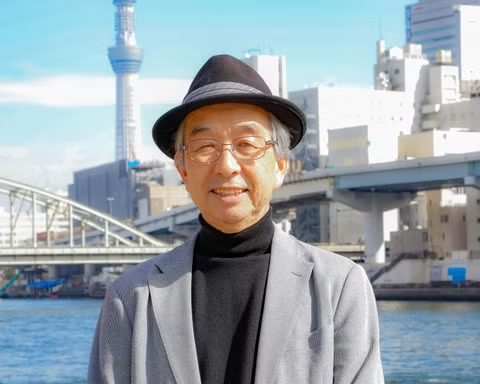
I was born and grew up in Yokohama. I used to work in Tokyo for more than 20 years. I became the National Government Licensed Guide Interpreter in English in 2013. At first, I had attended a volunteer group which provided a tour of the Imperial Palace East Gardens until 2015. I guided more than fifty times in the garden as a volunteer and studied about Japanese history and culture. Based on this experience, I became a tour guide of this online site in 2015. Since then, I have guided more than 500 tours in Tokyo as well as Yokohama, Kamakura, Hakone, Kyoto, Nikko, etc., while improving my tours. My tours are very flexible and I always do my best to customize them according to the interests of my guests. I studied about the places and will provide you knowledge to appreciate them more deeply than just visiting there by yourself or a member of group tours. I like foods and I know many restaurants which provide typical Japanese lunch with reasonable price without waiting too long. Therefore, I am sure that I can provide you the best tours customized to your interests. It will be my great pleasure to help you to enjoy your stay in Japan. So please be my guest!!

Hello,I am HIROSHI YOKOYAMA. Please call me Hiro, not "hero". I have been lived in kyoto for more than 30years. So, I am very familiar with the city of Kyoto and a unique culture developed in Japan as well. I can offer you not only historic places like Nijo castle, Kinkakuji temple ,Kiyomizu temple etc., but also off the beaten track spots Nijo jinya house or nicknamed "ninjya house" ,Katsura Imperial Villa etc.. I am really looking forward to seeing you .
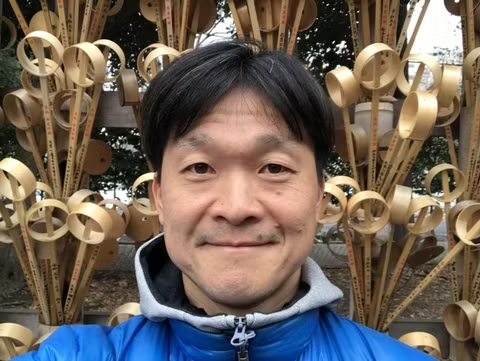
Hello, My name is Akira. I am certified national guide interpreter. I have been living in Tokyo for more than 30 years. I love walking in the city with no particular plan finding trasures in the streets such as nice ramen noodle restaurants, cafes, funny billboards, and most of all, narrow alleys that remind me of good old days. I will help you enjoying the days in the city fully and making your vist memorable one. I am looking forward to seeing you soon.
Plan your trip to japan.
Chat with a local tour guide who can help organize your trip.
Related Blogs

15 Most Popular Foods You Have To Eat In Japan
As many of you already know, japan is famous for its wonderful and unique cuisine. but when we think about japanese food, the first thing that comes to mind is fish and rice. this blog post will give you a wider view about the food culture in japan, and t....

10 Best Places for Pokémon Go in Tokyo
Tokyo, Japan
TLDR: The 10 best places for Pokémon Go in Tokyo are: Senso-ji Temple, Shibuya, Meiji-Jingu Shrine, Akihabara, Roppongi, Tokyo Tower, Ueno Park, Imperial Palace, Shinjuku and Odaibai.This list is not ranked in any specific order. And if you don't like to ...

Tokyo's Top 10 Sites for Anime and Manga Lovers
Tokyo, and in particular akihabara, has a plethora of museums, shops, cafes, and other sites targeted towards anime and manga lovers. as such, tokyo has become a popular tourist destination known worldwide. below we will introduce japan's 10 most popula....

More about Japan
Things to do in japan, more tours in japan, top japan destinations, follow us on social media.
Hidden Gems: Top 15 Nagoya Japan Attractions You Can't Miss
Explore the Top Attractions in Nagoya
Final thoughts on your nagoya journey, frequently asked questions.
Nagoya is a city in Aichi Prefecture with much to offer for every kind of traveler. If you're looking for things to see in Nagoya, you'll be thrilled with the diversity and excitement this city has to offer. From the historical grandeur of ancient castles to the cutting-edge wonders of modern museums, Nagoya has it all.
Whether you're strolling through serene gardens or exploring bustling shopping districts, the city's charm is irresistible. Dive into our guide and uncover the top 15 hidden gems that make Nagoya an unforgettable adventure!
1. Nagoya Castle
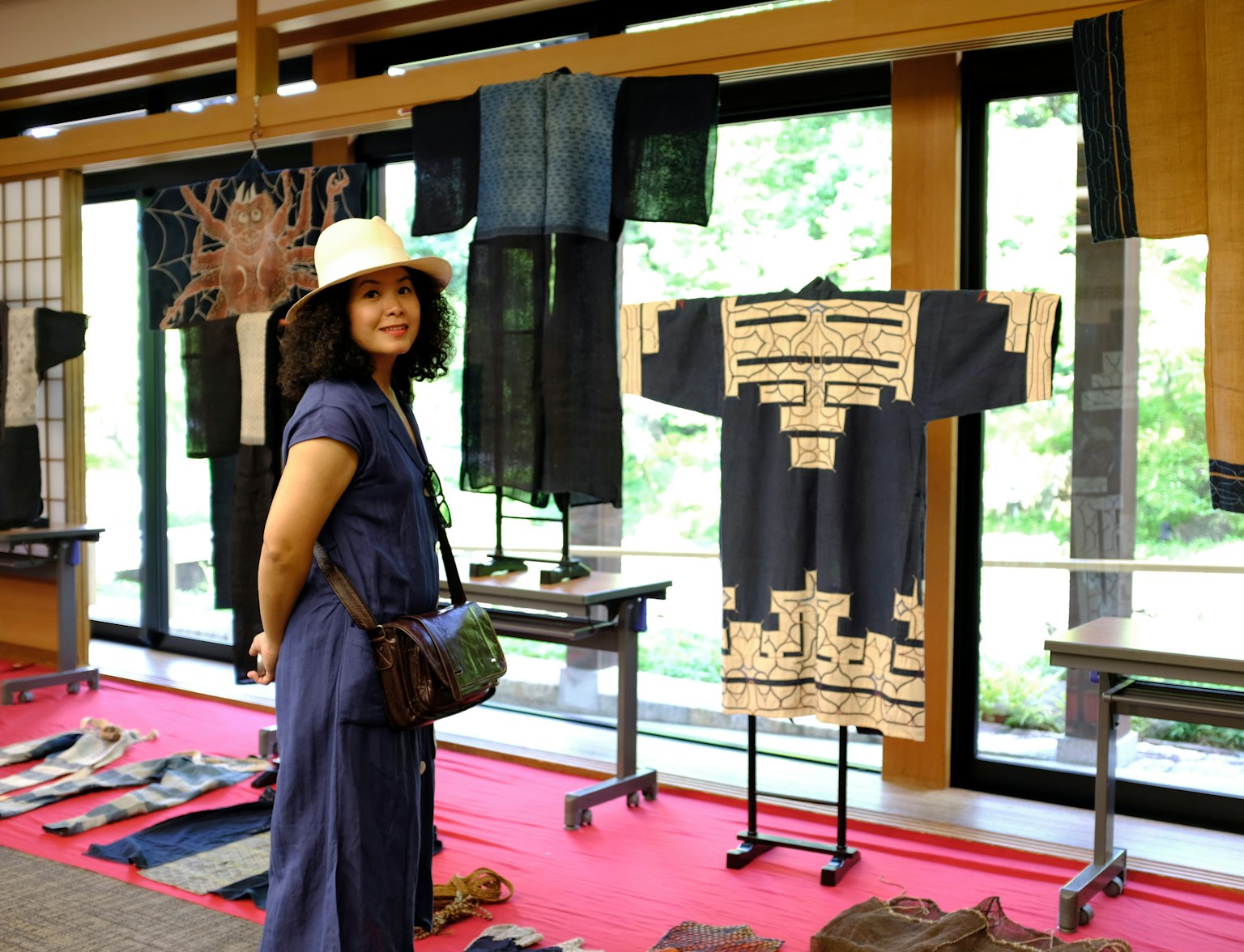
Immerse yourself in Japan's culture during a unique half-day tour!
Nagoya Castle is a prominent historical landmark that holds significant cultural value. Constructed in 1612 under the orders of Tokugawa Ieyasu, it was designed to solidify the Tokugawa shogunate's control over the region. The castle's architecture is remarkable, especially the golden shachihoko (mythical creatures resembling dolphins) adorning the roof. These golden ornaments are symbols of protection and prosperity.
The main tower, reconstructed after being destroyed during World War II, houses a museum with exhibits detailing the castle's history and the life of the samurai who resided there. The surrounding gardens are particularly beautiful in spring when cherry blossoms bloom, offering picturesque views and a tranquil atmosphere. Visitors can also explore the Honmaru Palace, which has been meticulously restored to showcase traditional Japanese interiors and exquisite wall paintings.
2. Atsuta Jingu Shrine
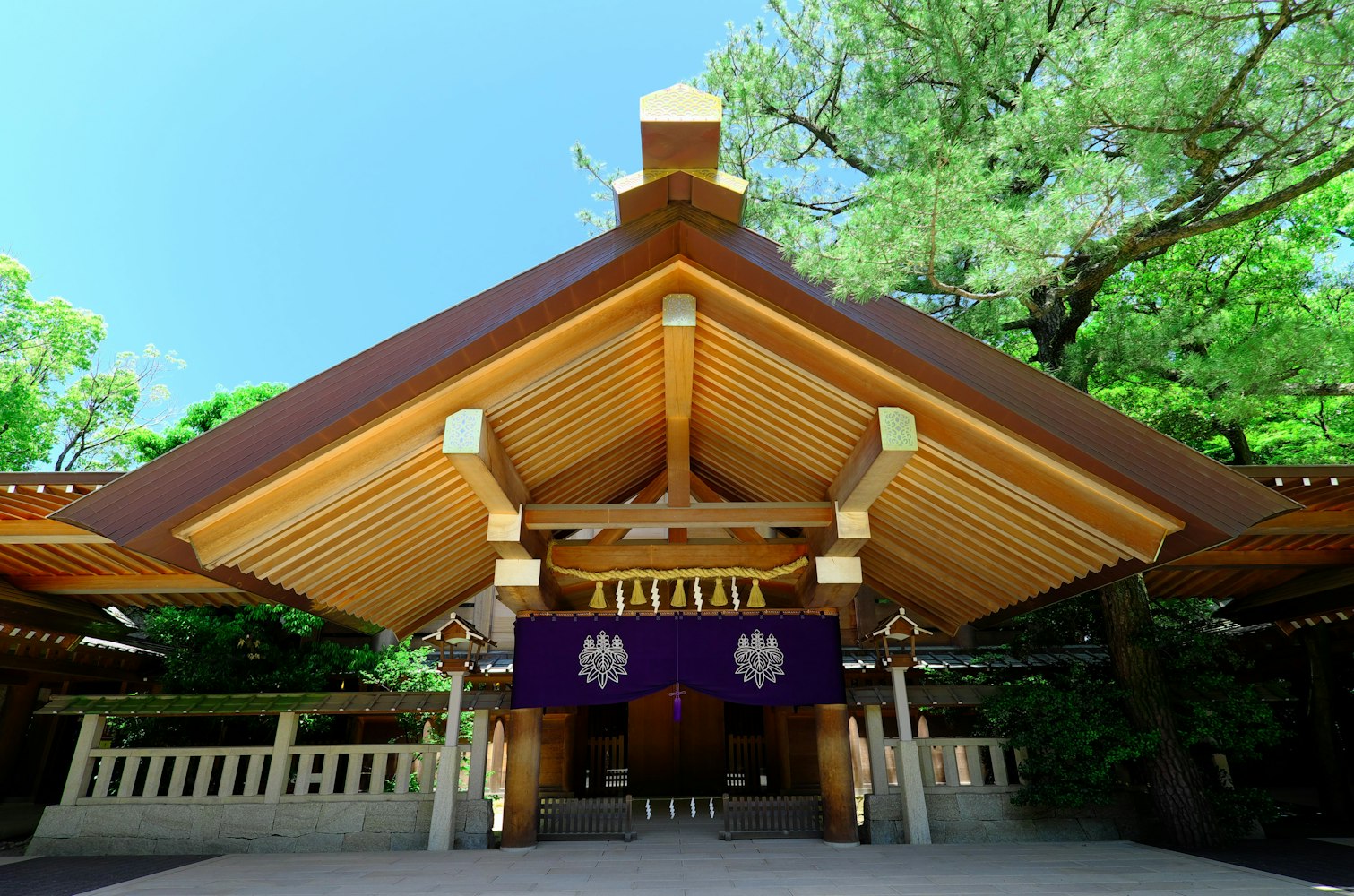
Atsuta Jingu Shrine , one of Japan's most important Shinto shrines, is dedicated to the Sun Goddess Amaterasu and houses the sacred sword Kusanagi-no-Tsurugi, one of Japan's three imperial regalia. This shrine has been a spiritual center for over 1,900 years and is deeply rooted in Japanese culture and history.
The shrine complex is set within a serene forested area, creating a peaceful and reflective environment. Visitors can explore various smaller shrines within the complex, each with its own unique significance. The treasure hall within the shrine grounds displays a fascinating collection of artifacts, including ancient manuscripts, weapons, and ceremonial items, providing a deeper understanding of Japan's spiritual heritage.
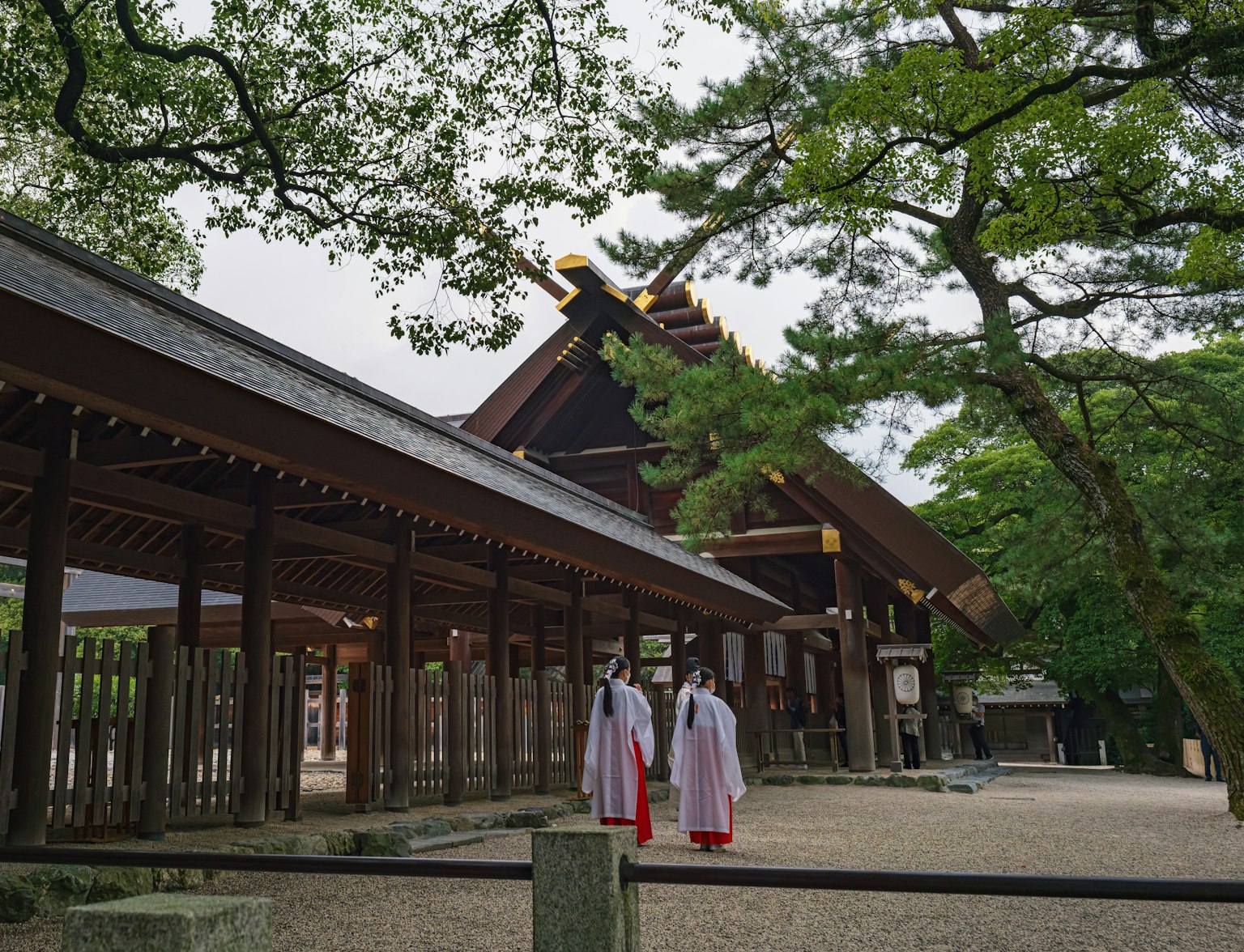
Experience the beauty and spirit of ancient Japan at Atsuta Shrine and Shirotori Garden in Nagoya!
3. Nagoya City Science Museum
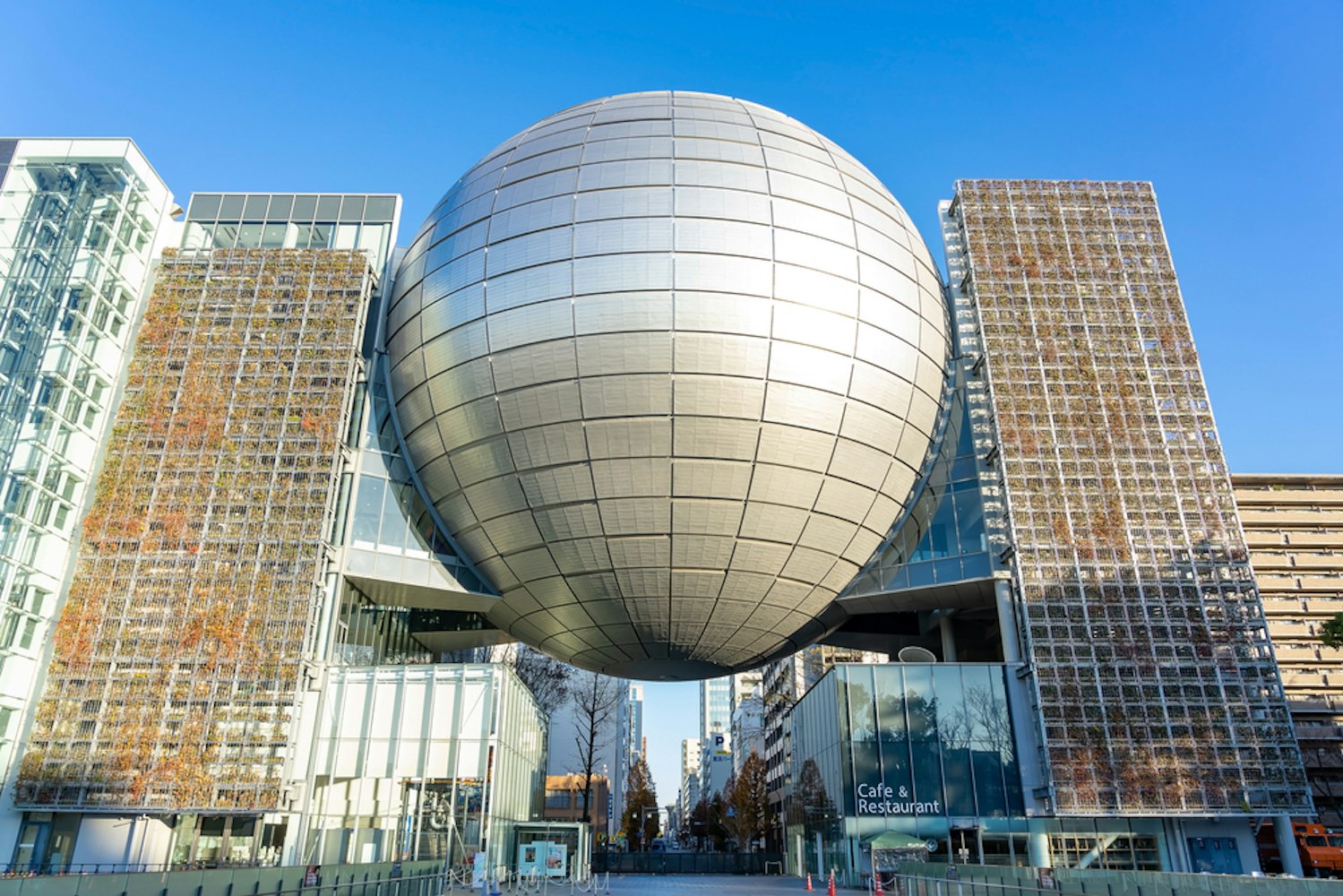
The Nagoya City Science Museum is a scientific knowledge and interactive learning treasure trove. It boasts the world's largest planetarium, which offers breathtaking shows about the cosmos, making it a hit with both children and adults.
The museum is divided into several sections, each dedicated to different fields of science, such as space, biology, and technology. Interactive exhibits and hands-on activities make learning engaging and fun.
For example, the "Tornado Lab" demonstrates the formation of tornadoes, while the "Electric Discharge Lab" showcases the power of electricity. This museum is not just for kids; adults will find plenty to intrigue them as well, making it a perfect family outing destination.
4. SCMAGLEV and Railway Park

Experience the most recent developments in technology and industry with this tour.
The SCMAGLEV and Railway Park is a must-visit for train enthusiasts and anyone interested in the history and future of railway technology. The museum's collection includes over 30 real train cars, ranging from historic steam locomotives to the latest magnetic levitation (MAGLEV) trains.
One of the highlights is the detailed display on the Shinkansen (bullet train) development and its impact on Japan's transportation system . Interactive exhibits, such as train driving simulators, allow visitors to experience what it's like to operate these high-speed marvels.
The museum also provides insights into the future of railway technology, including the ongoing development of the MAGLEV train, which aims to revolutionize travel with its unprecedented speeds.
5. Toyota Commemorative Museum of Industry and Technology
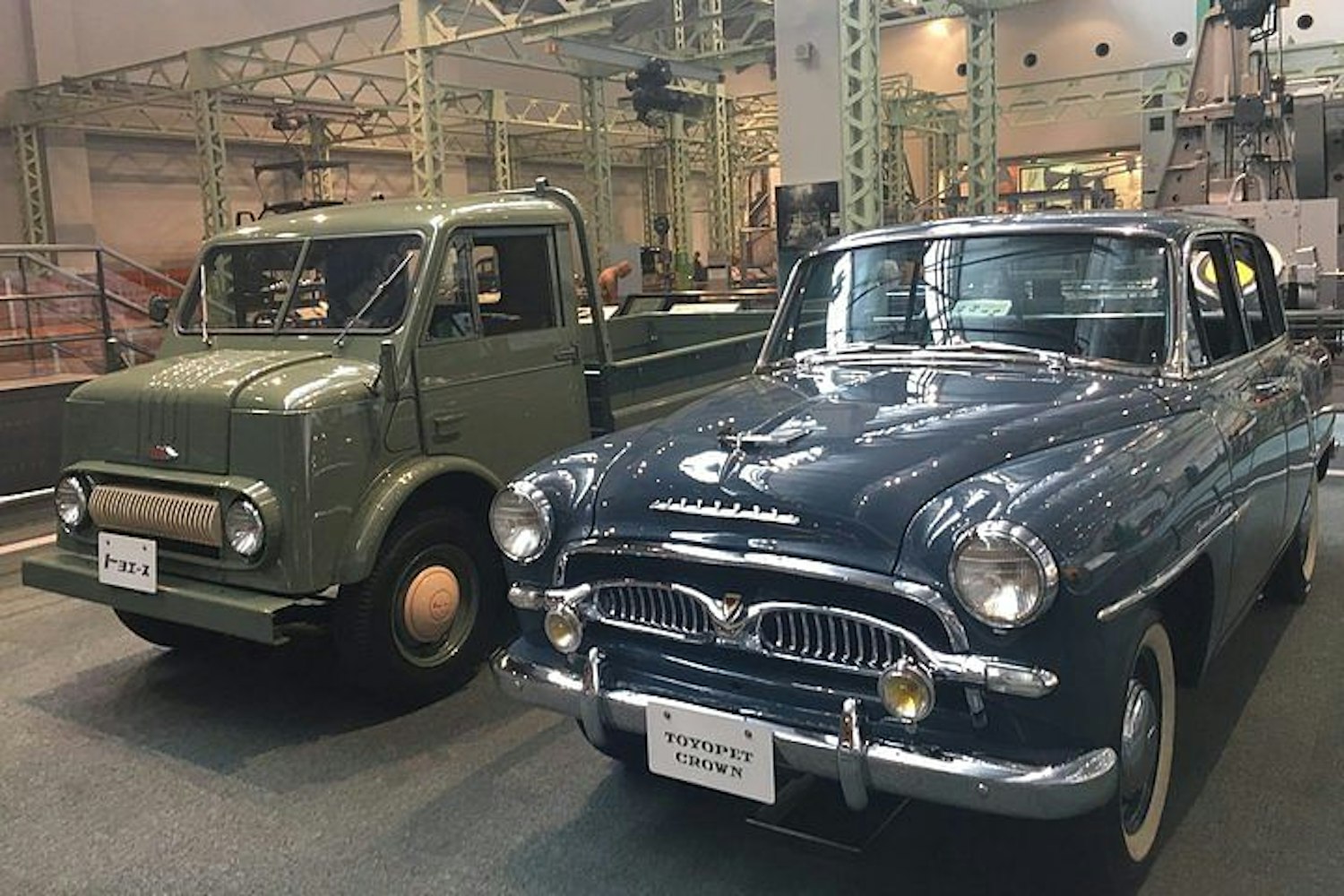
The Toyota Commemorative Museum of Industry and Technology, located in a former textile factory, chronicles the evolution of the Toyota Motor Corporation from its beginnings as a textile manufacturer to its current status as an automotive giant.
The museum is divided into two main sections: the Textile Machinery Pavilion and the Automobile Pavilion. In the Textile Machinery Pavilion, visitors can see demonstrations of vintage looms and spinning machines, highlighting the innovations that laid the foundation for Toyota's success.
The Automobile Pavilion showcases the development of Toyota's automotive technology, with exhibits featuring classic models, engine components, and cutting-edge car technologies. Live demonstrations and interactive displays make this museum both educational and engaging.
6. Ghibli Park

Ghibli Park, dedicated to the enchanting works of Studio Ghibli, offers a magical experience for fans of Japanese animation. The park recreates scenes and settings from beloved Ghibli films like "My Neighbor Totoro," "Spirited Away," and "Princess Mononoke."
Visitors can explore themed areas that bring these animated worlds to life. The park features detailed replicas of iconic locations, interactive exhibits, and opportunities to meet and take photos with life-sized characters from the films. Ghibli Park is designed to immerse visitors in the whimsical and imaginative world of Studio Ghibli, making it a must-visit for animation enthusiasts of all ages.
7. Legoland Japan
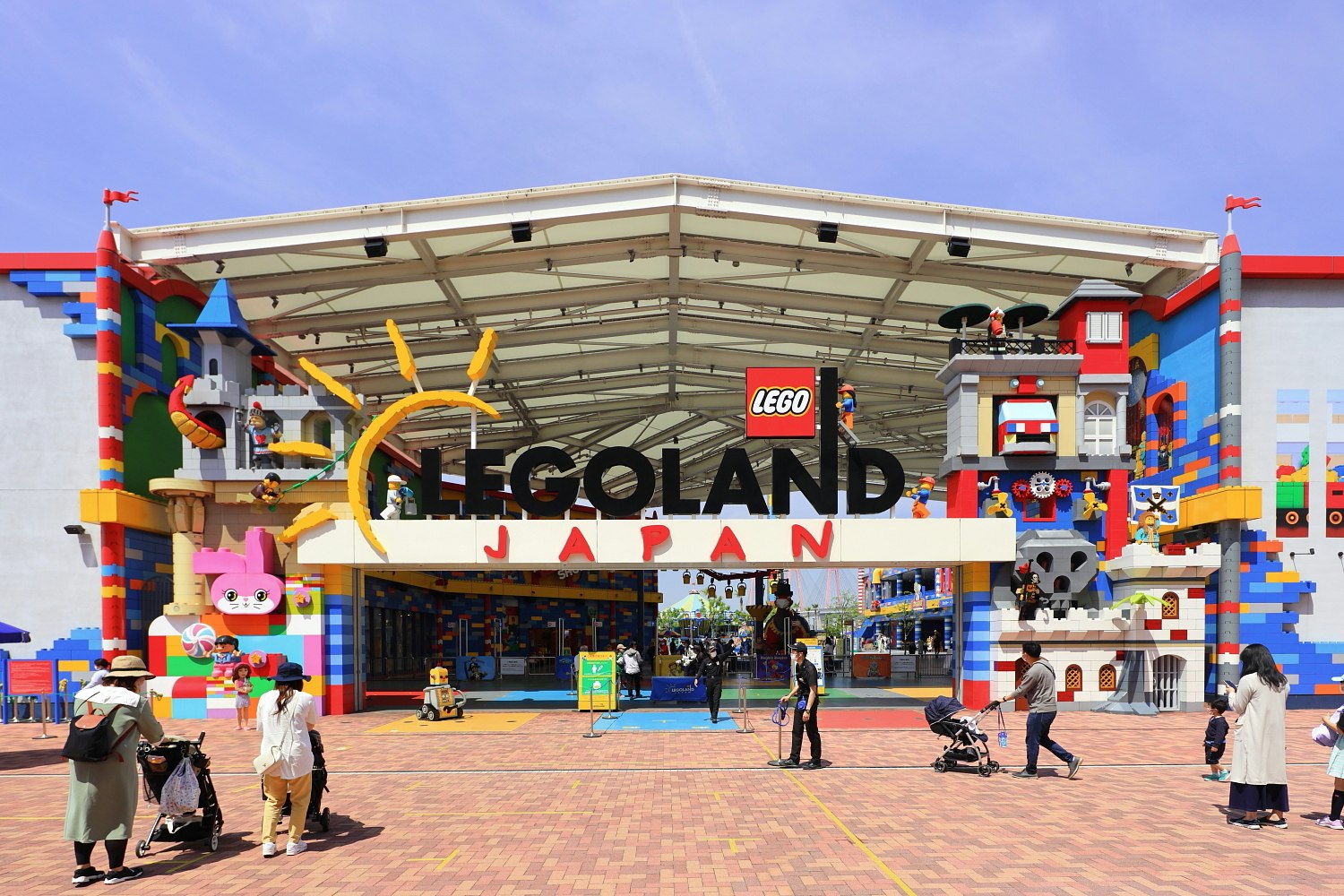
Legoland Japan is a theme park that offers families a fun and creative experience. The park is divided into several themed areas, each featuring rides, attractions, and interactive activities built with Lego bricks.
One of the highlights is Miniland, where visitors can see detailed miniature replicas of famous Japanese landmarks constructed entirely out of Lego bricks. The park also features exciting rides like roller coasters and water attractions, as well as live shows and building workshops where kids can unleash their creativity. Legoland Japan is an ideal destination for a day of fun, adventure, and hands-on learning.
8. Nagoya TV Tower
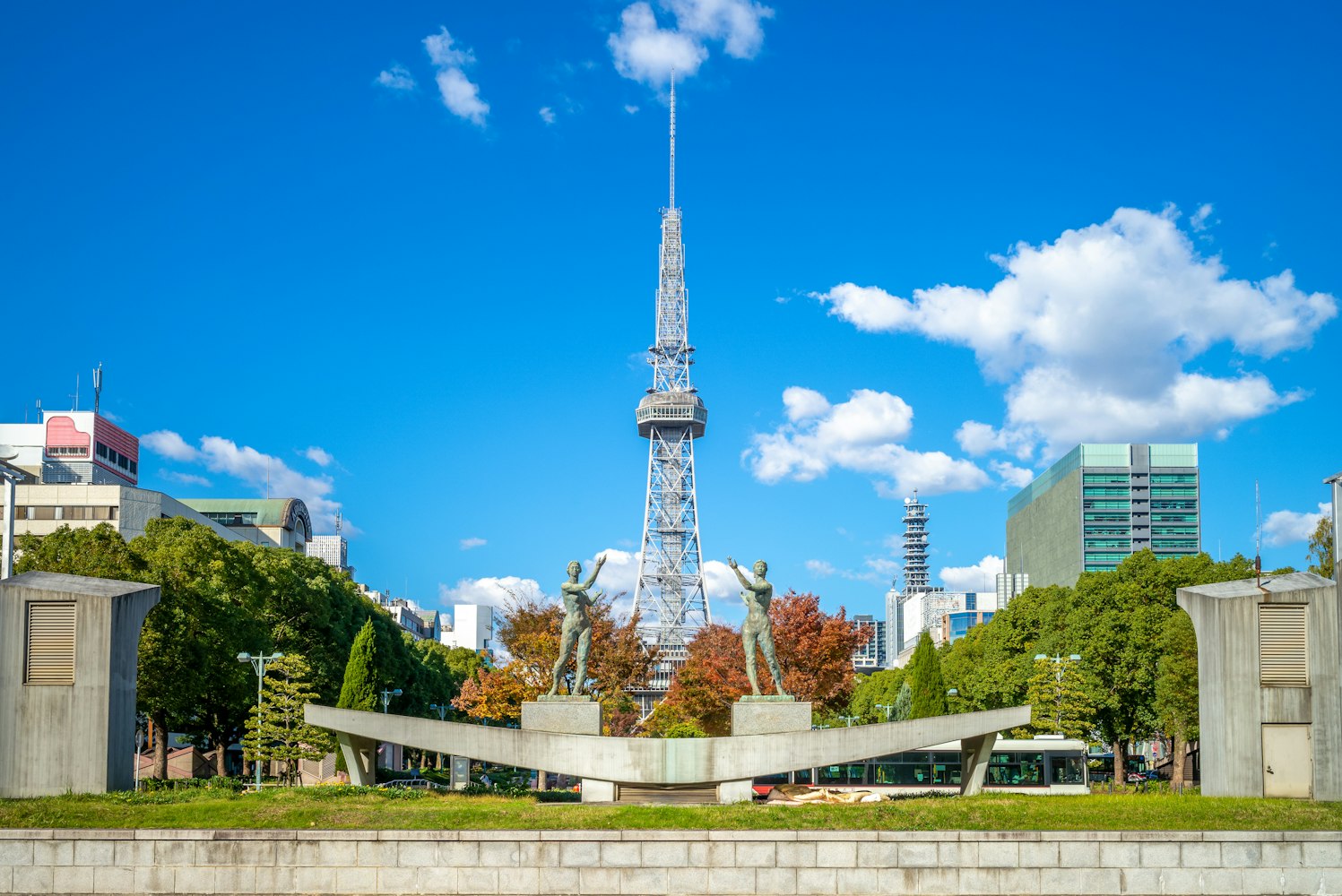
Nagoya TV Tower, standing at 180 meters, is one of the city's most recognizable landmarks. It offers stunning panoramic views of Nagoya from its observation decks. The tower in Hisaya Odori Park is a great place to get a bird's-eye view of the city's layout and surrounding areas.
At night, the tower is illuminated, creating a striking visual against the city skyline. Visitors can enjoy a meal at the tower's restaurant while taking in the views or simply relax and take photos from the observation deck. The Nagoya TV Tower is a popular spot for locals and tourists to appreciate the city's beauty from above.
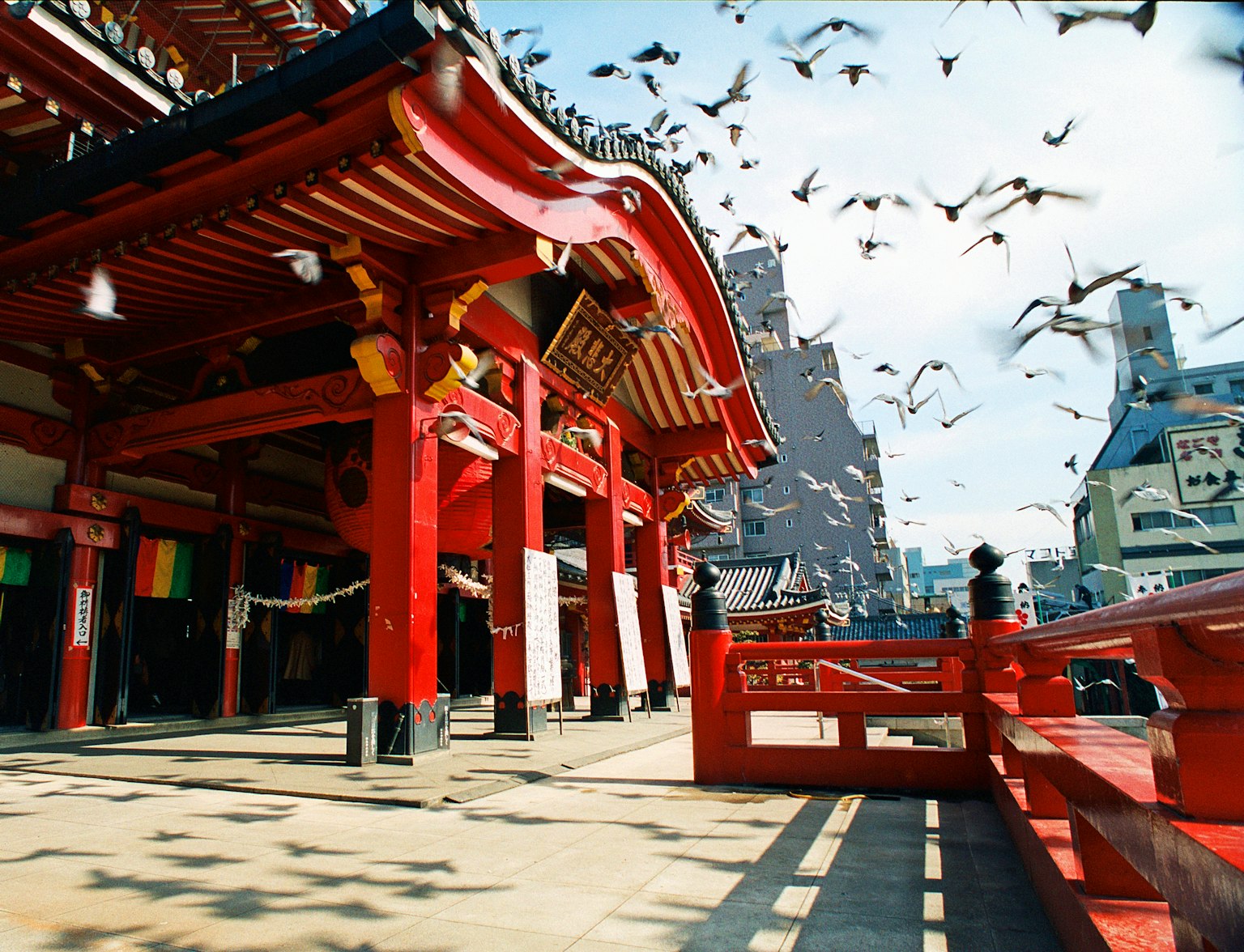
Experience the sights, sounds and energy of this vibrant destination!
9. Osu Kannon Temple
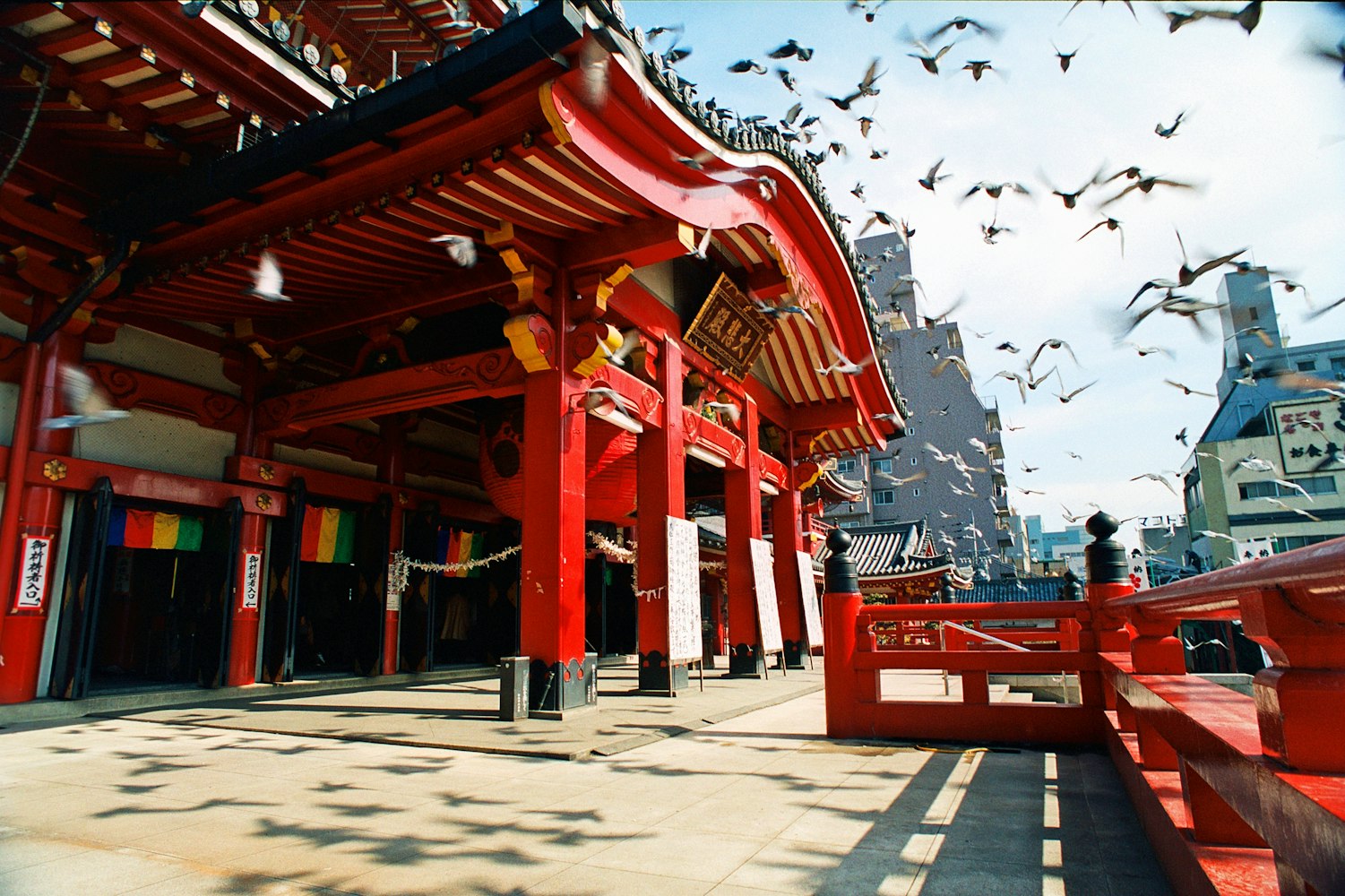
Osu Kannon Temple, located in the bustling Osu shopping district, is a historic Buddhist temple with deep cultural significance. The temple, originally built in the 14th century and moved to its current location in the 17th century, houses a wooden statue of Kannon, the goddess of mercy.
The temple's architecture and serene atmosphere provide a stark contrast to the lively shopping streets surrounding it. The Osu shopping district is known for its eclectic mix of shops, ranging from traditional craft stores to modern electronics shops. Visitors can enjoy exploring the area, sampling local street food, and finding unique souvenirs.
10. Tokugawa Art Museum
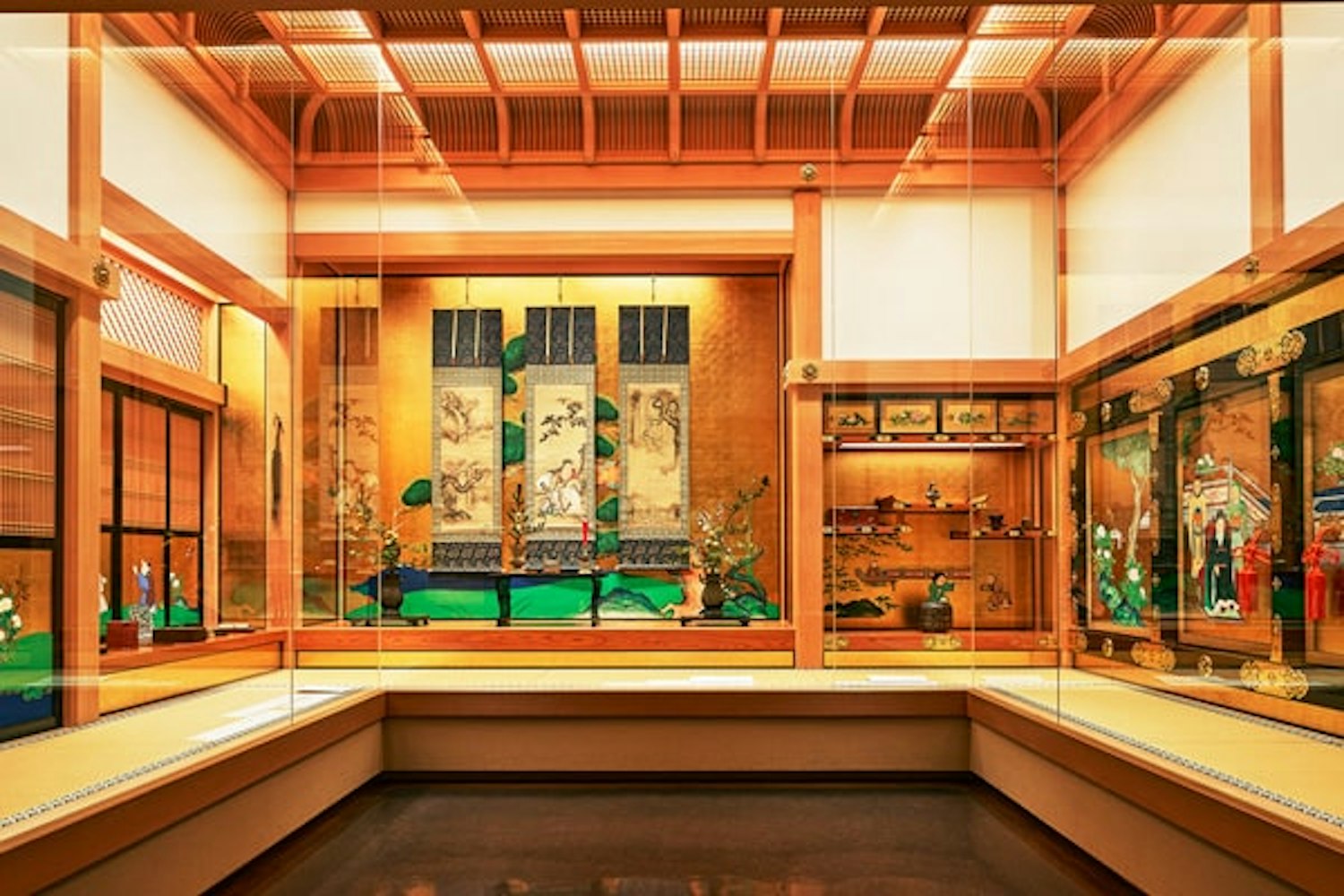
The Tokugawa Art Museum offers a fascinating look into the cultural heritage of the Owari branch of the Tokugawa family. The museum's extensive collection includes samurai armour, tea ceremony utensils, Noh theatre masks, and ancient manuscripts.
The exhibits provide a glimpse into the opulent lifestyle and refined tastes of the Tokugawa clan during the Edo period . The adjacent Tokugawa Garden is a beautifully landscaped Japanese garden featuring ponds, waterfalls, and seasonal flowers. It's a perfect place to stroll and enjoy the tranquility of nature after exploring the museum's treasures.
11. Higashiyama Zoo and Botanical Gardens

Discover Nagoya's vibrant mix of tradition and modernity with this tour.
The Higashiyama Zoo and Botanical Gardens is a comprehensive recreational area combining a zoo, botanical garden, and amusement park. The zoo is home to a wide variety of animals, including koalas, elephants, lions, and giraffes.
The botanical gardens feature numerous plant species, creating a green oasis in the heart of the city. Walking paths, picnic areas, and seasonal flower displays make it a great place for a family outing. The small amusement park within the complex offers rides and attractions for children, making it an all-encompassing destination for visitors of all ages.
12. Nagoya Public Aquarium
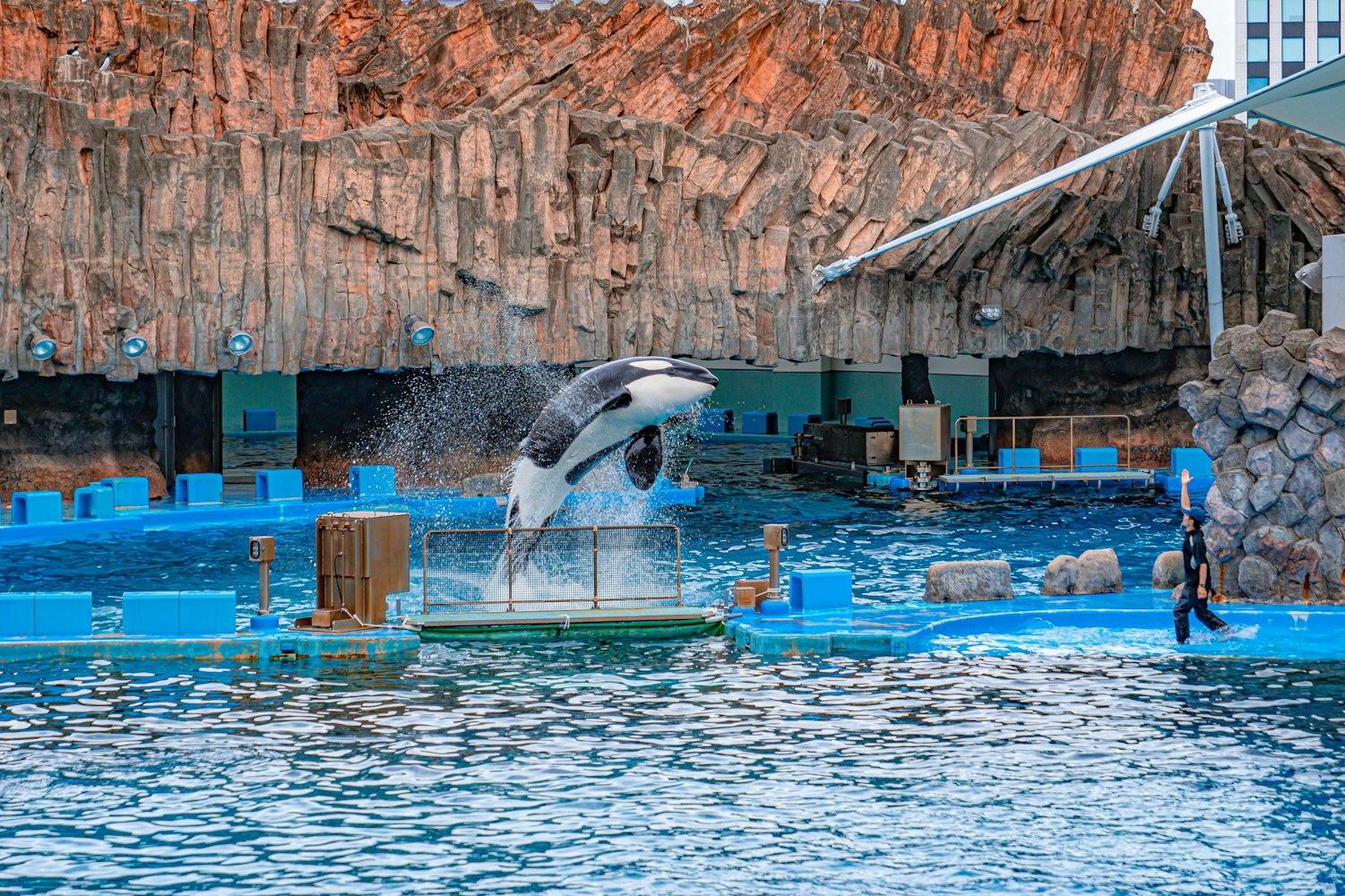
Nagoya Public Aquarium, situated at Nagoya Port , is a top destination for marine life enthusiasts. The aquarium is divided into different sections, each representing marine environments from around the world, such as the Antarctic Ocean, Australian Waters, and the Japanese Sea.
Highlights of the aquarium include impressive dolphin shows, a large coral reef exhibit, and an extensive collection of marine creatures, including sharks, rays, and sea turtles. The aquarium's educational programs and interactive exhibits provide valuable insights into marine biology and conservation efforts. It's a perfect place to spend a day learning about and appreciating the ocean's wonders.
13. Meiji Mura Museum
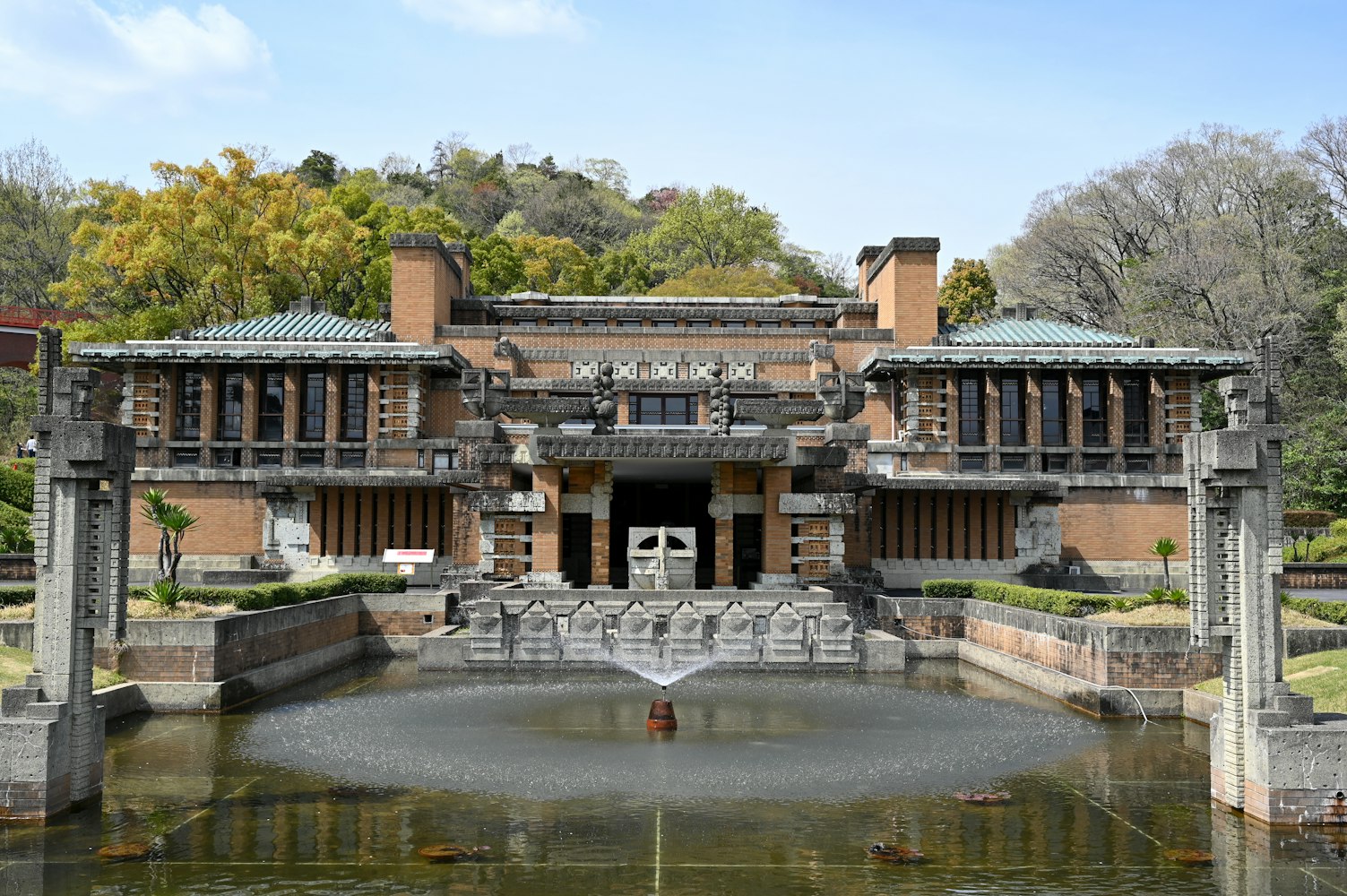
Meiji Mura Museum, an open-air museum in Inuyama, near Nagoya, preserves buildings from the Meiji period (1868-1912), a time when Japan rapidly modernized and westernized. The museum features over sixty historical structures, including churches, schools, and homes, meticulously relocated and reconstructed to create an authentic village atmosphere.
Visitors can explore these buildings and learn about the architectural and cultural changes that took place during the Meiji era. The museum offers a unique opportunity to step back in time and experience the blend of traditional Japanese and Western influences that characterized this pivotal period in Japan's history.
14. Sky Promenade

Sky Promenade, located in the Midland Square building in Central Nagoya, offers breathtaking views of the city from its observation deck. The open-air deck, situated 247 meters above ground, provides a 360-degree view of Nagoya and its surroundings.
Visitors can enjoy the stunning scenery, watch the sunset, or marvel at the city lights at night. The observation deck is a popular spot for photography, offering a unique perspective on Nagoya's urban landscape. It’s an ideal place to relax and take in the beauty of the city from above.
15. Shopping and Entertainment in Sakae
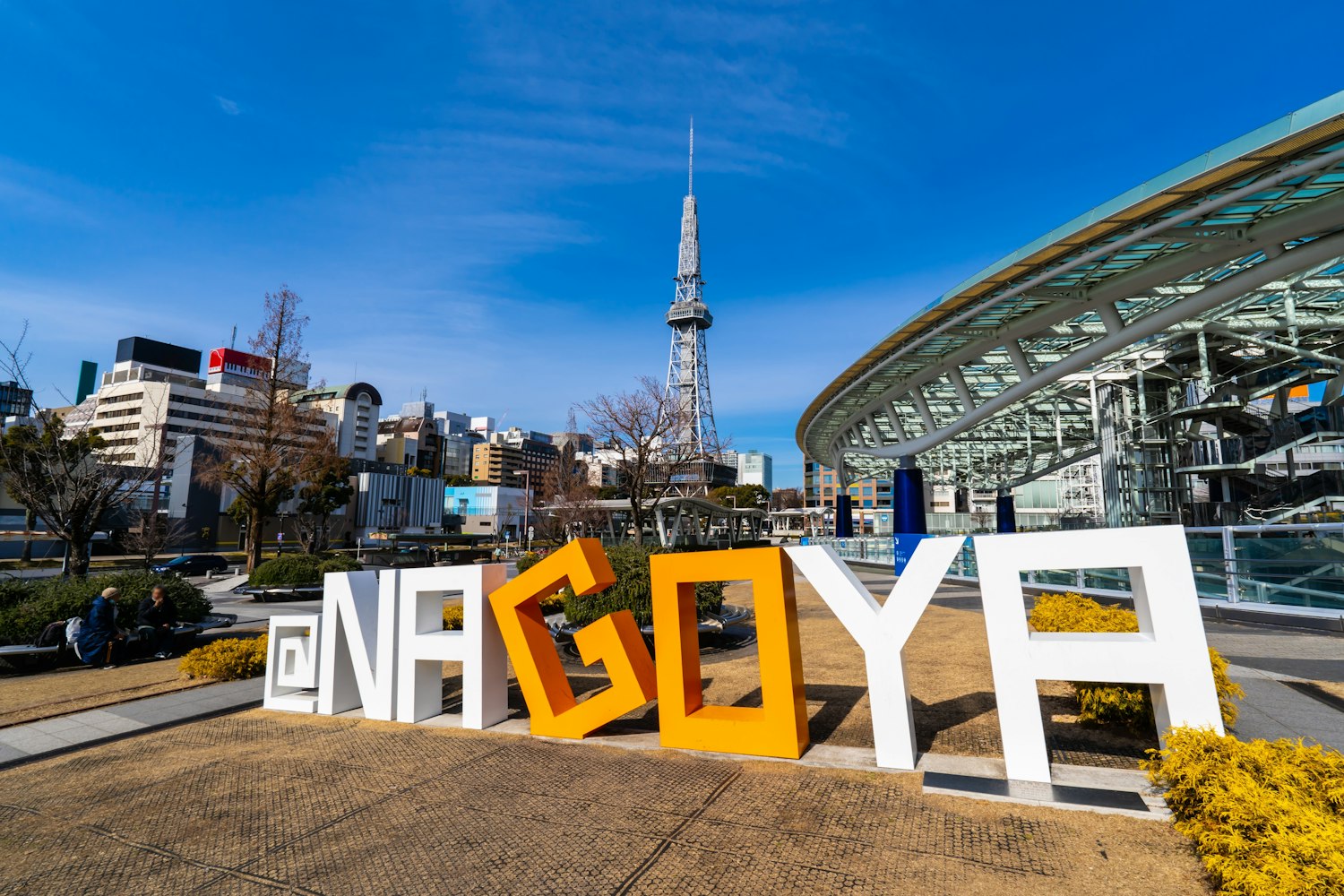
Sakae, Nagoya's main shopping and entertainment district, is a vibrant area filled with department stores, boutiques, restaurants, and entertainment venues. Visitors can shop for high-end fashion at stores like Matsuzakaya and Mitsukoshi or explore underground shopping malls like Oasis 21 and Central Park.
The area is also home to numerous restaurants offering a wide variety of cuisines, from traditional Japanese dishes to international fare. Sakae's nightlife is equally lively, with bars, clubs, and entertainment venues providing plenty of options for evening entertainment. The district is also where you'll find the Nagoya TV Tower and Hisaya Odori Park, making it a convenient and bustling place to explore.

Experience Nagoya like never before with a one-hour, English-guided jogging tour.
Nagoya is a city full of surprises. From the ancient beauty of Nagoya Castle to the peaceful Atsuta Jingu Shrine and the fascinating SCMAGLEV and Railway Park, each place has something special to offer.
These attractions highlight the city's rich history and modern achievements, giving you a deeper appreciation of its unique charm. Enjoy exploring Nagoya and discovering all the wonderful experiences it has in store!
What are the must-see attractions in Nagoya, Japan?
Nagoya boasts a range of must-see attractions, including Nagoya Castle, renowned for its golden shachihoko and historical exhibits; Atsuta Jingu Shrine, which houses the sacred sword Kusanagi-no-Tsurugi; and the Nagoya City Science Museum, featuring the world's largest planetarium. Additionally, the SCMAGLEV and Railway Park showcases the evolution of Japan's railway system.
How do I get to Nagoya from Tokyo?
The most efficient way to travel from Tokyo to Nagoya is by Shinkansen (bullet train), with the Nozomi service taking about 1.5 hours and the Hikari service around 2 hours. Regular trains and buses are also available, though they take significantly longer.
Are there any family-friendly attractions in Nagoya?
Absolutely! Legoland Japan is a hit with kids, featuring themed rides and Lego creations. Higashiyama Zoo and Botanical Gardens offer a mix of wildlife and lush landscapes, while Nagoya Public Aquarium at Nagoya Port impresses with its dolphin shows and marine life exhibits.
Can I visit Nagoya on a day trip from Kyoto or Osaka?
Yes, Nagoya is easily accessible from Kyoto and Osaka by Shinkansen, with travel times of about 1 hour. This makes Nagoya a convenient and exciting day trip option for exploring its unique attractions.
Where can I try local food in Nagoya?
Nagoya is famous for its local cuisine, known as Nagoya meshi. Must-try dishes include miso katsu (pork cutlet with miso sauce), hitsumabushi (grilled eel on rice), and tebasaki (seasoned chicken wings). These can be found at various restaurants, food stalls, and markets around the city, particularly in Sakae and Osu districts.
Continue reading
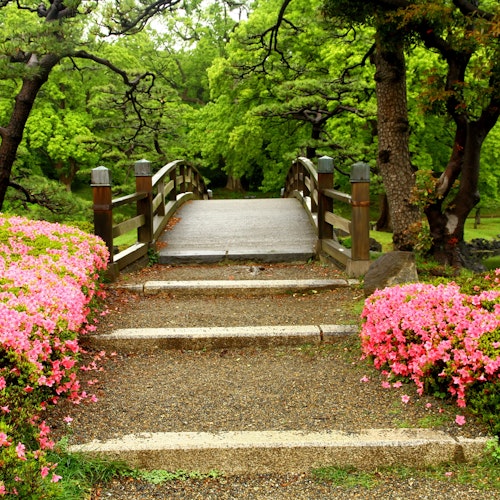
Moments Log
Blogging every moment of your life
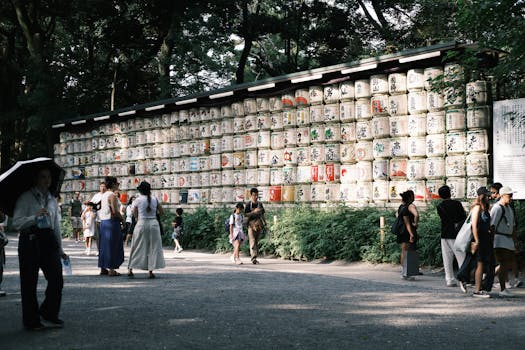
Discovering Lesser-Known Cultural Hotspots in Tokyo
Table of contents, hidden temples: exploring tokyo’s secret shrines, offbeat neighborhoods: uncovering tokyo’s unique districts, local markets: a guide to tokyo’s lesser-known shopping spots, art in unexpected places: street art and galleries in tokyo, culinary gems: discovering tokyo’s hidden food experiences.
“Unveil Tokyo : Explore Hidden Cultural Gems Beyond the Neon Lights.”
Tokyo, a bustling metropolis known for its neon lights and towering skyscrapers, is also home to a treasure trove of hidden temples and shrines that often go unnoticed by the average tourist. While many flock to the iconic Senso-ji in Asakusa or Meiji Shrine in Shibuya, there are countless lesser-known spiritual havens scattered throughout the city, each with its own unique charm and history. Exploring these hidden gems offers a refreshing perspective on Tokyo’s rich cultural tapestry, allowing visitors to connect with the city’s spiritual side in a more intimate way.
One such hidden gem is the Kanda Myojin Shrine, tucked away in the Kanda district. This shrine, dedicated to the guardian deity of business and prosperity, is a favorite among local entrepreneurs. As you step through the torii gate, you’ll immediately feel a sense of tranquility wash over you, contrasting sharply with the urban chaos just outside. The vibrant red and gold colors of the shrine’s architecture are striking, and if you’re lucky enough to visit during a festival, you’ll witness traditional ceremonies that bring the shrine to life. Don’t forget to check out the ema (wooden prayer plaques) where visitors write their wishes; the creativity and sincerity of these messages can be quite touching.
Moving on, another hidden temple worth exploring is the Gotokuji Temple in Setagaya. Often referred to as the birthplace of the famous “maneki-neko” or beckoning cat, this temple is a delightful spot for cat lovers. As you wander through the grounds, you’ll be greeted by hundreds of small ceramic cats, each one a symbol of good luck and fortune. The serene atmosphere here is perfect for reflection, and the temple’s beautiful gardens provide a peaceful escape from the city’s hustle and bustle. It’s a great place to snap some unique photos and perhaps even pick up a lucky charm to take home.
If you’re in the mood for something a bit more off the beaten path, consider visiting the Hama-Rikyu Gardens. While not a temple in the traditional sense, this historic garden features a small Shinto shrine that offers a glimpse into Japan’s feudal past. The juxtaposition of the meticulously maintained gardens against the backdrop of modern skyscrapers is striking. As you stroll along the pathways lined with cherry blossoms and ancient pine trees, you can almost hear the whispers of history. The gardens also house a teahouse where you can enjoy matcha while overlooking the tranquil pond, making it a perfect spot to unwind.
Another fascinating site is the Yasukuni Shrine, which often sparks debate due to its controversial history. However, visiting this shrine provides insight into Japan’s complex relationship with its past. The shrine honors those who died in service to the country, and while it may not be everyone’s cup of tea, it’s an important part of Tokyo’s historical landscape. The surrounding gardens are beautiful, especially during cherry blossom season, and the atmosphere is one of solemnity and respect.
As you explore these hidden temples and shrines, you’ll discover that Tokyo is much more than just a city of modernity; it’s a place where ancient traditions coexist with contemporary life. Each visit offers a unique experience, allowing you to connect with the spiritual essence of Japan in a way that larger, more famous sites cannot. So next time you find yourself in Tokyo, take a moment to venture off the beaten path and uncover these secret sanctuaries that hold the stories of centuries past. You might just find a piece of tranquility amidst the urban whirlwind.
Tokyo, a city renowned for its vibrant culture and bustling streets, is often associated with iconic landmarks like Shibuya Crossing and the towering Tokyo Skytree. However, beyond these well-trodden paths lies a treasure trove of offbeat neighborhoods that offer a glimpse into the city’s unique character and charm. Exploring these lesser-known districts can be a delightful adventure, revealing hidden gems that showcase the rich tapestry of Tokyo’s cultural landscape.
One such neighborhood is Yanaka, a place that feels like a time capsule of old Tokyo. As you stroll through its narrow, winding streets, you’ll encounter traditional wooden houses, quaint temples, and a sense of nostalgia that’s hard to find in the more modern parts of the city. The area survived the bombings of World War II, which means many of its structures have remained intact, allowing visitors to experience a slice of history. The Yanaka Cemetery, with its serene pathways and cherry blossom trees, is a peaceful spot to reflect and soak in the atmosphere. Nearby, the Yanaka Ginza shopping street offers a delightful mix of local snacks and handmade crafts, making it the perfect place to grab a bite or pick up a unique souvenir.
Transitioning from the historical charm of Yanaka, we find ourselves in Shimokitazawa, a neighborhood that pulses with youthful energy and creativity. Known for its bohemian vibe, Shimokitazawa is a haven for vintage lovers and indie enthusiasts. The streets are lined with quirky shops selling everything from retro clothing to handmade accessories. As you wander through the maze of alleys, you might stumble upon a cozy café or a live music venue where local artists showcase their talents. The atmosphere here is laid-back, encouraging you to take your time and explore at your own pace. Don’t forget to check out the small theaters that often host experimental plays and performances, adding to the district’s artistic flair.
As we continue our journey, we arrive at Koenji, another offbeat neighborhood that has carved out its own identity. This area is famous for its punk rock scene and alternative culture, making it a hotspot for those seeking something different. The streets are adorned with colorful murals and graffiti, reflecting the creative spirit of the community. Koenji is also home to numerous second-hand shops where you can find everything from vintage vinyl records to unique fashion pieces. The annual Awa Odori dance festival held here is a must-see, as locals and visitors alike come together to celebrate with lively music and traditional dance.
Next on our adventure is Kichijoji, a neighborhood that perfectly blends urban life with nature. While it’s gaining popularity among tourists, it still retains a local feel that makes it special. The highlight here is Inokashira Park, a beautiful green space where you can rent a paddleboat or simply enjoy a leisurely walk among the cherry blossoms. The park is also home to the Ghibli Museum, which is a dream come true for fans of Studio Ghibli films. After exploring the park, you can head to the nearby shopping streets filled with charming boutiques and eateries, offering everything from artisanal ice cream to delicious ramen.
In conclusion, Tokyo’s offbeat neighborhoods are a testament to the city’s diverse culture and history. Each district has its own unique story to tell, inviting you to explore beyond the usual tourist spots. Whether you’re wandering through the nostalgic streets of Yanaka, soaking in the creative energy of Shimokitazawa, embracing the alternative vibe of Koenji, or enjoying the natural beauty of Kichijoji, these hidden gems promise an unforgettable experience that captures the essence of Tokyo in all its multifaceted glory. So grab your map and set off on an adventure to discover the lesser-known cultural hotspots that make this city truly special.

First up is the Yanaka Ginza, a nostalgic shopping street that feels like a step back in time. Nestled in the Yanaka district, this market is lined with quaint shops and food stalls that showcase traditional Japanese snacks and handmade crafts. As you stroll through the narrow alleyways, the atmosphere is filled with the aroma of freshly grilled yakitori and sweet melon bread. It’s a perfect spot to grab a quick bite while browsing through local artisan goods. The friendly shopkeepers often share stories about their products, making your shopping experience feel personal and warm.
Next, let’s head over to the Kichijoji area, where you’ll find the lively Harmonica Yokocho. This narrow alleyway is packed with tiny bars, eateries, and shops that create a vibrant atmosphere. The market is particularly famous for its vintage clothing stores and quirky second-hand shops, where you can unearth unique fashion finds that tell a story of their own. As you navigate through the maze of stalls, don’t forget to stop by one of the many izakayas for a refreshing drink and some delicious small plates. The lively chatter and laughter from locals enjoying their evening will make you feel right at home.
If you’re in the mood for something a bit more traditional, then the Ameyoko Market near Ueno Park is a must-visit. Originally a black market after World War II, Ameyoko has transformed into a bustling marketplace filled with everything from fresh seafood to Japanese sweets. As you wander through the vibrant stalls, you’ll encounter vendors calling out their specials, creating an energetic atmosphere that’s hard to resist. Sampling street food here is a rite of passage; try the takoyaki or some grilled fish for an authentic taste of Tokyo. Plus, the market’s proximity to Ueno Park makes it an ideal stop after a leisurely stroll through the park’s beautiful cherry blossoms.
Another hidden treasure is the Nakano Broadway, a shopping complex that caters to anime and manga enthusiasts. While it may not be a traditional market, its eclectic mix of shops selling vintage toys, rare collectibles, and unique fashion items makes it feel like one. The atmosphere is electric, filled with fellow fans excitedly discussing their favorite series or hunting for that elusive item to complete their collection. Even if you’re not an anime aficionado, the sheer variety of quirky shops and cafes makes it a fun place to explore.
Finally, don’t overlook the local farmers’ markets that pop up around the city on weekends. These markets are perfect for picking up fresh produce, homemade jams, and artisanal bread while mingling with local farmers and artisans. The sense of community is palpable, and you might even find yourself chatting with a vendor about their farming practices or favorite recipes.
In conclusion, Tokyo’s lesser-known local markets offer a refreshing alternative to the city’s more commercial shopping areas. Each market has its own unique charm and character, inviting you to immerse yourself in the local culture. So next time you’re in Tokyo, take a break from the usual tourist spots and venture into these vibrant markets; you might just discover a side of the city that feels like home.
Tokyo, a city renowned for its vibrant culture and cutting-edge technology, is also a treasure trove of artistic expression waiting to be discovered in the most unexpected places. While many visitors flock to the iconic museums and galleries, there’s a whole world of street art and hidden galleries that offer a unique glimpse into the city’s creative spirit. As you wander through the bustling streets of neighborhoods like Harajuku, Shibuya, and Nakameguro, you’ll find that art is not confined to traditional spaces; it spills out onto the walls, sidewalks, and even the sides of buildings, transforming the urban landscape into a living canvas.
One of the most exhilarating aspects of Tokyo’s street art scene is its ever-changing nature. Artists from all over the world come to leave their mark, and as a result, the city is constantly evolving. Take a stroll down the narrow alleys of Harajuku, where vibrant murals and intricate graffiti adorn the walls. Here, you might stumble upon a striking piece by a local artist or an international talent, each telling a story that reflects the city’s eclectic vibe. The juxtaposition of traditional Japanese aesthetics with contemporary street art creates a fascinating dialogue that invites you to pause and appreciate the creativity that thrives in these urban spaces.
As you continue your exploration, don’t miss the opportunity to visit some of Tokyo’s lesser-known galleries that showcase emerging artists. Tucked away in quiet corners of neighborhoods like Shimokitazawa and Koenji, these galleries often feature experimental works that challenge conventional norms. One such gem is the “Art Center Ongoing,” a small yet dynamic space that hosts a rotating roster of exhibitions, performances, and workshops. Here, you can engage with artists directly, gaining insight into their creative processes and the inspirations behind their work. This intimate setting fosters a sense of community and connection that larger institutions often lack.
Moreover, the art scene in Tokyo isn’t limited to just visual arts; it also encompasses various forms of performance art. In areas like Asakusa, you might encounter spontaneous performances by street musicians or dancers, adding another layer of vibrancy to the city’s cultural tapestry. These impromptu displays not only entertain but also reflect the diverse influences that shape Tokyo’s artistic landscape. It’s a reminder that art is not just something to be observed; it’s an experience to be felt and shared.
Transitioning from the streets to the galleries, you’ll find that many of these hidden spaces are run by passionate individuals who are dedicated to promoting local talent. For instance, “Gallery K” in Nakameguro focuses on showcasing works by up-and-coming artists, often hosting events that encourage dialogue between creators and the public. This commitment to fostering new voices in the art world makes these galleries essential stops for anyone looking to understand the pulse of Tokyo’s contemporary art scene.
In conclusion, while Tokyo boasts its fair share of famous museums and established galleries, the true essence of its artistic spirit can often be found in the most unexpected places. From the vibrant street art that colors the city’s walls to the intimate galleries that nurture emerging talent, there’s a wealth of creativity waiting to be discovered. So, next time you find yourself wandering through Tokyo, take a moment to look beyond the obvious and immerse yourself in the rich tapestry of art that surrounds you. You never know what hidden gems you might uncover along the way.
Tokyo is a city that never ceases to amaze, especially when it comes to its culinary scene. While many visitors flock to the iconic sushi bars and ramen shops, there’s a treasure trove of hidden food experiences waiting to be discovered. These lesser-known culinary gems offer a unique glimpse into the city’s rich food culture, often showcasing flavors and techniques that are deeply rooted in tradition yet infused with modern creativity.
One of the best ways to dive into Tokyo’s hidden food scene is by exploring the local izakayas, or Japanese pubs. Tucked away in narrow alleyways, these cozy establishments serve up a variety of small plates, perfect for sharing. Imagine stepping into a dimly lit space filled with the sounds of laughter and clinking glasses, where the aroma of grilled skewers wafts through the air. Here, you can savor dishes like yakitori, which are skewered and grilled chicken pieces, or perhaps some crispy tempura vegetables. The beauty of izakayas lies not only in the food but also in the atmosphere; they are places where locals unwind after a long day, making them perfect spots for travelers looking to experience authentic Japanese hospitality.
As you wander through the streets of neighborhoods like Shimokitazawa or Koenji, you’ll stumble upon tiny eateries that specialize in regional dishes. For instance, you might find a quaint soba shop that serves handmade buckwheat noodles, prepared right in front of you. The chef’s skill is evident as he expertly kneads the dough and cuts it into perfect strands. Pair your soba with a rich dipping sauce or enjoy it in a hot broth, and you’ll understand why this dish has been a staple in Japanese cuisine for centuries.
Transitioning from soba to something sweeter, don’t miss out on the hidden dessert spots scattered throughout the city. One such gem is a small café that specializes in matcha desserts. Here, you can indulge in a matcha parfait layered with creamy green tea ice cream, sweet red bean paste, and crunchy mochi. The café’s serene ambiance, complete with traditional tatami mats and soft lighting, makes it an ideal place to relax and savor each bite. As you enjoy your dessert, take a moment to appreciate the artistry that goes into each dish; it’s a testament to the meticulous attention to detail that defines Japanese culinary culture.
If you’re feeling adventurous, consider seeking out a kaiseki restaurant that offers a seasonal tasting menu. These establishments may be less visible than their more commercial counterparts, but they provide an unforgettable dining experience. Kaiseki is a multi-course meal that emphasizes fresh, seasonal ingredients and beautiful presentation. Each dish is thoughtfully crafted to reflect the changing seasons, and the flavors are often subtle yet profound. Dining at a kaiseki restaurant is not just about the food; it’s an immersive experience that engages all your senses.
As you explore these culinary hotspots, remember to keep an open mind and embrace the unexpected. Whether it’s a hidden ramen shop with a secret broth recipe or a family-run curry house that has been serving the same dish for generations, each discovery adds another layer to your understanding of Tokyo’s vibrant food culture. So, grab your chopsticks and get ready to embark on a delicious journey through the lesser-known culinary gems of this incredible city. You never know what delightful surprises await just around the corner.
Winter is here! Check out the winter wonderlands at these 5 amazing winter destinations in Montana
- Travel Destinations
Hidden Gems And Must-See Spots In Meguro Tokyo
Published: September 4, 2024
by Mercie Moorehead
Looking for hidden gems in Tokyo? Meguro is the place to be! This charming district offers a mix of traditional and modern attractions. From serene parks to quirky museums, there's something for everyone. Imagine strolling through Meguro River during cherry blossom season or exploring the unique Tokyo Photographic Art Museum . Foodies will love the local eateries serving delicious Japanese cuisine. Whether you're a history buff or an art lover, Meguro has plenty to offer. Ready to uncover the best spots in this vibrant area? Let's dive into the must-see attractions that make Meguro a standout destination in Tokyo.
Hidden Gems and Must-See Spots in Meguro Tokyo
Meguro, a charming district in Tokyo, offers a delightful mix of traditional and modern attractions. From serene parks to quirky museums, there's something for everyone. Let's explore some of the best spots you shouldn't miss.
Parks and Nature
Meguro boasts beautiful green spaces perfect for relaxation and leisurely strolls. Here are some must-visit parks:
Meguro River Famous for its cherry blossoms, the Meguro River transforms into a pink wonderland during spring. The riverside walk is ideal for a peaceful afternoon.
Rinshinomori Park A hidden gem, this park offers lush greenery, walking trails, and a serene pond. It's a great spot for a picnic or a quiet escape from the city's hustle.
Institute for Nature Study This nature reserve provides a unique opportunity to explore diverse flora and fauna. The tranquil environment makes it perfect for nature enthusiasts.
Cultural Experiences
Immerse yourself in Meguro's rich cultural heritage by visiting these fascinating spots:
Meguro Parasitological Museum One of the quirkiest museums in Tokyo, it showcases a vast collection of parasites. It's both educational and intriguing, offering a unique experience.
Tokyo Photographic Art Museum Located in Yebisu Garden Place, this museum features stunning photography exhibitions. It's a must-visit for art lovers and photography enthusiasts.
Daienji Temple A historic temple with beautiful statues and a peaceful atmosphere. It's a great place to learn about Japanese Buddhism and enjoy some quiet reflection.
Shopping and Dining
Meguro offers a variety of shopping and dining options that cater to all tastes. Check out these popular spots:
Jiyugaoka A trendy neighborhood known for its stylish boutiques, cafes, and dessert shops. It's perfect for a leisurely day of shopping and indulging in sweet treats.
Gakugei Daigaku This area is packed with unique shops, cozy cafes, and delicious restaurants. It's a great place to explore local cuisine and find one-of-a-kind items.
Nakameguro Famous for its hipster vibe, Nakameguro offers chic cafes, vintage shops, and a lively nightlife scene. It's a fantastic spot to unwind and enjoy the local culture.
Unique Attractions
Discover some of Meguro's most unique and interesting attractions that you won't find anywhere else:
Sengakuji Temple Known for its connection to the 47 Ronin, this temple offers a glimpse into Japan's samurai history. The serene grounds and historic graves make it a fascinating visit.
Meguro Sky Garden An elevated park built on top of a highway, offering stunning views of the city. It's a perfect spot for a relaxing walk and enjoying the skyline.
Himonya Park A charming park with a small zoo, boating pond, and playgrounds. It's a great place for families to spend a fun-filled day outdoors.
Discover Meguro's Charm
Meguro offers a mix of hidden gems and must-see spots that make it a unique Tokyo destination. From the serene Meguro River lined with cherry blossoms to the historic Gajoen Hotel , there's something for everyone. Don't miss the Tokyo Photographic Art Museum for a dose of culture or the Meguro Parasitological Museum for a quirky experience. Stroll through Rinshinomori Park to enjoy nature or visit Jiyugaoka for trendy cafes and shops. Each spot in Meguro tells a story, blending tradition with modernity. Whether you're a first-time visitor or a Tokyo regular, Meguro's charm will captivate you. Plan your trip, explore these spots, and create unforgettable memories. Meguro is waiting to be discovered, offering a slice of Tokyo that's both vibrant and peaceful.

- Privacy Overview
- Strictly Necessary Cookies
This website uses cookies so that we can provide you with the best user experience possible. Cookie information is stored in your browser and performs functions such as recognising you when you return to our website and helping our team to understand which sections of the website you find most interesting and useful.
Strictly Necessary Cookie should be enabled at all times so that we can save your preferences for cookie settings.
If you disable this cookie, we will not be able to save your preferences. This means that every time you visit this website you will need to enable or disable cookies again.
- Today's deals
- Search travel guides

Romantic Kyoto: A Perfect Date Guide to the City’s Hidden Gems and Scenic Spots
Welcome to Kyoto, a city that beautifully balances tradition and romance. Whether you’re strolling through serene temples, enjoying an intimate meal, or taking in breathtaking views, Kyoto offers an unforgettable experience for couples. This guide will help you plan the perfect date in Kyoto, featuring the most romantic spots, activities, and dining options.
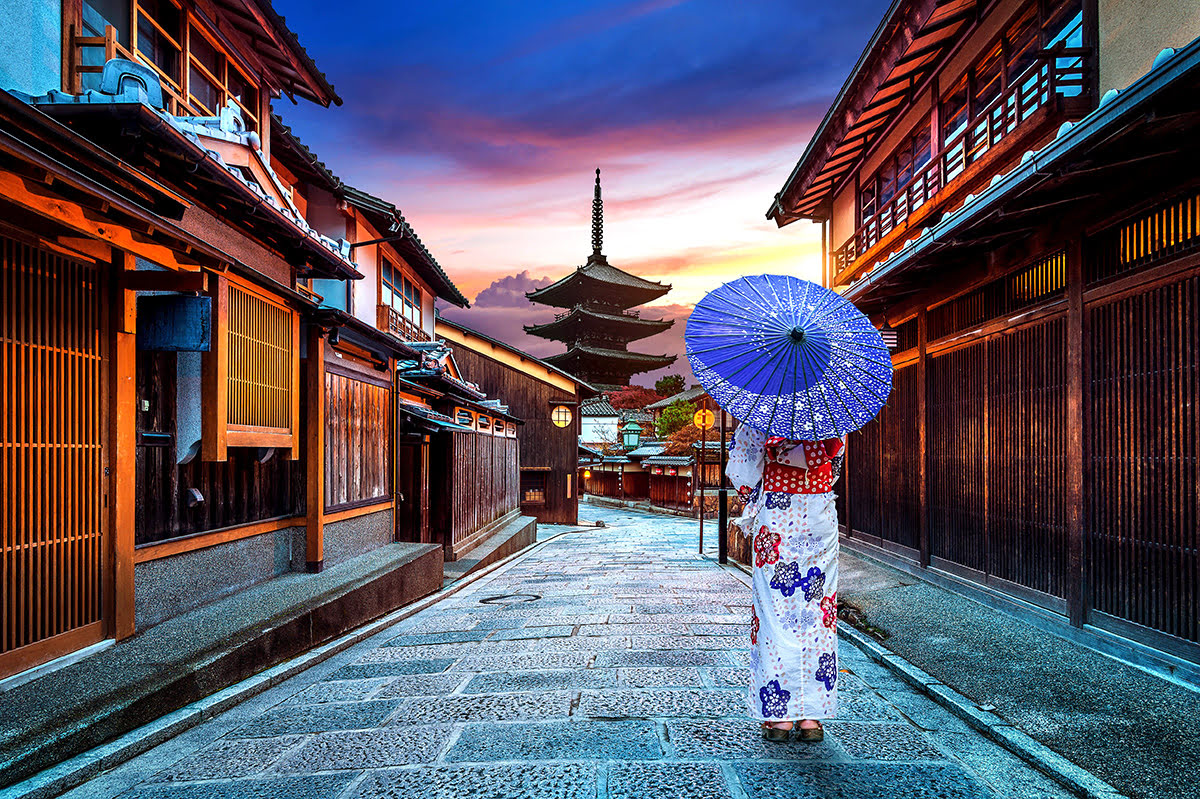
Day 1: Exploring Kyoto’s Historic Charm
Morning: visit fushimi inari taisha shrine.
Start your day with a visit to the Fushimi Inari Taisha Shrine , famous for its thousands of torii gates. The serene paths and historic atmosphere make it a perfect place for a romantic morning walk.
Afternoon: Stroll Through Gion District
After the shrine, head over to Gion District . Known for its traditional wooden machiya houses, Gion offers a glimpse into Kyoto’s past. Keep an eye out for geishas walking to their appointments. Enjoy a tea ceremony at a local tea house for an authentic experience.
Evening: Dinner at Pontocho Alley
End your day with a romantic dinner at Pontocho Alley . This narrow alley is lined with intimate restaurants offering a range of cuisines, from traditional Japanese to international fare. Choose a riverside restaurant for an unforgettable meal with a view.
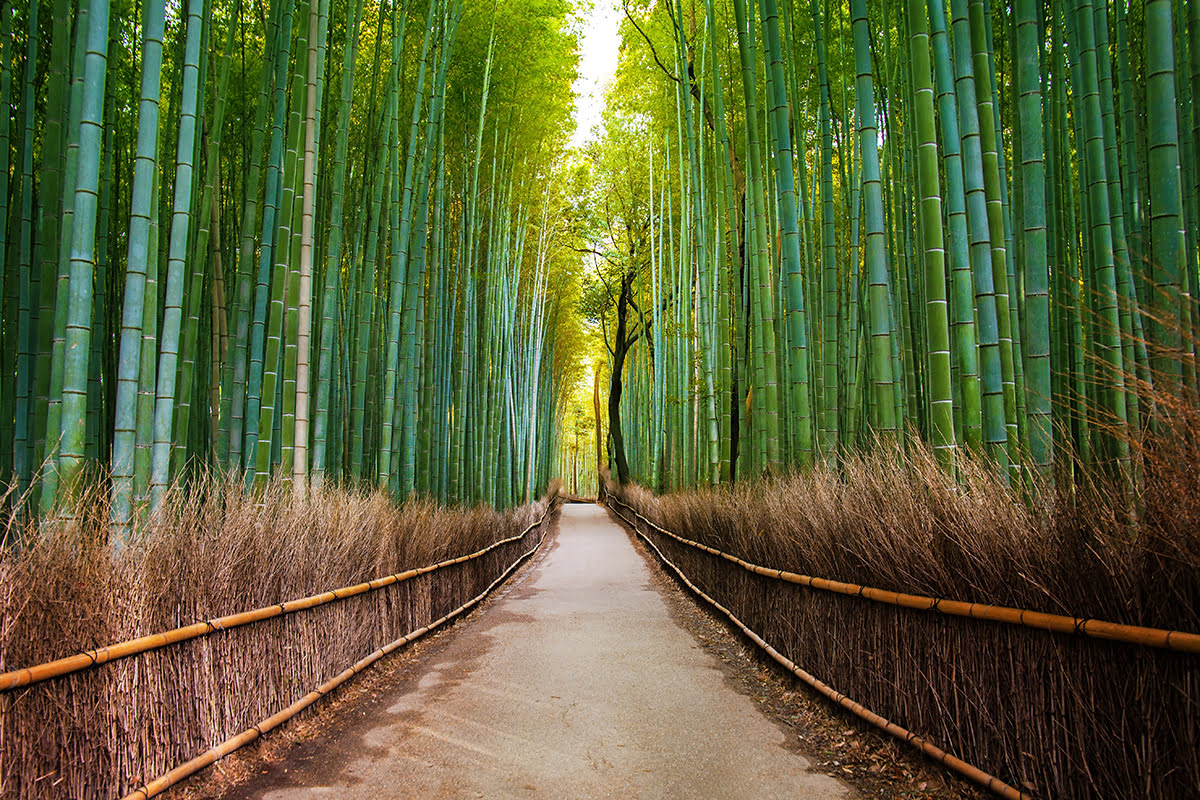
Day 2: Nature and Relaxation
Morning: bamboo grove in arashiyama.
The Arashiyama Bamboo Grove is a must-visit for couples. Walk hand-in-hand through towering bamboo stalks and feel enveloped by nature’s tranquility. Don’t forget to visit the nearby Tenryuji Temple for a touch of Zen.
Afternoon: River Cruise on the Hozu River
Enjoy a romantic boat ride on the Hozu River . The scenic cruise offers stunning views of forests, mountains, and clear waters. It’s a perfect way to relax and take in the beauty of Kyoto’s natural landscapes.
Evening: Private Onsen Experience
End your day with a private onsen (hot spring) experience. Many ryokans (traditional inns) in Kyoto offer private baths where you can soak with your partner in a serene, intimate setting. It’s the ultimate way to unwind after a day of sightseeing.
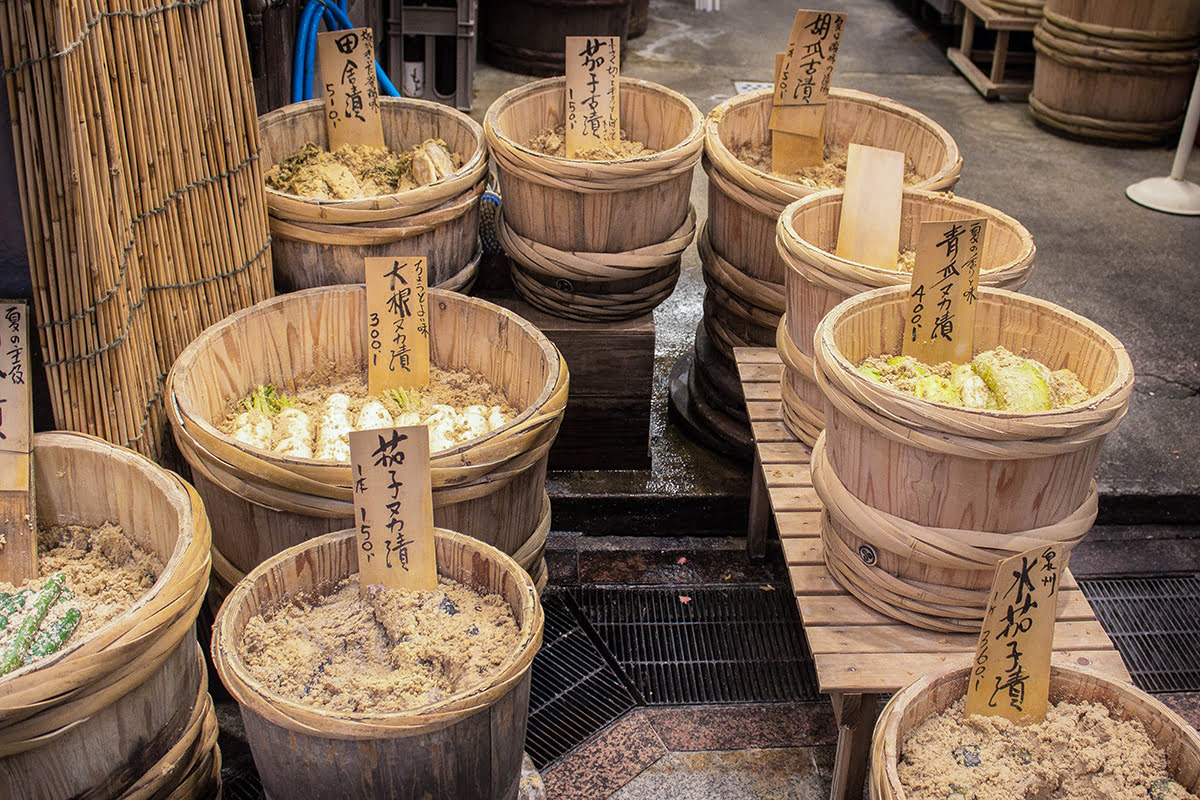
Day 3: Cultural and Culinary Delights
Morning: kiyomizu-dera temple.
Visit Kiyomizu-dera Temple , one of Kyoto’s most iconic landmarks. The temple offers stunning views of Kyoto from its wooden stage. It’s also a beautiful spot for photographs with your loved one.
Afternoon: Nishiki Market Adventure
Explore Nishiki Market , known as “Kyoto’s Kitchen.” Sample a variety of local delicacies, from fresh seafood to traditional sweets. It’s a great way to experience Kyoto’s culinary scene and pick up some unique souvenirs.
Evening: Romantic Dinner at Kikunoi
Kikunoi is a renowned kaiseki (multi-course) restaurant perfect for a special occasion. The meticulously prepared dishes are a feast for both the eyes and the palate. Make sure to reserve in advance for an unforgettable dining experience.
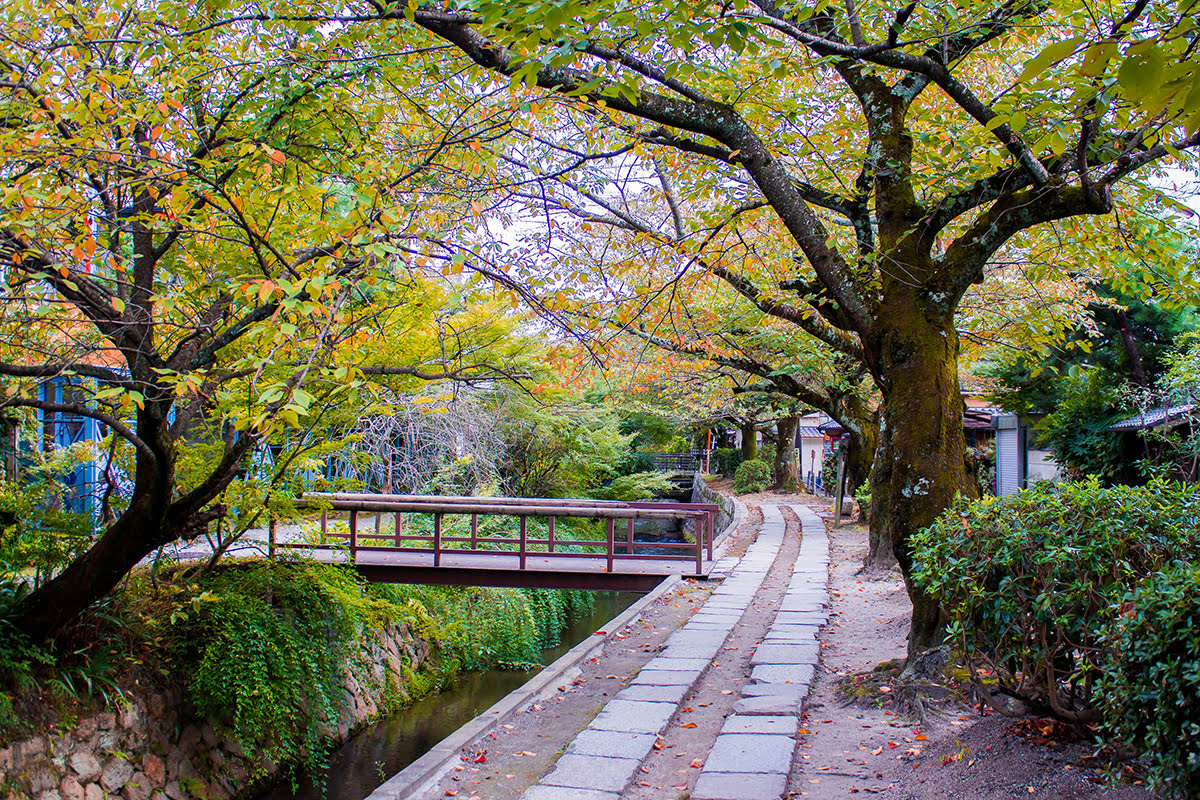
Day 4: Off the Beaten Path
Morning: explore the philosopher’s path.
Start your day with a leisurely walk along the Philosopher’s Path . This scenic trail follows a canal lined with cherry and maple trees. It’s especially beautiful during the cherry blossom season and autumn.
Afternoon: Visit the Hidden Gems of Kyoto
Spend the afternoon visiting some of Kyoto’s lesser-known temples like the Honen-in Temple and the Otagi Nenbutsu-ji Temple . These peaceful spots offer a quieter, more intimate experience away from the crowds.
Evening: Kyoto Night Illumination
End your day with a visit to one of Kyoto’s famous night illumination spots. Many temples and gardens are beautifully lit up in the evening, creating a magical atmosphere. It’s a romantic way to experience Kyoto by night.
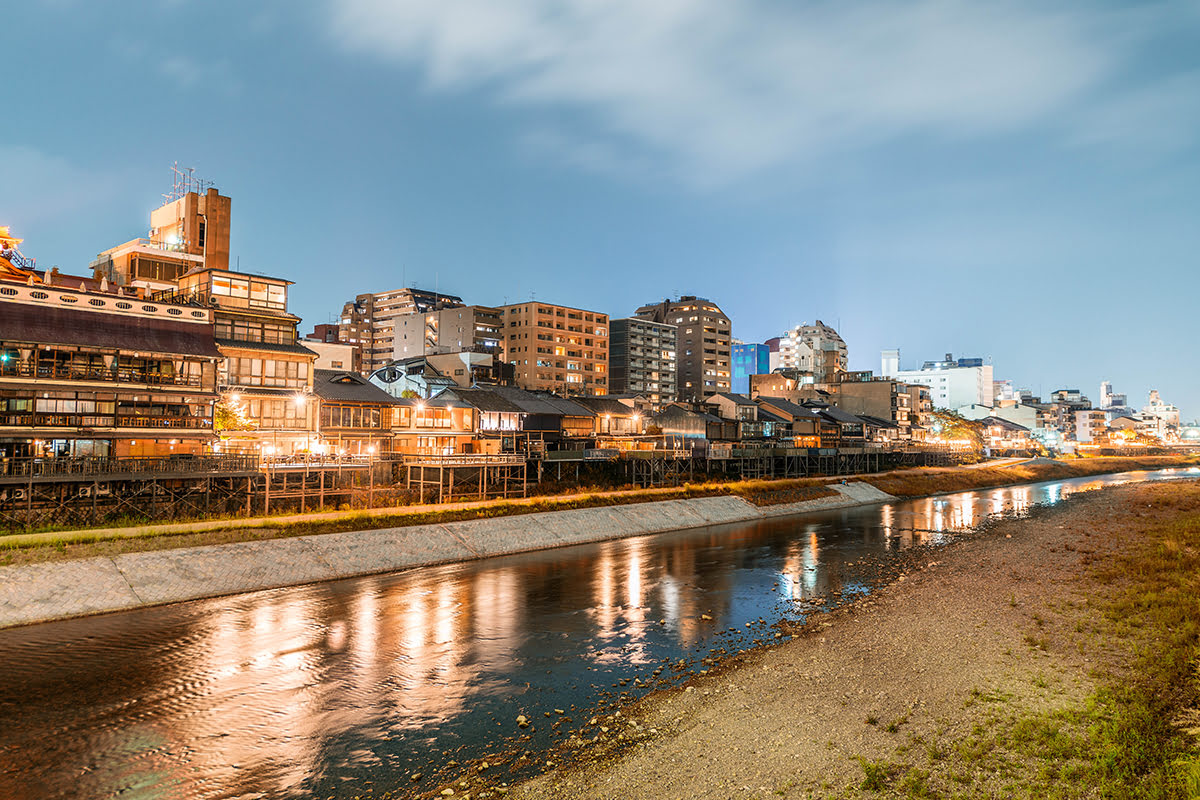
Day 5: A Day of Adventure
Morning: hiking in kurama and kibune.
If you and your partner enjoy hiking, head to the villages of Kurama and Kibune. The hike between these two villages takes you through beautiful forests and offers stunning views. In Kurama, don’t miss the Kurama-dera Temple, and in Kibune, enjoy a meal at a riverside restaurant.
Afternoon: Cooking Class Together
Spend the afternoon taking a traditional Japanese cooking class. Learn to make dishes like sushi, tempura, and miso soup together. It’s a fun and interactive way to bond and take home some new culinary skills.
Evening: Sunset at Kamo River
End your adventure-filled day by watching the sunset at Kamo River . The riverbanks are a popular spot for locals and tourists alike. Enjoy a relaxing walk or simply sit and watch the sun set over the city.
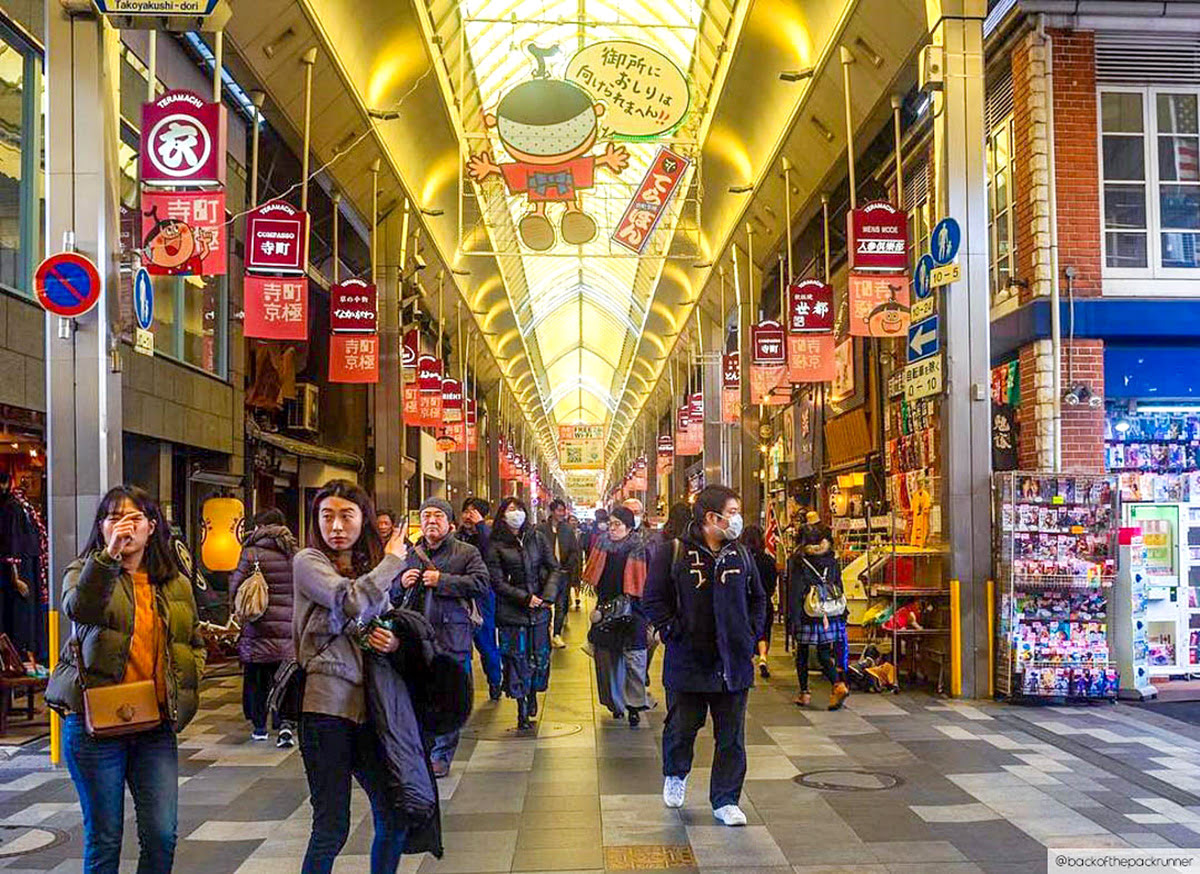
Day 6: Shopping and Leisure
Morning: kyoto handicraft center.
Start your day at the Kyoto Handicraft Center . The center offers a variety of traditional crafts, from pottery to textiles. You can also participate in workshops to create your own souvenirs.
Afternoon: Shopping in Teramachi Street
Spend the afternoon shopping at Teramachi Street , a lively shopping area with a mix of modern stores and traditional shops. Explore the nearby Shinkyogoku Shopping Arcade for more retail therapy.
Evening: Kyoto Tower Observation Deck
End your trip with a visit to the Kyoto Tower Observation Deck . The panoramic views of the city are especially stunning at night. It’s a perfect way to bid farewell to this romantic city.
Kyoto is a city that offers endless possibilities for romance and adventure. Whether you’re exploring its historic temples, enjoying its natural beauty, or indulging in its culinary delights, Kyoto provides a perfect backdrop for unforgettable dates. Plan your trip today and experience the magic of Kyoto with your loved one.
You may also like

Exploring Yeouido Hangang Park in Seoul: A Complete Traveler's Guide to Urban Oasis

Top Things to Do in Desaru: Your Ultimate Guide to Beaches, Adventure, and Relaxation

Discover India: Unveiling the Rich Culture, Heritage, and Traditions of the Incredible Nation

Exploring Gwangju: Top Things to Do in Gwangju Metropolitan City
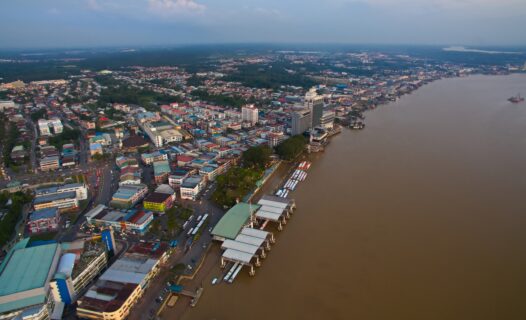
Unveiling the Hidden Gems of Sibu: Top Things to Do for an Unforgettable Journey
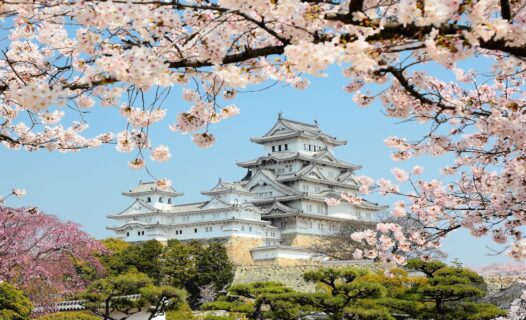
Unveiling Japan's Timeless Fortresses: A Journey Through The Most Iconic Castles
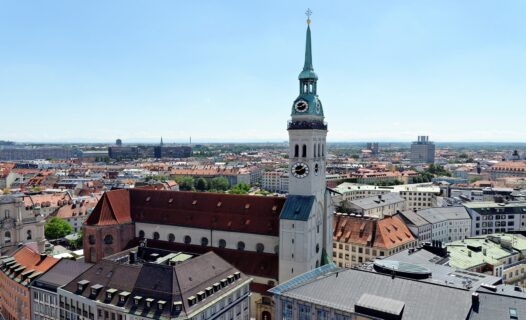
Exploring Munich: Must-Do Activities and Attractions in the Bavarian Capital

Uncover the Best Things to Do in Takamatsu: A Comprehensive Travel Guide
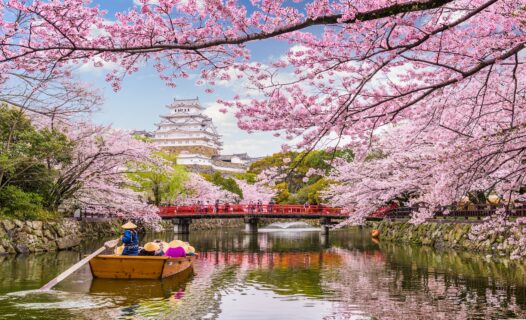
Exploring Himeji Castle: A Journey Through Japan's Majestic White Heron

Savoring Phuket: Top Dining Spots and Hidden Foodie Havens

Journey through Himeji's Castles and Temples: Immersing Yourself in the World of Classic Films
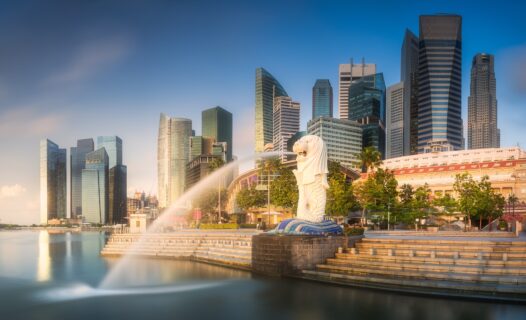
Singapore on a Shoestring: When to Visit for the Best Deals and Savings

Bali's Weather Unveiled: The Best Time to Visit the Island of Gods
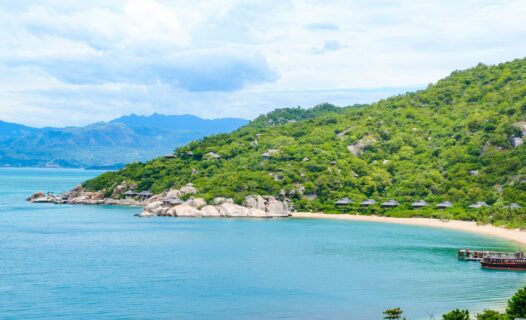
Discover the Best Tour Packages in Nha Trang: From Pristine Beaches to Cultural Gems

Uncover the Magic of Matsuyama: Top Things to Do in the Heart of Japan’s Shikoku Island
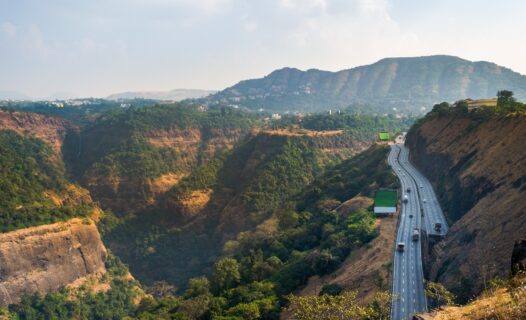
Unveiling Lonavala: Top Things to Do in the Serene Hill Station

Discover Iloilo: Top Things to Do for an Unforgettable Trip

Unveil the Magic of Antalya: Your Ultimate Guide to Nightlife by the Sea

Discover the Best Things to Do in Varanasi: Exploring the Spiritual Heart of India
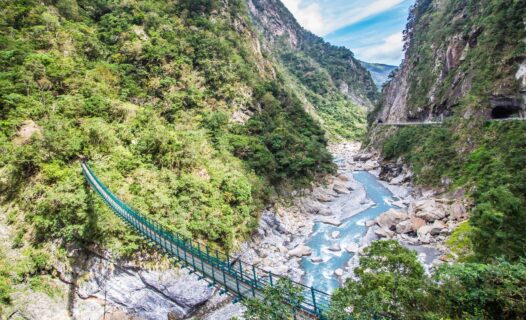
Discover the Best Time to Visit Hualien: A Complete Tourist Guide

Exploring Yeouido Hangang Park in Seoul: A Complete Traveler's Guide to Urban Oasis
Discover the magic of Yeouido Hangang Park in Seoul. From cycling paths to cherry blossom festivals, this comprehensive guide offers everything you need for an unforgettable visit.

Discover the best things to do in Desaru with our ultimate guide. Explore beaches, enjoy adventure sports, savor local cuisine, and find the best accommodation options.

Explore India's vibrant culture, historical heritage, traditional crafts, and culinary delights. A comprehensive travel guide to uncover the best of India.

Discover the best things to do in Gwangju Metropolitan City. Explore top attractions, cultural sites, local cuisine, and more with our ultimate travel guide.

Discover the best things to do in Sibu, Sarawak. From vibrant markets to scenic parks, explore all of Sibu's hidden gems with our ultimate travel guide.

Unveiling Japan's Timeless Fortresses: A Journey Through The Most Iconic Castles
Explore the majestic Japanese castles, discover their rich history, stunning architecture, and the best places to visit. Your ultimate guide to exploring Japan's iconic fortresses.

Discover the top attractions, hidden gems, and cultural highlights of Munich with our in-depth travel guide. Plan your visit to the Bavarian capital with ease.

Discover the best things to do in Takamatsu with our comprehensive travel guide. From stunning gardens to delicious local cuisine, plan your perfect trip today.

Exploring Himeji Castle: A Journey Through Japan's Majestic White Heron
Discover the majestic Himeji Castle with our detailed travel guide. Learn about its history, architectural marvels, and how to make the most of your visit.

Discover the ultimate food guide to Phuket! Explore top dining spots, hidden gems, street food stalls, and more. Perfect for every type of traveler.

Journey through Himeji's Castles and Temples: Immersing Yourself in the World of Classic Films
Himeji is home to romantic ancient castle ruins and Buddhist temples with over a thousand years of history, many of which have been featured in classic films. Embrace your imagination as you embark on a journey that lets you step into the shoes of characters from famous films.

Explore the cheapest times to visit Singapore and discover budget-friendly travel tips. Save on flights, accommodations, and activities in the Lion City.

Bali's Weather Unveiled: The Best Time to Visit the Island of Gods
Discover the best time to visit Bali by understanding its weather patterns, climate, and seasonal variations. Plan your trip around Bali's dry and rainy seasons for the perfect vacation.

Explore the best tour packages in Nha Trang, encompassing its breathtaking beaches, vibrant culture, and captivating attractions. Plan your perfect holiday now!

Discover the best things to do in Matsuyama - from historic castles and relaxing hot springs to unique local food and cultural experiences. Plan your perfect Matsuyama itinerary now!

Discover the best things to do in Lonavala with our comprehensive travel guide. Explore top attractions, hidden gems, adventure activities, and more in this serene hill station.

Uncover the best things to do in Iloilo with our ultimate travel guide. Explore top attractions, stunning nature spots, rich cultural sites, and more! Plan your trip now.

Discover the vibrant nightlife in Antalya with our ultimate guide. From beachside bars to live music venues and rooftop bars, explore the best of Antalya at night.

Explore the best things to do in Varanasi, from witnessing the Ganga Aarti to exploring ancient temples and vibrant markets. Discover Varanasi's spiritual and cultural heritage.

Discover the best time to visit Hualien with our complete tourist guide. Get insights on weather, activities, and places to stay in Hualien to plan an unforgettable trip.
Last Updated: September 05, 2024
Current language
All languages.
10 Best Art Galleries In Tokyo
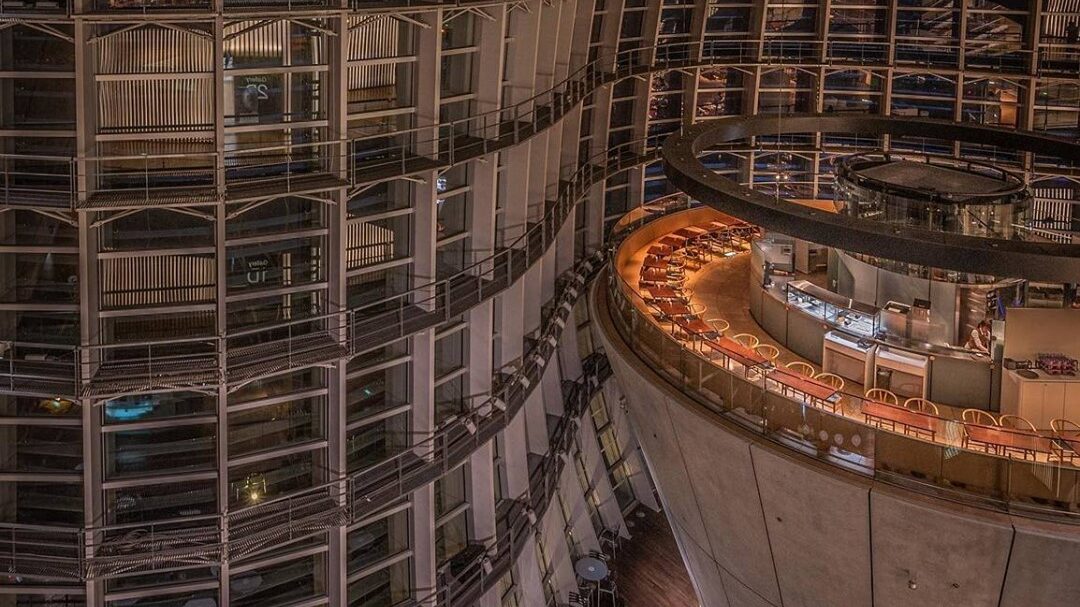
Mao Goto is a Japanese freelancer who was born in Hayama, Kanagawa prefecture, and raised in Tokyo. Since 2016 she lives in the Taito Ward, home to a lot of Japanese culture hotspots such as Asakusa, Akihabara, and Ueno. She has been interested in the field of English education in Japan and got her Master’s degree in March 2020. A lover of photography, travel, sweets, and cross-stitch. Contact her via Facebook .
This post may contain some affiliate links. When you click through and make a purchase we may receive some commission, at no extra cost to you .
Tokyo’s art history and traditions have been handed down in various forms and continue to evolve until the present day. Walking through the streets of Tokyo, one can find numerous museums and galleries where one can experience a wide variety of artworks, from traditional Japanese art to contemporary art. These galleries provide visitors with profound impressions and new discoveries, allowing them to experience the full appeal of Tokyo’s art scene. From large museums where visitors can view the work of renowned artists to smaller galleries showcasing the experimental work of young artists, visitors can enjoy art from various perspectives. In this article, we will introduce ten art galleries in Tokyo that you should visit. Let’s take a look at the features, highlights, and accessibility of each gallery in detail and see how this information can help make your trip an unforgettable one for art-loving visitors to Japan.
- 1. Shiseido Gallery
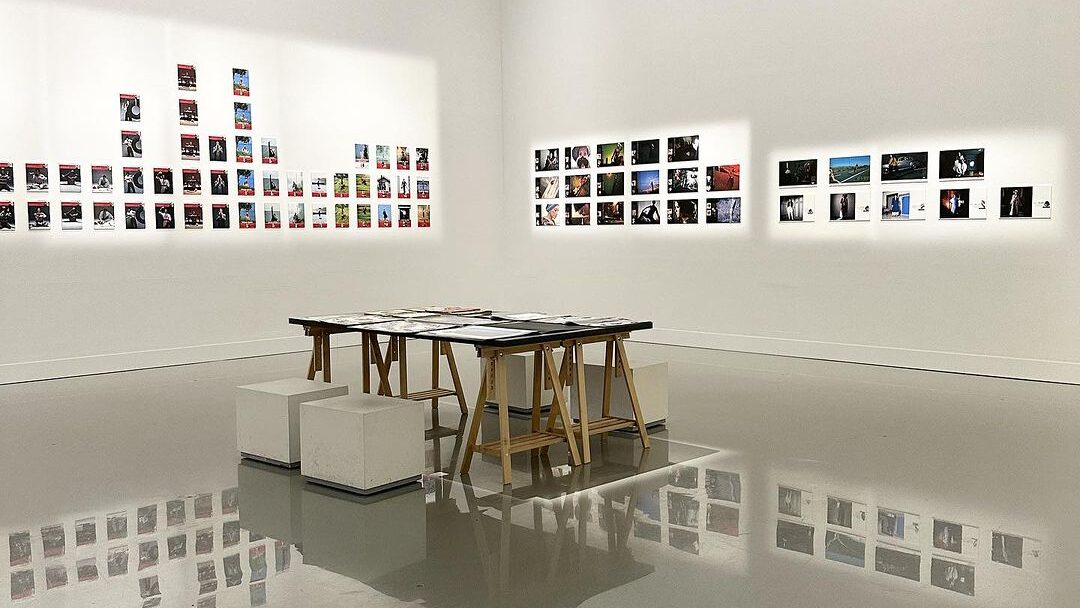
The Shiseido Gallery is a must-see for any visitor to Tokyo, even art lovers. The Shiseido Gallery was established in 1919 as Japan’s oldest surviving art gallery. It has displayed more than 3,100 exhibitions and also played an important role as a venue for the creative activities of many prominent Japanese artists. The Shiseido Gallery is not only a well-known name in the Japanese art world but also a highly regarded venue for experiencing the latest contemporary art.
Official Website: Shiseido Gallery
- 2. Tokyo Samurai Kembu

Tokyo Samurai Kembu offers an extraordinary encounter through the conventional Japanese craftsmanship of sword move s. The program offers a 90-minute samurai experience with a professional sword dance master, allowing participants to actually learn the art of sword dance while experiencing its fascination. Kembu is a uniquely Japanese art form that uses a sword and fan to express the spirit of the bushi warrior to the accompaniment of Chinese poetry recited by the warriors. Its movements have been valued to express the richness of the samurai’s feelings and spirit. In their courses, participants will have a rare opportunity to experience the world of the bushi through in-depth understanding and hands-on experience of Japanese culture.
Official Website: Tokyo Samurai Kembu
- 3. Gallerie Nichido
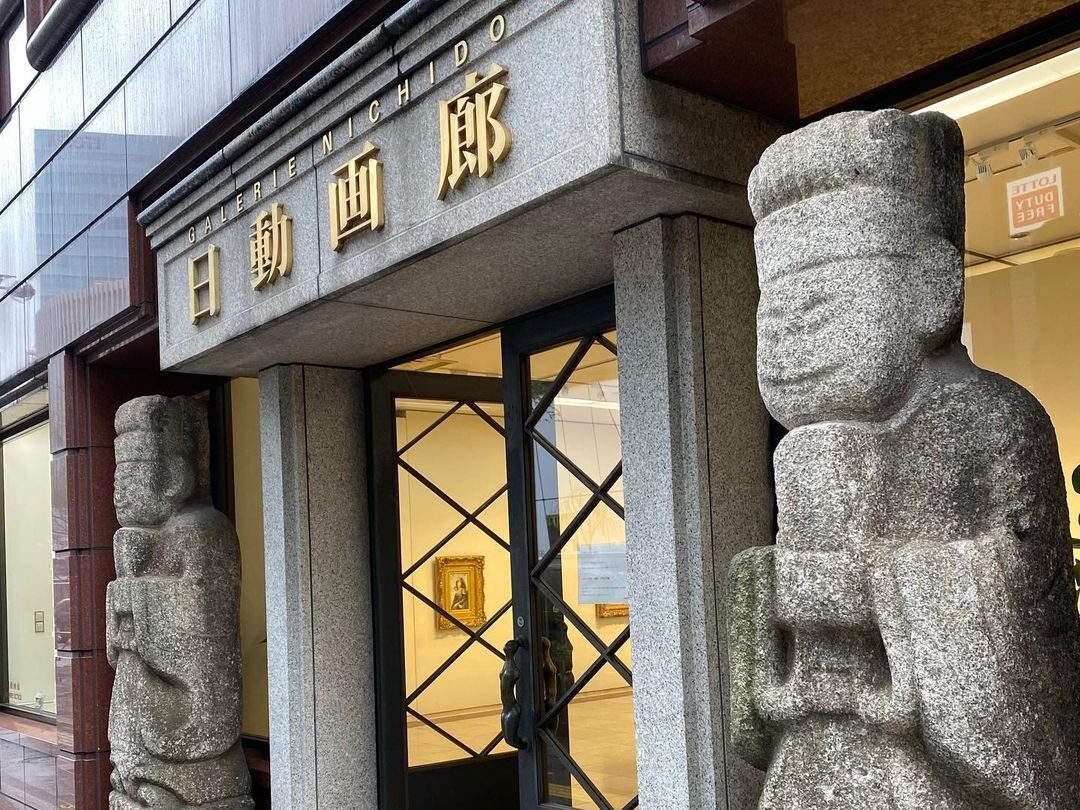
Established in 1928, Gallerie Nichido is known as Japan’s oldest Western-style art dealer. The gallery handles a wide range of genres, including oil paintings , sculpture, and prints, and exhibits the works of hundreds of deceased and living artists from Japan and abroad. Throughout its long history, it has handled the works of many well-known artists and has played an important role in the Japanese Western-style painting scene. It is also available for consultation regarding the purchase of paintings, and they are ready to meet your needs with our expertise and extensive experience. It has contributed to the popularization of art and the development of culture rather than being merely a commercial entity. Therefore, for those who wish to immerse themselves in the world of Western-style painting in Japan, it is a place worth visiting.
Official Website: Gallerie Nichido
- 4. Kashima Arts
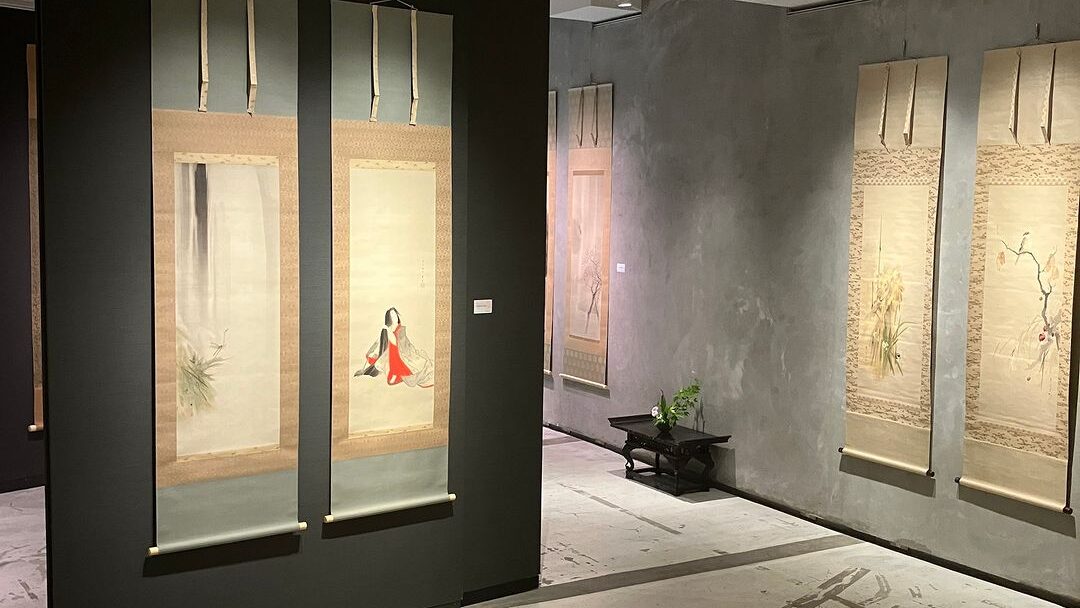
Kashima Arts is an art gallery located in Kyobashi, Tokyo, dealing mainly in Japanese art, including paintings and hanging scrolls. It also offers a wide range of contemporary art. Since its founding, the gallery has emphasized the experience of directly touching works of art and has held numerous exhibitions, allowing visitors to view valuable works of art without glass cases. At Kashima Arts, visitors can enjoy the beauty of traditional Japanese art and the new perspective of contemporary art in the same space. Its exhibitions are always fresh and inspiring to visitors.
Official Website: Kashima Arts
- 5. Nezu Museum
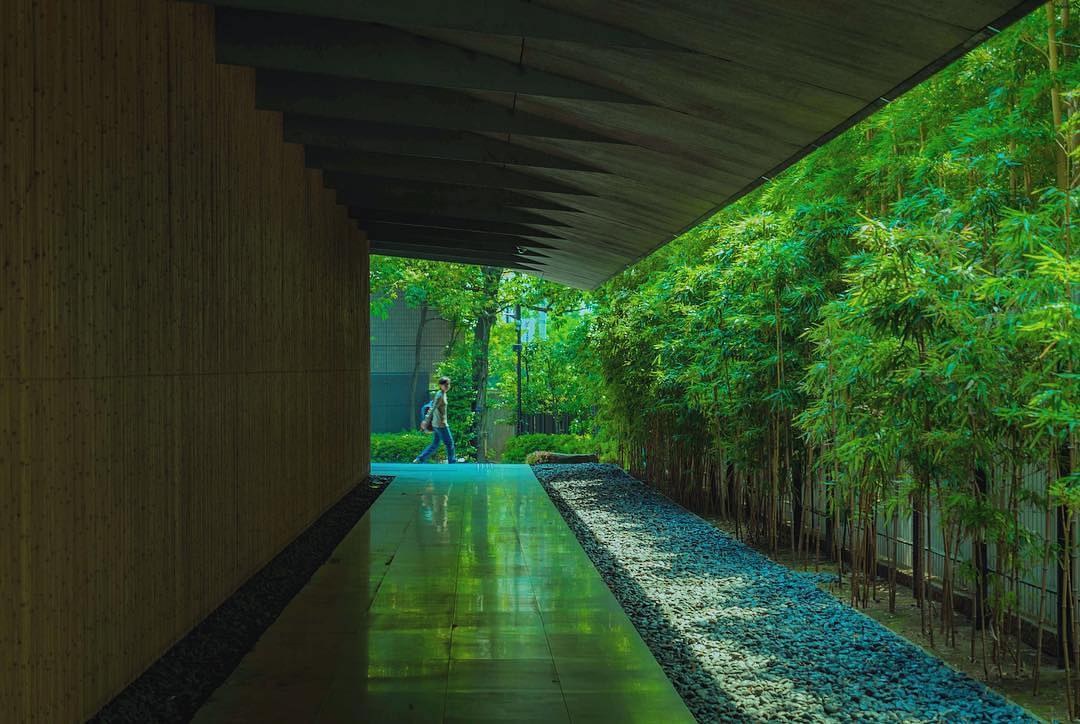
Located in Minami-Aoyama, Tokyo, the Nezu Museum of Art was built to display the collection of Japanese and Oriental antiquities collected by businessman and founder Kaichiro Nezu. The museum boasts a collection of 7,613 pieces as of the end of June 2024. These include 7 National Treasures, 91 Important Cultural Properties, and 95 Important Art Objects. One of the attractions of visiting the Nezu Museum is a stroll through its beautiful garden . The garden can be accessed from the garden entrance on the first floor or the tea ceremony entrance on the basement floor, where a small stone-paved path leads through the trees. Tea seats and various stone structures are arranged to provide tranquility and beauty to visitors.
Official Website: Nezu Museum
- 6. Yayoi Kusama Museum

The Yayoi Kusama Museum of Art was founded by avant-garde artist Yayoi Kusama and opened in October 2017 to contribute to promoting and developing Kusama’s art through the exhibition of her works and related materials. Yayoi Kusama experienced visions and auditory hallucinations from an early age and created unique paintings characterized by net patterns and polka dots. Known worldwide for her style, she now occupies an important place in the international art scene. Entry to the Yayoi Kusama Museum of Art is exclusively through advance reservations, as space is limited. Tickets can only be purchased through the museum’s official website and are not available at the museum’s counter.
Official Website: Yayoi Kusama Museum
- 7. 21_21 Design Sight
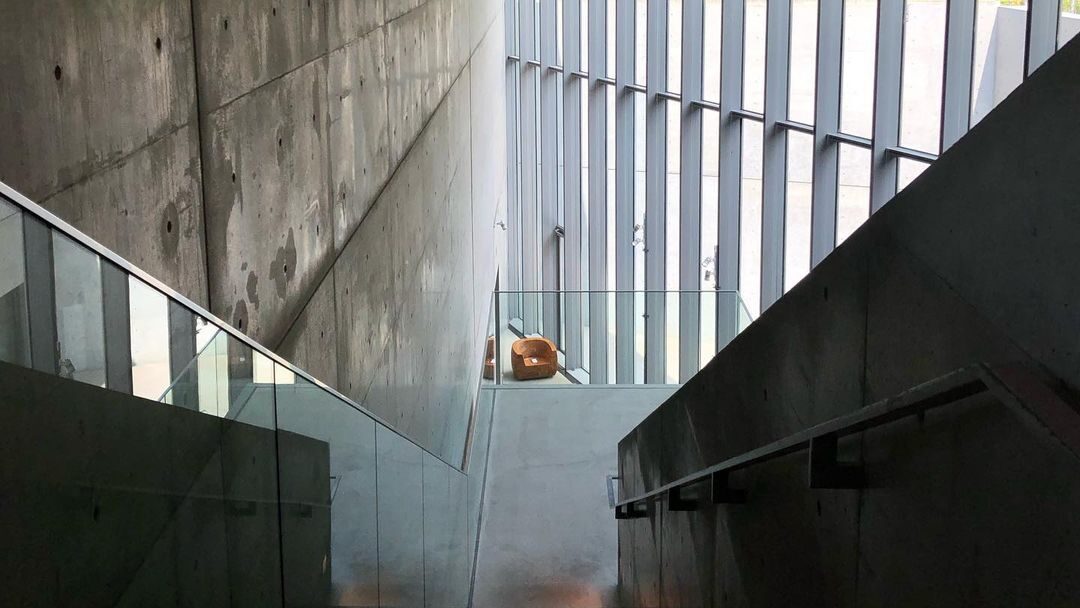
Located in Tokyo Midtown, 21_21 DESIGN SIGHT offers innovative thinking and ideas by infusing a unique design perspective into everyday, mundane events. Through various programs centered on exhibitions, talks, and workshops, visitors can fully enjoy the appeal of design and experience it in new and surprising ways. For those who wish to experience the world of design in Japan, 21_21 DESIGN SIGHT is an exciting museum. Its innovative approach and diverse programs will deeply inspire visitors and stimulate their creativity.
Official Website: 21_21 Design Sight
- 8. The National Art Center

The National Art Center, Tokyo, opened in Roppongi in 2007 and is Japan’s fifth national art museum, designed by architect Kisho Kurokawa. It does not have a collection but rather is a bright, open space with glass walls. It uses one of Japan’s largest exhibition spaces to hold various special exhibitions and provide a venue for art organizations. Visitors can enjoy encountering new art at any time. After viewing the paintings, visitors can enjoy French cuisine at the museum’s brasserie. Here, visitors can casually enjoy the authentic French cuisine of Paul Bocuse, a master of French cuisine . The menu offers a wide selection of traditional Lyon cuisine, and a course menu, a la carte, and even a menu in collaboration with the exhibition are available for a limited time.
Official Website: The National Art Center
- 9. Ginza Graphic Gallery
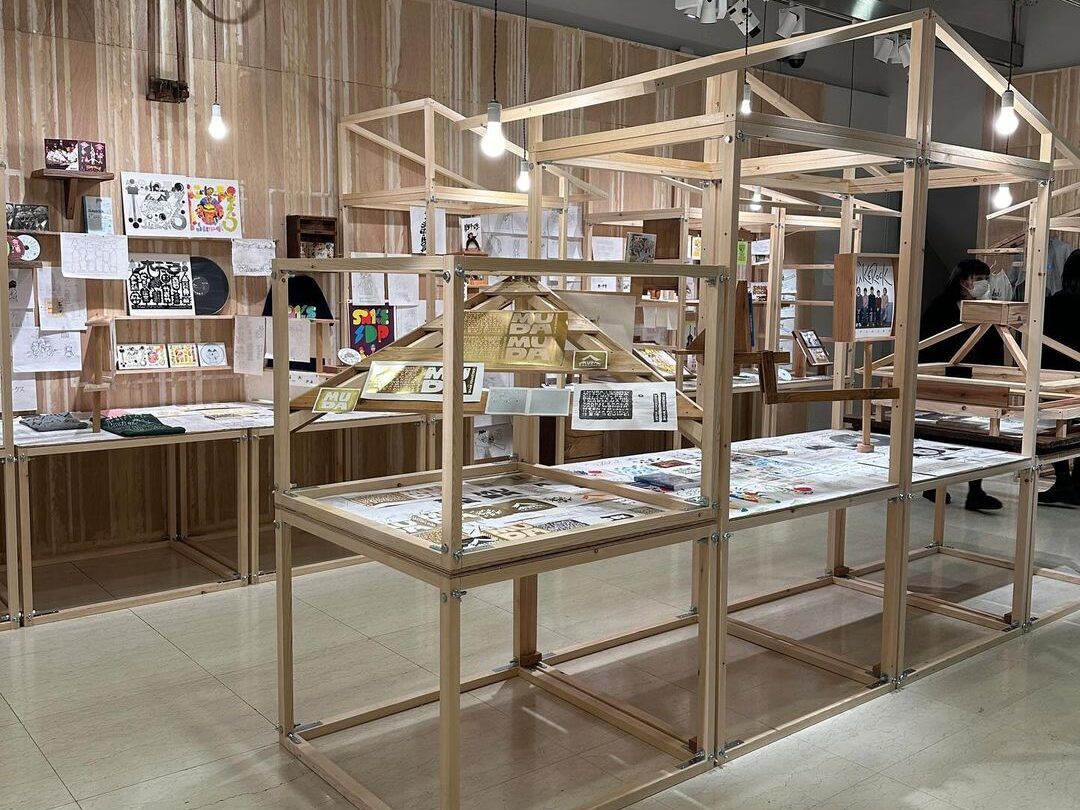
The Ginza Graphic Gallery is devoted to the art of graphic design, affectionately known as “Three G’s,” derived from the initials of its name. The gallery broadly showcases the aesthetics and power of graphic design through innovative exhibitions and inspirational lectures. It also deepens its accumulated knowledge and artistry through publishing activities such as “gggBooks”. In its diversity and innovation, the Ginza Graphic Gallery is an important center in the world of graphic design and well worth a visit.
Official Website: Ginza Graphic Gallery
- 10. Intermediatheque
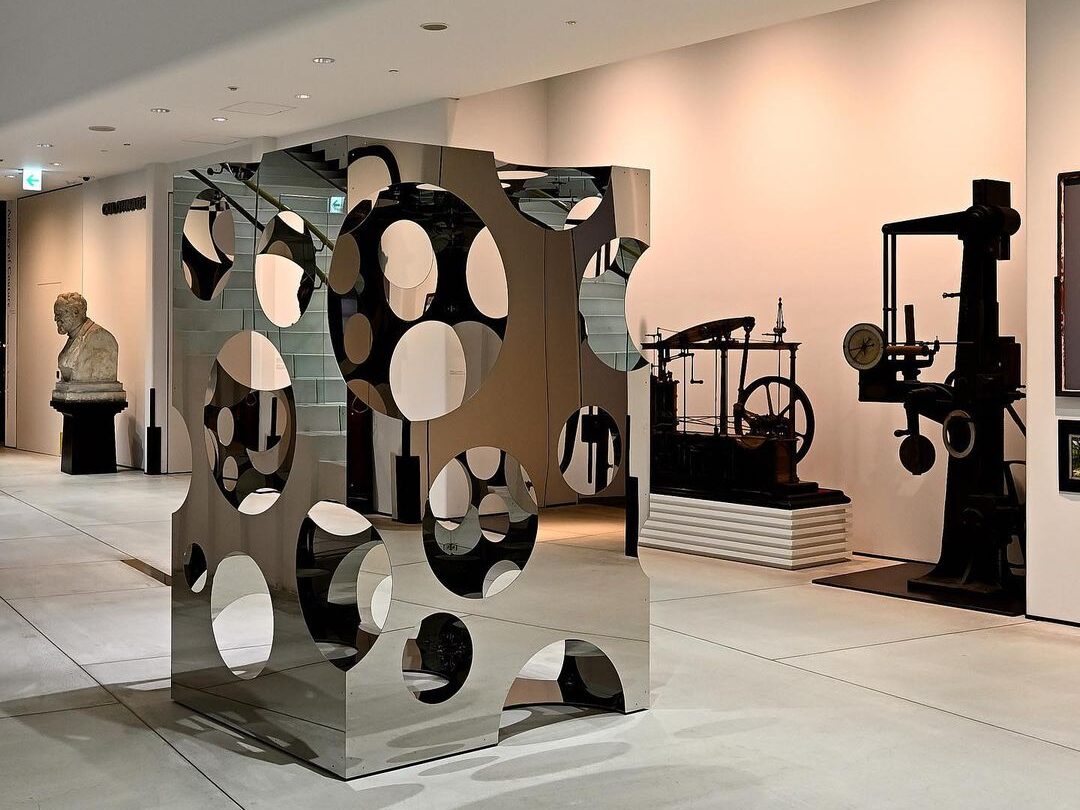
Intermediatheque is an innovative museum that exhibits academic materials with no admission fee. Its name, “Intermediatheque” (IMT), implies the creation of a new culture by connecting different media of expression. Specimens and materials from a wide range of academic disciplines are on display here, from anatomy to archaeology, biology, engineering, geography, geology, mathematics, contemporary art, and paleontology. Visitors will gain new knowledge and insight as they are exposed to the richness of knowledge and the potential of art at the fusion point of different disciplines.
Official Website: Intermediatheque
In this article, we have mentioned 10 art galleries to visit in Tokyo, but are there any galleries that interest you or places you would like to visit? The unique worldview of each gallery and the creativity of the artists who gather there offer visitors new discoveries and excitement. We hope you will use this article to guide your next trip to Tokyo and enjoy a wonderful art experience!
Other Articles You May Find Interesting
Japan wonder travel food tours .

Japan Wonder Travel is a travel agency that offers guided tours throughout Japan. From private walking tours to delicious Food and Drink tours, we can help organize the best tours just for you! If you want to explore Japan and learn more about the history and backstories of each area you are traveling in, our knowledgeable and friendly guides will happily take you to the best spots! In addition, we can provide you with any assistance you may need for your upcoming trip to Japan, so please feel free to contact us if you have any questions or need some help!
▶ Tokyo Tsukiji Fish Market Food and Drink Tour Explore the most lively and popular fish market in Tokyo where you will have the chance to try some of the local’s favorite street foods and sake along with your friendly English speaking guide!

▶ Shinjuku Bar Hopping Tour: Experience Tokyo’s Nightlife in Izakaya Check out the best spots in Shinjuku while bar hopping through the lively and vibrant area. Try some delicious local food and drink as you explore the narrow yet photogenic alleys that the town has to offer. Experience Japanese izakaya culture and drink in Shinjuku like the locals!
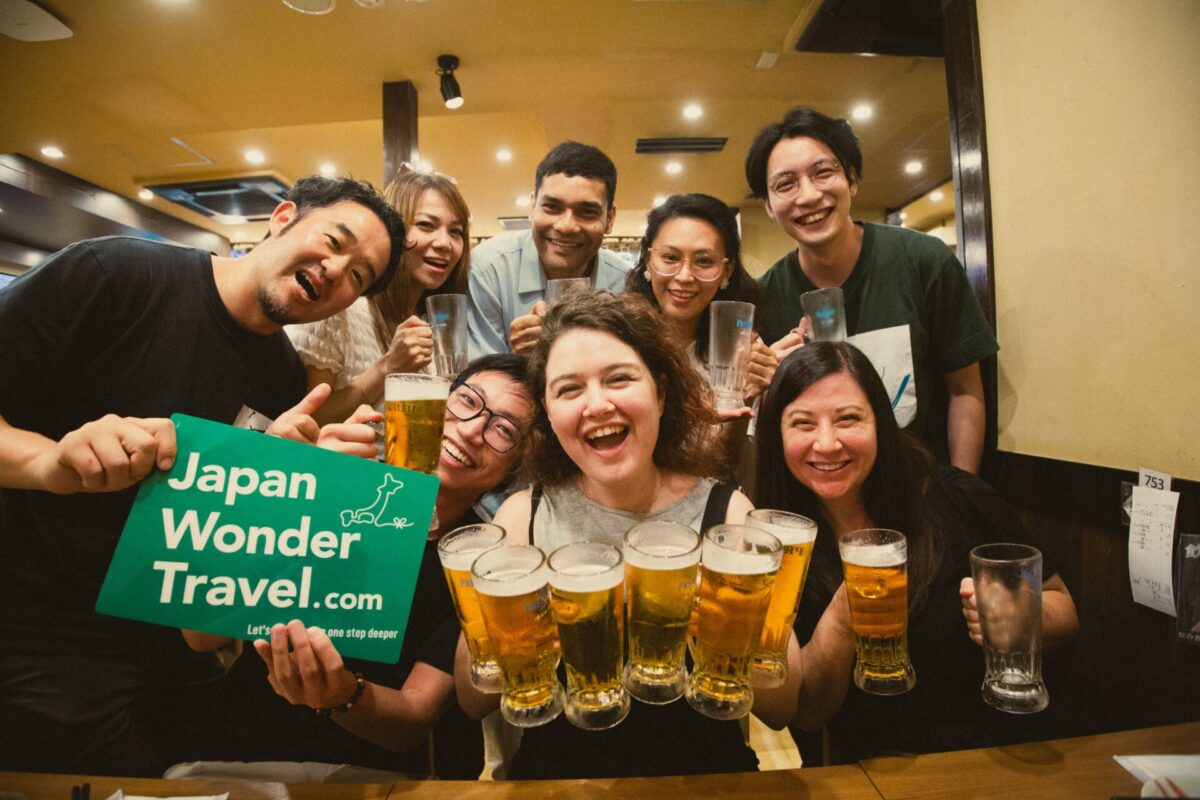
▶ Explore Nishiki Market: Food & Culture Walk If you’re looking to learn more about the culture and the local cuisine of Kyoto, this is the perfect tour for you! Take part in this Kyoto food and drink tour and explore the 400-year-old market and the surrounding areas.
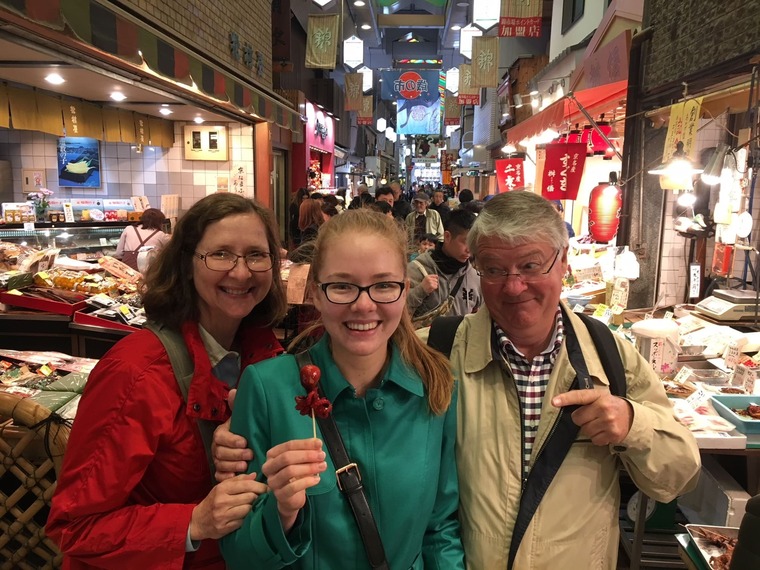
Subscribe to our newsletter!
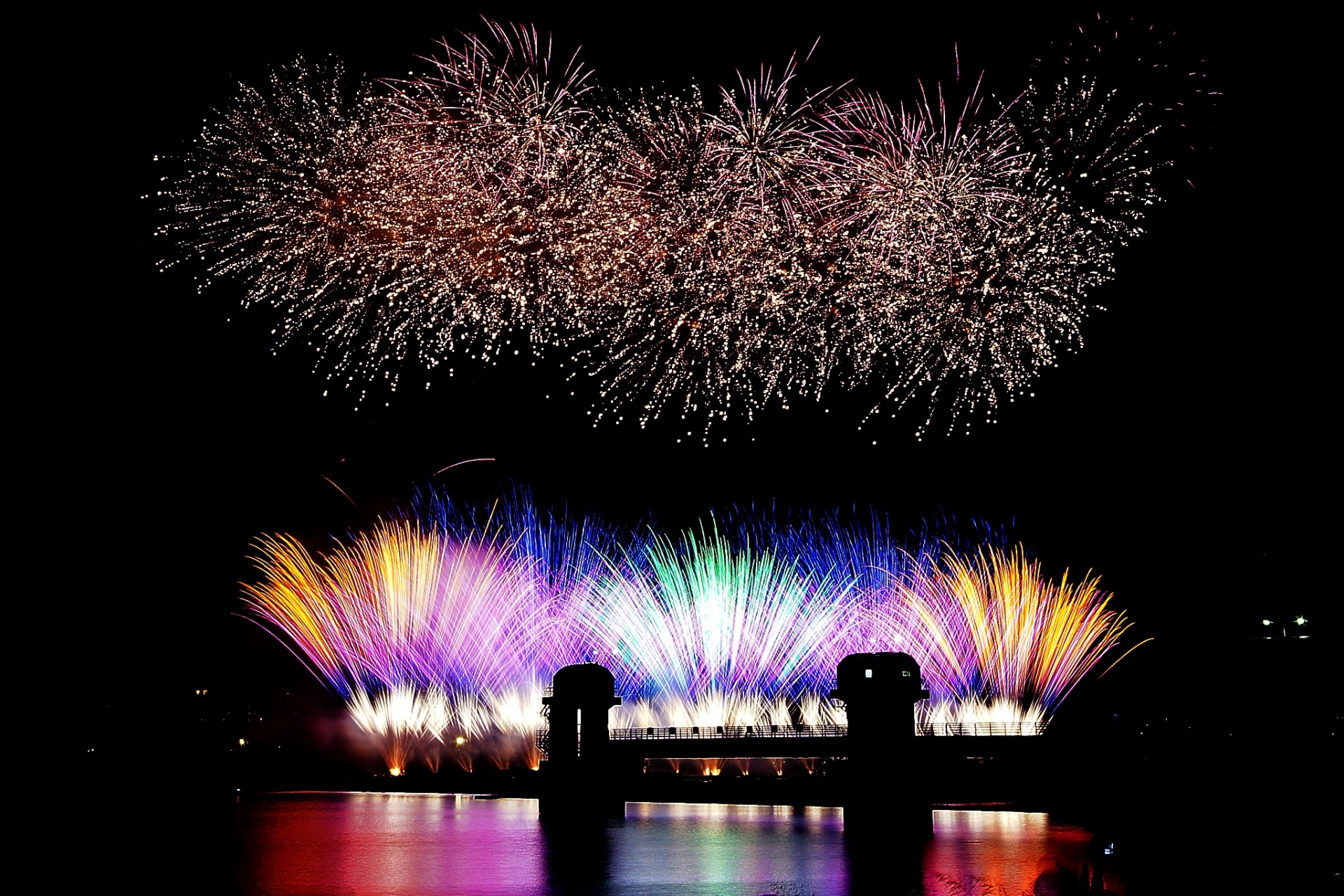
- Popular destinations
- Hidden places in Japan
- Tours and workshop
- Food and drink in Japan
- Itinerary in Japan
- Places to visit in Tokyo
- Food and drink in Tokyo
- Seasonal events
- Tours & workshops
- Tokyo This Week
- Day trip from Tokyo
- Itinerary in Tokyo
- Places to visit in Kyoto
- Food and drink in Kyoto
- Itinerary in Kyoto
- Day trip from Kyoto
- Travel tips
- Accommodation
- Cultural tips
- Transportation
- Tokyo Tours
- Kyoto Tours
- Kimono Rental
- Fukushima Tours
- Mount Fuji Tours
- Tour Package
- Travel Concierge Service
- Media Kit(English/日本語)

IMAGES
VIDEO
COMMENTS
The ruins of the former feudal castle are also a must-see. When getting off the beaten path in Japan, don't forget to discover the Uradome Coast which features impressive rocky islands, breathtaking sandy beaches, and beautiful pine trees. How to Get There: Take the Tokaido Shinkansen to Shin-Osaka Station. Then make a change to Super Hakuto.
Ine Funaya. There aren't many places in Japan which are off the beaten path completely, but without a local train station, the fishing village of Funaya really is one of the hidden gems in Japan. To reach Funaya, you will need to take a train from Kyoto to Miyazu Station, followed by one of the local buses to reach Funaya.
6) Hita. Don't miss out on the opportunity to visit one of Japan's most loved hot spring towns, Hita. The town is situated along the Mikuma River and is a totally zenned out, peaceful oasis. Along the banks of the town's rivers, natural hot springs rich in minerals brim with endless health benefits.
For those seeking underrated destinations in Japan, the island is a hidden gem. It's an ideal retreat for travelers eager to immerse themselves in nature, find peace, and escape the hustle and bustle of city life. This island truly embodies the essence of Japan off the beaten path. 3. Iya Valley.
Aizuwakamatsu Castle. The city of Aizuwakamatsu has plenty to explore for those looking to go off the beaten path in Japan. At the centre of Aizuwakamatsu is Tsurugajo, the city's castle, a replica of the original castle that was rebuilt in 1965. Inside Tsurugajo is a museum about the history of the castle, and there are fantastic views of ...
For many travellers, Japan has been regarded as one of the top destinations that are worth a return trip or two. Although cities like Tokyo, Kyoto, and Osaka have gained traction for years, there are actually many underrated gems that are worth exploring. If the idea of a road less travelled sounds intriguing to you, here are 11 underrated places to visit in Japan to add to your next itinerary.
See some of Japan's most active volcanoes, Mt Aso in Aso-Kujo National Park and Mt Sakurajima in Kagoshima. Soak away at Jigoku Onsen, located in the "Seven Hells of Beppu.". 1) Takachiho Gorge ~ 2) Huis Ten Bosch ~ 3) Blue torii of Tozan Shrine, Arita ~ 4) Traditional boat rides in Yanagawa ~ 5) Motonosumi Shrine.
Japan, a country of profound contrasts, offers a myriad of experiences beyond the mainstream tourist attractions. From the timeless tranquility of Kyoto to the pulsating energy of Tokyo, from the untouched wilderness of Hokkaido to the tropical allure of Okinawa, we've journeyed through hidden gems and secret spots that capture the essence of ...
14. Kamikochi, Nagano. The Kamikochi Kappa bridge, on a pristine alpine valley offering spectacular mountain scenery. Kamikochi, located in the heart of the Northern Japan Alps, is a pristine mountainous highland valley that offers some of Japan's most spectacular natural scenery.
Discover 675 hidden attractions, cool sights, and unusual things to do in Japan from Ghibli Museum to Aokigahara Forest.
Shirakawago is one of the best-hidden gems in Japan that international visitors have only recently travelled to. This tiny town with less than 600 households is nestled deep inside the mountainous Hokuriku region and tucked away from any spotlight…until it became a UNESCO World Heritage Site in 1995.
Without further ado, we present our favorite off-the-beaten-path areas of Japan (not listed in order of preference - we love them all!): Kyushu. Tohoku. Shikoku. Hokkaido. Okinawa. 1. Kyushu. Located in the southwest of Japan, Kyushu is a perennial favorite among Japanese people and Japan enthusiasts for its food, natural scenery, and onsen ...
8. Akita. Japan Off The Beaten Path - Akita. Akita, located in the northern Tohoku region, is a best-kept winter secret in Japan. Like Tohoku's other prefectures, Akita is known for its stunning mountain ranges, long and mesmerizing coastline, hot spring towns, and historic sites.
BONUS: Hikan Inari Shrine. Within one Tokyo hidden gem is another hidden gem! Towards the rear of Asakusa-jinja's grounds lies a tiny shrine measuring 1.5 x 1.4 metres. Called Hikan Inari Shrine, it was built by a local fireman.
Ine Funaya is another underrated place in Japan. Not many places in this country are completely off the beaten path, but without a local train station, Funaya, the fishing village, is one of the hidden gems in Japan. To reach this village, firstly you will need to ride a train from Kyoto to Miyazu Station. Then hop on a local bus to get Funaya.
Here are just 11 of Japan's Top Hidden Treasures. Eastern Hokkaido: The northernmost island of Japan, renowned for its world-class skiing and famed beer, boasts a rugged, wintry landscape that ...
2. Relax and recharge your energy at Onsen Towns in Kyushu. Onsen, or hot springs, are another popular "must" experiences in Japan. Although many of the more popular Onsen towns are located in the northern areas, the southern island of Kyushu also offers remarkable hot spring towns for a rejuvenating experience.
6. A manohashidate. Amanohashidate is a hidden gem that sits in the northern part of the Kyoto prefecture and is one of Japan's most scenic places. This sandbar stretches across Miyazu Bay and resembles a bridge to heaven, symbolic of the area's English translation.
12. Karuizawa. Image credit: Leo D'lion. Karuizawa to Tokyo is the almost the equivalent of the Hamptons to New Yorkers. Basically, it is an accessible, upscale holiday destination to get away from the stress of everyday life in Tokyo. Karuizawa is located at the base of the active volcano Mount Asama in Nagano.
10 Off the beaten path in Kyoto. 1. Amanohashidate. The stunning pathway Amanohashidate Sandbar is also known as a "bridge in heaven". Discover a new side of Kyoto on a trip to Amanohashidate. This sandbar spans the mouth of Miyazu Bay and is covered in pine trees. The name translates to "bridge in heaven" because when you look at it from ...
1. Nyuto Onsen. Akita Prefecture TourismPromotion Division. Nothing fabulous but rustic and incredibly genuine. The true onsen experience can be found in the deep mountain of northern Japan. Nyuto Onsen (乳頭温泉) is the most famous "Hitou (秘湯/hidden onsen)" in Japan with a history of over 300 years.
Historic Villages of Shirakawa-gō and Gokayama. 5. The sacred mountain Mount Haguro. 6. The Flower Tunnel of Wisteria. 1. Mount Aso - Japan's largest volcano. Japan's largest volcano - also one of the world's largest - named Mt. Aso or Asosan is an active volcano, located in Kumamoto prefecture on Kyushu region.
Discover hidden gems in Japan for tourists. Explore unique, lesser-known destinations offering unforgettable experiences away from the crowds. ... Discover the best places in Europe to visit with kids. Enjoy family-friendly destinations that offer unforgettable exper. Read More. Best Places to Snowboard in Europe: Top 10 Destinations.
The top 10 best hidden spots in Japan are Yajima Taiken Koryukan (sado), Ashikaga flower park, Yakushima island, Iya valley, Blue pond, Otaru canal, Aoshima (cat island), Ryusendo cave, Mount Koya and Farm Tomita. When you visit Japan, make sure you don't just visit Tokyo. Why not check out one of these places and travel Japan like a local.
Atsuta Jingu Shrine, one of Japan's most important Shinto shrines, is dedicated to the Sun Goddess Amaterasu and houses the sacred sword Kusanagi-no-Tsurugi, one of Japan's three imperial regalia.This shrine has been a spiritual center for over 1,900 years and is deeply rooted in Japanese culture and history. The shrine complex is set within a serene forested area, creating a peaceful and ...
Tokyo, a bustling metropolis known for its neon lights and towering skyscrapers, is also home to a treasure trove of hidden temples and shrines that often go unnoticed by the average tourist. While many flock to the iconic Senso-ji in Asakusa or Meiji Shrine in Shibuya, there are countless lesser-known spiritual havens scattered throughout the ...
Unique Attractions. Discover some of Meguro's most unique and interesting attractions that you won't find anywhere else: Sengakuji Temple Known for its connection to the 47 Ronin, this temple offers a glimpse into Japan's samurai history. The serene grounds and historic graves make it a fascinating visit. Meguro Sky Garden
Day 1: Exploring Kyoto's Historic Charm Morning: Visit Fushimi Inari Taisha Shrine. Start your day with a visit to the Fushimi Inari Taisha Shrine, famous for its thousands of torii gates.The serene paths and historic atmosphere make it a perfect place for a romantic morning walk.
Kazu_small_dis, via Instagram. Established in 1928, Gallerie Nichido is known as Japan's oldest Western-style art dealer. The gallery handles a wide range of genres, including oil paintings, sculpture, and prints, and exhibits the works of hundreds of deceased and living artists from Japan and abroad.Throughout its long history, it has handled the works of many well-known artists and has ...
Fly to Fukuoka, arriving by early afternoon. Fukuoka is known as the gateway to Kyushu, blending modernity with rich historical roots. After a late lunch at the hotel, we'll learn about the history of Hakata Old Town, s tarting with a visit to Kushida Shrine, a key site for the famous Hakata Gion Yamakasa festival.. We'll continue to Tochoji Temple, home to Japan's largest wooden Buddha ...